- Loire Valley
- South of France
- France Off the Beaten Path
- Non-Touristy Paris
- Arles & The Camargue
- Haute-Marne
- Loire: The Department
- Nancy Art Nouveau
- 9 Sensational Road Trips
- How to Plan Your Route
- 10 Days: South of France
- 7 Days: Basque Country
- 5 Days: Lake Geneva & Alps
- France's Regions
- France's Departments
- France's Cities
- Best Seasons
- Official Holidays
- Essential Planning Tips
- Paris Hotels with Spa
- Paris Hotels with Balconies
- Cool Paris Hotels
- Driving in France
- Taking the Train
- Renting a Car in France
- How to Shop in France
- Le Petit Shop
- Christmas Gifts
- Things to Do in Lyon
- What Is Lyon Famous for?
- The Food Capital of the World
- The Lyon Murals
- Public Transportation in Lyon
- Best of France Know-How
- Most Beautiful Villages of France
- Flavigny-sur-Ozerain
- Best Landmarks
- Best Flea Markets
- Best Books About France
- Best Christmas Markets
- France's Favorite Foods
- A Typical French Breakfast
- Apero Time!
- Weird French Foods
- Let Them Eat Baguette
- French Pastry Desserts
- The Bouillons of Paris
- La Vache Qui Rit
- French Christmas Meals
- Did You Say Escargot?
- French Revolution Tours
- Ghost Tours
- Paris Food Tours
- Stereotypes and Myths
- Facts about Ze French
- La Loire: What's in a Name?
- France's Backstory
- France's Roman Ruins
- Chenonceau Castle
- La Belle Epoque
- Most Haunted Places in Paris
- Dark Tourism in Paris
- France's Abandoned Places
- Paris Catacombs
- They Built a Wall
- Legends of the Luberon
- Lyon's Secret Passages
- Small & Odd
- Burgundian Life, Dijon
- Counterfeit Museum, Paris
- France's List of Lists
- Food & Wine Brotherhoods
- Vercingetorix, King of Gauls
- The Salacious Count Bussy-Rabutin
- Napoleon Bonaparte
- General Charles de Gaulle
- Breakfast in French?
- Bathroom in French?
- Free Resources
- Most Popular Posts
- Beyond the Baguette Newsletter
Unsure about your French table manners? Click Here to download > > How to avoid these 10 food etiquette mistakes !
Follow me on
- Destinations
- D Day Beaches Guide

Visiting the D Day Beaches? This is the only guide you'll need
Published 19 May 2024 by Leyla Alyanak — Parisian by birth, Lyonnaise by adoption, historian by passion
Visiting the D Day beaches of Normandy can take a lot of planning. There are five main beaches, and each has plenty of things to see. I made two trips to the Normandy beaches recently and mapped out the details for you.
The 80th anniversary of D-Day on 6 June 2024 provided an opportunity to visit the Normandy beaches but this is an area of France that has always been high on people’s lists.
In the early part of 2024 I visited the D-Day landing beaches twice, for a week each time, and was able to get a strong sense of the best places to visit and the best way to see them, including how to avoid the crowds.
My own planning was complicated – where to go and what to see – so I decided to write this “uncomplicated” guide for first-time visitors wanting to visit the best of the beaches without being overwhelmed with research.
What exactly was D-Day?
The 5 main landing beaches on d-day, utah beach: american, omaha beach: american, gold beach: british, juno beach: canadian, sword beach: british and french, best times to visit d-day beaches, tips for visiting the d day beaches.
How to visit the D-Day beaches
Driving to the D-Day beaches
Taking public transport to the normandy beaches, taking a guided tour to the normandy landing beaches, d-day books to prepare your trip.
NOTE: Pages on this site may contain affiliate links, which bring in a small commission at no cost to you.
As I watched families stroll along the beaches on a sunny afternoon, I couldn't begin to imagine that 80 years ago, tens of thousands of young men hit these same sands, armed and courageous.
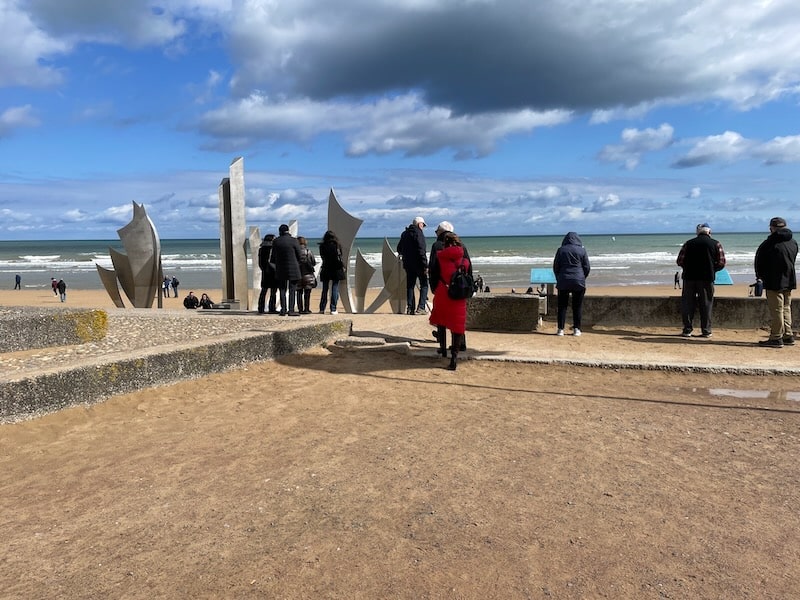
But disembark they did, many giving their lives in their march to rid Europe of Nazism.
On 6 June 1944, more than 156,000 soldiers, sailors and paratroopers crossed the English Channel and stormed five Normandy beaches in a coordinated effort that would shift the course of World War II.
It was the largest military operation ever attempted on water and would break the Nazi’s stronghold on Western Europe. It was Operation Overlord.
The assault targeted five beaches: Utah, Omaha, Gold, Juno, and Sword, each heavily fortified by German forces. Allied troops – led by Great Britain, the US and the Soviet Union (but involving many other countries ) – had prepared meticulously.
An elaborate deception plan, Operation Fortitude, convinced the Germans the invasion would be further north, at Pas de Calais, the narrowest point between Britain and France.
So when the actual attacks took place some 350km/217mi away, the German high command was slow to move.
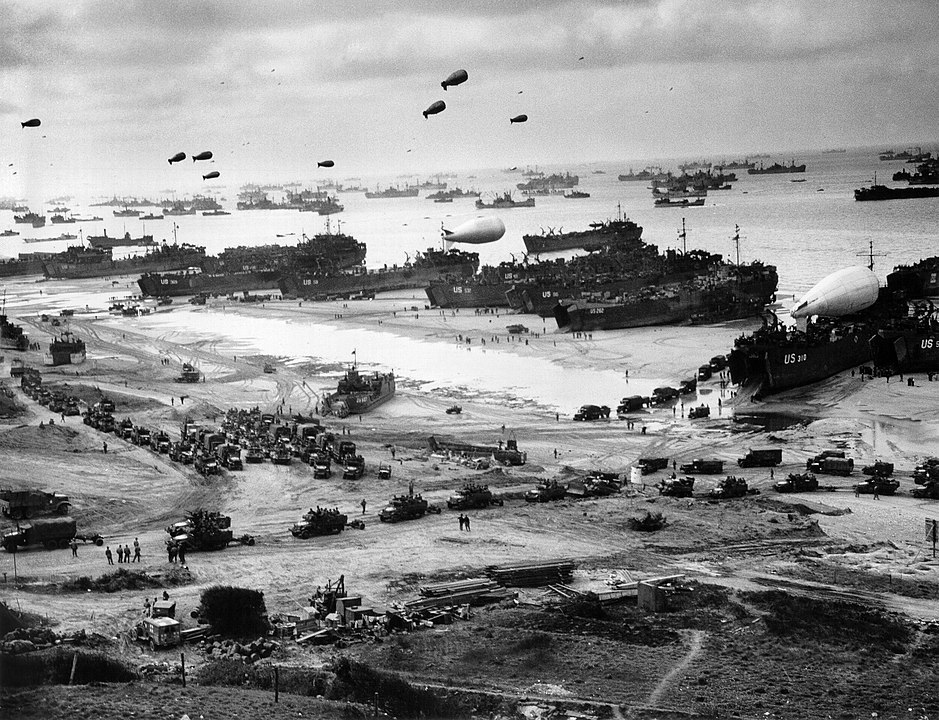
The success D-Day was not a foregone conclusion: Allied forces faced rough seas and high winds but were able to take advantage of a short break in the weather.
The success of the Allied landings led to the liberation of France from German occupation and opened a new Western front against Germany, in other words, it marked the beginning of the end.
Today, the Normandy beaches are dotted with memorials and museums that remind us of the cost of war and the price of freedom. The remaining bunkers and artillery and the pockmarked land begin to paint a picture of the daunting challenges the soldiers had to face.
Starting in the west, the landing zone encompasses five principal D-Day beaches: Utah, Omaha, Gold, Juno, and Sword. Each beach is different, with its own story, linking us to its past, whether we had a personal connection – through a grandparent or distant friend – or are simply curious about something that happened not that long ago.
Utah Beach is the westernmost landing site and is located on the scenic Cotentin Peninsula, better known as a summer destination for Parisians in the know.
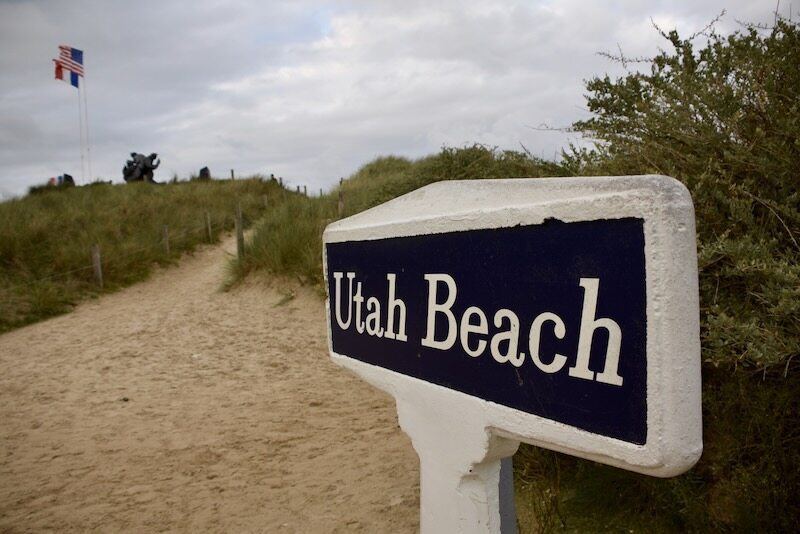
It was chosen as a landing site because of its proximity to the port city of Cherbourg, which the Allies believed they had to seize if they were to succeed.
The area was flatter than some of the other beaches, which made landings easier and fighting less intense, allowing American troops to secure the beach with fewer casualties than they would suffer elsewhere.
Must visit:
- Utah Beach Museum, which includes artefacts, personal narratives, and interactive displays.
- Sainte-Mère-Eglise Airborne Museum; this was the first village liberated by the Allies, and it has a memorial to the British paratrooper whose parachute was caught on the church steeple, leaving him hanging
Omaha Beach is probably the best known of the five beaches because of its intense battles and high casualties – some 2400 in a single day.
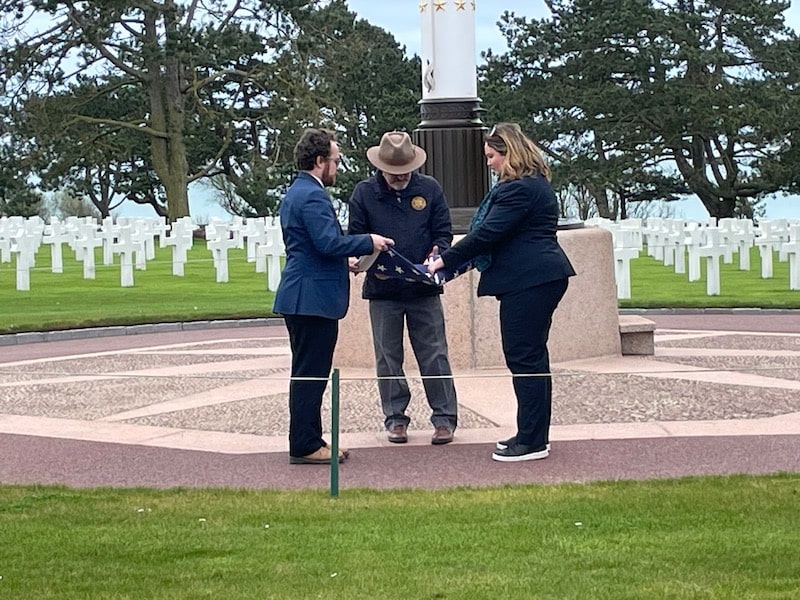
The terrain was tough. Once off the boats, those who actually made it to shore faced an uphill climb.
At Pointe du Hoc, a fortified German position, Rangers had to scale not a hill but a sheer cliff under direct fire from above. They were brave and persistent and eventually secured the beach, paving the way for further advances into France, but earning the beach its nickname of “Bloody Omaha” in the process.
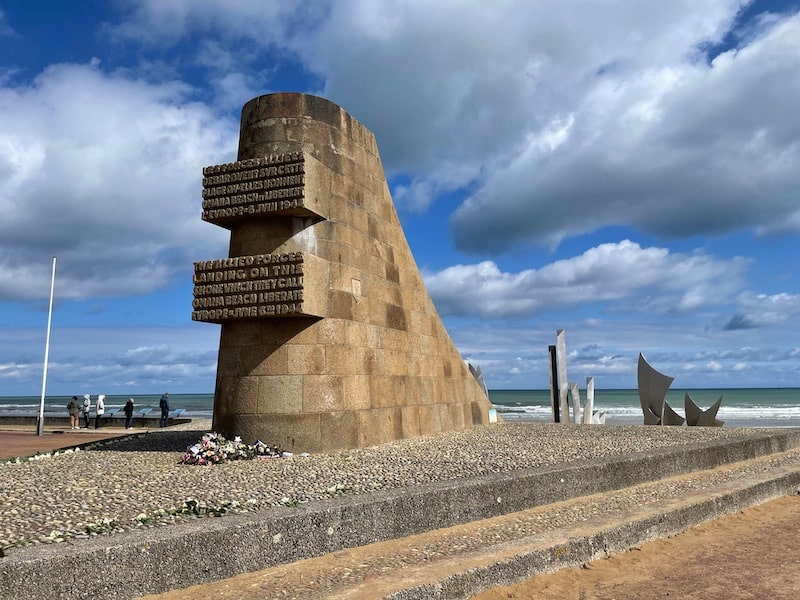
Looking along the calm stretches of sand, there’s little to remind us of the sheer terror those involved must have felt on this day.
- Normandy American Cemetery, the final resting place of nearly 10,000 American soldiers, and its Visitor Center
- Overlord Museum
- Pointe du Hoc clifftop battlefield, craters and German artillery remains
- Les Braves Memorial Monument
- Longues-sur-Mer battery between Omaha and Gold beaches, with German casemates and observation bunkers
- La Cambe German War Cemetery (more on this below)
At Gold Beach, British troops would overcome German defenses and capture the nearby town of Arromanches, needed to set up Mulberry Harbor, an artificial port whose scattered remnants can still be seen, especially at low tide.
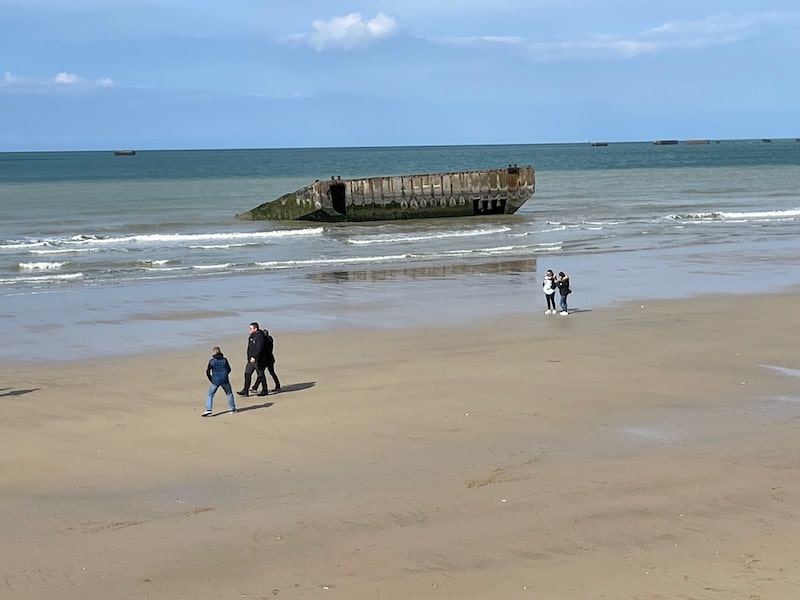
These harbors were of great importance, since they allowed for offloading of troops and essential goods, keeping supply lines open for the Allies.
- Remnants of the ingenious artificial Mulberry Harbor at Arromanches, including floating pontoons and concrete blocks
- D-Day Museum, Musée du Débarquement, right on the beach
- 360° circular cinema for an immersive experience of the battle
- British Normandy Memorial in Ver-sur-Mer, overlooking Gold Beach
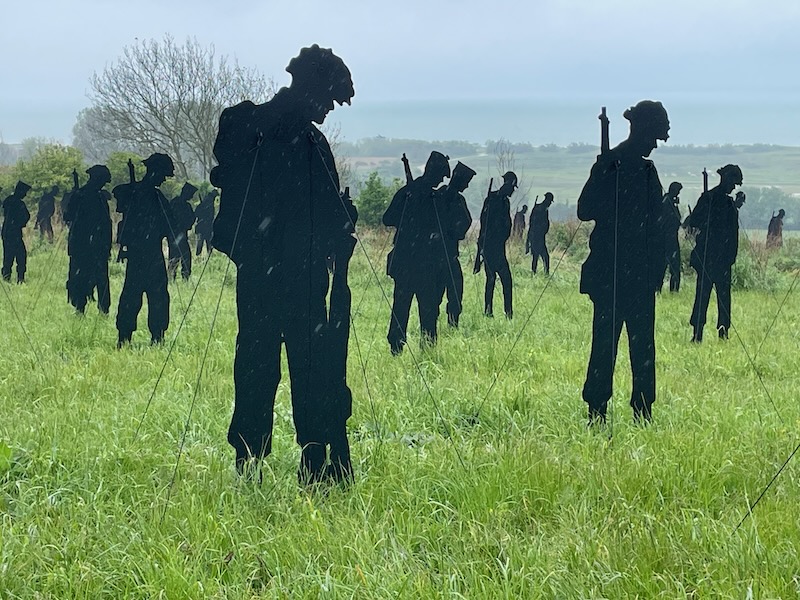
Juno Beach is a landmark of immense significance to Canadian military history.
This is where Canadian forces faced tough opposition but succeeded in securing a vital victory, linking up with British forces from neighboring Gold Beach, essential for the subsequent push inland.
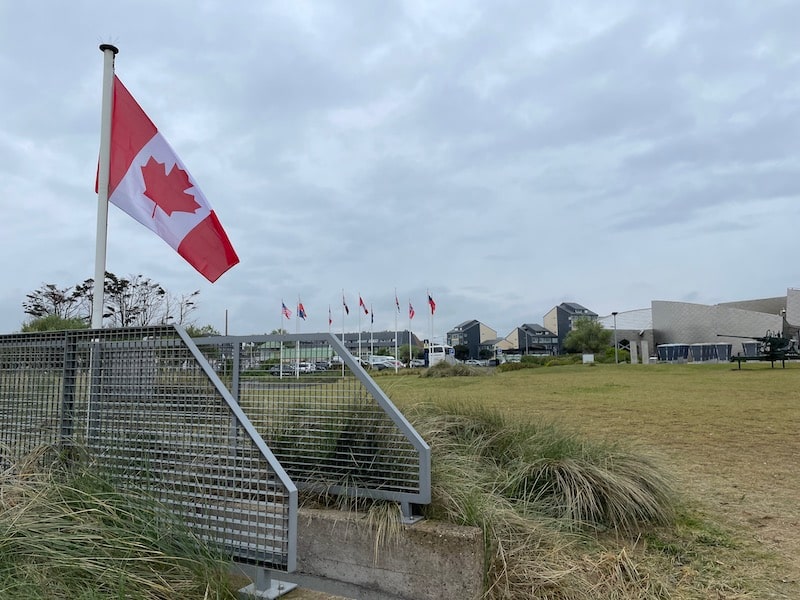
Today, the Juno Beach Centre at Courseulles-sur-Mer provides insights into Canada's role in World War II with detailed exhibits not only about the strategic nature of the advance but also about what was happening back home in Canada. You can also visit the remains of German bunkers and fortifications with a Canadian guide.
- Juno Beach Center and its memorial to Canadian troops
- Picturesque port of Courseulles-sur-Mer (within walking distance, a nice place for a lunch break)
British soldiers and Free French Forces stormed this easternmost beach together, contributing in a major way to the overall Allied advance and showing their solidarity by joining forces.
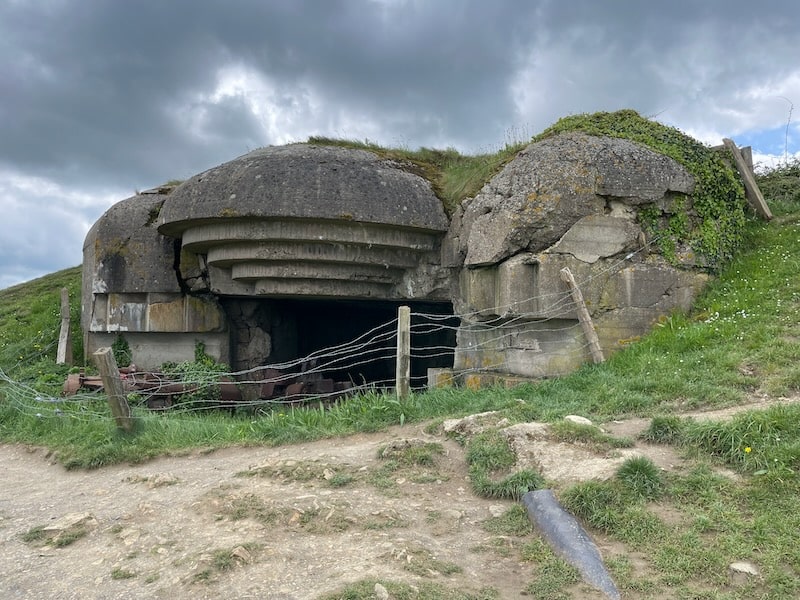
For those seeking a more serene experience, Sword Beach is usually less crowded, where remnants of coastal defenses can still be seen but in a more peaceful setting.
- Grand Bunker Museum for a look at German fortifications and living conditions
- Sword Beach Monument
- Pegasus Bridge (a replica), captured intact by British airborne troops, and Memorial Museum
German War Cemetery
Near La Cambe, inland between Utah and Omaha beaches, sits the German War Cemetery, Normandy’s largest, the resting place of 21,000 German soldiers.
It is a somber site, even on a sunny day, with impeccable rows of black granite crosses and a central mound which pays tribute to the unknown soldier on both sides of the conflict.
I was as moved by this cemetery as I was by the other memorials, all helping deepen my understanding of the universal losses of war and its shared human cost, which knows no national boundaries. A visit here is a strong reminder of the reconciliation and peace achieved since then.
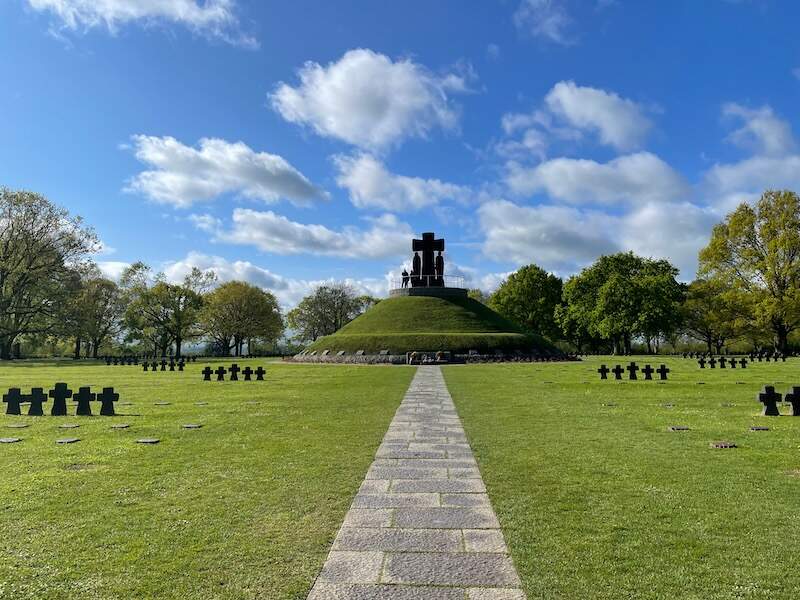
May to early June is an ideal time to visit, but know that as you get closer to 6 June, the anniversary date, you can expect larger crowds and more traffic. That said, the entire region bands together on the anniversary to organize the D-Day Festival Normandy , with activities throughout the area that provide an extra historical experience.
In late spring, weather is less rainy than earlier in the year (it rains often in Normandy), and temperatures can be mild. I visited in March (cold, blustery, but uncrowded) and in May (sunny, filled with blossoms – but more visitors).
While there were definitely plenty of people in May, it’s nothing compared to the crowds of peak summer months. But parking lots are huge and these sites are spread out, with plenty of open spaces, so while you might feel the crowds on the roads or where there are entrances, you’ll have plenty of opportunities to get away from people everywhere else.
Early fall, in September and October, is a bit like late spring, with nice weather and fewer crowds.
- To avoid the worst crowds and enjoy a more personal experience, arrive early in the day if you can, especially to the more popular sites.
- Be prepared for changes in weather, which often take place every few minutes in Normandy. Make sure you have an umbrella or raincoat or poncho for the rain, and an extra layer in case the weather cools.
- Please be respectful, especially if you’re visiting with children. Graves are not playgrounds, and although most people behave, you may be shocked to see people taking laughing selfies among the rows of the fallen.
- Consider how much time you’ll have for what you want to see. Ideally, two full days if you have your own transportation will get you to the main sights, while three would be even better. Distances are short, but there is so much to see.
The best way to visit the D-Day beaches
This will depend on how much time you have.
If you have several days at your disposal, driving is the best way to visit the D-Day beaches.
Independent transportation will allow you to reach far more sites than you would any other way, especially some of the more out-of-the way ones.
If you don’t have your own car, you can easily rent one here (or use the site to compare prices to get an idea), and if you’re a bit antsy about renting, here’s everything you need to know .
To give you an idea of distances, here are some examples for Omaha Beach:
- From Bayeux: 25km/15mi, or about 23 minutes
- From Caen: 52km/32mi, or about 40 minutes
- From Paris (Charles de Gaulle airport): 307km/190mi, or just under 4 hours
Parking is not a problem at any of the sites, the largest of which have huge parking lots. Many are free, but a few, such as the British Normandy Memorial, charge a fee that is then used for the memorial’s upkeep.
If you're a bit unsure of French driving rules (and some of them make no sense at all), this quick online course is excellent and will bring you up to speed.
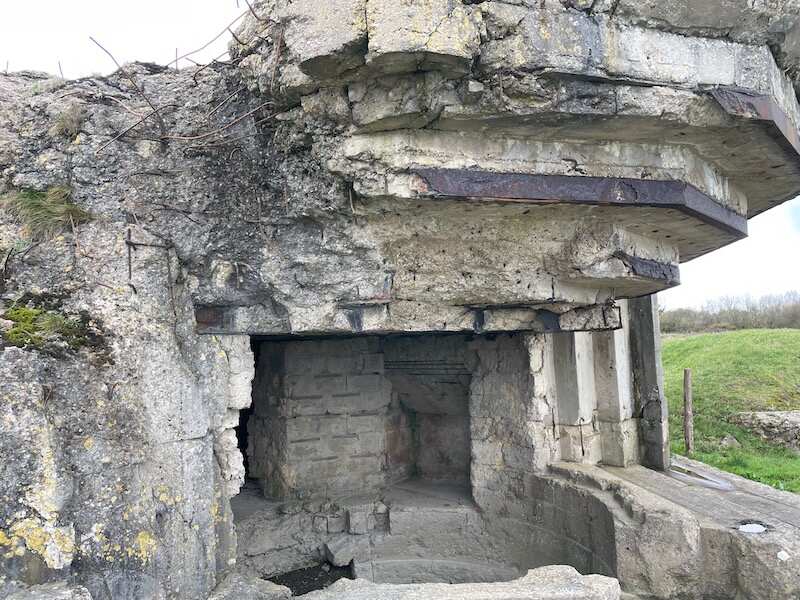
This is quite complicated and requires planning – and time. Trains to the region usually leave from the Gare Saint-Lazare in Paris to either Caen or Bayeux. You’ll find schedules and prices here .
From either city, you can catch a local bus to some of the sights.
From Bayeux or Caen, check the timetables for Nomad , the local bus company:
- Bus 101 goes from Caen to Courseulles-sur-Mer
- Bus 120 goes from Bayeux to Colleville-sur-Mer
- Bus 121 goes from Bayeux to Arromanches
There are probably others, and you should contact the tourist office (once you click through, scroll down to the bottom of the page for all the tourist office contacts) of the destination you want to visit for more detailed information. Every one I’ve called so far speaks English.
Just a word of warning: check train and bus schedules carefully because they can change drastically depending on the season or whether there are school holidays .
Using public transport takes planning and is not the simplest way of visiting the D-Day sites, since some bus stops are a significant distance from the sites. If you don’t want to be bothered with all this, take a guided tour to the beaches. I explain this in greater detail below.
I’ve tried all three methods. Driving was my first choice, followed by booking a guided tour. Out of season, public transportation should only be attempted if you have plenty of time because transportation can be quite infrequent and erratic.
I’ve taken several of the guided tours below and they’ve all been hassle-free. I’ve listed some of the better ones in case you choose this option.
Having a tour guide can be a great help in explaining the battle of Normandy and the events of D-Day.
The beaches are best reached from Bayeux (only a short drive from the coast) or Caen (not much further), and you'll find plenty of tours from either. However, if you’re in Paris and you only have a day, you can still take a day trip to the Normandy coast but it will be a very long day.
Here are various tours I can either recommend personally or that have excellent reviews from others who experienced them recently. Just one thing – itineraries change so use what's below as guidance but please check first before reserving.
Best guided tours from Bayeux
- Half-day tour to American D-Day sites - hits the main sights of Omaha Beach, Pointe du Hoc and the American Cemetery
- Similar to the above tour, this one also covers the main three sites of the US landing
- Full-day guided tour - includes the above stops but adds in the more distant Utah Beach and Sainte-Mère-L’Eglise
- Private full-day tour - this includes both Omaha and Utah beach sites, as well as a rarer visit to a major paratrooper drop zone
Best guided tours from Caen
- D-Day sites + Caen Memorial (including lunch) - this tour falls somewhere between the half and the full day, as it also involves lunch and a visit to the Caen Memorial
- Small group tour to Omaha sites - this tour provides a driver rather than a guide, but does include entrance to the Overlord Museum in addition to the three Omaha sites
- Private tour to Canadian sites - for up to 7 people, focused on Canada’s involvement in D-Day
Best guided tours from Paris
Remember that it’s a long drive from Paris and back, but if you cannot spend more than a day visiting the D-Day beaches, then here are some of the best tours for a rewarding visit from Paris. Note that only a few include lunch.
- Full-day tour with lunch - this tour includes both Utah and Omaha beach and lunch and is by coach, hence its more affordable price
- Small group all-day tour - includes several stops, including (in addition to the Omaha sites) the German battery at Longues-sur-Mer and the Overlord Museum
- Small group to Juno Beach - full-day trip to Canadian sites
- VIP Services private day trip - to avoid the crowds and travel in comfort, this private trip has hotel pickup (especially important given 7am departures) and takes you to the three Omaha sites plus Arromanches on Gold Beach
Other ways of visiting the D-Day beaches
While I’ve named the most common ways of visiting the beaches, you could also cycle along the coast. Normandy is well-equipped with bike paths and you can try either of these tour agencies: Petite Reine (for electrically assisted bikes) or Bike Tours (for standard bikes, although they also have some electric ones).
Visiting the Normandy beaches is a historical journey in many ways, so if you’re not familiar with what happened on D-Day or if you want to brush up on your history, try these books for some excellent background:
- The Bedford Boys by Alex Kershaw: about a group of young men from Bedford, Virginia, who were part of the first wave of troops to land on Omaha Beach on D-Day
- The Longest Day by Cornelius Ryan: a comprehensive account of the events leading up to and during the D-Day invasion
- Band of Brothers by Stephen E. Ambrose: about the ordinary men who became the World War II’s most extraordinary soldiers at the frontlines of the war's most critical moments
- Overlord – D-Day and the Battle for Normandy by Max Hastings: a journalist’s account of the D-Day landings
- D-Day – Juno Beach, Canada's 24 Hours of Destiny by Lance Goddard: hour-per-hour chronicling of one of Canada’s greatest military achievements
Before you go…
The D-Day beaches are an experience you’ll never forget, whether you have close personal links to them or not. This is a region incredibly rich in many kinds of history so while you’re here, if you have the time, you could go further afield to Caen or Bayeux.
Bayeux was spared fighting during the war and has remained intact for centuries, home of a magnificent cathedral, an excellent museum on the Battle of Normandy, and the world-famous Bayeux tapestry, which tells the story of the Battle of Hastings in 1066.
Caen is the site of the excellent Caen Memorial Museum , the largest in France dealing with World War II, but has plenty more to offer, including a lovely old town and Caen Castle.
Did you enjoy this article? I'd love if you shared it!

Bonjour! I’m Leyla! I was born in Paris and now live in the bucolic mountain foothills of Eastern France between Lyon and Annecy.
I'm rediscovering my own back yard after years of living abroad in Canada, Spain and Switzerland as a journalist and a diplomat - and I'm loving every minute.
Passionate about history and culture, I’ve created Offbeat France to seek out my country’s mysteries and legends, less-traveled destinations, along with plenty of food stops and many castles - I am French, after all!
What's New!
Visiting The D Day Beaches? This Is The Only Guide You'll Need
May 21, 24 01:06 AM
3 Fascinating Castles Near Paris That Are Way Under The Radar
May 19, 24 07:23 AM
La Maison Picassiette In Chartres: The House Of A Million Pieces
May 12, 24 12:49 PM
How To Get To Mont Saint-Michel: The Ultimate Hassle-Free Guide
May 02, 24 04:09 PM
The Best Giverny Day Trip From Paris (+ Orsay)
Apr 17, 24 05:32 AM
© Copyright 2024 OffbeatFrance.com | All Rights Reserved | Privacy Policy & Disclaimer | Contact Me | ABOUT
As an Amazon Associate offbeatfrance.com earns from qualifying purchases
- Skip to primary navigation
- Skip to main content
- Skip to primary sidebar
- Skip to footer

Normandie Lovers
To awaken your senses in Normandy - Claire et Manu’s Blog
Visiting the 5 D-Day landing beaches (in Normandy)
by Claire ROBINSON , Region Lovers | September 7, 2023 | no intrusive ads, no sponsored content, just some affiliate links - if you use them, we get a small commission (read more)
Sand, dunes, cliffs… but also bunkers, sculptures and museums. The 5 D-Day landing beaches are a must for any trip to Normandy. Their story is both heartbreaking and inspiring. Each of these beaches now has memorials and museums to remember. Here is our complete guide to prepare your visit with:
- Omaha Beach
- Sword Beach
BEFORE OUR TIPS + PHOTOS HERE ARE OUR favorites

Our favorite car rental platform with great offers: DiscoverCars

Must-See : Book your tickets for the Caen Memorial Museum Excursion : Visit the D-Day landing beaches from Paris

Our favorite places to stay: Hotel Domain de Bayeux , elegant and central – see photos and availability Hotel Domaine d’Utah Beach , for the north – see photos and availability Hôtel Ferme de la Rançonnière , the charm of the countryside – view photos and availability
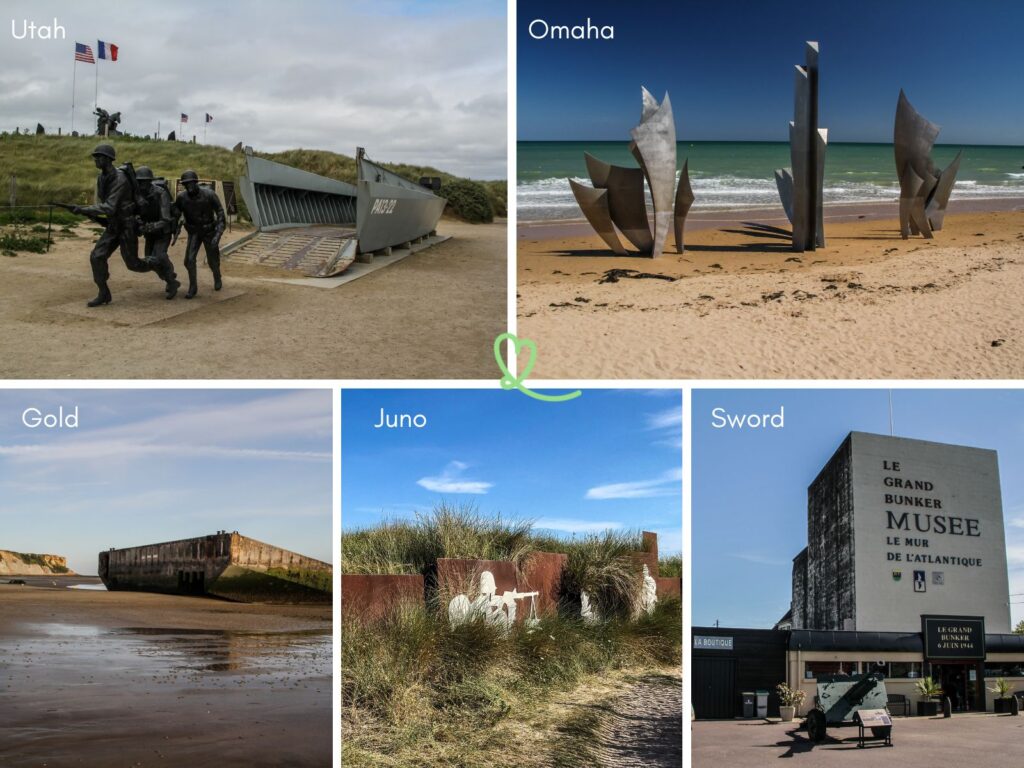
This guide is completely independent , based on our experiences. We visited the area anonymously, making our own choices, and paying all our bills in full.
Visit the D-Day landing beaches in Normandy : Map + tips
The 5 landing beaches – map and introduction.
Operation Overlord, a.k.a. the Normandy invasion, began on June 6, 1944. 5 main areas were strategically chosen by the Allies on the Normandy coast. They cover a section of more than 80km (50 miles). Code names have been given:
- Utah Beach, the easternmost beach where the American troops landed
- Omaha Beach where the American troops landed
- Gold Beach where the British troops landed
- Juno Beach where the Canadian troops landed
- Sword Beach where the British troops landed
Here is a short introduction video of each track:
The Battle of Normandy that followed lasted until the end of August.
Here is a map to help you locate them:
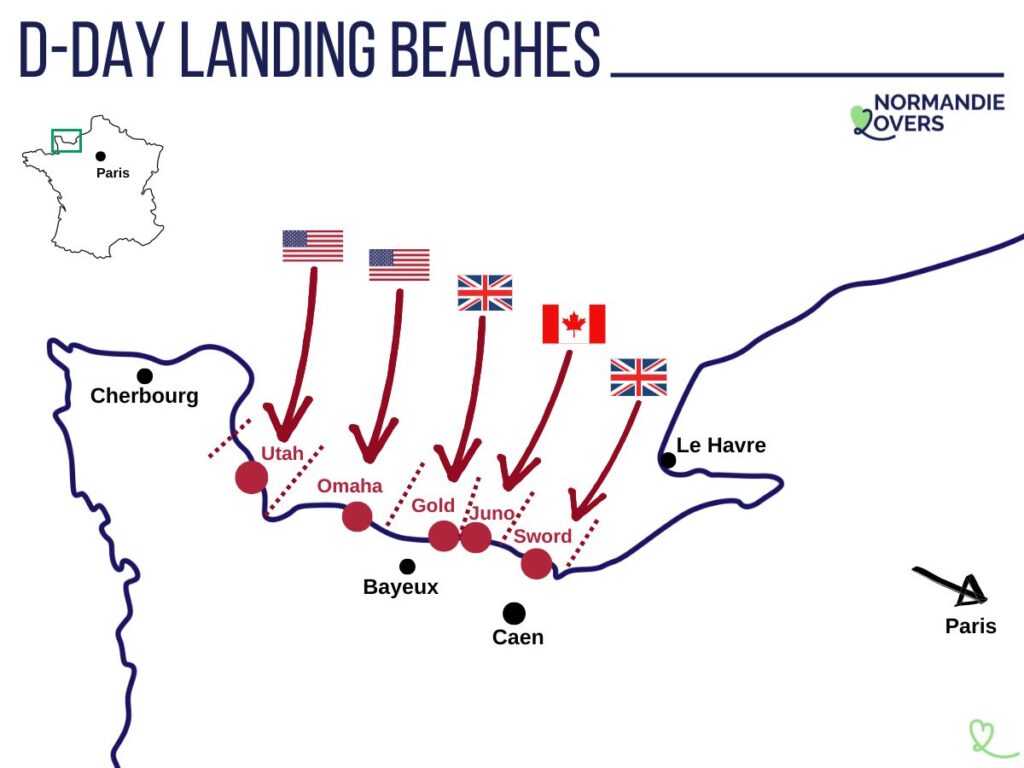
Which D-Day beach to visit?
Around these 5 beaches, you will find cemeteries, batteries, memorials and museums. They are all fascinating to discover. Depending on your family history, you can choose the one that interests you the most. And if you don’t know about special family ties, here are our opinions to help you choose:
- Utah Beach is the most fun : an open air museum, a battery and the new D-Day Experience not far away
- Omaha Beach is the most emotional : the magnificent sculpture on the beach, the intensity of the American cemetery. We didn’t expect to feel so many overwhelming emotions as we stood in front of all these crosses lined up.
- Gold Beach is the most fascinating visually: the remains of the temporary harbor that appear at low tide, the view from the cliffs…
- Juno Beach is the quickest to visit – if you’re short on time, the beach and museum are right next to each other
- Sword Beach is the most strategy oriented – no beach experience here, but the Antaltic Wall Museum in the Bunker is a unique experience and the Pegasus Memorial tells us more about this critical victory.

How to visit the D-Day beaches in Normandy?
We do not recommend public transportation to visit the landing beaches. There are some local buses, but not very frequent and with many stops for the locals. Your best options are:
- By car Visiting by car gives you a lot of flexibility in choosing where to go and how much time to spend at each place. You can rent at CDG or Orly airports, or Caen (see our tips ) or your point of arrival in France – note that Bayeux has very few choices (read more ).
OUR ADVICE FOR RENTING A CAR IN Normandy
- Compare prices on our preferred platform: DiscoverCars – one of the best rated sites.
- Choose a car that is comfortable enough (distances can be long) but compact (some parking lots and villages are narrow).
- Think of the complete insurance (some roads are tortuous and narrow).
- There is a lot of demand, book it early .
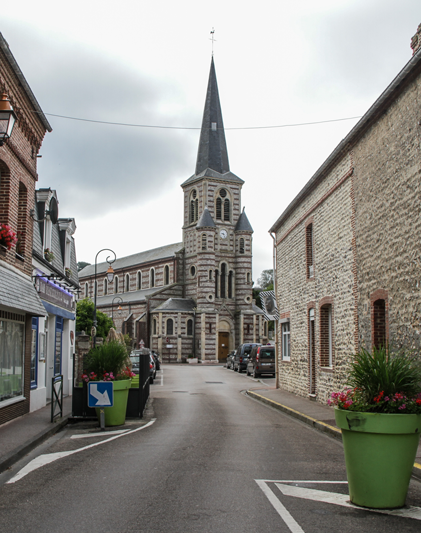
How long to visit the landing beaches
Let’s start by discussing a little bit about the driving times between locations. This will give you an idea of what is feasible:
- From Caen to Bayeux = 30 min drive
- From Bayeux to Utah Beach = 50 min
- From Utah Beach to Omaha Beach Beach = 45 min
- From Omaha Beach to Gold Beach = 45 min
- Gold Beach to Juno Beach Beach = 15 min
- From Juno Beach to Sword Beach Beach = 30 min
- From Sword Beach to Caen = 20 min
- Paris to Omaha Beach = 3h30
You can get an overview in one day. But for a more complete vision and to immerse yourself in the history we recommend 3 to 5 days, or even a week if you are passionate.

Which city is the most convenient to visit?
The most convenient cities to stay and visit all the landing beaches are :
- Bayeux, a charming little town inland see the best hotel offers
- Arromanches-les-bains, central and at the seaside, it is at the level of Gold Beach see the best hotel offers
- Caen is the largest city in the area see the best hotel offers
STAYING NEAR THE D-Day beaches
Option 1: Bayeux
The most practical option, in our opinion, is to base ourselves in the town of Bayeux. We recommend..:
- Hotel Domaine de Bayeux in an 18th century mansion – see prices, photos and availability
- see all top rated accommodations in Bayeux

Option 2: in the countryside
In the countryside around the D-Day beaches, you will find beautiful buildings with a lot of charm: farms, manors…
- Hotel Domaine d’Utah Beach – prices, pictures and availability
- Hotel Ferme de la Rançonnière – prices, pictures and availability

Option 3: next to one of the beaches
If you’re looking for a seaside holiday or are fascinated by one of the beaches, you can choose a more specific hotel:
- Hotel Villas d’Arromanches in Gold Beach Beach – prices, pictures and availability
- Hotel La Sapinière in Omaha Beach Beach – prices, pictures and availability

See all our advice on where to stay to visit the beaches
1. Utah Beach
The landing at utah beach – facts and figures.
Utah was the westernmost beach of the landing. It covered the section between Pouppeville and La Madeleine with the sub-areas Tare Green, Uncle Red and Victor. The section is 3 miles long (about 5km). 23,000 American troops landed here. Casualties were the lowest with 187 men killed or wounded.

Visit to the beach
The beach is easy to visit with a small dune, viewpoints and a large stretch of sand at low tide.

Barges and mannequins are installed not far from the museum, which allows to visualize a little better what the landing was like. But it’s hard to imagine this peaceful view with the sounds of gunfire, explosions and all the warships in the sea.

A little further down the beach, there are also some bunkers.

Museums around Sainte-Mère-l’Église
The main museum is the Utah Beach Landing Museum right on the beach. It tells in 10 sequences the events of D-Day. It is a chronological journey from preparation to victory. Open all year round

But the region is full of other museums and sites:
- The Airbone Museum with a superb scenography to understand the experience of the parachutists on the day of the landing Closed in December and January except during school vacations
- The D-Day Experience : an immersive museum with flight simulator Open all year round
- The Azeville Battery with an impressive underground complex Open from April to November 11
- The Normandy Victory Museum , about the Battle of the Hedges Open from April to October and partially in winter (weekends and vacations)
See more activities at Utah Beach .

Practical information to visit
Utah Beach is the most remote and scattered of the beaches. The museums are along the beach, in Sainte-Mère-l’église and in Carentan. You should plan at least one day but 2 days will allow you to cover more places. We stayed at the Domaine Utah Beach – Le Grand Hard hotel: a beautiful 17th century farmhouse turned charming hotel, with a restaurant known for its quality meat. A great time surrounded by nature! See photos, prices and availability Otherwise, there are hotels all around Sainte-Mère-l’église – see the best rated hotels aroundUtah Beach
USE OUR GUIDE TO PLAN A DREAM TRIP TO Normandy
All the information you need for your trip:
- 8 maps that make planning easier
- 160+ pre-selected locations
- Practical advice
- 300+ photos to help you choose
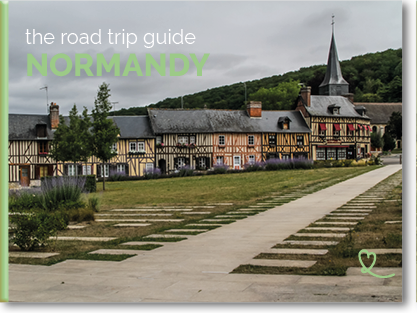
2. Omaha Beach
The landing at omaha beach – facts and figures.
Omaha, the largest, is probably the best known of the D-Day beaches. It covered the section between Sainte-Honorine-des-Pertes and Vierville-sur-Mer, with the sub-areas Charlie, Dog, Easy and Fox. The section is 6 miles long (about 10 km). 34,000 American troops landed here. Losses were highest, with 2,400 killed.

Omaha Beach is the most difficult to visualize. The beach has a promenade right on the edge and is very touristy with bathers. It is still one of the most photographed with the sculpture “The Braves”. It is composed of 3 elements: “Wings of Hope”, “Stand Up for Freedom” and “Wings of Brotherhood”. Created by Anilore Banon, it was installed in 2004, for the 60th commemoration.

The only signs of the war are the memorials and some bunker ruins.

Museums near Colleville-sur-Mer
- American Cemetery: 9387 perfectly aligned tombstones, garden, chapel, memorial, and a small museum giving the content of Operation Overlord. Open all year round
- Overlord Museum: near the American cemetery, one of the richest in terms of artifacts of the landing and the war. With a museography adapted to children. Closed in January and early February.
- The Pointe du Hoc: a strategic place of the German fortifications. The walk around the point takes you to see different bunkers above the cliffs. Open all year round
- Big Red One Assault Museum : museum dedicated to the 1st Infantry Division of the U.S. Army nicknamed “The Big Red One Open from March to November
- Maisy Battery : Battery rediscovered in 2006 with many underground passages. Open from April to September
- D-Day Omaha Museum – open from April to September
- Liberation House – open from May to September
- Omaha Beach Memorial Museum – open from June to September
Find out more about activities around Omaha Beach .

Omaha Beach is less remote but still requires a bit of a drive from Caen. The beach and the museums are grouped together, but to visit the Pointe de Hoc and the Maisy battery, you have to drive a little. You should plan at least one day but 2 days will allow you to cover more places. We stayed in Bayeux (25 min drive) at the Domaine de Bayeux: a charming hotel in the center of Bayeux surrounded by a French-style park. See photos, prices and availability Otherwise, there are hotels all around Colleville-sur-Mer – see the top rated hotels aroundOmaha Beach

MORE ABOUT THE D-Day sites
- The best landing sites to visit
- Visit the 5 D-Day landing beaches
- Where to stay – best hotels near the beach
- The best D-Day museums in Normandy
- German batteries to visit
- Car rental tips: Caen – Roissy-CDG – Orly – Beauvais
- Visit Omaha Beach
- Visit Utah Beach
- Visit Gold Beach
- Visit Sword Beach
- Visit Juno Beach (coming soon)
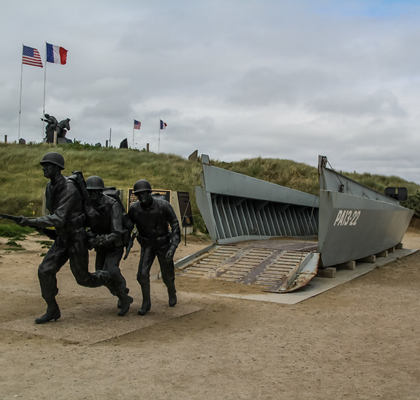
The Arromanches part of Gold Beach is one of the most visually interesting of the D-Day landing beaches. At low tide, pieces of the artificial harbor (Mulberries) appear clearly and you can approach them.

The beach of Arromanches is surrounded by cliffs. This allows to have beautiful views from the top of them.

And at the entrance to the beach, near the museum, you can appreciate several pieces of equipment.

Museums in Arromanches
- The D-Day Museum : presentation of the history of the British artificial harbor with the challenge of its construction and its key role in the victory. Closed in January
- The circular cinema Arromanches 360 : with 9 circular screens, the film “100 days of Normandy” plunges you during 19 minutes in the heart of the terrible battle. Closed in January
- The battery of Longues-Sur-Mer : a superb site on the cliffs with access to a fire command post, 4 reinforced concrete casemates and artillery pieces. Accessible all year round
- America Gold Beach Museum : dedicated to the first USA-France airmail link and the British landing in the “King” sector. Open from March to October
- Museum of underwater wrecks – open from June to September
Find out more about activities around Gold Beach .

The beach of Arromanches is very central. It is a good base to visit the landing beaches. The beach and the museums are grouped together. And the battery is only 15 minutes away. It is necessary to plan at least one day and to organize to visit the beach at low tide. We stayed at the hotel Les Villas d’Arromanches: a charming hotel in a 19th century villa on the heights of the city. A haven of peace with beautiful views of the sea. See photos, prices and availability Otherwise, there are hotels all around Arromanches – see the top rated hotels around Gold Beach

Subscribe to our Newsletter
- Get away from it all with Region Lovers’ beautiful destinations!
- Once a month
- Advertising-free

4. Juno Beach
The landing at juno beach beach – facts and figures.
Juno Beach was the landing site for the Canadian Army. It covered the section between La Rivière and Saint Aubin-sur-Mer, with the Love, Mike and Nan sub-sectors. The section is 6 miles long (about 10 km). 21,400 Canadian and British troops landed here. Casualties amounted to 1,200 wounded or killed (including 359 Canadian dead).

To reach the beach, you have to climb a small dune of white sand. The beach extends as far as the eye can see, when it is low tide.

The Cross of Lorraine is clearly visible. It was installed here to commemorate the place where De Gaulle first landed, an important turning point in the Battle of Normandy.

On the beach, not far from the museum, you can also see bunkers, tanks and representations of soldiers.

Museums in Courseulles-sur-Mer
- The Juno Beach Centre which focuses on the role played by Canadians alongside the Allied forces. You will discover a film and 5 permanent exhibition rooms. Closed in January Read more
- Beny-sur-mer Canadia War Cemetery : not far away you can visit the Canadian cemetery where over 2000 men are buried. Accessible all year round

Juno Beach Beach is surrounded by a very nice resort. It is a good base for a stay in Normandy. The museum is on the beach. And the cemetery is only 10 minutes away. You should plan for a half to a full day. We stayed at the hotel Ferme de la Rançonnière: stones and beams, everything that makes the charm of a Norman farm. See photos, prices and availability Otherwise, there are hotels in Courseulles – see the top rated hotels around Juno Beach
5. Sword Beach
The landing at sword beach beach – facts and figures.
The Sword Beach Beach landing was one of the most strategic because it was one of the main routes to northern France. It covered the section between Saint-Aubin-sur-Mer and Ouistreham, with the Oboe, Peter, Queen and Roger sub-sectors. The section is 5 miles long (about 8 km). 29,000 British troops landed here. Casualties amounted to 630 killed and wounded.

On the beach of Ouistreham, few traces of the war. It is a very large sandy beach with beach huts. On the other hand, the city is rich in museums.

Museums in Ouistreham
- Atlantic Wall Museum – The Great Bunker : Explore the former German headquarters in this massive bunker. The interior rooms have been reconstructed on all 5 levels. Closed in January and early February
- Pegasus Memorial : museum that presents the different missions of the 6th British Airborne Division, including the capture of the bridge of Bénouville called Pegasus Bridge. Closed from December 16 to January 31
- Museum No. 4 Commando : the history of French commando who joined the British troops and participate in their missions Open from April to early November
- Merville Battery: a German battery transformed into a museum with an excellent museography around bunkers, tanks, planes… Open from mid-March to mid-November
- Radar 1944 Museum (in Douvres-la-Délivrande): installed in the former German detection station, the museum presents the life of German soldiers during the occupation of Normandy as well as the history of radar. Open from April to mid-November
- And several cemeteries : La Délivrande, Hermanville, Ranville
Find out more about activities around Sword Beach .

Sword Beach Beach is in Ousitreham, a seaside resort with a huge beach. The museums are close to the beach. The Merville battery is 20 minutes away. Douvres-la-Délivrande is 20 minutes away. You should plan at least one day but 2 days will allow you to cover more places. There are many hotels and rentals in Ouistreham – see the top rated hotels around Sword Beach
Normandy beaches – D-Day in numbers
Just over 156,000 men landed on the beaches of Normandy.
The allied troops arrived
- Paratroopers: over 23,000
- By sea: over 133,000
The soldiers disembarked by nationalities
- Americans: approximately 73,000
- British: approximately 62,000
- Canadian: approximately 21,000
- and also soldiers from Belgium, Norway, Poland, Luxembourg, Greece, Czechoslovakia, New Zealand and Australia.
- And more than 170 French commandos
Casualty estimates – how many died on the beaches of Normandy
- Number of allied losses on June 6 at midnight (killed, wounded, prisoners…): more than 10 000
- Number of German losses on June 6 at midnight (killed, wounded, prisoners…): estimated between 4000 and 10000…

The equipment
- Support aircraft: over 11,000
- Combat ships: more than 1200
- Landing ships; over 4,000
- Merchant ships: over 800
- The ships were 80% British and 16% American
Frequently asked questions about beaches
Landing beach in 1 day.
If you only have one day to visit the D-Day landing beaches, it is best to choose one of the 5 beaches described in this article according to your interests:
- Omaha is the most emblematic of the beaches with the sculpture and the American cemetery
- Utah or Omaha for the Americans
- Juno for Canadians
- Gold Beach for the British
- Gold Beach for those interested in temporary port engineering
- Sword Beach and Utah Beach for the best museums (in our opinion)
What was the bloodiest beach on D-Day?
The losses on Omaha Beach were the worst on D-Day. American troops lost more than 2400 soldiers who were killed, wounded or taken prisoner.
Are the beaches of Normandy still stained with blood?
No. Without the memorials, bunkers and cemeteries, it is impossible to imagine what happened on these beaches in 1944. These are now beautiful sandy beaches where people swim in the summer.

Can we take sand from the beaches of Normandy?
No. As in many other countries, it is illegal to take sand or pebbles from French beaches.
Visit the D-Day landing beaches in winter
You can visit the D-Day landing beaches in winter. The winter atmosphere is more conducive to introspection on their history than the summer crowds… Please note, however, that almost all museums close at least in January and early February. Closing times depend on the museum. See our article on museums . However, the beaches and many of the bunkers remain freely accessible.
Films on the D-Day beaches in Normandy
The Longest Day (1962) A very realistic account of the landing at Omaha Beach. Take a look at it before your visit, to better contextualize everything you are about to see.
Saving Private Ryan (1998) War movie directed by Steven Spielberg with Tom Hanks and Matt Damon. It is inspired by the real-life story of the Niland brothers, American soldiers killed during World War II. In this fiction, the hero goes in search of the last survivor to bring him back to his mother.
Overlord (1975) Black and white film by Stuart Cooper. Story of a young recruit and his training before D-Day.
PLAN YOUR TRIP TO Normandy
Inspiration destinations
- Deciding where to go in Normandy – the best destinations
- Our weekend ideas: best-of , romantic , unusual , seaside , luxury , family
- 16 seaside hotels in Normandy
- The most beautiful charming hotels in Normandy

- Best things to do in Normandy
- Best cities in Normandy
- Most beautiful beaches of Normandy
- Most beautiful villages of Normandy
- Best castles of Normandy
- Best abbeys of Normandy
- Read our complete guide to visit the Mont-Saint-Michel
- Discover the D-Day sites

- Where to stay in Normandy – best places and hotels
- See our tips for renting a car at CDG airport , Orly airport , Beauvais airport , Caen , Rouen , Bayeux …

SHE MADE THE TRIP AND WROTE THE ARTICLE Claire
Region lovers' 10 commitments.
- Visit all the places we tell you about.
- For each city, stay in at least one hotel and visit the ones we recommend.
- For each city, eat in at least one restaurant, visit the ones we select.
- Pay all our invoices in full, refuse any partnership or sponsorship.
- Periodically update our articles, with the help of our readers.
- Enrich our articles with our first-hand experiences.
- Use 99% of our own photos
- Use digital tools in a reasoned and transparent way, feeding them with information verified on site.
- Provide information on the traveler/writer pairing that gave rise to the article.
- Tell you what we do, and do what we tell you!
Claire and Manu
Find out more about the team and our history.

SEARCH OUR SITE
Our multi-destination blogs.
Regionlovers.fr
ZigZagroadtrips.com
OUR OTHER REGIONS TO DISCOVER
LoireLovers.fr
CorsicaLovers.fr
ProvenceLovers.fr
CanariasLovers.com
CHANGE LANGUAGE
Legal Notice / Terms of Use / Privacy Policy
- Skip to main content
- Skip to primary sidebar
- Skip to footer

8 Top Things to See at the Normandy D-Day Beaches in 2024
Debra Thimmesch Last Updated: September 26, 2023
D-Day, June 6, 1944, was one of the most pivotal days in world history. That day, thousands of Allied troops began their liberation of “the oppressed peoples of Europe,” as then-General Dwight D. Eisenhower put it. Today, you can explore this important place in history from Omaha and Utah Beaches to the American Cemetery and Point du Hoc. In this article, I’ll tell you about the top must-see sites at the Normandy D-Day beaches.
Pro Tip: Planning what to do on your trip to Paris? Bookmark this post in your browser so you can easily find it when you’re in the city. Check out our guide to Paris for more planning resources, our top Normandy tours for a memorable trip, and if a Normandy tour is worth it .
What You Have to See at the Normandy D-Day Beaches
“Your task will not be an easy one,” Eisenhower wrote to the Allied troops. Those words were part of his now-famous official order for the June 6, 1944, D-Day invasion. Indeed, it was not easy. In fact, according to the US Department of Defense, 4,700 of the 35,000 soldiers who first went ashore that day were wounded, killed, or declared missing.
The huge D-Day operation included the invasion and the push through Normandy then southeast to Paris . The invasion architects who selected Normandy as the landing zone gave it the codename Operation Overlord.
Gaining a strategic foothold in northwest Europe was essential to turning the tides in the war. Allied troops landing in Normandy were extremely vulnerable. The Germans had established positions, including bunkers, along the coast. They had also occupied cities such as Caen, the capital of Normandy.
Eisenhower warned the troops , “Your enemy is well-trained…He will fight savagely.” Therefore, it was up to the Allied forces to liberate the land and the French people. The battle that turned the tides of World War II started in Normandy.
In this article, I will explain why 50 miles of coastline in Normandy—which includes specific areas you can visit—held the key to victory. Here are 8 important sites from the Caen Memorial Museum to La Pointe du Hoc you won’t want to miss.
Not ready to book a tour? Find out if a tour of Normandy’s D-Day beaches are worth it .
8. Caen Memorial Museum
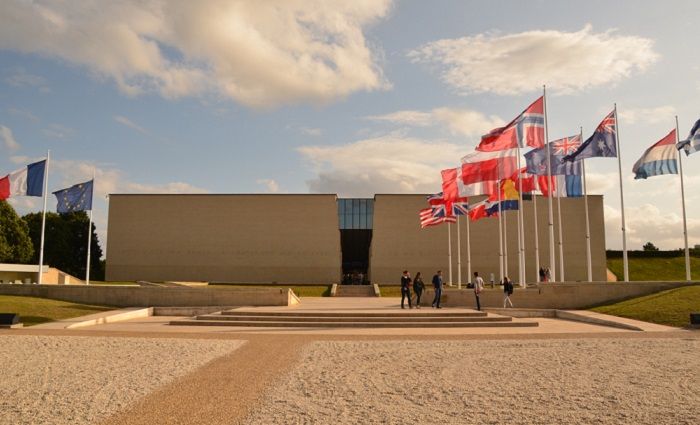
I recommend starting your Normandy D-Day Beaches visit in Caen. Caen is about 10 miles inland from the English Channel. It is the largest city in Normandy and played a crucial role in the war as it has in days past, such as when William the Conqueror once used Caen as his capital. It was heavily bombed by the Germans during World War II, and the city lost numerous historical buildings entirely.
The Caen Memorial Museum provides visitors with a comprehensive picture of the war in this part of France. Different areas of the museum tell different stories, so be sure to allow plenty of time here.
For example, you’ll learn about how civilians coped with the German Occupation. You’ll see objects related to the French Resistance, which was extensive. Finally, you’ll hear the stories of D-Day and the Battle of Normandy. The Caen Memorial Museum is the perfect place to get a full understanding of what you’ll see here at the Normandy D-Day Beaches before you head to Omaha Beach.
Address: Esp. Général Eisenhower, 14050 Caen Cost: starting at €17.50
7. Bayeux Battle of Normandy Museum
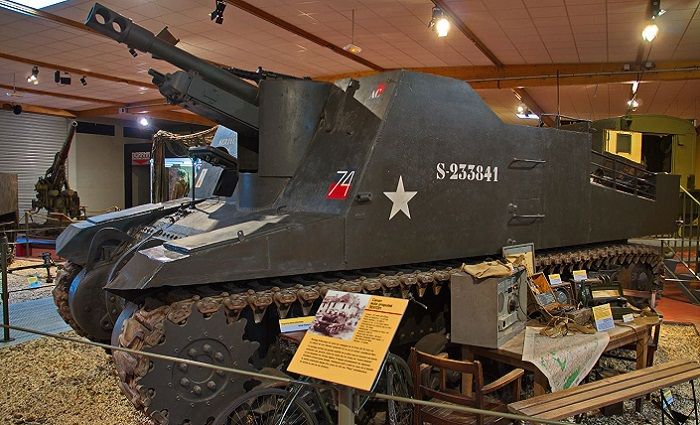
The Memorial Museum of the Battle of Normandy is a top place to see at Normandy. Bayeux is around 20 miles west of Caen on the inland side. This ancient city also hosts the famous Bayeux Tapestry.
Wondering what that is? Well, it’s not a tapestry at all but a famous embroidery that tells the story of the invasion of England by William the Conqueror. Thus, it seems apt that Bayeux would also tell the story of a more recent, historic invasion.
Bayeux’ museum focuses solely on the Battle of Normandy. Part of Operation Overlord, the Battle of Normandy took place over the summer of 1944. After the successful but bloody D-Day invasion, Allied troops pushed southeast across Normandy to the Seine river.
Their goal was to liberate Paris, and according to WWII historian Stephen Ambrose, Paris was liberated on August 25. The Germans retreated across the river to the east on August 30, 1994. That fateful event marked the end of Operation Overlord.
Address: Bd Fabian Ware, 14400 Bayeux Closed: Annually in January Cost: starting at €7.50 (buy in person only)
6. Artificial Harbor at Arromanches
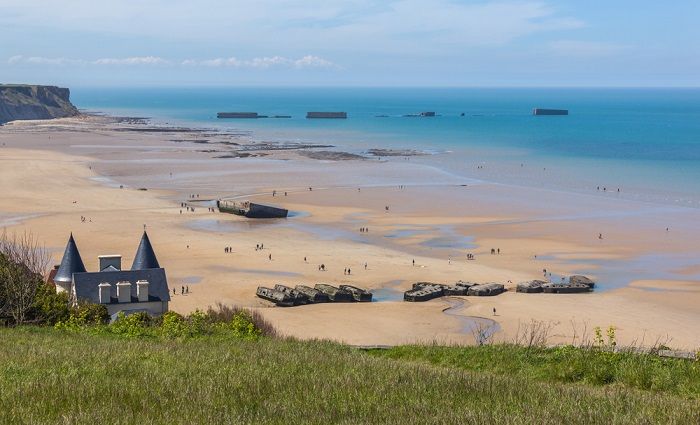
You might wonder how the Allied forces moved their vehicles and cargo across the English Channel and onto the shores of France. A key piece of their success was the genius installation of two portable, temporary harbors.
They named the first harbor at Omaha Beach Mulberry A. Then they built Mulberry B at Arromanches-les-Bains on Gold Beach. Today, you can see remnants of Mulberry B in Arromanches—the very same harbor the Allies used for over 10 months after D-Day. Incredibly, 2.5 million troops and 4 million tons of supplies came through Mulberry B, notes historian Jonathan Falconer.
A 17-minute drive from Bayeux gets you to scenic Arromanches. You have a splendid view of the artificial harbor from above. While you cannot walk on the remaining constructions, at low tide you can get quite near them. If you arrive around lunchtime, I recommend having fresh seafood at Restaurant La Maison du 6 . It’s just a short walk from the main square on Cale Neptune.
Address: 14117 Arromanches-les-Bains Cost: FREE
Not ready to book a tour? Find out how to visit the Normandy D-Day sites .
5. 360 ° Theater at Arromanches
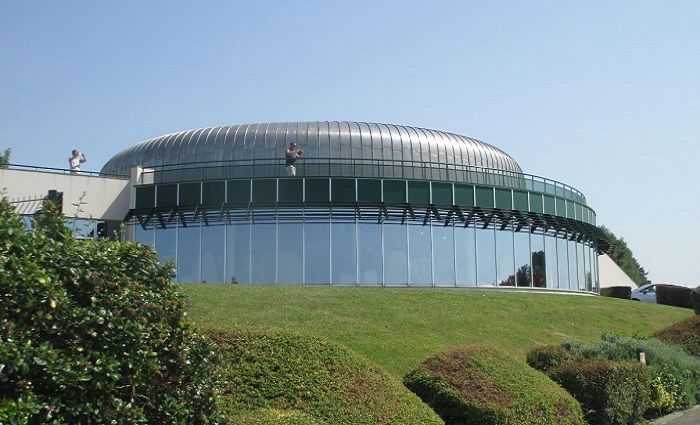
The impressive 360 ° Circular Cinema lies on the ridge above the city. The view of the artificial harbor and beach is stunning. So is the 20-minute film you’ll see in this remarkable theater.
“The 100 Days of the Battle of Normandy” is a breathtaking movie montage of footage from multinational archives. The film begins with the D-Day landings. It is projected on nine different screens, which place you at the center of the action. The experience is intense and deeply moving.
Address: Rue du Calvaire, 14117 Arromanches-les-Bains Cost: starting at €6
4. Omaha Beach
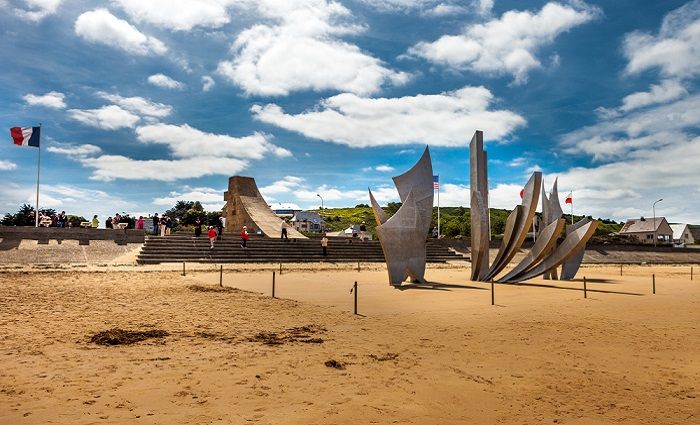
It goes without saying that Omaha Beach can’t be missed at the Normandy beaches. The Allied forces decided to call the beach landing part of the attack Operation Neptune. They designated five beaches as landing zones, and Canadian and British soldiers landed at Juno, Gold, and Sword beaches.
However, the Americans’ entry points were Omaha and Utah beaches, explains Ambrose. That’s just part of why these two beaches are the most recognized by Americans. But it’s also because the most intense fighting on D-Day took place on Omaha Beach .
The Germans had a superior position on the cliffs overlooking the beach, including concrete bunkers. In contrast, the invading troops had to enter the beach from the water—completely exposed. As a result, 2,400 lives were lost, according to the Department of Defense records. However, untold lives were saved by their heroic sacrifices. Today, Omaha Beach is peaceful—there is no sign of the violence and bloodshed of June 6, 1944, and the days that followed.
I recommend taking the D514 road parallel to the sea to get to Omaha Beach where visitors are free to explore. Whereas once you could walk down to the beach from the Normandy American Cemetery above, you must now arrive via Saint-Laurent-sur-Mer. Upon arrival, you’ll see the massive memorial sculpture titled Brave . It looks like gleaming silver swords and tongues of fire.
Address: Av. de la Libération, 14710 Saint-Laurent-sur-Mer Museum Cost: starting at €5
3. Normandy American Cemetery and Memorial
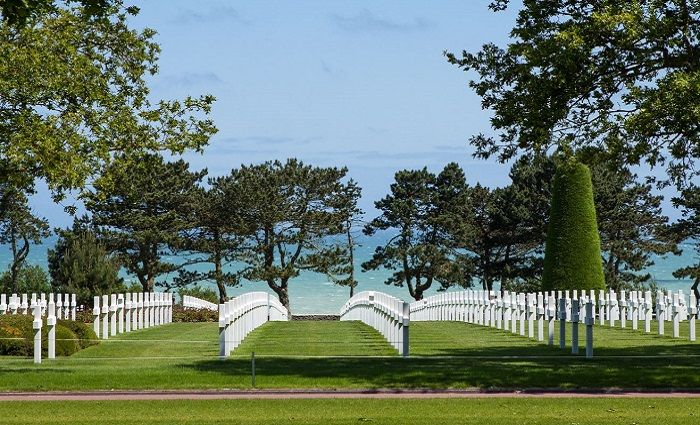
The Normandy American Cemetery and Memorial is located in Colleville-sur-Mer. According to the American Battle Monuments Commission, the Army constructed it on the site of a temporary cemetery for American soldiers in June of 1944. It was the first American cemetery on European soil in World War II. The 172.5 acre cemetery contains the graves of 9,386 dead. Most of the fallen died on D-Day and the days of battle that followed.
The Walls of the Missing on the east side of the memorial enclose a quiet, semicircular garden. The 1,557 names of the missing have been inscribed on those walls, and it’s worth taking some time to see it. Sculptures and large maps describe the military operations that took place in Normandy.
There is a beautiful reflecting pool and a small chapel. To the north, rising above the ocean, a table with a diagram of the beaches is available to help orient visitors. However, the lines of austere white crosses are by far the most poignant aspect of the cemetery and likely what you came to see here at the American Cemetery.
Address: Rte du Cimetiere Americain, 14710 Colleville-sur-Mer Cost: FREE
2. La Pointe du Hoc
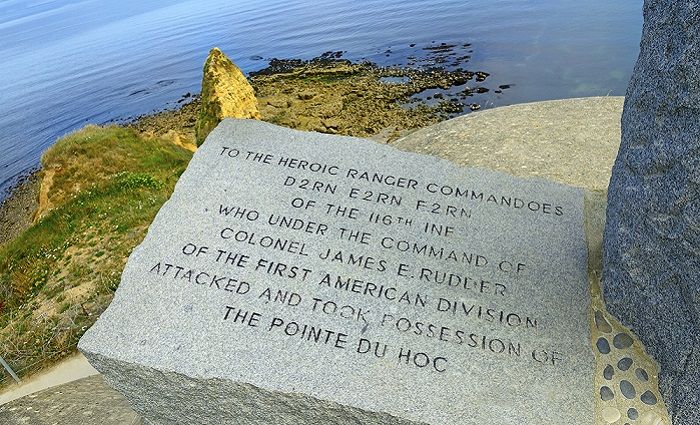
Drive further west of Omaha Beach for 15 minutes and you’ll reach La Pointe du Hoc. As a cliff overlooking the English Channel, Pointe du Hoc was enormously strategic for the Germans.
They had fortified it and built concrete bunkers that seemed completely impregnable. It was their front-row seat for the invasion of Normandy. Thus, the Allies knew that its position would prove a dire threat to the success of the invasion and determined to conquer it at all cost.
The massive battle that took place there left scars that you can still see today. As you stand at Pointe du Hoc, you’ll see huge craters created by the awe-inspiring and deadly assault of the Allied forces. The site is unimaginably eerie. You can walk alongside the craters and even climb down into the bunkers to get a feel for what it might have been like to stand guard there.
Address: 14450 Cricqueville-en-Bessin Cost: FREE
1. Utah Beach and Landing Museum
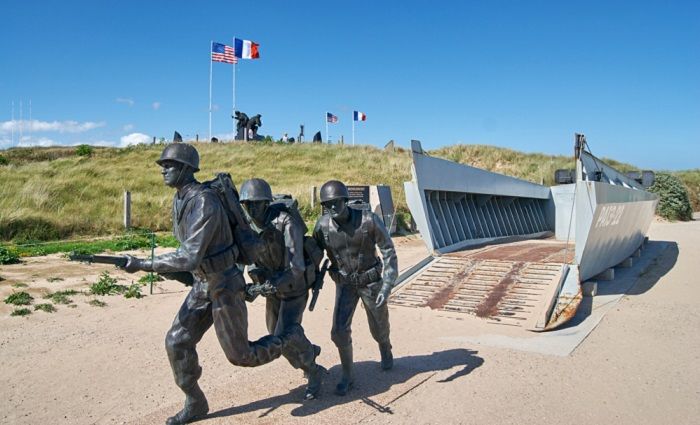
If you drive about 35 or 40 minutes west of Pointe du Hoc, you will reach the Cotentin (or Cherbourg) Peninsula where Utah Beach is located. Utah was the furthest west of the D-Day beaches. The decision to attack this beach was a late addition to the planning stages, notes Ambrose. Yet, it proved to be strategically essential due to its close proximity to the deep water port at Cherbourg.
Utah Beach was the first place the Allies landed on June 6, 1944. According to the Department of Defense, they only lost 197 men of the 23,000 troops who deployed on there. However, they succeeded in taking the beach and establishing a beachhead.
The Musée du Débarquement Utah Beach, or the Utah Beach Landing Museum, is another top place to see when you visit the Normandy D-Day beaches. First, the architecture of the museum integrates with the beach thanks to the huge windows that provide an immense view. You can’t forget where you are.
Second, the museum’s extensive collection of vehicles, equipment, and objects really gives you important context to the tragedy and heroism that occurred here at these sacred sites. Your trip to the Normandy D-Day beaches, museums, and cemeteries will be one to remember.
Address: La Madeleine, 50480 Sainte-Marie-du-Mont Museum Cost: starting at €5
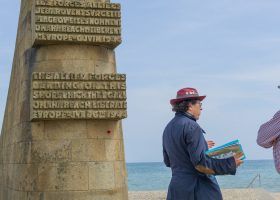
Are 4 Days in Paris Enough?
8 amazing day trips from florence, are 3 days in paris enough, where to stay in phoenix in 2024: best neighborhoods and hotels, the best 10 things to do in phoenix, arizona in 2024.
About Debra Thimmesch
Debra Thimmesch is an art historian, researcher, independent scholar, editor, and visual artist. She mentors undergraduate and graduate students in the history of art and is a published author. Her work has appeared in publications such as The Brooklyn Rail, Art Papers, and Blind Field and a variety of exhibition catalogs. Her BA, MA, and PhD in art history have provided only part of the broader, global view of the history of art that she has acquired through the years. As a world traveler, she considers herself a sort of pilgrim of great art and architecture. As a teacher and tour guide, she has led private tours and student groups to numerous sites in the US, the UK, and Europe.
Reader Interactions
Leave a comment cancel reply.
Your email address will not be published. Required fields are marked *
- Travel Blog
- In The Press
POLICY & TERMS
- Cancellation Policy
- Terms & Conditions
- Privacy Policy


12 Top Normandy D-Day Beaches and Memorials
Written by Barbara Radcliffe Rogers Updated Mar 30, 2022
The allied invasion of Normandy on June 6, 1944 is not only one of the great epics of military – and human – history. D-Day was also the turning point that brought Europe out of the iron grip of the Nazis and all the bigotry, genocide, oppression, and inhumanity they stood for.
Establishing a western land front was crucial to the allies, and in a few short hours, and in the face of overwhelming odds, it was accomplished by the massive and heroic efforts of Canadian, American, and British forces joined by smaller contingents of Polish, Danish, and Free French troops.
The fact that the months of strategic and material planning and preparation for the code-named " Operation Overlord " was all carried out in secret, all the while feinting at an invasion elsewhere to divert German troops, is nothing short of a miracle.
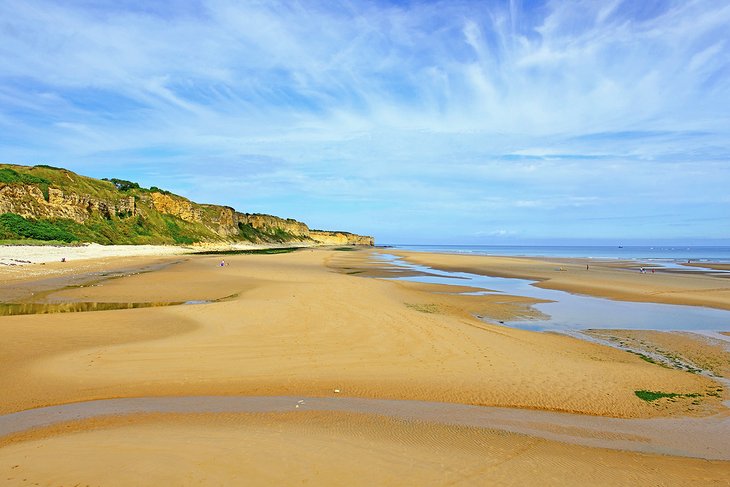
The landing sites lie between Pegasus Bridge in the east and Sainte-Mère-Église in the west and are described below in that order, east to west. Today, this stretch of Normandy's English Channel coast has returned to sandy beaches filled with laughing children and sun-seekers, but everywhere you go are reminders of those terrible days and the horrific toll of lives they took. Hitler's " Atlantic Wall " is still evident in tank traps and massive bunkers, some askew where they slowly settled into the dunes in more peaceful decades since, others made into some of the many museums that tell the D-Day story.
At each of the landing sites and all along the shore are monuments and memorials to those who fought and died, and each museum illuminates a different piece of the story. These are more than tourist attractions. They are moving scenes that lead visitors to deeper thoughts on mankind, its past and its future. They deserve the attention of every generation, and the museums reflect this.
Several have exhibits well-designed for young people, realistically replicating scenes and showing in videos or activated models how equipment worked. There are things to do as well as things to see: visitors can climb aboard historic landing craft, sit in a tank, step inside a replica glider, explore dark cavernous bunkers, and look for tank traps in the dunes. Or they can stand in silence at the Normandy D-Day beaches and memorials as they try to picture these scenes from history.
Although it's possible to visit some of the main landing beaches on a day trip from Paris , if you want to explore the coast and its World War II history more thoroughly, you'll need more time here. Plan your trip to the historic sites with the help of our list of the top Normandy D-Day beaches and memorials.
1. Caen Memorial Center
2. pegasus bridge, 3. sword beach and the atlantic wall museum, 4. juno beach, 5. arromanches, 6. omaha beach: american cemetery and overlord museum, 7. pointe du hoc, 8. utah beach and the museum of the landings, 9. sainte-mère-église and airborne museum, 10. gold beach and british normandy memorial, 11. falaise and the memorial to civilians in wartime, 12. memorial museum of the battle of normandy, map of normandy d-day beaches and memorials, tips and tactics: how to make the most of your visit to normandy d-day beaches and memorials.
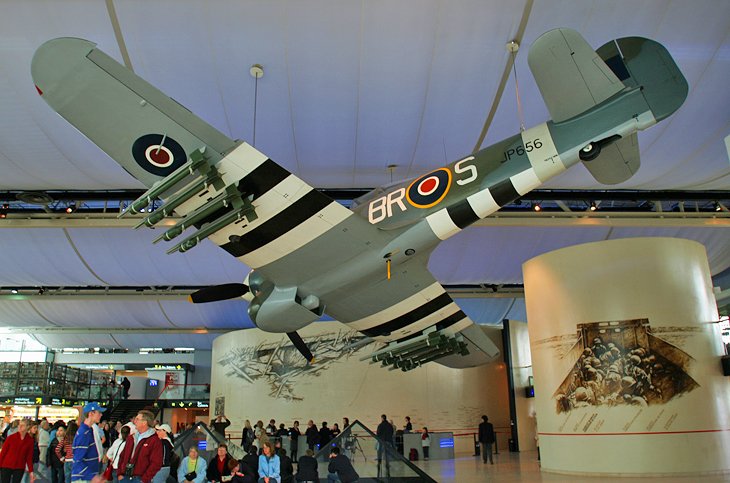
A good starting point for visiting the Normandy beaches is the excellent Caen Memorial Center, where you'll not only get an overview of the battle of Normandy, but a sense of the personal lives of the people who took part in it and were affected by it.
The museum begins its exhibits with the 1920s and the beginning of World War II in the aftermath of the First World War, examining the origins of war and the rocky path to peace, and carries the story though the uneasy Cold War years, putting World War II into its historical context.
War exhibits look at military personnel from both the allied and German armies, with intimate glimpses of their lives through letters and personal accounts. Special emphasis is on the Battle of Normandy. An excellent 19-minute film documents this battle with original historic footage.
Address: Le Mémorial de Caen, Esplanade Général Eisenhower, Caen
Official site: http://normandy.memorial-caen.com
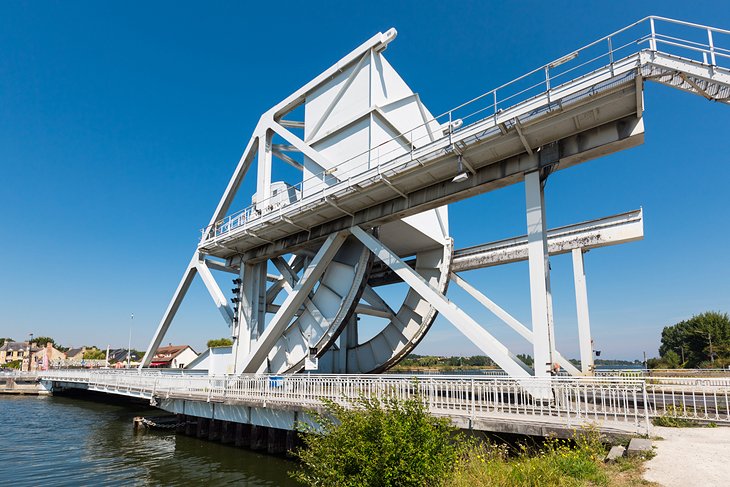
At 10 minutes past midnight on June 6, the first parachutist landed just east of Ouistreham and at 12:20am, six gliders crash-landed beside the Caen Canal with 45 men. Subsequent landings dropped a total of 6,000 men of the British 6th Airborne Division with supplies and weapons.
Their mission was to seize and hold the bridge over the canal to prevent German land reinforcements from reaching the assault target area, and at the same time keeping the bridge open and intact for allied forces to move eastward.
The current bridge looks very much like the original, which you can see - and cross - at the Pegasus Bridge Museum , on the Bénouville side of the canal, where there is also a full-size replica of a Horsa Glider and a large section of one of the originals used in the landing. Café Gondrée, the first house in France to be liberated, on the Ouistreham side of the canal, is now a tearoom and shop.
A short drive east of Pegasus Bridge in Merville-Franceville and guarding the coast at the eastern flank of the D-Day invasion, the Merville Battery consisted of multiple bunkers that had withstood repeated allied air attacks. The position was finally taken by British paratroopers, but the structures remained intact. You can tour the bunkers and become immersed in the attack in a sound-and-light show that includes realistic details such as smoke.
Address: Avenue du Major Howard, Ranville
Official site: www.memorial-pegasus.org
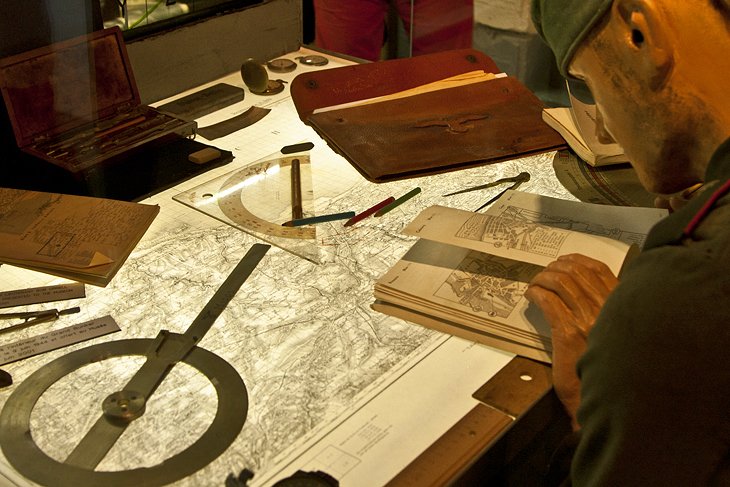
The easternmost D-Day landing beach is at Riva-Bella, part of Ouistreham and a short walk from the terminal where today ferries arrive from Portsmouth, England. Ouistreham has a small fishing harbor but is also home to the entrance of the Caen Canal, the outlet of the River Orne and the Port of Caen. The Atlantic Wall was especially strong here, with armed bunkers every 100 yards and beaches strewn with mines and tank traps.
The British and a contingent of Free French landed at 7:30am on June 6, and by 9:30, the Casino, seat of the German command force, had been cleared by Free French commandos. Still in operation was the German fire control post, a 52-foot-high concrete bunker that was not taken until June 9.
This bunker is now one of the most authentic museums of the entire coast, recreating in exact detail the appearance and work of each room in its six floors, including the observation post with its powerful range-finder and a 360-degree view over Sword Beach. Using actual equipment and furnishings, the bunker details the daily life of the soldiers stationed here, as they directed the fire from batteries covering the entrance of the Orne and the canal. Additional exhibits detail the building, extent, and camouflage of the Atlantic Wall.
On the beach, which is today a lively recreational beach with pony rides, go-carts, and rows of bright umbrellas, are monuments recalling D-Day, and near the rebuilt Casino, the No 4 Commando Museum tells the story of the only French forces that took part in the ground operations in D-Day landings.
Address: Avenue du 6 Juin, Ouistreham
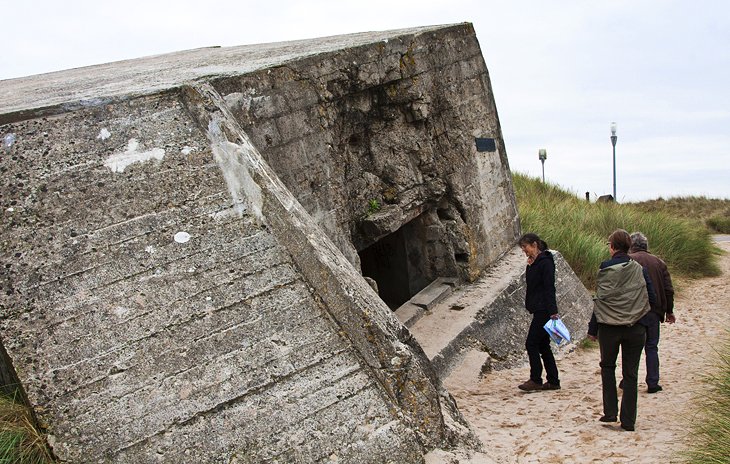
The coast of Courseulles-sur-Mer and its adjacent towns was unsuited to a solid frontal landing, so Canadian marine commandos landed first to attack and disable German positions. More Canadian forces landed with equipment and advanced inland to take an important German airfield. Sherman tanks came ashore at Courseulles-sur-Mer and by 5pm, the town was liberated.
Of particular interest to Canadian visitors, the Centre Juno Beach is a family-friendly series of exhibits, hands-on presentations, and films looking at the Canadian preparations and contributions to the allied effort through personal stories and interactive experiences. This center offers a unique Canadian perspective and includes an exhibit on Canada today.
From April through October, guides lead tours of remains of the Atlantic Wall, exploring its bunkers and the tunnels leading to the underground command post. You can see damaged bunkers on the beach independently.
At the western end of beach, look for the double-armed Cross of Lorraine, marking the site where Charles de Gaulle made a brief return to France on June 14, 1944, after his self-imposed exile in England upon the fall of France in 1940. At the other end of town, a Sherman Bold tank recovered in 1970 from more than a mile out at sea stands as a monument to the Canadian Hussars.
Address: Voie des Francais Libres, Courseulles-sur-Mer
Official site: www.junobeach.org
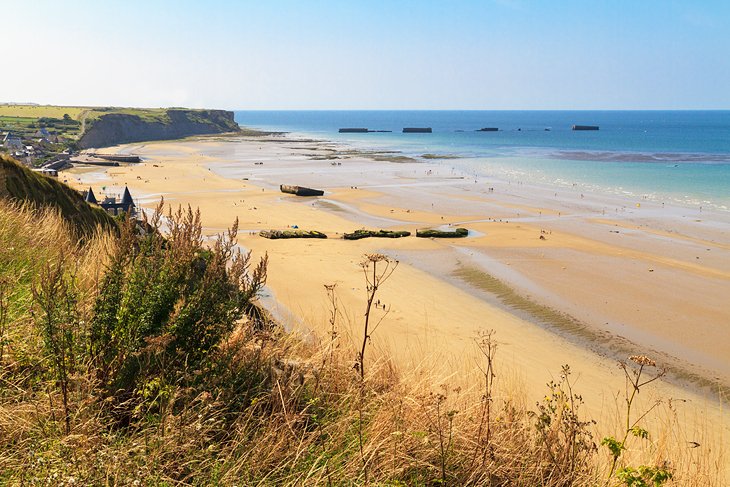
The lack of large harbors along this stretch of the Normandy coast was both a plus and a minus to the allied forces. While it allowed them the element of surprise because the Germans thought they wouldn't try a massive landing here, it also created the problem of how to get men and heavy equipment ashore on soft sand beaches and marshes that were both open and heavily defended.
The allied answer was to construct a massive artificial port. Huge concrete caissons were towed across the channel and sunk offshore to create a breakwater and a harbor inside its protection, where long floating roads were assembled to offload tanks and equipment. Remains of this Mulberry Harbor can be seen today at Arromanches, where British forces landed under brutal fire.
Despite heavy casualties, by 4pm on June 6, British tanks began rolling ashore here. Although one of the two Mulberry Harbors was destroyed in a storm, by the time it was replaced by the liberation of the Port of Cherbourg, more than 500,000 tons of equipment and supplies had entered this artificial port.
The D-Day Museum not only pays homage to the British forces and the other allies in the Battle of Normandy, but it illustrates the operation of the Mulberry Harbor through working scale models, complete with animated details such as rising and falling tides. Just west of Arromanches, at Longues-sur-Mer, you can visit sections of the Atlantic Wall, including a battery with a German range-finding post and four casemates, each of which housed a 150-mm artillery piece.
Address: Place du 6 Juin, Arromanches
Official site: http://www.musee-arromanches.fr
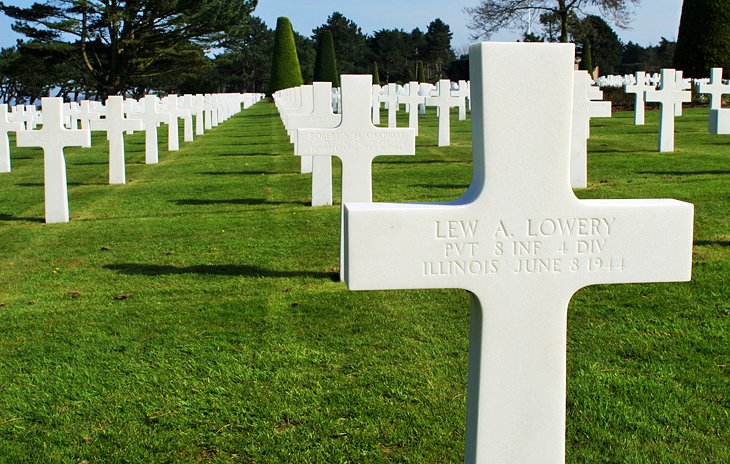
The landing at Omaha Beach went badly from the start and by the end of June 6, the Americans had lost 3,000 men, with as many more wounded or missing. But they had secured a narrow corridor to get supplies and equipment ashore.
It is fitting that this scene of so many casualties should be the location of the American Cemetery, where 9,386 graves are marked with perfectly aligned white marble headstones. You can also visit the Memorial, the Garden of the Missing, and a viewing platform that overlooks Omaha Beach.
In the Overlord Museum, 10,000 artifacts including vehicles, tanks, and cannons are used to create realistic life-sized replicas of scenes from the D-Day landings and the subsequent operations culminating in the liberation of Paris.
Giving it a human dimension are accounts, stories, impressions, and objects from those events. Sound and light effects add to the authentic equipment and artifacts, making the reconstructed scenes even more realistic. The museum is well-suited for younger visitors, with exhibits and programs that make history understandable.
Address: Rond-point d'accès du Cimetière Américain, Lotissement Omaha Center, Colleville-sur-Mer
Official site: www.overlordmuseum.com
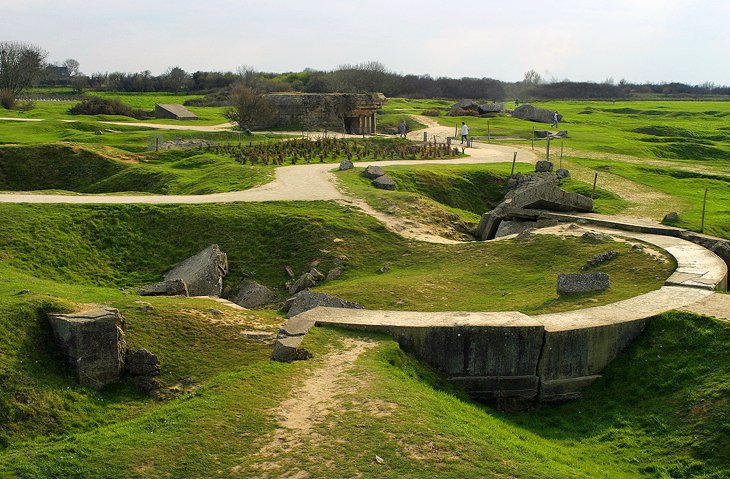
Although the magnitude of the invasion, the difficulty of the highly defended terrain, and its tremendous cost in human lives will strike you again and again as you tour these beaches, one of the most gripping relics of D-Day is atop the soaring cliffs of Pointe du Hoc. The entire clifftop is pocked with bomb craters, and huge batteries lie askew where they were exploded off their foundations.
Stand at the top of the rough 100-foot cliffs and imagine the US Rangers who scaled them after landing on the narrow beach below at 6:40am on June 6. The scene has been left as it was and is an official war grave for the men who still lie beneath the ruins.
This point was important because it was the highest land between Omaha and Utah beaches and could thus fire upon both of them. In fact, its long-range guns had been moved elsewhere, but the allies had no way of knowing this.
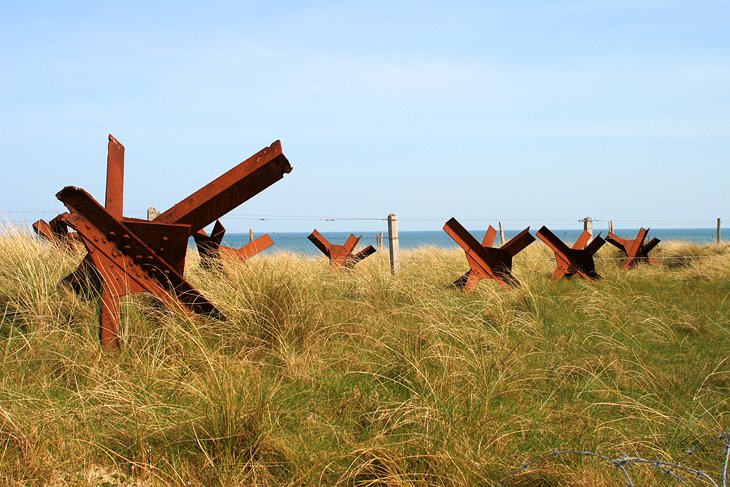
All things are relative, and measured by the tremendous casualties elsewhere, Utah Beach was almost easy. By the time the 4th Infantry hit the beach at 6:30am, the tide was low, and bombers and artillery from ships offshore had already battered the German coastal defenses and disabled much of their firepower.
This reduction in enemy fire secured their landing during low tide, creating conditions that made it possible to safely land all but two tanks by revealing the placements of "Czech Hedgehogs," "Rommel's Asparagus," and other landing obstacles, some of which you can still see in the dunes. By 1pm, the American 4th Infantry had joined up with the airborne units inland to secure the area.
A former bunker of the Atlantic Wall has been incorporated into the Museum of the Landings, where you can see one of only six remaining original B26 Marauder bombers and an LVT-2 Water Buffalo, the landing craft used to offload supplies from the cargo ships off the coast.
The exhibits are especially well designed to illustrate not just the operations at Utah Beach, but the entire Operation Overlord, and some pieces of equipment are accompanied by videos demonstrating how they worked. Among the several monuments here is Milestone 00, marking the beginning of Liberty Road , and commemorating the route of Allied forces from the Normandy beaches to Bastogne, Belgium.
The nearby Crisbecq Battery Museum is a semi-open-air museum set in 21 German bunkers that were part of the Atlantic Wall guarding Utah Beach. They were (and are) linked by a network of trenches, and some of the bunkers contain dioramas showing life in the battery.
Address: Plage de la Madeleine, Sainte Marie du Mont
Official site: http://www.utah-beach.com
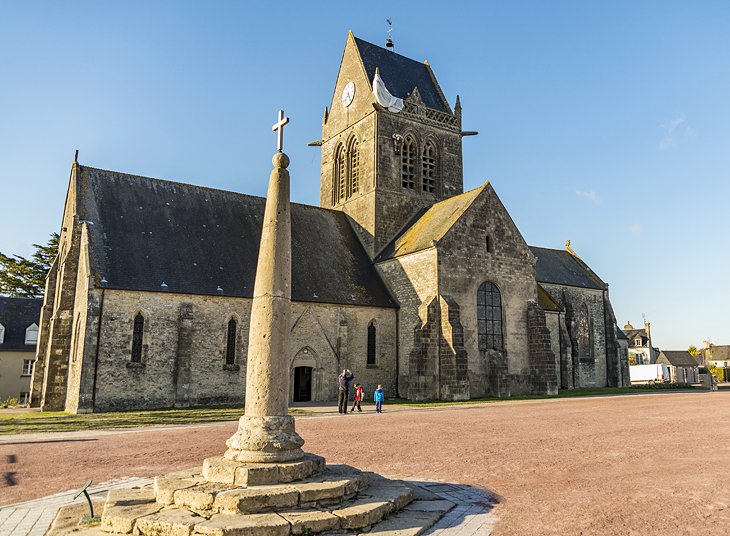
Inland from Utah Beach, and crucial to the success of the entire operation, paratroopers of the 82nd and 101st Airborne Division began the invasion well before dawn in and around the town of Sainte-Mère-Église. Like their British counterparts at the eastern edge of the invasion target, their job was to establish a western line to protect the liberated territory from being retaken by German ground forces.
The dramatic story of their dangerous mission is well told in the Airborne Museum, which re-creates some of the experiences of both the landing assault and the townspeople, as Sainte-Mère-Église became the first town in Normandy to be liberated. It was 4:30am when the American flag was raised over Sainte-Mère-Église, 15 minutes before the capture of the Merville Battery securing both ends of the landing zone.
The town's church still re-creates the scene villagers awoke to, with paratrooper John Steele suspended from his parachute on the church roof. Steele's medals, memorabilia from several generals and others who took part in the operation, and a C-47 Dakota used in the drops add to the collection of original artifacts used to immerse visitors in the reality of this historic assault that set Operation Overlord in motion.
Address: 14 rue Eisenhower, Sainte-Mère-Église
Official site: www.airborne-museum.org
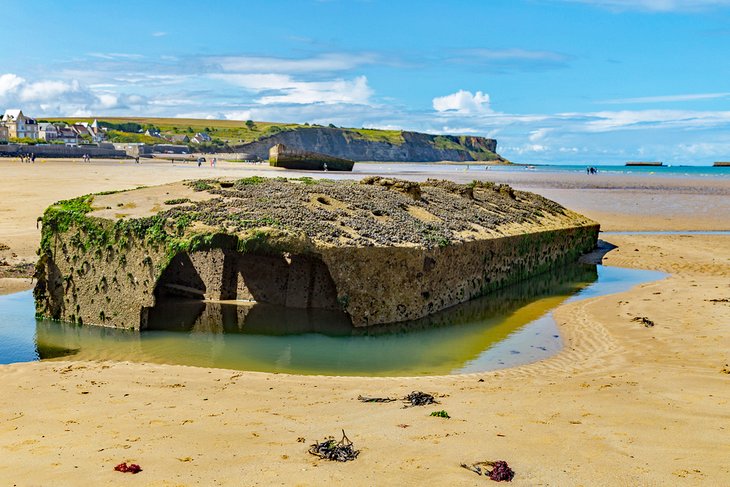
East of Arromanches, a series of beaches code-named Gold Beach stretches for five miles toward Courseulles-sur-Mer and Juno Beach. It was one of the hardest-won beaches, captured late in the afternoon of June 6 by units of the British 50th Infantry Division. Joining with the Canadian landing forces to the east, the combined forces were able to liberate Bayeux the following day.
Overlooking Gold Beach, just outside the village of Ver-sur-Mer, the British Normandy Memorial was dedicated on June 6, 2021. It records the names of all those men and women under British command who lost their lives in Normandy between June 6 and August 31, 1944. Dioramas and other exhibits at the Musée America Gold Beach in Ver-sur-Mer detail the landing and fight to control the beaches.
Address: 2 place de l'Amiral Byrd, Ver-sur-Mer, Normandy
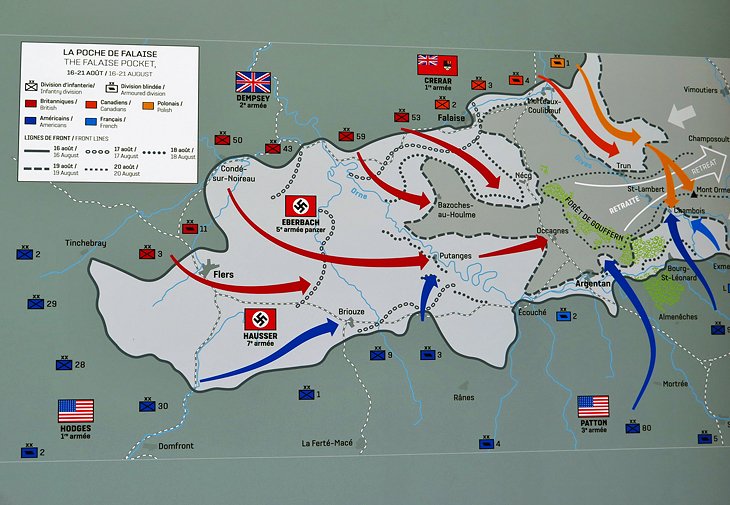
South of Caen and some distance from the landing beaches, Falaise had the misfortune of finding itself in the middle of a key Allied maneuver to trap retreating German troops in the weeks following D-Day. And it is the site of the newest museum of World War II, opened in 2016 to explore the experience of civilians during the German occupation, under the Vichy government, during the allied attacks, and after liberation.
The modern museum uses video interviews with people who lived through these events, along with photographs and often touching artifacts showing such things as propaganda for school children and chronicling the fates of resistance fighters and Jewish families. All audio and signage is also in English. A sound theater recreates scenes from the bombing of Falaise, its glass floor hovering over wartime ruins uncovered during the renovation of the building.
The museum also details the significance of the " Falaise Pocket, " where the last remaining German forces stood between the allied troops and Paris. Despite his armies being almost surrounded near Falaise and badly depleted, Hitler would not allow his commanders to withdraw through the slim corridor they still controlled.
Instead, he ordered them to attempt a counter-offensive. It failed, and their escape route was closed. Two days later, allied troops liberated Paris. The Battle of the Falaise Pocket was the final and decisive conclusion of the Battle of Normandy.
The museum is adjacent to the magnificent Falaise Castle , birthplace of William the Conqueror, well worth seeing while you're in Falaise.
Address: 12 Place Guillaume le Conquérant, Falaise
Official site: http://www.memorial-falaise.com
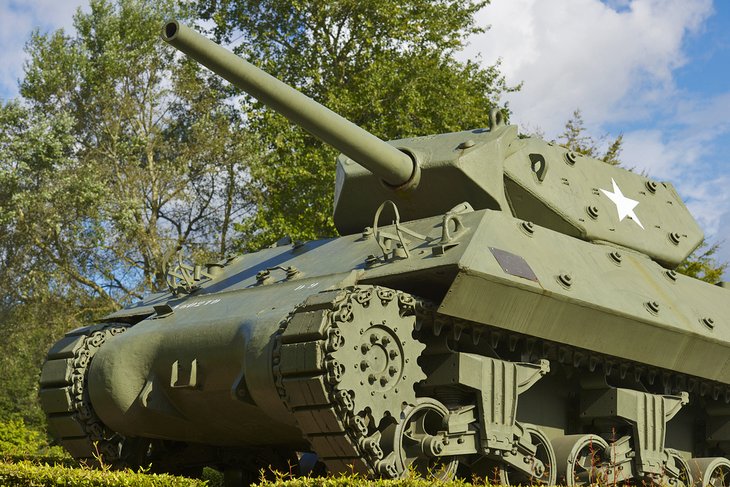
Recounting the Normandy Campaign from the Allied troop preparations to D-Day on June 6th, 1944 and the liberation of Paris on August 25 th , the 2,300-square-meter exhibition includes military equipment used on the landing beaches, as well as an excellent film "Normandy 44, a Decisive Victory in the West." This film, combined with the exhibits, puts Normandy's place in deciding the outcome of the war in the perspective of operations elsewhere, but deals mainly with Normandy's pivotal role.
While in Bayeux, be sure to see its best-known tourist attraction, the UNESCO inscribed Bayeux Tapestry , an 11th-century masterpiece of medieval embroidery depicting the story of the conquest of England in 1066 by William the Conqueror.
Address: Boulevard Fabian Ware, Bayeux
- Planning Your Trip : The main sites are between Pegasus Bridge, in Bénouville to the east, and Sainte-Mère-Église on the western end, and it makes sense to visit them in geographical order. The coastal road connects a whole series of beach towns, or if you are just visiting the main sights, you can reach them from a base in either Caen or Bayeux.
- Timing Your Visit : How long you should stay depends on how much time you plan to spend in various museums. While some of the material in the museums repeats, each one focuses on a particular landing site, event, invasion force, or part of the strategy. Be aware that some of the smaller museums close in the winter, usually from November through April. Most of these sights are today lively beach towns, with plenty of other things to do, especially in the summer.
- Visiting with Children and Teens : While young eyes may quickly glaze over at the details of the landings, a few of the more visual sights will bring the history to life. Begin at the Caen Memorial Center, where the film sets the stage for what they'll see later. Other sites with good visual appeal are Pégasus Bridge, where there's a full-size replica of a glider and the Atlantic Wall Museum, housed in a real 52-foot-high concrete bunker, showing the daily life and work of German soldiers as they directed the German fire. The Centre Juno Beach has hands-on exhibits and films, and kids can climb through ruined bunkers on the beach.
More Related Articles on PlanetWare.com
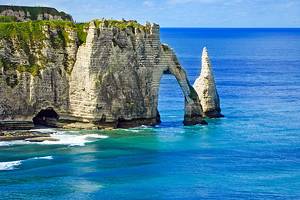
More Places to Visit in Normandy: While visiting the D-Day landing beaches, you are sure to be struck by the lovely countryside and coastline, which you can explore easily with our page on the top-rated attractions and places to visit in Normandy . You will also find our page on the top tourist attractions in Rouen and easy day trips handy in planning your trip, as well as our insider's guide to visiting Mont Saint Michel , on the western coast of Normandy.
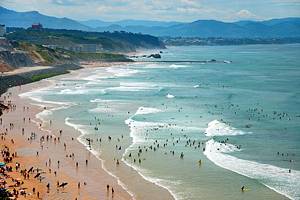
Places to Visit in France: To see more of the nearby tourist attractions of France , you can use our page on places to visit in Brittany . Like Normandy, Brittany is where you'll find some of the most beautiful beaches in France.

More on France

National Geographic content straight to your inbox—sign up for our popular newsletters here

A World War II reenactor plants a flower in the sands of Normandy's Utah Beach, one of the five landing areas of the D-Day invasion of France on June 6, 1944.
In honor of D-Day, here’s how to visit the Normandy coast
Seventy-five years later, traveling to the beaches where Allied forces began the liberation of France is still a deeply moving experience.
On a summer day, it’s impossible to imagine the bloody mayhem that erupted along the tranquil Normandy coast early on June 6, 1944. But reminders of D-Day— Operation Overlord —are everywhere, from the crumbling concrete bunkers and gun emplacements of the Third Reich’s vaunted Atlantic Wall to the graveyards of so many Allied soldiers.
Most of the invasion force–three U.S. divisions, two British, and one Canadian–sailed from Portsmouth in England to land at a chain of beaches in France , now known as the Côte du Calvados, between Cherbourg and Le Havre . From these beachheads, designated Utah, Omaha, Gold, Juno, and Sword, they were to fight their way inland through Normandy to Paris . ( See vintage photos that honor the resting place of D-Day's fallen heroes. )

An elite battalion of U.S. Army Rangers bravely scaled the 100-foot promontory here at Pointe du Hoc, overlooking the English Channel.
Start halfway along the Côte du Calvados in the small town of Arromanches, which saw some of the fiercest fighting and is now home to two museums that give insight into the battle. The D-Day Museum in Arromanche stands next to the site of one of the floating Mulberry harbors that were key to the Allied breakout from the beachheads. Nearby, visitors get a glimpse into the infantryman’s hell through the high-tech presentation at Arromanches 360 , which uses archive film shot by cinematographers who went ashore with the first waves of Allied troops.
Travel six miles south to Ranville, where the Pegasus Memorial commemorates the British 6th Airborne Division, which made a daring predawn assault. The most successful operation on D-Day, the action gained the Allies crucial control of Pegasus Bridge and its sister bridge. Then continue 30 miles northeast to Bayeux, home to the famous Bayeux Tapestry and the first large town to be liberated by the Allies. It survived the war virtually unscathed.
But to gain a true sense of the meaning of D-Day, visit the U.S. military cemetery at Colleville-sur-Mer . Almost all the soldiers who lie here were young men; very many were teenagers. None of them lived to drink champagne in a free Paris.
Each year, between late May and mid-June, the D-Day landing beaches host many events to remember the Allied soldiers who liberated France. See parachute drops in period attire, historical reenactments, and parades of bagpipers and military vehicles.
Renting a car is best to see the region. Several ferries also leave daily from Portsmouth to Cherbourg or Le Havre. Plan to sail to one French port and leave from the other. Many tours with well-informed guides are available, for days and half-days, in groups or for individuals.
Introducing Nat Geo Kids Book Bundle!
Related topics, you may also like.

Photo story: tombs, turquoise seas and trekking along Turkey's Lycian Way

Coastal dips and river wading on a multi-day hike through New Zealand's Abel Tasman National Park

Where to stay in Margate, the regenerated seaside bolthole on Kent's coast

10 of the best hotels in Mumbai, from Indian opulence to Soho House socials

Beach clean-ups, biking and art bars on a slow tour of Thailand's Koh Mak island
- Environment
- Paid Content
- Photography
History & Culture
- History & Culture
- History Magazine
- Mind, Body, Wonder
- Terms of Use
- Privacy Policy
- Your US State Privacy Rights
- Children's Online Privacy Policy
- Interest-Based Ads
- About Nielsen Measurement
- Do Not Sell or Share My Personal Information
- Nat Geo Home
- Attend a Live Event
- Book a Trip
- Inspire Your Kids
- Shop Nat Geo
- Visit the D.C. Museum
- Learn About Our Impact
- Support Our Mission
- Advertise With Us
- Customer Service
- Renew Subscription
- Manage Your Subscription
- Work at Nat Geo
- Sign Up for Our Newsletters
- Contribute to Protect the Planet
Copyright © 1996-2015 National Geographic Society Copyright © 2015-2024 National Geographic Partners, LLC. All rights reserved
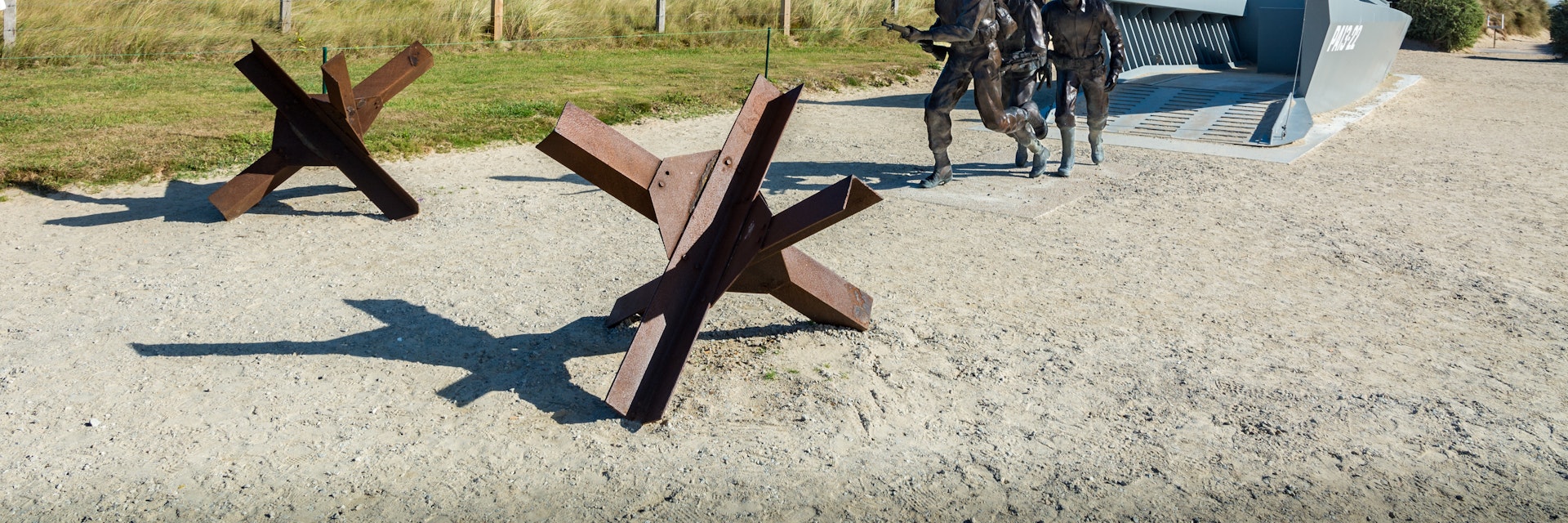
Getty Images
D-Day Beaches
Code-named ‘Operation Overlord’, the D-Day landings were the largest seaborne invasion in history. Early on the morning of 6 June 1944, swarms of landing craft – part of an armada of more than 6000 ships and boats – hit the beaches of northern Normandy and tens of thousands of Allied soldiers began pouring onto French soil.
Attractions
Must-see attractions.
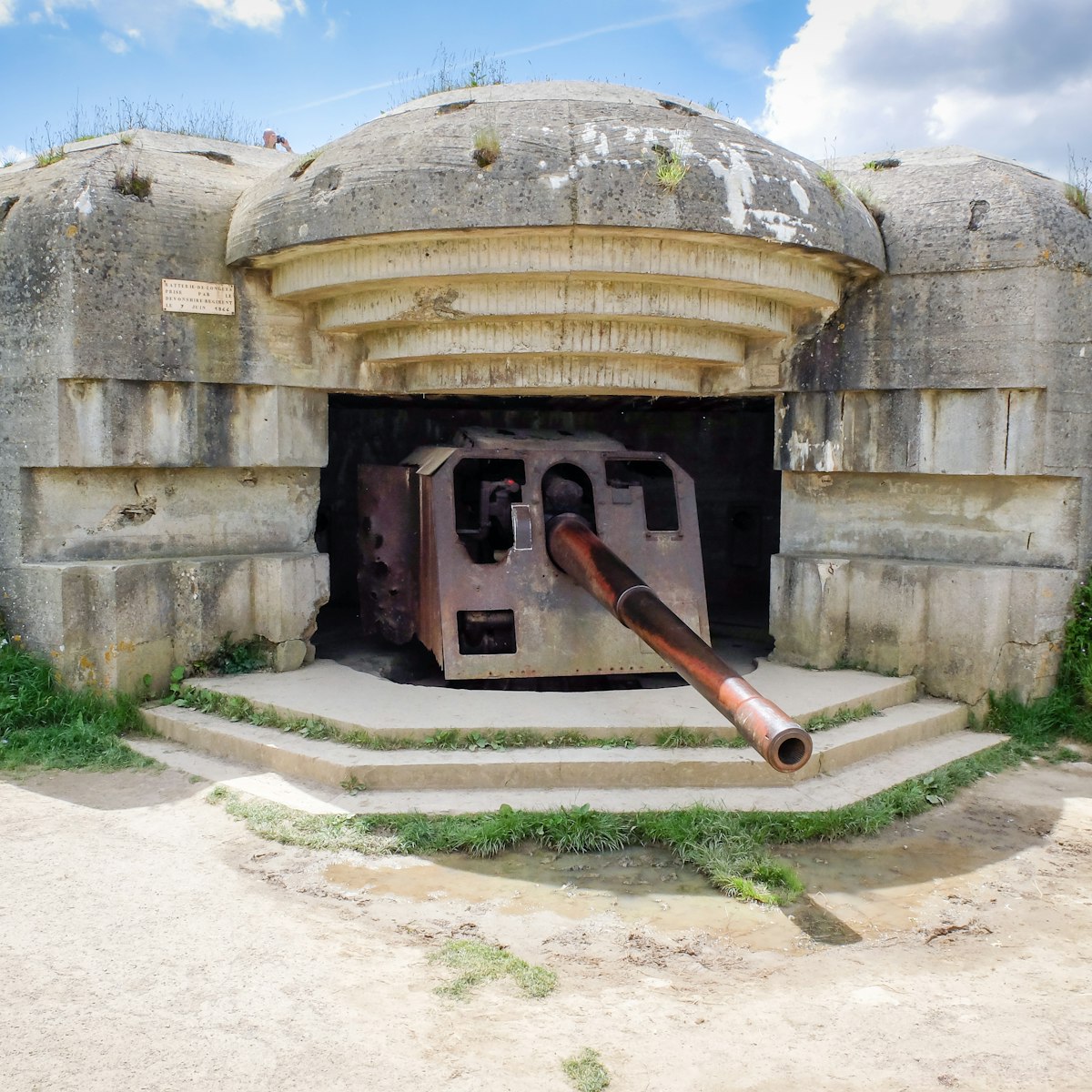
Longues-sur-Mer Battery
These mammoth German artillery pieces remain in their colossal concrete emplacements – the only in-situ large-calibre weapons in Normandy. The first…

Normandy American Cemetery & Memorial
White marble crosses and Stars of David stretch off in seemingly endless rows at the Normandy American Cemetery, situated on a now-serene bluff…
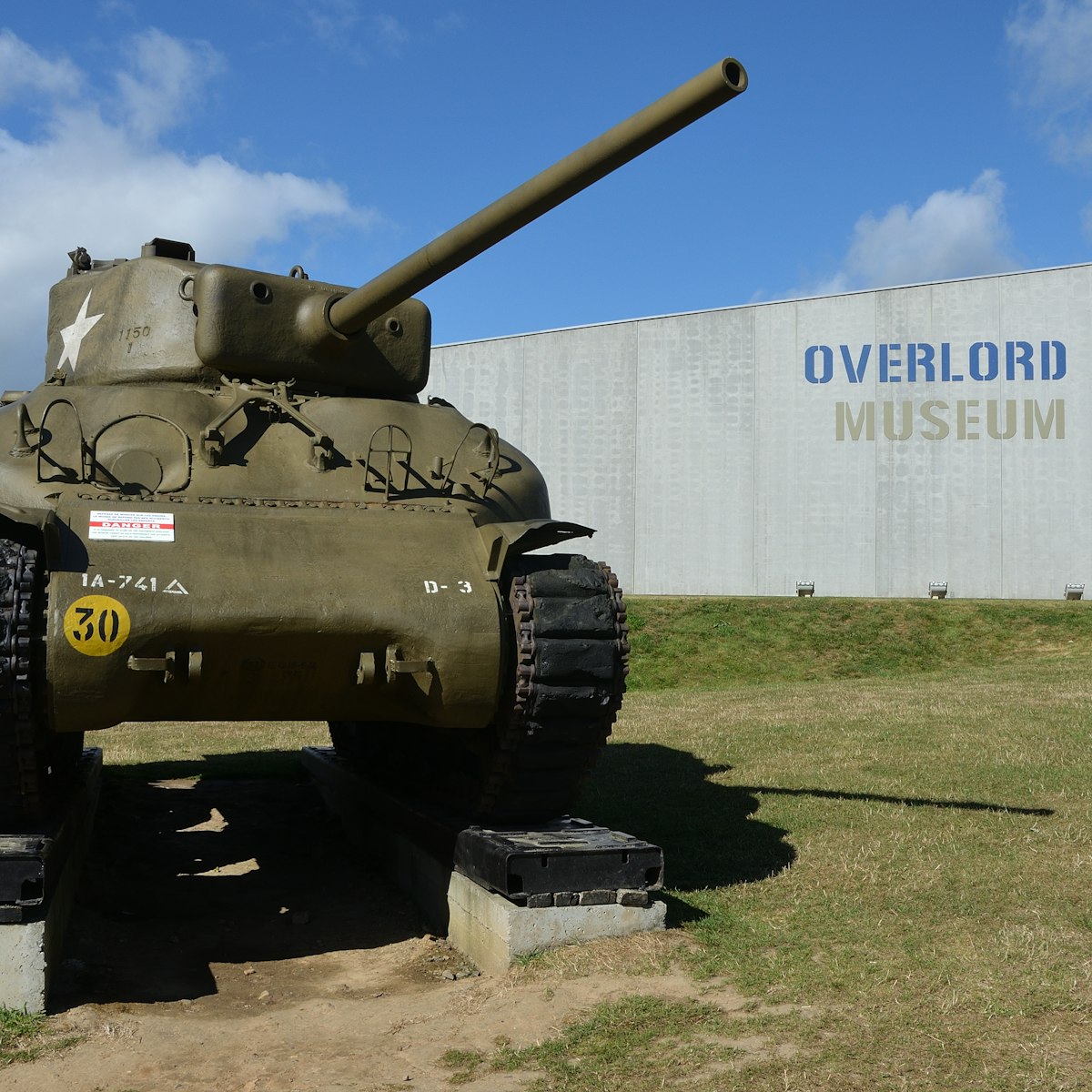
Overlord Museum
This excellent museum has an astonishing collection of restored WWII military equipment from both sides; the human dimension of the war is brought…

Pointe du Hoc Ranger Memorial
At 7.10am on 6 June 1944, 225 US Army Rangers under the command of Lieutenant Colonel James Earl Rudder scaled the impossibly steep, 30m-high cliffs of…

Juno Beach Centre
Juno Beach’s only specifically Canadian museum, the nonprofit Juno Beach Centre, has multimedia exhibits on Canada’s role in the war effort and the…

Musée du Débarquement
Down in Arromanches itself and right on the beach, the Musée du Débarquement makes for a very informative stop before visiting the beaches. Dioramas,…

Arromanches 360° Circular Cinema
The best view of Port Winston and nearby Gold Beach is from the hill east of town, site of the popular Arromanches 360° Circular Cinema, which screens…

Mulberry Harbours Caissons
The harbour established at Omaha was completely destroyed by a ferocious gale (the worst storm to lash the Normandy coast in four decades) just two weeks…
Plan with a local
Experience the real France
Let a local expert craft your dream trip.

Latest stories from D-Day Beaches
Filter by interest:
- All Interests
- Adventure Travel
- Art & Culture
- Beaches, Coasts & Islands
- Food & Drink
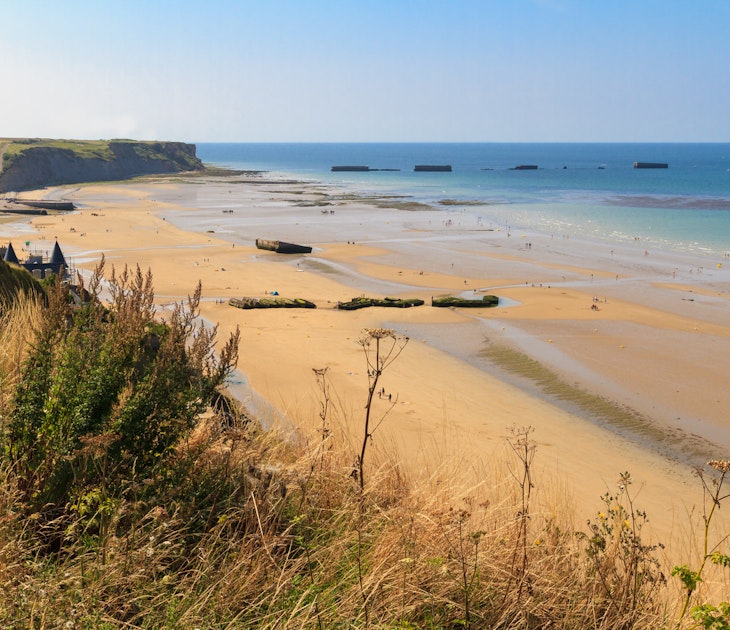
Jun 4, 2019 • 6 min read
6 June marks the 75th anniversary of the D-Day beach landings, the largest seaborne invasion in history. Early on the morning of 6 June 1944, swarms of…
- Top Destinations
- Mexico City, Mexico
- Tokyo, Japan
- Paris, France
- Rome, Italy
- London, United Kingdom
- All Destinations
- Upcoming Experiences
- Private Walking Tours
- Small-Group Tours
- Tours for Kids
- Museum Tours
- Food, Wine and Market Tours
- Newly Added Tours
- Audio Guides
- Pre-Trip Lectures
- Admin Dashboard
- My Favorites
- Cookies Preferences
- Client Orders
- Monthly Commissions
- My Advisor Profile
- Advisor Toolkit
- Guide Dashboard
Credit Balance
Transactions are based on current exchange rates and performed in USD. There maybe slight variations in the price estimates.
Visiting the D-Day Beaches: With Normandy Beach Map

Learn more about the historic Normandy Beaches during Context's Full-Day Private Tour with Private Car Service
Over one million people visit the beaches of Normandy every year to pay respects to the soldiers who lost their lives and experience the site of one of World War II’s most crucial turning points.
When was the D-Day Invasion?
D-Day, also known as Operation Overlord, was a significant event in history that took place on June 6, 1944. It marked the beginning of the Allied invasion of Normandy during World War II – which continued until July 24, 1944.
On this day, a massive amphibious assault was launched on the beaches of Normandy, France, by British, American, Canadian, and other Allied forces. D-Day represented a pivotal moment in the war, as it opened a crucial front against Nazi Germany and ultimately led to the liberation of Western Europe from the control of the Axis powers.
If you’re interested in touring this historic site, here’s what you need to know about planning a visit to the D-Day beaches in Normandy.
Can you visit D-Day Beaches?
Visitors can walk the beaches, but those inclined to learn more about history can visit dozens of nearby museums and monuments. Planning ahead will help you optimize your itinerary and ensure you get the most out of this impactful experience.
Context offers a Full-Day D-Day and Normandy Beaches Tour so you can explore key Normandy landmarks, including Normandy Landing Beaches, Pointe du Hoc, Omaha Beach, The Normandy American Cemetery and Memorial, and the Mulberry Harbour at Arromaches.
An expert on D-Day history leads the full-day tour, and it is a meaningful and educational opportunity to learn more about the events of June 6, 1944 and their impact on European liberation.

What were the 5 beaches on D-Day?
Code-named Operation Overlord, the Allied Operation included over 156,000 American, British, and Canadian troops landing on five beaches along a 50-mile stretch of coastline occupied by Germans. This meticulously planned amphibious military assault is widely considered the turning point in World War II and ultimately led to the liberation of France and the rest of Western Europe.
1. Utah Beach
Utah Beach was a last-minute addition to the plan due to its proximity to Cherbourg, a port city. Sadly, many U.S. paratroopers perished when their heavy equipment weighed them down in the flooded marshlands near the beach. Others landed outside their drop zones, but they eventually secured the beach’s only four exit points.
2. Omaha Beach
Because U.S. troops suffered massive casualties at Omaha beach, it is named the bloodiest beach on D-Day. About 2,400 U.S. troops were dead, wounded, or missing once the battle ended. Omaha beach was flanked by steep cliffs and was heavily defended, making it a perilous and devastating battle scene.
3. Gold Beach
British troops stormed Gold Beach, located in the middle of the five D-Day Beaches, about an hour after Utah and Omaha (due to the direction of the tides). While the Germans initially had a stronghold on the beach, British warships, aerial attacks, and armored vehicles proved victorious.
4. Sword Beach
Canadian and British troops invaded Sword Beach’s eastern flank and took out key bridges to prevent German reinforcements from arriving. The Germans answered with moderate fire, but the British and Canadian troops took out critical German artillery resources.
5. Juno Beach
Rough seas made for a challenging landing at Juno Beach, giving German soldiers the initial upper hand. Canadian troops faced monumental casualties as Germans fired from seaside bunkers. However, as soon as German resistance slowed, Canadians quickly advanced inland and captured several towns.

World War II Sites to Visit in Normandy
Did you know that D-Day was only the beginning of the Allied Invasion of Normandy? For twelve more weeks after June 6th, Allied forces continued to fight . Normandy played a large role in World War II, so it's no surprise that history buffs flock to the area to see the many significant locations across this region firsthand.
Omaha Beach
The serenity of Omaha Beach today starkly contrasts the violent scene that occurred here nearly 80 years ago. Visitors walk the coastline and honor those who lost their lives in a wartime battle that lives in infamy.
Visitors can also see remnants of the artificial harbor constructed by the Allies, known as Mulberry Harbour, and view the German bunkers and fortifications that remain on the beach. There are also several museums in the area, including the Omaha Beach Memorial Museum.
Normandy American Cemetery
Just beyond Omaha, the Normandy American Cemetery honors the American troops who gave their lives on the D-Day beaches. It is a poignant way to pay tribute to the legacy of those U.S. troops who never had the opportunity to return home.
Each of the 9,386 headstones contains the name, date of death, service unit, and country where he volunteered, except for the 307 who have no name. There is also a monument to the 1,557 servicemembers whose mortal remains were lost.
Caen Memorial Museum
As you make your way across the D-Day sites, plan a visit to the Caen Memorial Museum . The Museum focuses on the Battle of Normandy and 20th-century history, offering visitors unique insights into the events that marked World War II.
With a range of exhibits that provide a glimpse into the wartime life of troops and civilians, the Museum offers multimedia experiences, films, and a firsthand look at personal items from soldiers.
Arromanches-les-Bains
Today, this picturesque town is known as a seaside resort, but its coast, Gold Beach, played a major role in the Normandy landings.
Gold Beach was one of the beaches designated to receive man-made landing harbors on D-Day, also known as Mulberry Harbours. The harbors were specially created to float across the English Channel and serve as temporary harbors on D-Day. Many of the large concrete blocks remain in Arromanches today as a reminder of its significance to World War II.
Longues-sur-Mer
Longues-sur-Mer was a battery built by the German navy and strategically positioned between the Omaha and Gold Beaches. On D-Day, Longues-sur-Mer was the site of an extended gunfight between the Allied fleet and the Germans. British troops eventually landed at Gold Beach and captured both the position and the surviving German soldiers.
Visitors today can see the original cannon and take in the view from the firing command. Longues-sur-Mer is one of the best-preserved World War II sites anywhere in France, giving visitors an unparalleled view not just of the Bay of Seine, but of what life was like on that fateful day in 1944.
Map of D-Day Beaches
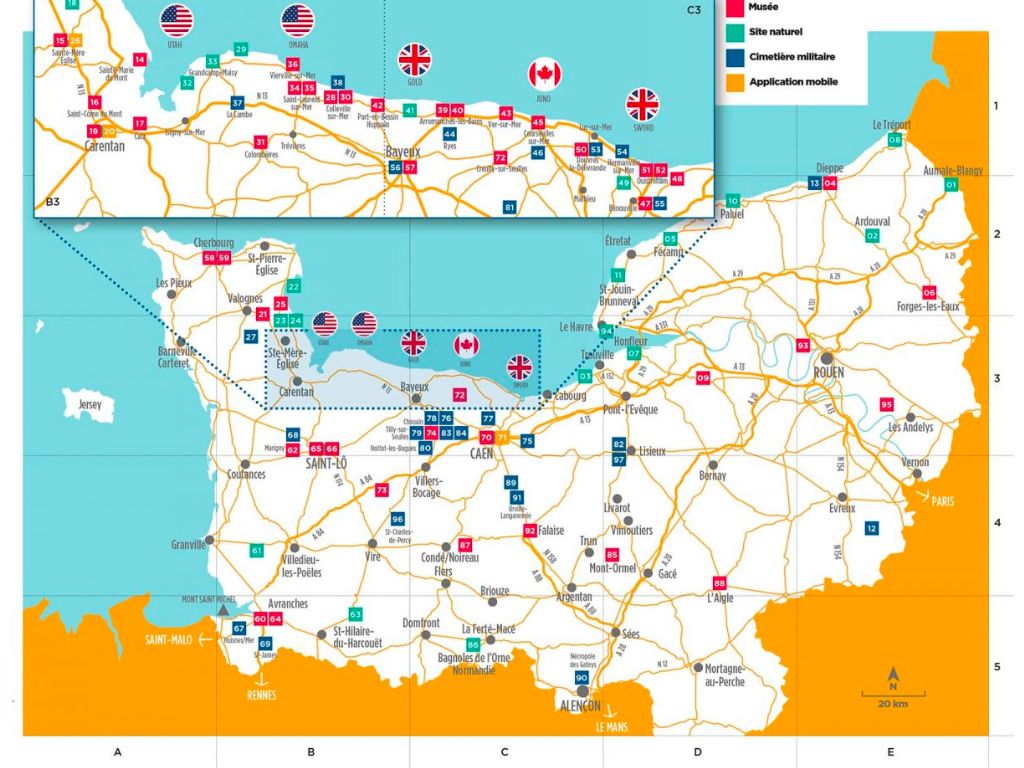
Each beach has its own unique history, and as you examine the map you’ll gain a deeper understanding of the scale and scope of this historic operation.
To look at a Normandy Beach map is not just a lesson in geography; it’s a lesson in understanding what happened on June 6, 1944. Looking at the map, you can imagine the struggles, triumphs, and heart-wrenching losses suffered on the sand.
Whether you’re zooming in for a closer look at each beach’s remaining craters, or as you stand in person on the hillside above a neverending sea of white headstones, you’ll come away with a sense of gratitude, awe, and respect for those who gave their lives on the beaches of Normandy.
Tips and Tricks for Visiting the Normandy Beaches:
- Hire a Context Tour Guide, with Private Car Service: A knowledgeable local historian can offer unique insights into each landmark’s significance to WWII and provide you with a more personalized experience. Additionally, while it is possible to visit the beaches using public transportation, it's much more convenient to rent a car and book a tour. This will give you more flexibility to explore the area at your own pace.
- Dress appropriately: Wear comfortable clothes and shoes for walking, and bring a jacket in case it gets cold or rainy. Because you will be along the coastline, wind gusts can be an important factor when planning your wardrobe.
- Pack snacks and water bottles: Weather conditions can be brutal, especially during the summer. While most museums do offer concessions, it’s important to be prepared with adequate water and snacks to keep yourself comfortable throughout the day.
- Consider visiting early or late in the day: To avoid crowds, it's best to visit the beaches early in the morning or later in the afternoon.
- Allow plenty of time: Plan to spend a full day or more exploring the Normandy beaches. There is a lot to see and learn, and rushing through the sites won't do them justice. You’ll also want to consider the seasonal tides so that you can safely walk along the beaches.
- Respect the sites: The D-Day beaches and surrounding areas are sacred places. Show respect by not littering, staying on designated paths, and not disturbing any artifacts.
- Take a moment for reflection: The D-Day beaches are solemn places that hold somber historical significance. Take a moment to reflect on the sacrifices made by the thousands of brave souls who fought and died there.

Tour the D-Day Beaches
Enhance your Normandy experience with a guided tour of the D-Day Beaches with a local expert. Our Full-Day D-Day and Normandy Beaches Tour has exclusive insights into World War II history to ensure you leave Normandy with a complete understanding and appreciation for its pivotal role in the war.
If you’re looking for other opportunities to learn more about Normandy, take our Full-Day Mont-Saint-Michel Tour and see this gravity-defying medieval monastery with an expert guide.
Learn more about the Normandy Beaches with Context Learning
Are you planning a trip to France? Check out Context’s Upcoming Online Seminars and Courses about France – which feature local experts in WWII History, Archaeology, and Art History.
Or, stream French History and Culture content instantly through Context On-Demand – hosted by the same local experts who lead our tours.
You May Also Like:
- Exploring the Coast of Normandy: Top Sites for History Lovers
- Timeline of the Normandy Invasion
- Reflections on the 75th Anniversary of D-Day
- 10 Best Day Trips from Paris
- Vive la France: Bastille Day
- How to Spend 36 Hours in Paris
Read More Stories
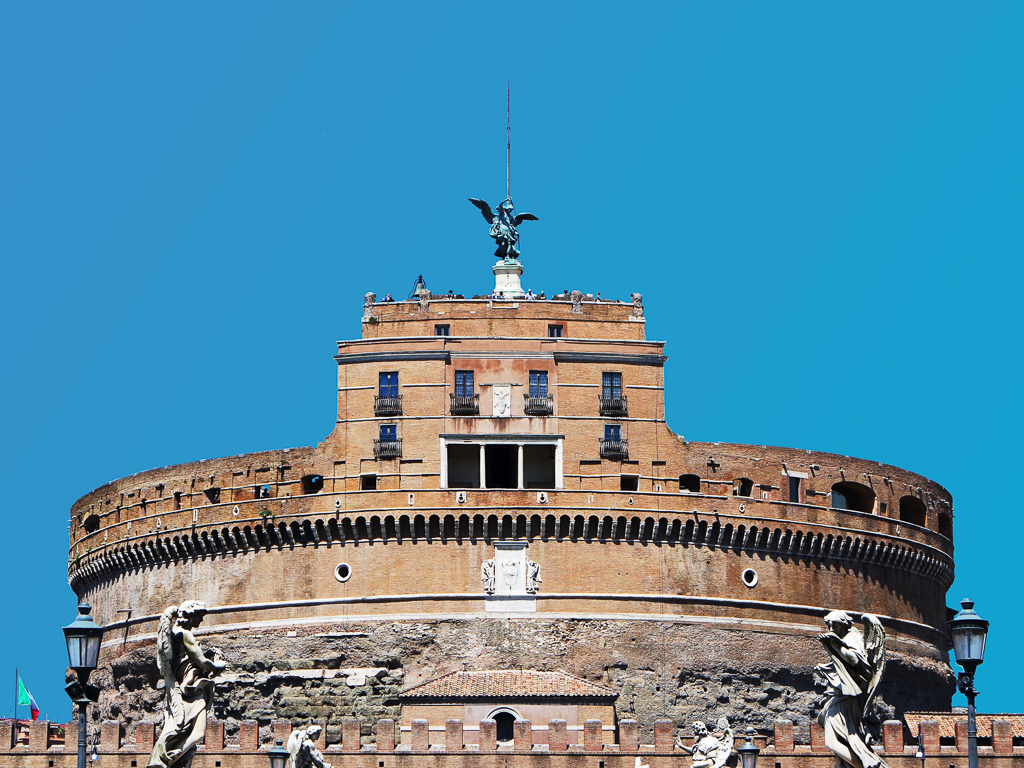
Even More from Context
Subscribe to our Newsletter
Keep Exploring

Explore Tours
Join walking tours with top experts all over the globe.
Browse Our Cities
- Our Experts
- Working with Context
- View All Cities
- Sustainable Tourism
- Refer a Friend for $50
- Travel Updates
- Advisor Login
- Expert Portal
- Privacy Statement & Security
- Cancellation Policy
Finding the Universe
Travel tales, photography and a dash of humor
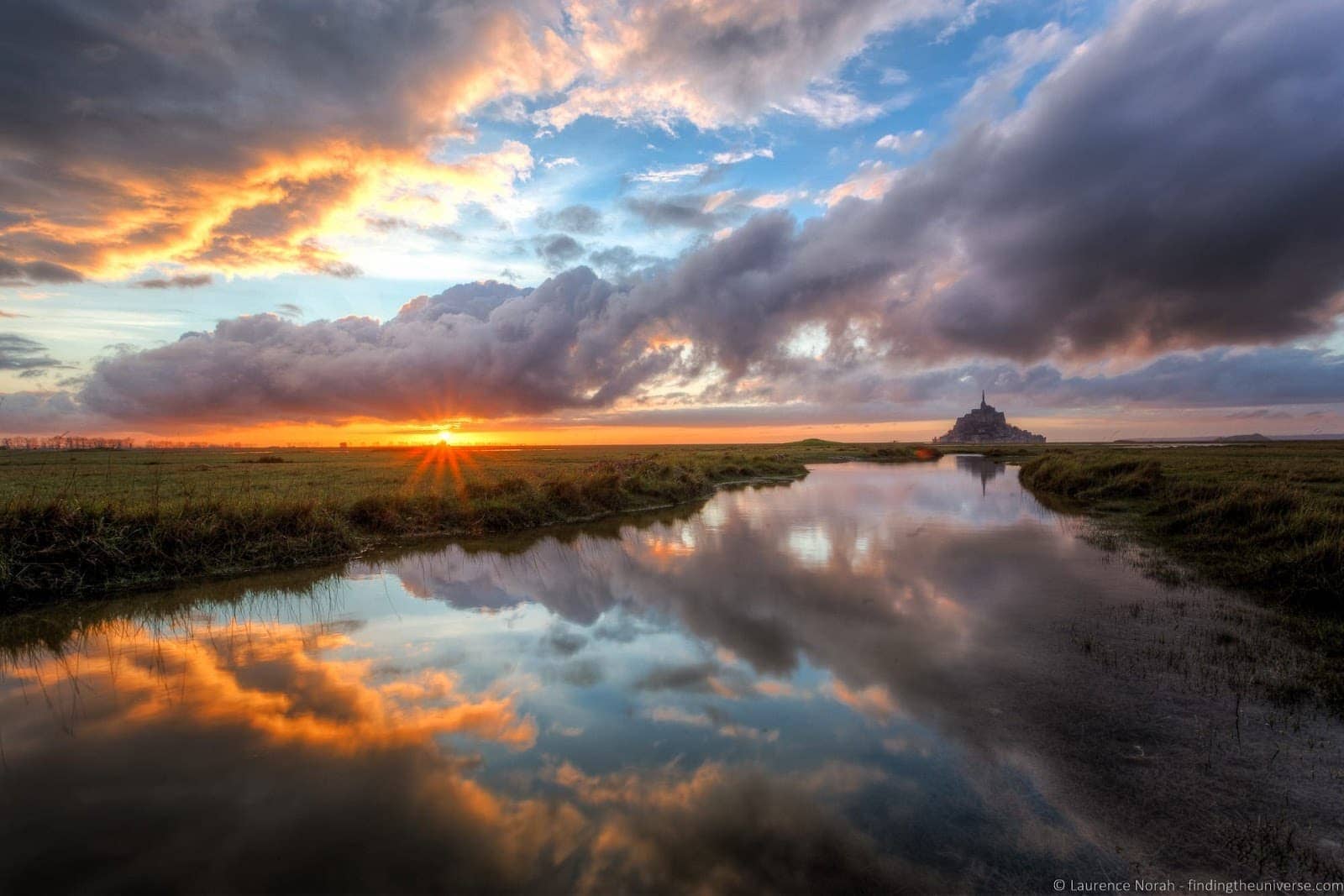
2 Days in Normandy: The D-Day Landing Beaches & Mont St. Michel
Last updated: April 19, 2024 . Written by Laurence Norah - 35 Comments
Despite living in France for three years, I didn’t do much sight seeing. So when the opportunity arose to spend 2 days in Normandy, visiting Mont St. Michel and the D-Day Landing beaches in the north-west of the country, we leapt at it.
We didn’t have a great deal of time to play with as we were visiting my parents further south in France, but we gave ourselves a couple of days in Normandy, basing ourselves near Mont St. Michel, with the aim of exploring both that and the Normandy D-Day Landing Beaches.
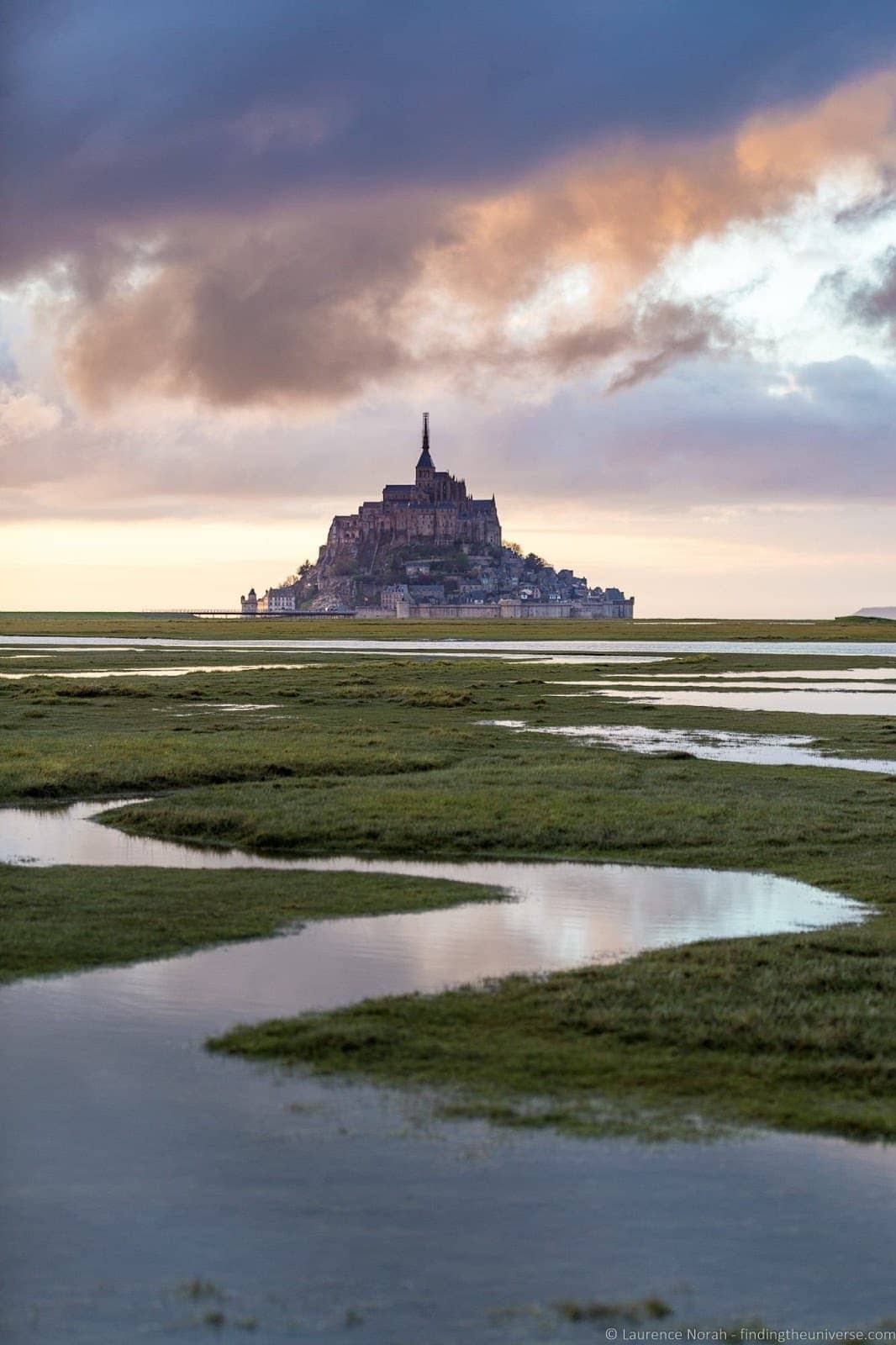
Which was what we did. In this post, we’re going to share everything you need to know to spend two days in Normandy, including some tips on where to stay.
We’ve also put some tour options together in case you don’t want to do this all yourself. The closest tour to the itinerary we have described is this one , which departs from Paris, but we have a number of options including tours departing from Bayeux.
Now though, let’s get started with our guide to exploring the Normandy Landing beaches and Mont St. Michel over two days.
2 Days in Normandy
Day 1: visit mont st. michel.
When we visited Mont St. Michel and the D-Day beaches we were travelling from the UK. We took the overnight ferry with Brittany Ferries from Portsmouth to St. Malo. This meant that we had a good night’s sleep, arriving into France at around 9am local time.
Our guest house was an hour’s drive from St. Malo, and they were fine with us arriving early, so we did just that. After dropping our belongings off and parking the car, our first day was largely spent exploring Mont St. Michel.
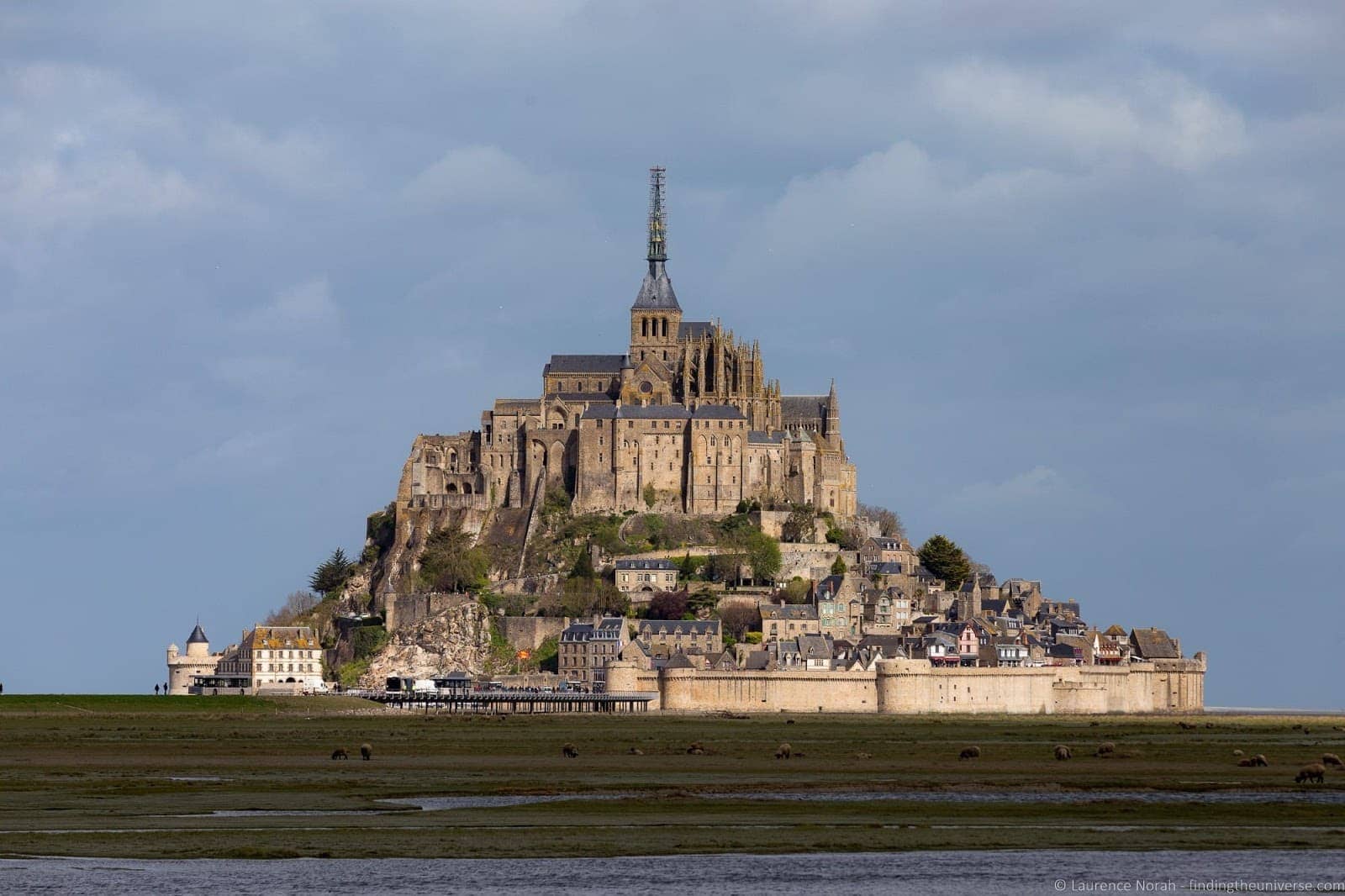
This was, very conveniently, within walking distance of our guest house . This is a handy tip – if you’re going to stay near Mont St. Michel, stay within walking distance.
There’s no way to drive to the island on your own, and if you park there’s a daily fee for doing so (unless you park in the evening when it becomes free). And I’m sure you’d prefer to spend that money on a nice bottle of local cider, or a few glasses of wine, like we did.
There is a causeway to the island, and a free shuttle bus runs from the car park to the island. However, I’d suggest that for your first visit, you walk all the way to the island. The views are gorgeous all the way, and you can really appreciate the magnificence of the island as you get closer to it. Then, you can get the shuttle bus on the way home!
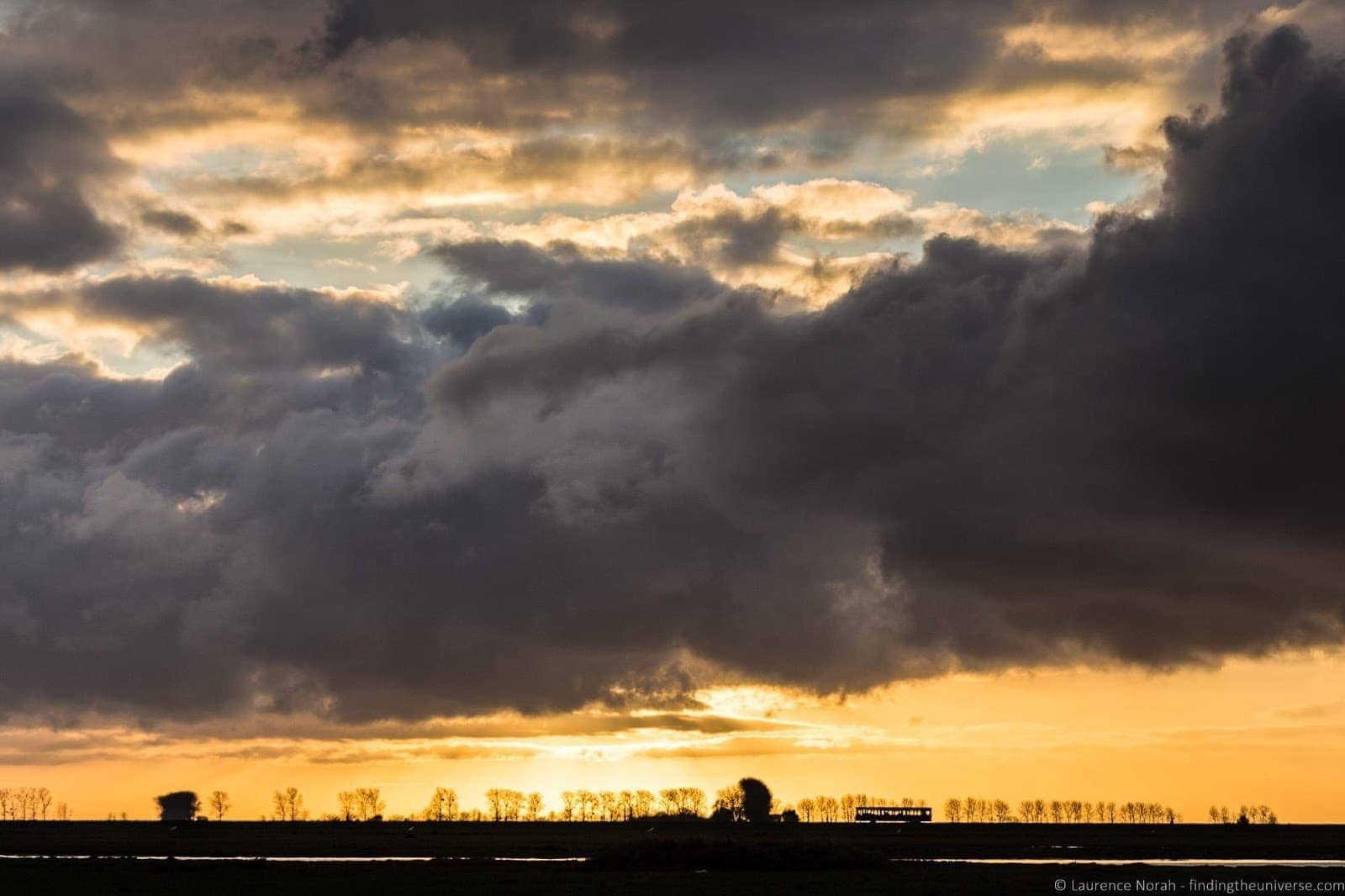
The island itself had more on it than I was expecting. There’s a whole village, with shops, two ATM’s, a number of restaurants and of course, plenty of places to buy souvenirs from your visit. There are even hotels on the island, so you can stay over and enjoy Mont St. Michel when the crowds dissipate for the night.
Speaking of crowds, the streets are narrow, so it can get crowded. We visited on a less busy than average day, and it still got tight in places, so I imagine that in summer it must be very busy!
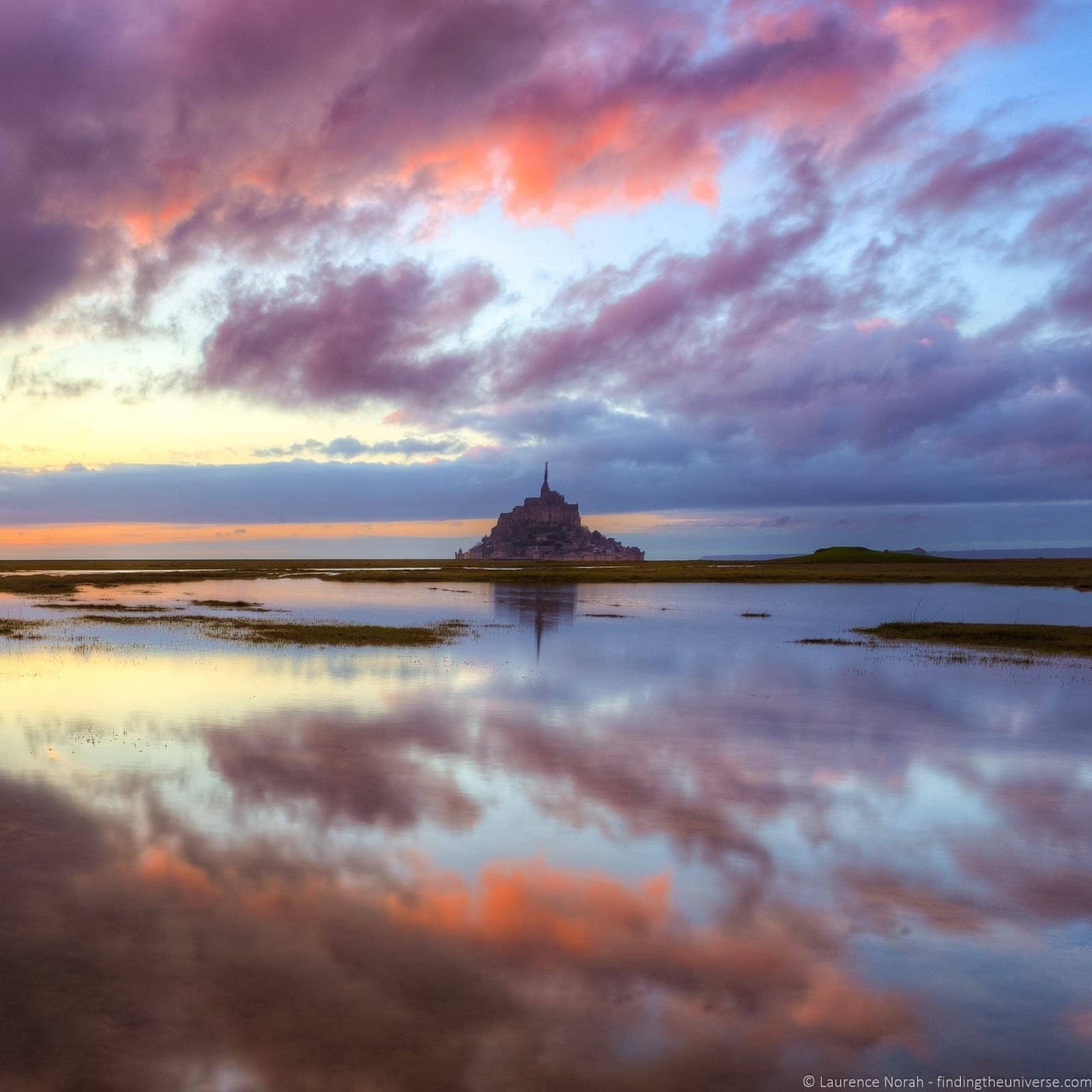
After stopping for lunch (many places do a menu of the day option for €17 – €20), we followed the street up to the Abbey which crowns the hill. This is the key point of pilgrimage for visitors, and the focal point of the island.
It’s not free to visit the Abbey, with opening hours varying depending on the season. Check the latest opening hours and prices here .
We suggest buying your ticket in advance online here to skip the queues. The online price is the same as buying it in person.
The good news is that entry includes an hour-long guided tour. Tours depart somewhat regularly and are offered in both French and English.
Obviously, we went for the English language option, and had a wonderful tour that taught us about the history of the abbey, the key events that led to its construction and look today, as well as the function of many of the rooms.
If you visit, I’d very much recommend taking the tour to learn a bit about the place. But if there is not a tour going during your visit, you can also purchase an audioguide or just do a self-guided tour with the free leaflet included.
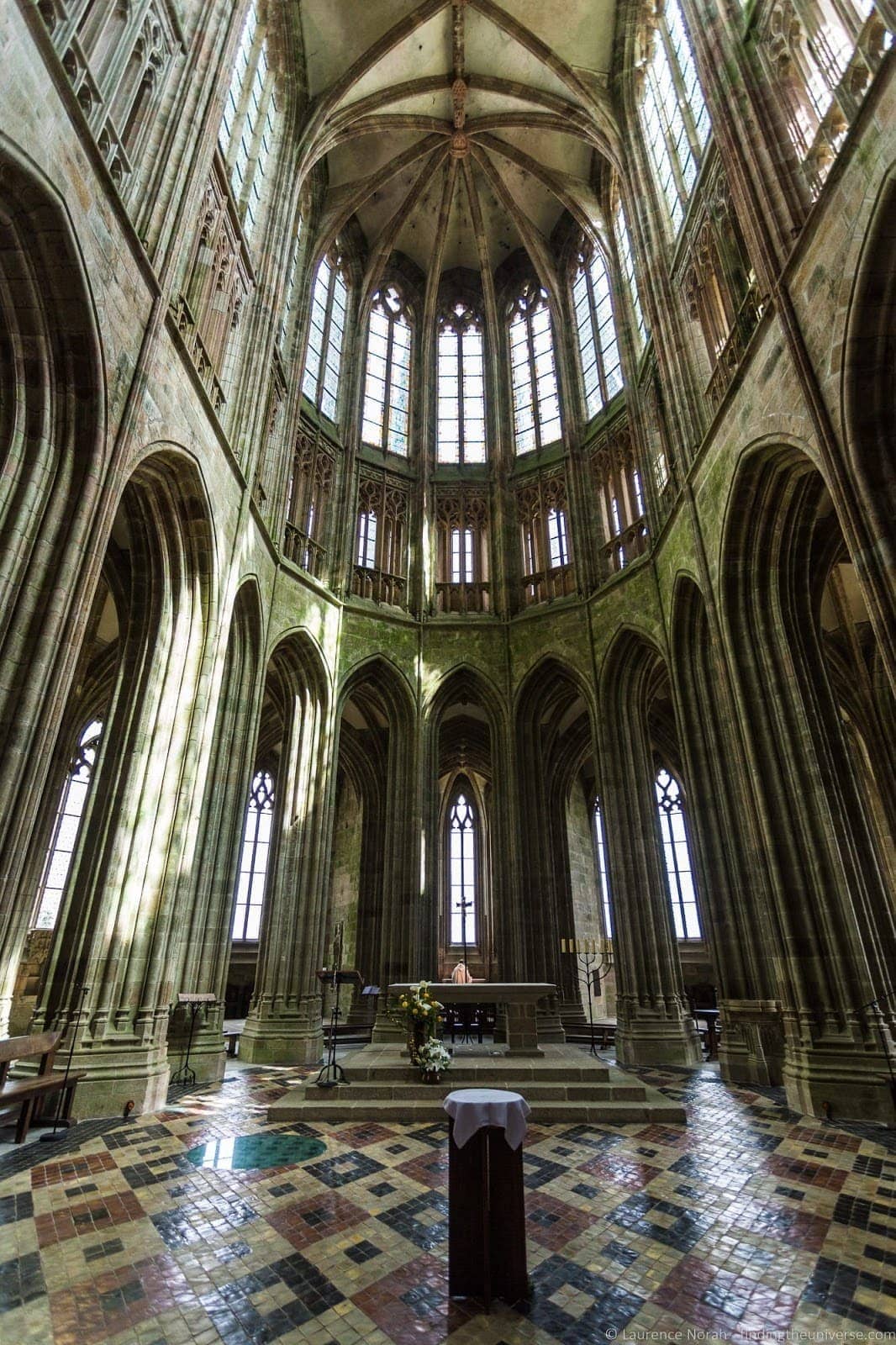
Finally, once the tour was over, we headed out of the abbey and took the bus back to the mainland, where we had a spot of dinner accompanied by some excellent Normandy cider.
I then spent the evening capturing the sunset over the Mont, which was just gorgeous. So good in fact that I went the next night as well!
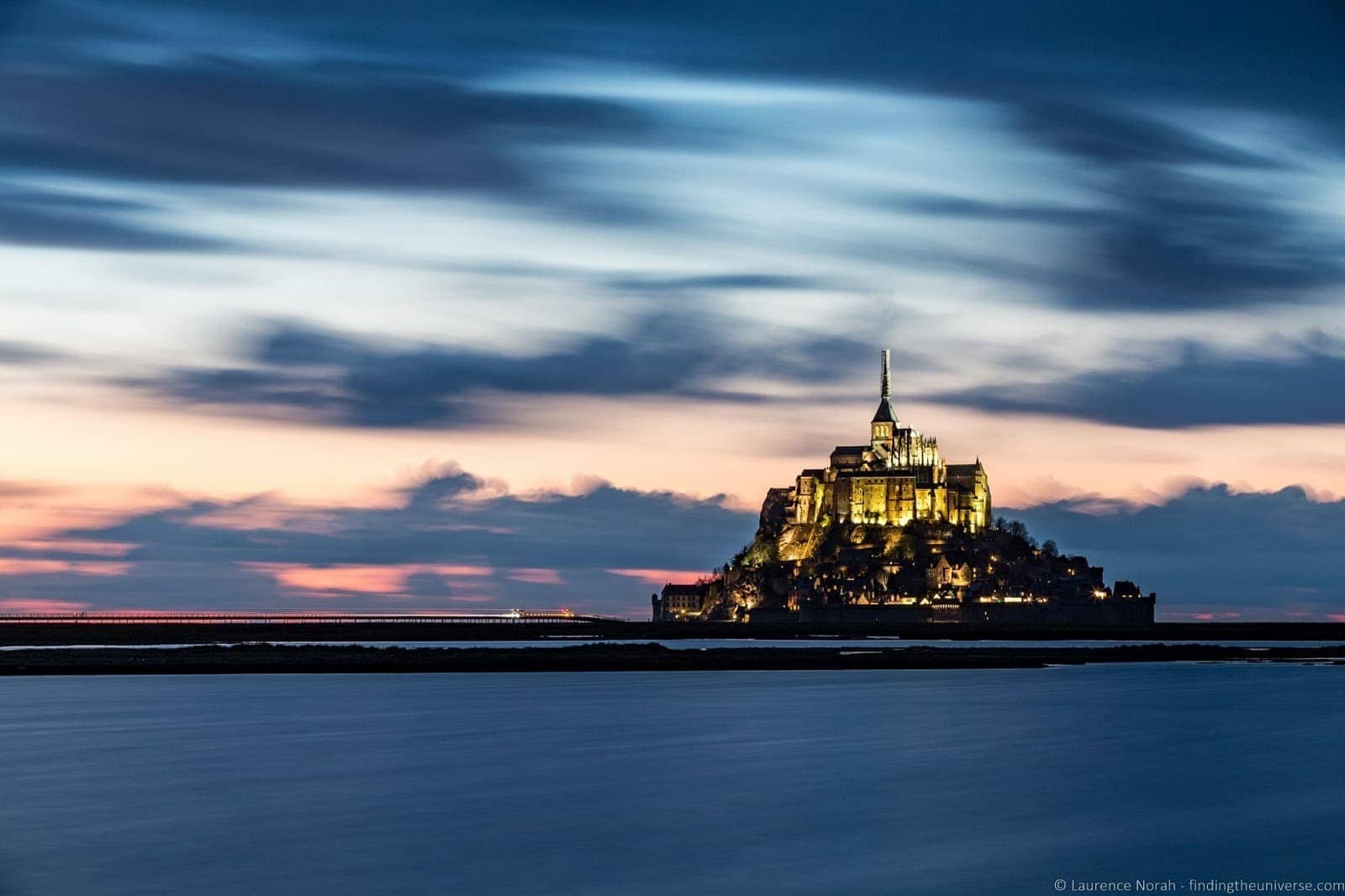
Day 2: Visit the D-Day Normandy Landing Beaches
Our second day in Normandy was a busy one. Having had a full day to explore Mont St. Michel at our leisure, we set ourselves the challenge of visiting some of the D-Day landing beaches in France.
There are quite a variety of sights, museums, memorials and attractions to visit, but we only had a day, so put together an itinerary that we felt was going to give us a good overview of the area and history. Here’s what we did, which we think makes for a good day of exploring the D-Day landing beaches and museums.
1. Utah Beach & Utah Beach D-Day Museum
We started by visiting Utah beach, where there is an excellent D-Day museum dedicated to the landings at Utah Beach.
From our research, this was indicated to be one of the best D-Day landing museums, and even though time meant we didn’t visit any of the others, it was certainly an excellent way to start our journey.
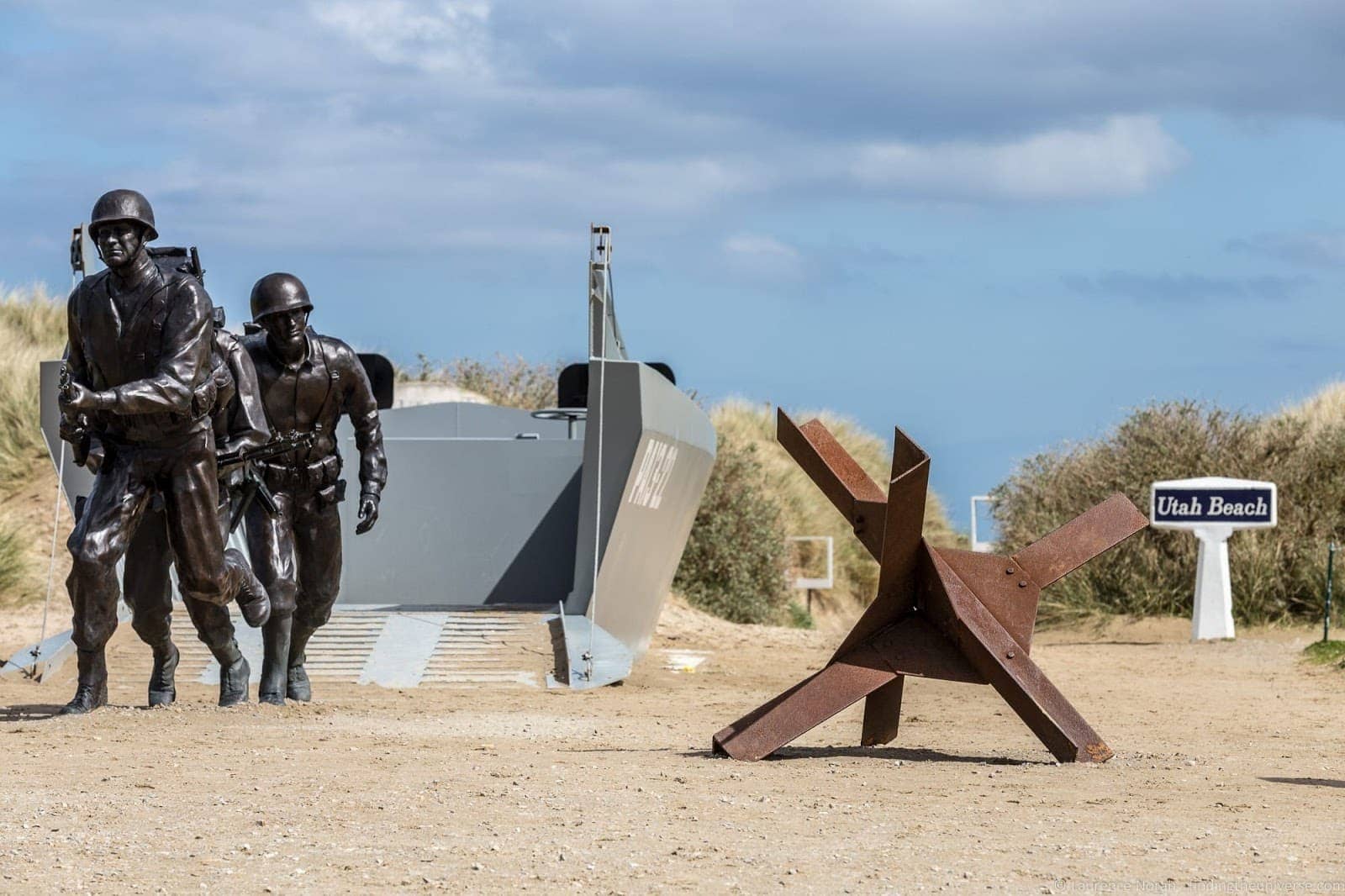
With a focus on the events at Utah Beach specifically, one of the US landing beaches, the museum went over the key highlights of 6th June 1944, including the planning leading up to it, and the story of the day itself.
There was an excellent video about the day, oral histories as well as objects and vehicles that were used.
Most impressive of these is an original B-26 bomber, one of six surviving in the world, and of the same type as those used during the bombing runs that happened in the moments before the men landed on the beach.
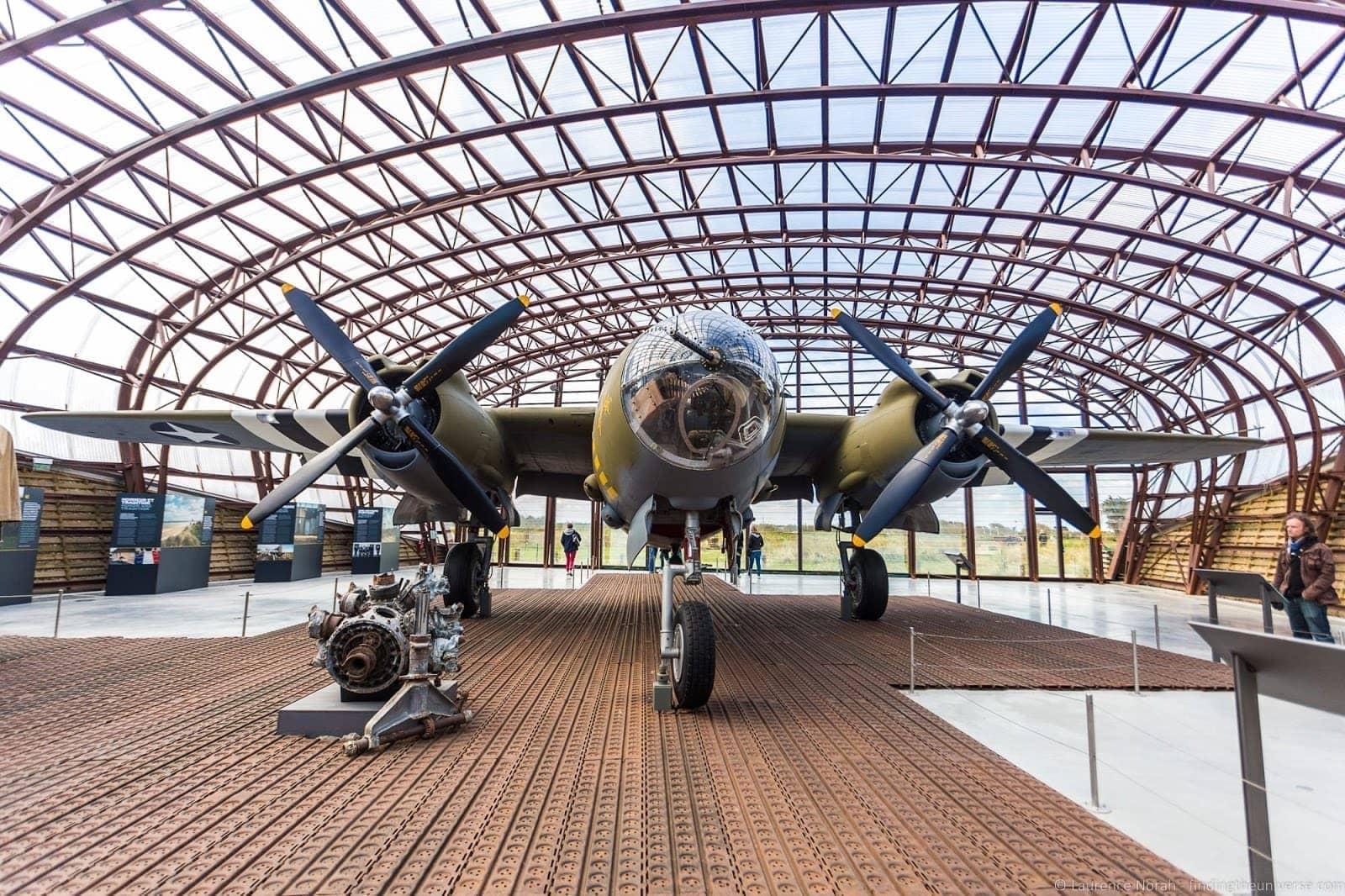
We then spent some time on the actual beach, and viewing the various memorials. It’s hard to really visualise what it must have been like here all those years ago, and I have to say that visiting the museum was a really worthwhile way to get a really good overview of how it was.
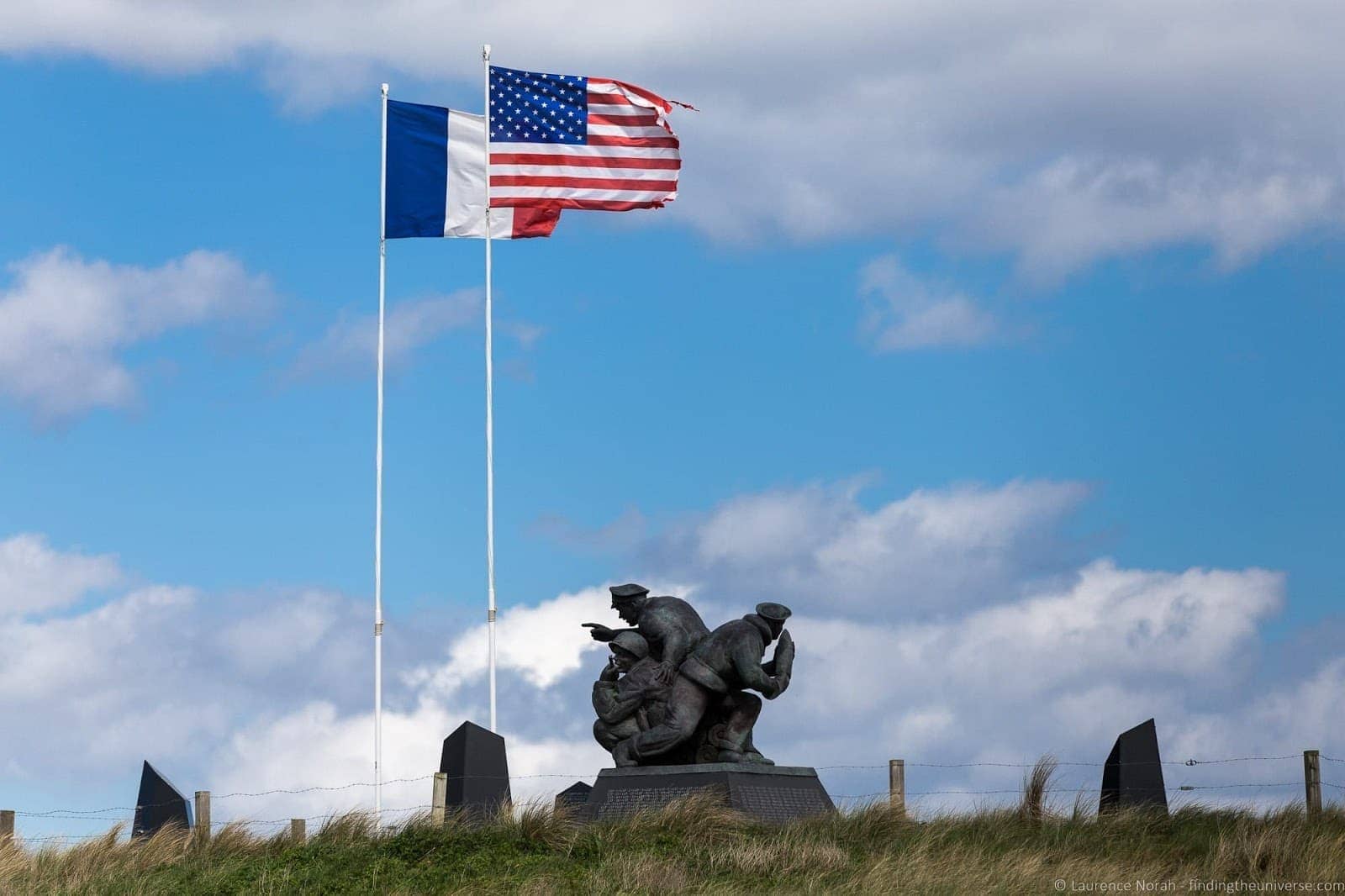
We then had a break for lunch in the wonderful Le Roosevelt Cafe, built around a bunker which housed a German communications center. Then, we headed on to:
2. Normandy American Cemetery and Memorial
Found in Coleville-Sur-Mer, and managed by the American Battle Monuments Commission, the Normandy American Cemetry and Memorial is the final resting place of over 9,000 US military personnel, the majority of whom lost their lives either during the D-Day landings, or in the days and weeks following the landings.
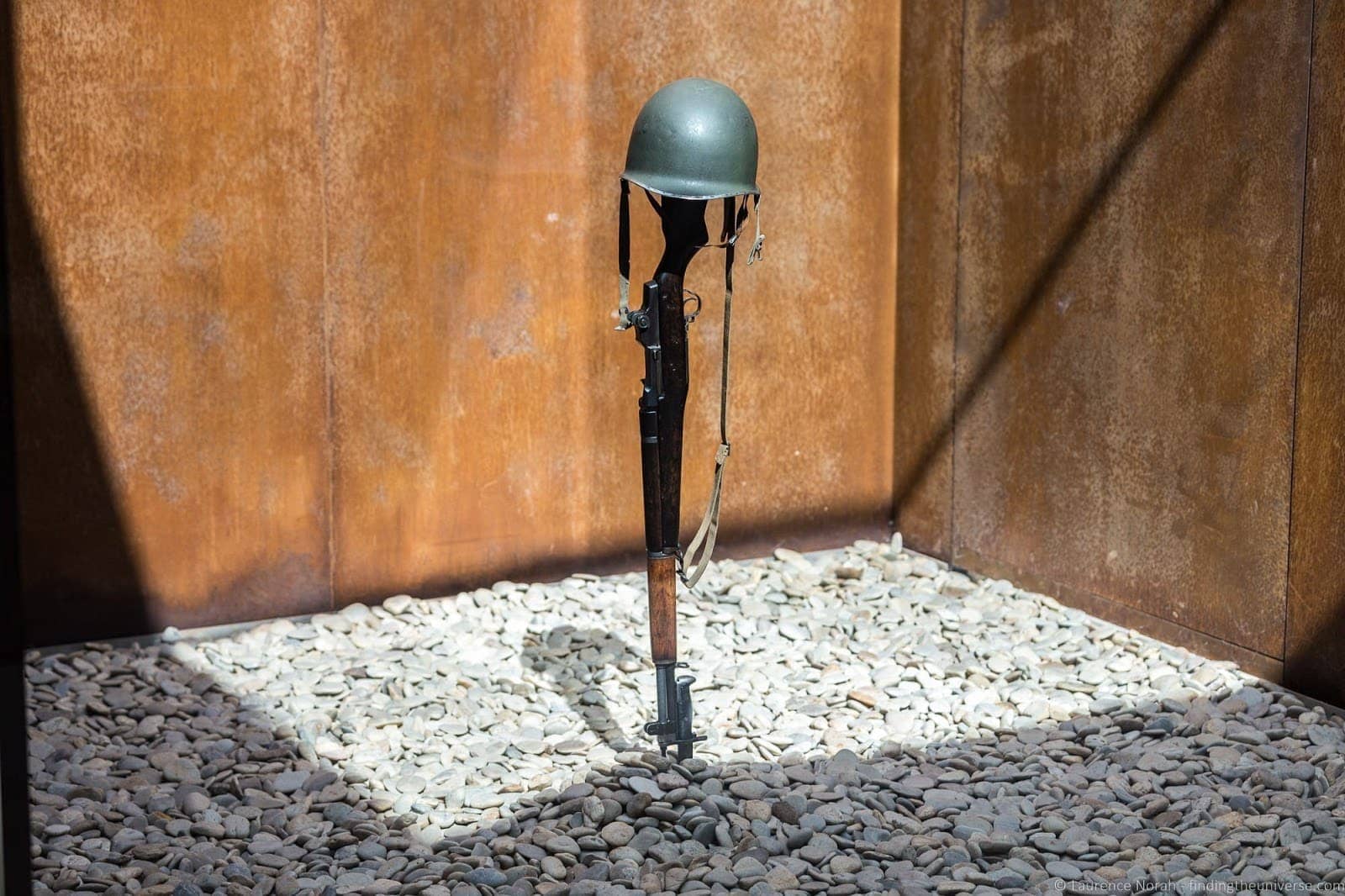
It was the first US WW2 cemetery on European soil, and was established as a temporary location on the 8th of June – two days after the landings started – a necessity given the high casualty rates, particularly at nearby Omaha Beach, which was the most heavily defended of all the landing locations.
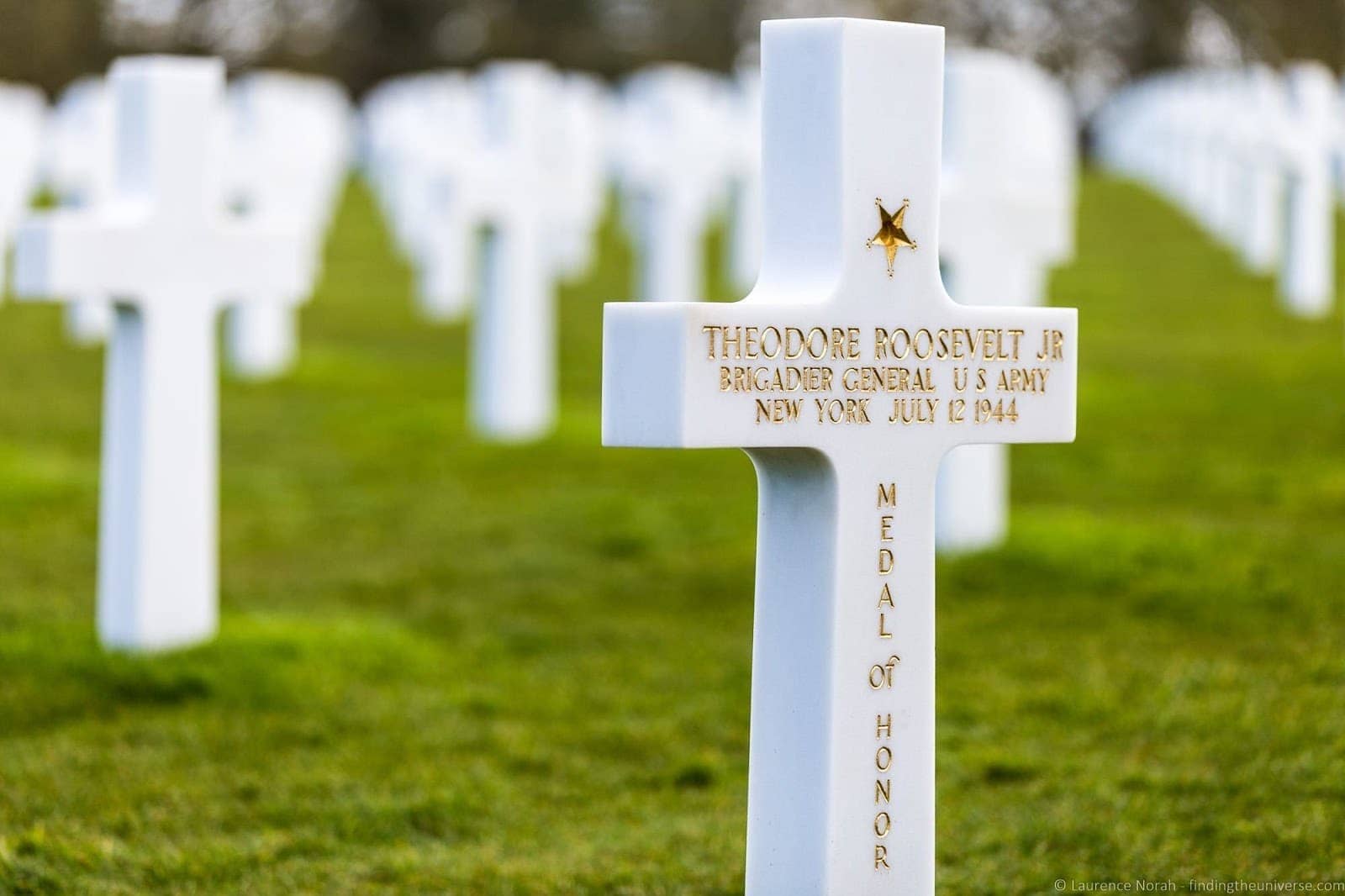
Today, there is a visitor center, a memorial, chapel, and of course, the cemetery itself, all of which are free to visitors.
The visitor center is excellent, telling the story of the landings with a focus on the personal stories and losses of the people involved, particularly at Omaha beach.
It’s very worth taking some time to fully explore this. Then, of course, the cemetery is a sombre reminder of quite how many people died in this conflict.
3. Omaha Beach Monument
From the War Cemetery we headed back down to Omaha Beach itself, and the monument to the D-Day landings.
There are actually two installations here – the huge monument itself, and a huge stainless steel art installation known as “The Braves”, which commemorates the 60th anniversary of the landings.
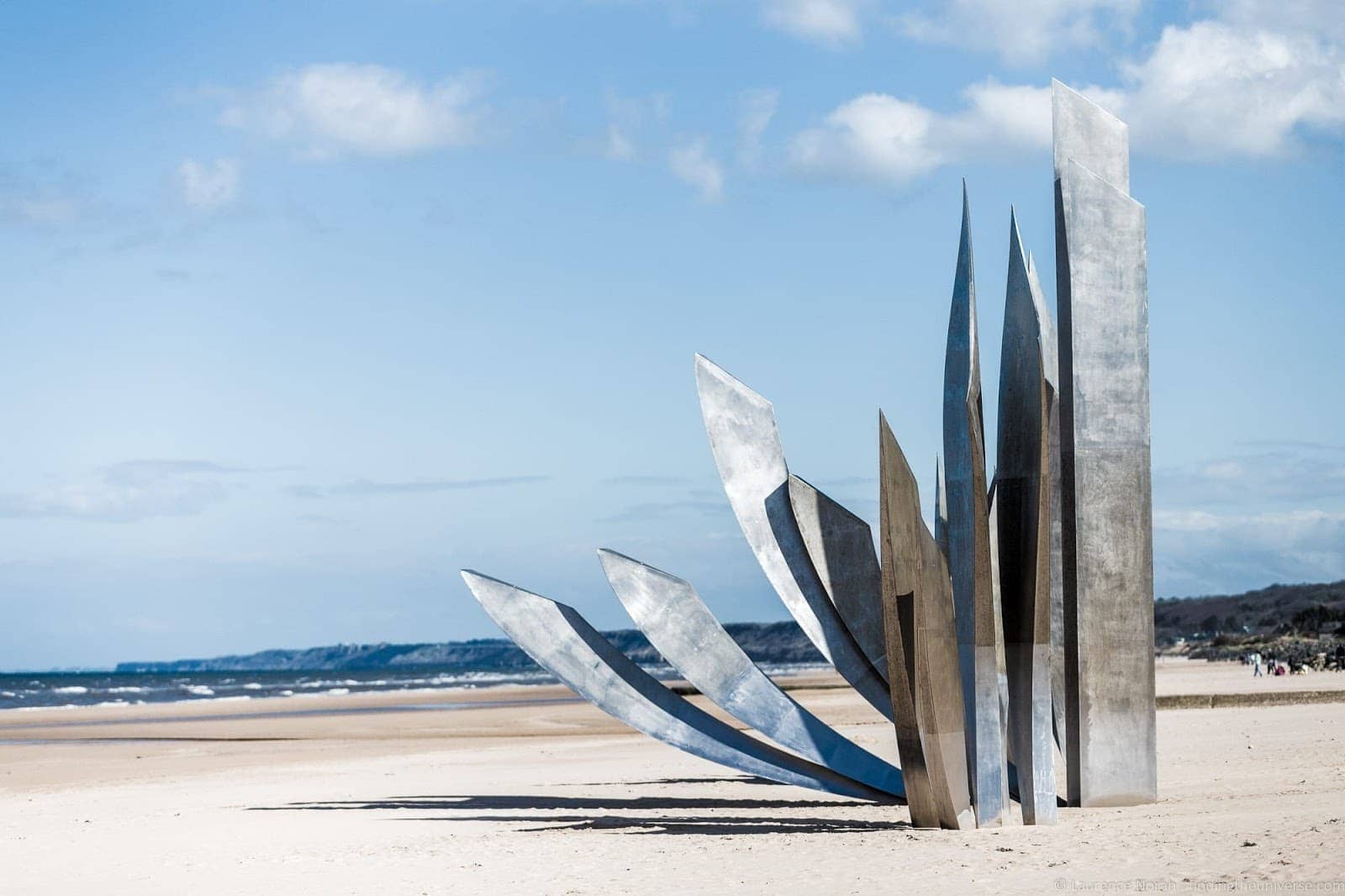
Both are worth looking at, and of course, you’ll want to spend some time here on the beach as we did, casting your mind back across the decades, and just trying to get a tiny idea of the horrors that were witnessed here.
4. Pointe Du Hoc
Our last stop on our D-Day Landings Day was Pointe Du Hoc. This is a rocky cliff top area, the highest point of land between Utah and Omaha beaches, and during WW2, was a heavily defended German installation and lookout point.
It was thought that the destruction of this stronghold was going to be critical to the success of the D-Day landings, as the six 155mm guns that were believed to be installed here could have wreaked devastation on forces landing at both Omaha and Utah beaches.
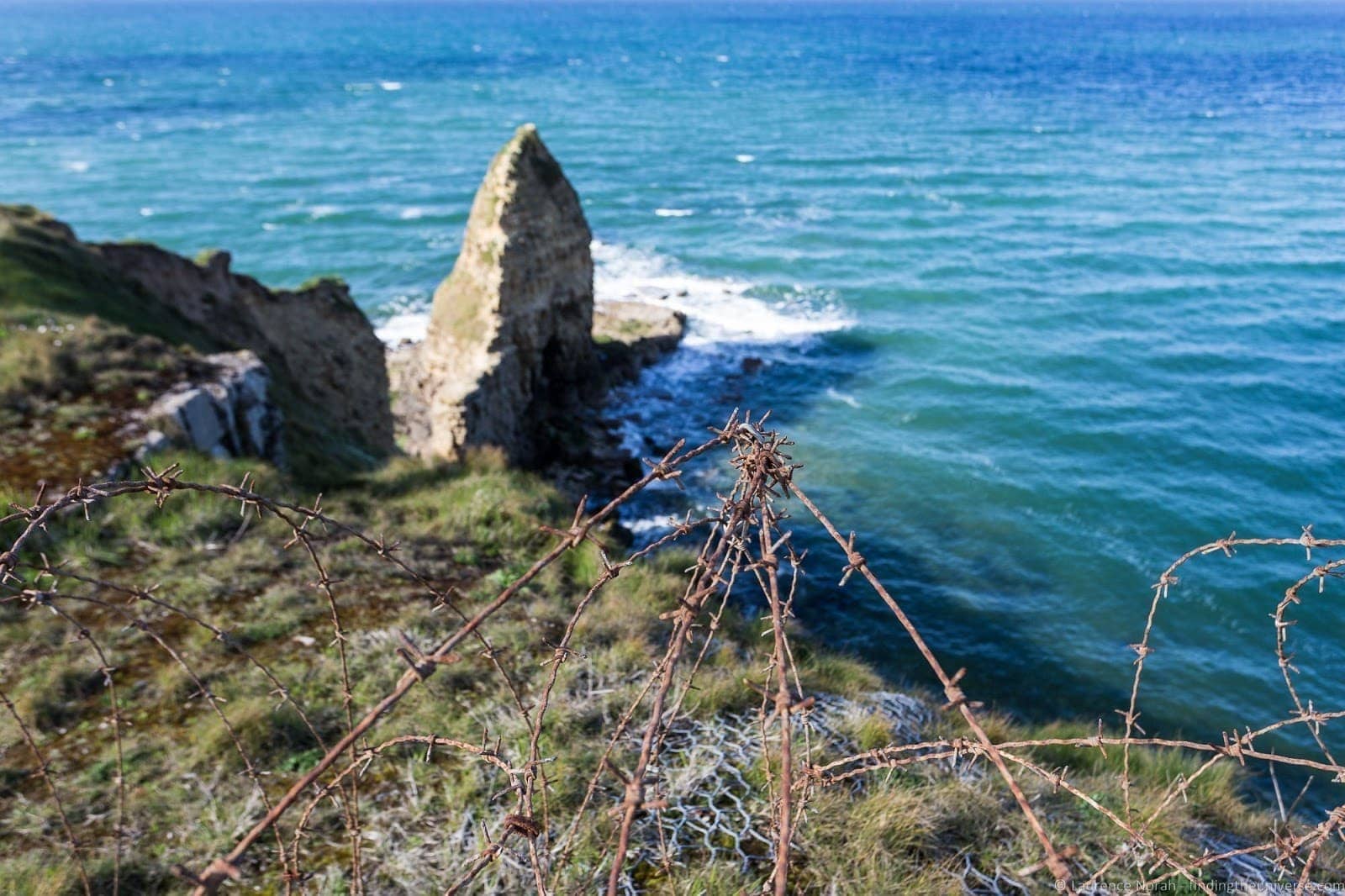
To accomplish this mission, a 225 strong force of US Rangers was dispatched in the early hours of June 6th, with the mission of scaling the 100ft cliffs and destroying the 155mm guns.
As it turned out, the guns had all been moved to a nearby orchard to protect them from Allied bombardments, so whilst the rangers did find them and destroy them, the risk was not as great as first thought. The battle for Pointe Du Hoc was also costly, with 70 percent casualties, so even though deemed a success, it was with a brutal loss of life.
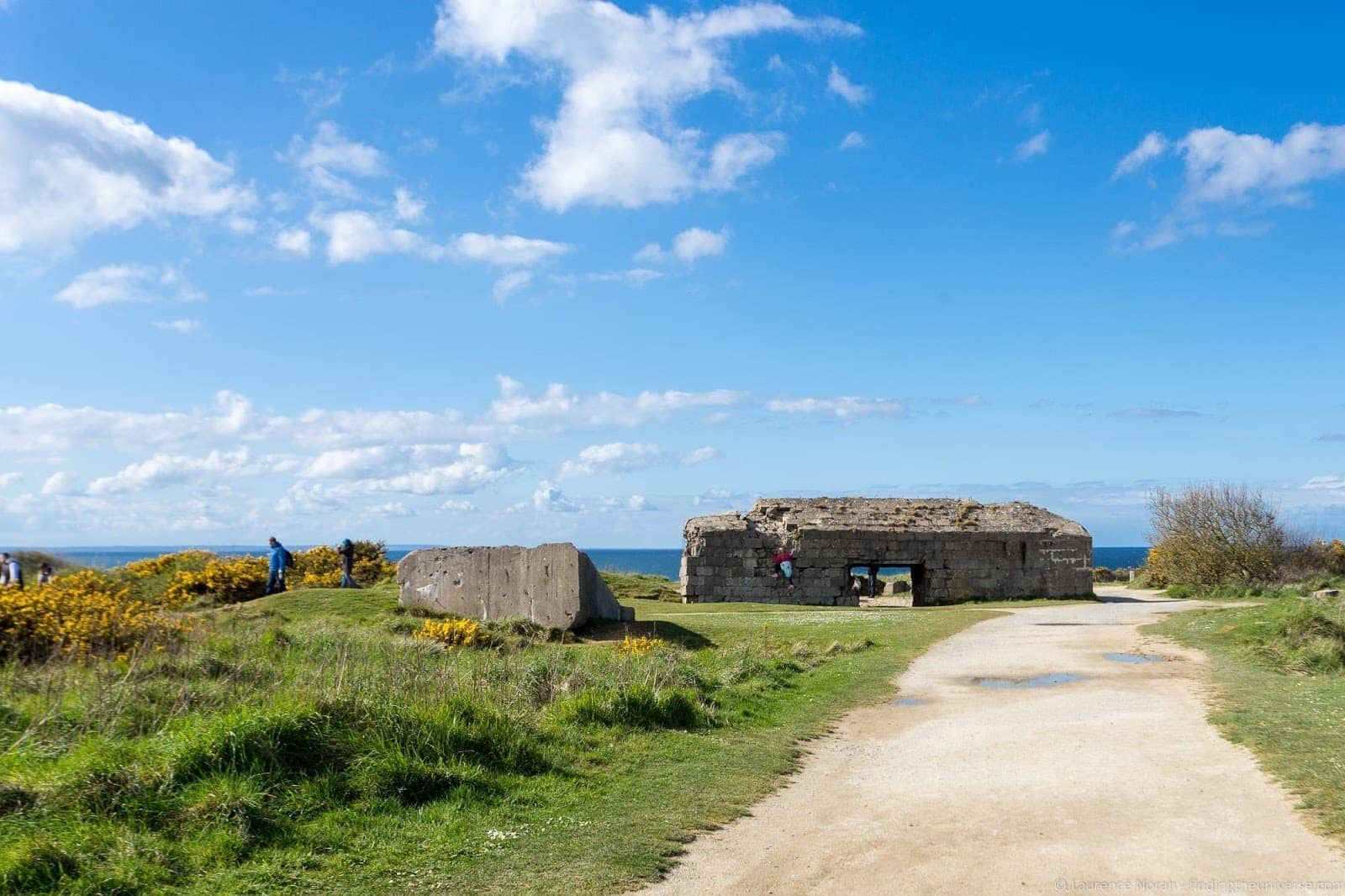
Today, Pointe Du Hoc serves as a monument to the Rangers who fought here. Other than the encroachment of nature, the site is not much different today to how it was when the Rangers landed.
Many of the original concrete bunkers, bomb craters and installations are still in place, and you can freely wander the area, and marvel at the challenges that must have faced the men landing here, from the rough seas to the 100ft cliffs to the barbed wire.
There is also a visitor centre, although it had just closed when we arrived. If it is something that interests you though, you can check the opening hours here to be sure that you schedule your day appropriately.
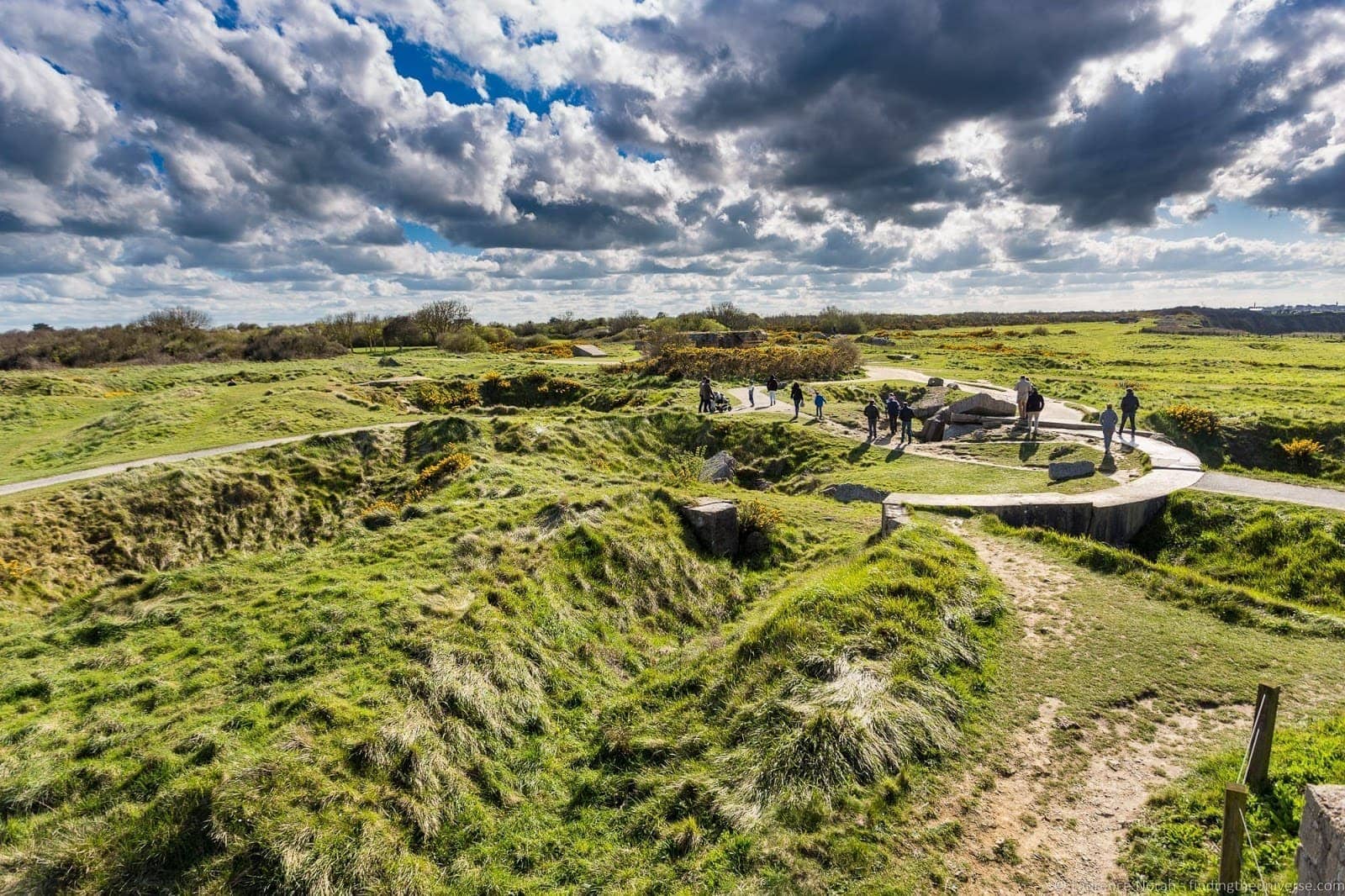
Pointe Du Hoc was the last stop on our tour of the Normandy D-Day beaches. It wasn’t the sort of day that fills you with joy, but I certainly learnt a great deal, and left with a heightened sense of admiration and respect for the many people who gave their lives so Europe and the world could be free.
Now, on to answering some questions you might have, as well as some practicalities.
Where we stayed in Normandy
There are lots of options for accommodation at Mont St. Michel. We found ourselves a little chambre d’hote , which is the French equivalent of a B&B.
This was excellent value, and within walking a half hour’s walk of Mont St. Michel – and more importantly, a ten-minute walk to where I was able to get photos like this:
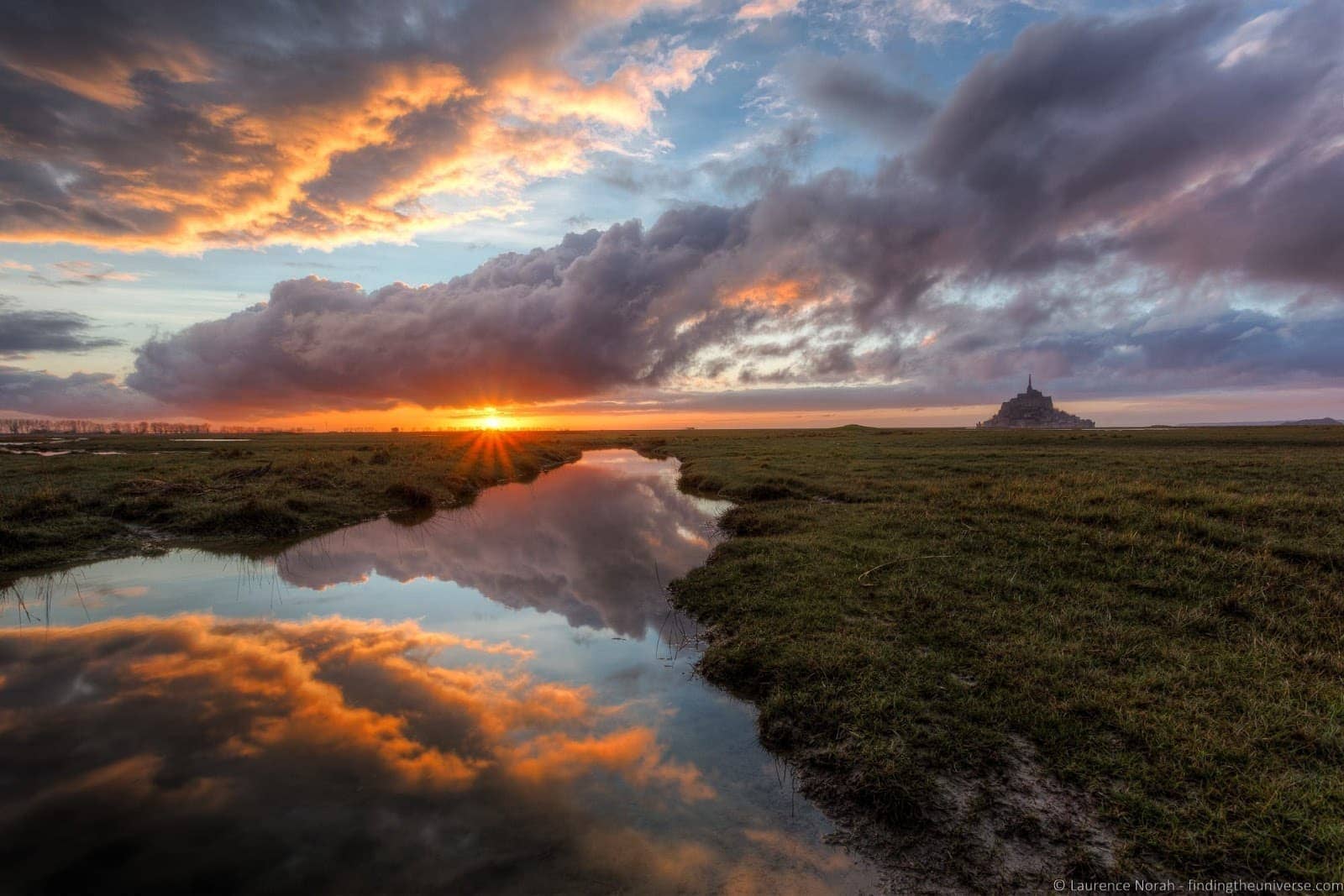
We actually found that there are lots of these in the Mont St. Michel area, you can see Mont St Michel listings here on booking.com
There were three Chambres D’Hotes near each other, including the one we stayed at , with a price for two people, including breakfast, usually in the region of €70 – €120. Definitely an option worth investigating.
How To Get Around Normandy
Since we took the ferry, we were able to take our own car to France. This was very handy, and definitely meant we got to see everything we wanted to see at our pace.
I’d definitely recommend a car as the best option to get as much in as you can for your trip. If you’re coming from the UK, Brittany Ferries operates to a number of destinations in France, with Cherbourg, St. Malo and Caen likely to be your best options for a trip like the one we did.
If you’re looking to hire a car in France, we recommend searching for your car rental on Discover Cars here . They compare a range of providers so you can find the best deal for your trip.
Tours of Normandy and the D-Day Beaches
If you would rather not have the hassle of planning your car hire or hotels, it’s also possible to visit the D-Day beaches and Mont St. Michel on a guided tour. This will also carry the benefit that you will have someone on hand to explain the significance of what you are seeing.
It is possible to do this as a day trip from Paris, however the day trips will focus on either Mont St. Michel or the D-Day Beaches, as doing both would be challenging in a day from Paris. There are however two day (and longer) tours like this which cover both sights. Here are some options:
- A 1 day tour from Paris of Mont. St Michel , which includes transport and your entry ticket
- A 1 day tour from Paris of the Normandy D-Day landing beaches , which includes transport, museum entry and guide
- A 2-day tour of Normandy, Saint Malo and Mont St Michel from Paris , which includes transport, overnight 4* accommodation, some meals, a guide, and entrance fees. This would be our recommended option from Paris if you have the time as it covers many of the locations in our guide.
There are many more tours to choose from, you can see a selection on Viator here , and GetYourGuide here
These tours all run from Paris as this is the most popular departure point. However, there are also tours from Bayeux in Normandy, which you can reach by a 2.5 hour train from Paris. In this case, we’d suggest booking a 1 day tour of the D-Day beaches, and a 1 day tour of Mont. St Michel. Here are some options:
- A 1 day tour of Mont St. Michel , including transport and guide
- A private 1 day tour of Mont St. Michel , also including transport and guide. This is a similar tour with departure from either Caen or Bayeux.
- A 1 day small group tour of the D-Day beaches , with a particular focus on the beaches used by the American forces.
Getting To Normandy from the UK
As mentioned above, we took the ferry from Portsmouth to St. Malo (and back again!) with Brittany Ferries .
We had a four berth cabin on both crossings, which was particularly handy for the night crossing to France as it meant we could have a good night’s sleep. Each cabin also includes a sink, toilet, and shower so you can arrive feeling refreshed.
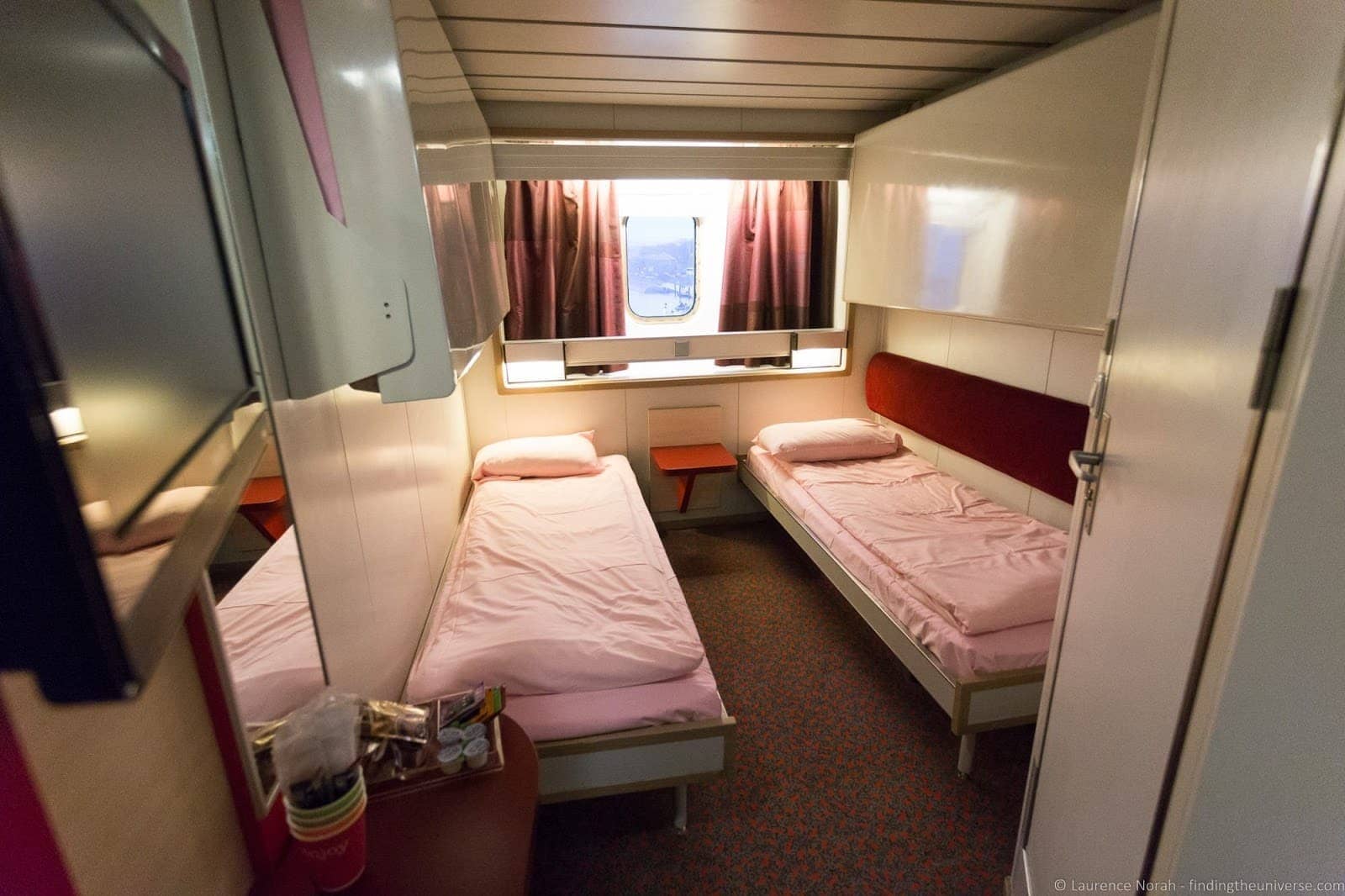
The boat was also well equipped, and we enjoyed an excellent dinner on board on our way to France, and a lovely lunch on the day crossing back. In the evening, after our dinner, we went and watched the cabaret show (and partook of the excellent bar!), with Jess having a huge cocktail and me going for a slightly simpler beer option.

Jess also got involved in the magic show (this seems to happen to her a lot!), as a man rather worryingly stuck a sword through her throat. This was a lot of fun, and overall, we’re happy to recommend the Brittany Ferries experience to anyone looking to travel to and from the UK by ferry with a car.
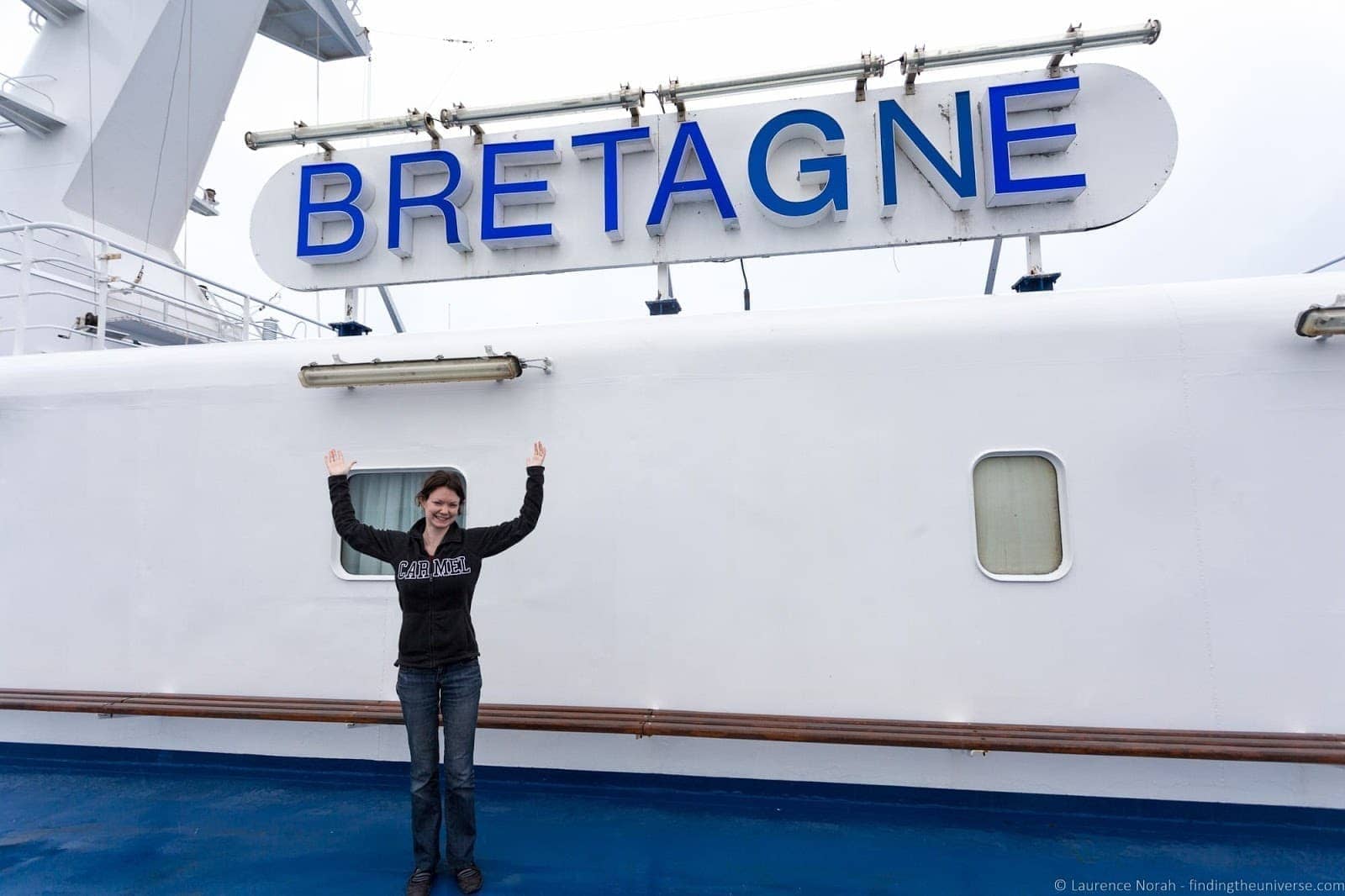
Further Reading for your Visit
We’ve written more about France to help you plan your visit to this lovely country. Here are some resources we think you’ll find useful:
- We have a 2 Day Paris Itinerary as well as a 3 Day Paris Itinerary
- We also have a guide to spending a day in Paris , if you’re on a really tight schedule and just want to focus on the highlights
- Our guide to the Best Photography Locations in Paris
- A full review of the Paris Pass , to help you save money on your visit, as well as a review of the Paris Museum Pass
- A guide to the best afternoon tea in Paris
- A guide to choosing the best Seine Boat River tour
- A guide to recognising and avoiding common Paris scams
And that pretty much wraps up our two days experience in Normandy! Have you ever visited the sights in the article? Have any tips or experiences to share? Let us know about them in the comments below!
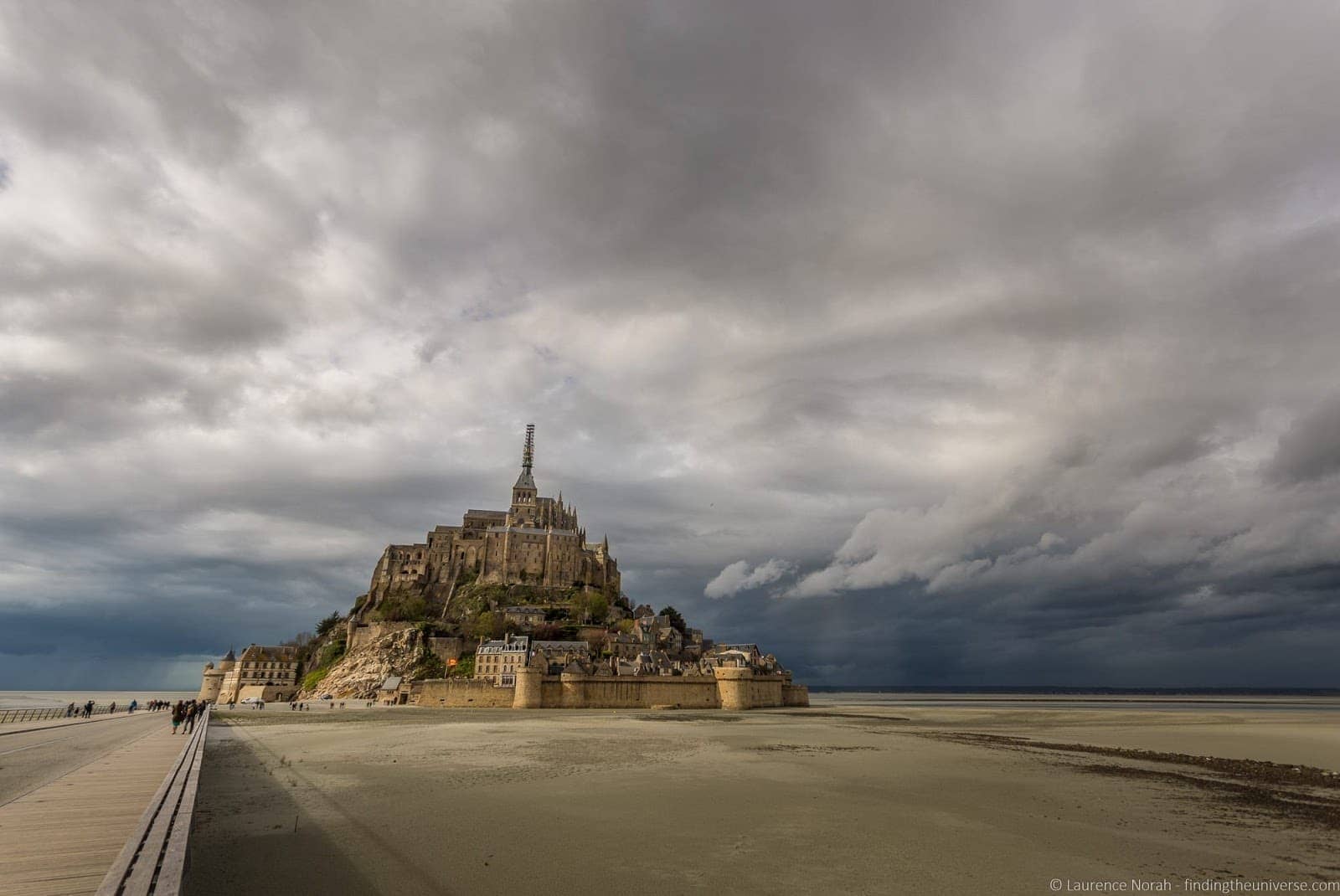
So you know, we received complimentary tickets from Brittany Ferries to and from the UK for two people and a car. All other expenses, including meals and drinks on the boat, as well as our accommodation and activities in France, we covered ourselves. As always, you can read our code of ethics to find out how we choose to work with!
Enjoyed this post? Why not share it!
There are 35 comments on this post
Please scroll to the end to leave a comment
Michael Giblin says
11th January 2024 at 5:18 am
Hi Jessica Thanks for the interesting article, especially the links to other information. We plan to go to France in Septembers, spend 6 nights in Paris then take the train to Bayeux rent a car and spend 3 days visiting the Normandy sites then spend 3 nights in Tours visiting the Loire Valley. Then take the train To Paris and head home. Your travel log is really helpful because after reading yours and many travel logs, we realize we can rent a car and do self-guided tours and go at our own pace. My wife speaks French so that will be a big help. Thank you.
Laurence Norah says
13th January 2024 at 2:00 pm
It’s our pleasure Michael, have a wonderful trip to France and do let us know if you have any questions!
Eileen Cowley says
9th September 2023 at 2:08 am
I love all this wonderful and insiteful information about a 2 day Normandy visit. We will visit Mont St. Michel on the 1st day, and the beaches you recommended on the second. Should we stay 2 nights in the hotel close to St. Michel. or check out, visit the beaches and choose another location close to Point de Hoc? Thank you!
10th September 2023 at 3:05 pm
Thanks very much! So I would probably recommend checking out and moving on so you don’t have to drive backwards and forward so much. Of course, it will depend a bit on your overall itinerary, but personally I’d find somewhere closer to where you’ll be visiting on your second day.
Have a lovely time in France, let me know if you have any more questions!
Linda Karol says
16th July 2022 at 8:07 pm
Hello! My so is in the Air Force and was recently involved in the DDay Reinactment. I will go onto your Facebook site and post some of his pictures for you.
21st July 2022 at 7:54 pm
Thank you very much Linda 🙂
26th June 2022 at 8:49 pm
we are staying in Dol De Bretagne for a week ( arriving in st Malo) then driving up to normandy on the Friday so we can see the D Day beaches etc before getting the ferry on the Sunday from Caen back to the UK. we will have 2 days and your itinerary has been big help , where do you think the best place to stay is please ? Caen ? Bayeux , or somewhere else. we need to be at Caen for 7.30 on the Sunday morning for the ferry so don’t want to have to travel too far to get there. we are leaving Dol early fri morning so will have 2 full days . thanks for your help
27th June 2022 at 9:50 am
I think either Caen or Bayeux would work. Caen would obviously be easier for your early morning ferry, so I might opt for that, and it’s not too far to the majority of beaches. There are also lots of accommodation options in Caen as you can see here .
Have a great trip and let me know if you have any more questions!
Nicolas Mata says
14th June 2022 at 2:31 pm
Very educational. By the way, how did you create your own blog?
14th June 2022 at 4:19 pm
Thanks Nicolas! I created it initially back in 2010 using Google’s free Blogger service. Then I migrated to a paid service using WordPress. We actually have a complete guide to starting a blog , which you might find interesting 🙂
Patricia says
6th June 2022 at 5:15 pm
Fantastic comments and beautiful photos. Thank you
6th June 2022 at 5:50 pm
Thanks very much Patricia!
Stuart Robertson says
20th April 2022 at 6:55 pm
As the majority of troops to land on D-Day were British, it’s a shame you visited exclusively American sites. For information, Omaha was not the most heavily defended beach, Sword was.
20th April 2022 at 7:55 pm
Thanks for your comment! As my wife is American and had family members who took part in the landings, those were the beaches we chose to visit as they had the most personal connection to us. My grandfather was British, but I believe his war was primarily in Italy. Of course we are grateful for all their service, but don’t feel they would think any the less of us for which beach we visited. Hopefully we will be able to return soon and see more of the landing locations.
In terms of Omaha vs Sword, do you have a citation for that? The Imperial War Museum website here state that Omaha was the most heavily defended of the beaches, but I would add I am happy to change the information if there’s a more authoritative source.
Thanks again for your comment!
Linda Hyers says
4th March 2020 at 9:43 pm
We are going to Paris mid July and want to go to Normandy & St Michel. Looks like most of the tours leave on Thurs. we need to tour on Tues-Friday. Any ideas?
5th March 2020 at 2:05 pm
Hmm, that is a bit of a conundrum. I have a few options for you, depending on your budget.
First, there are a number of private tours you can take, where the day is less relevant. However, these are definitely more pricey. There are quite a few options listed on Viator, such as this one .
You might also try reaching out to Context Travel who do custom private tours of Normandy here . You get a 10% discount with our link too.
If the above options are out of budget, I have another idea.
You could take a 1 day tour of the Normandy Beach locations, like this one .
The advantage of the above tour is that is actually starts in Caen train station, not Paris, so you are not paying for a return trip to Paris as part of the tour. Instead, you would need to book your own train ticket to Caen. The fastest train takes around 2h – 2h30, so if you get an early train you can be in Caen by 9am.
You would then take the full day tour of the D-Day beaches and sights, which are harder to see without a tour or if you don’t have your own transport. You can then overnight in Caen, or head on to Mont St. Michel.
There’s a direct bus from Caen to Mont St. Michel, which takes around 3 hours. You can book this online. You can then spend the day exploring Mont St. Michel before heading back to Paris.
I appreciate this would be a bit more work on your end, but it would be much more cost effective than a private tour, and you would only need to book your train / coach tickets. You can book both of those in advance here .
Let me know if you need any further advice, I’m happy to help!
22nd February 2020 at 2:47 pm
Hi !!! Love the way you write and off course your photografy! My soon to be 15 year old son wants a trip to the D day beaches. We will be in London for 6 days then Paris for two days then we plan to be in Normandy for two days and we want to make sure we see Mt St Michel and the D day beaches! (Great suggestions from you on the aviator tours for 1 day only on those- we most probably book that) Is any way we can go from there back to London (to depart to the US) with out going back to Paris? Somebody suggested the ferry but then is there a train to London ? We obviously won’t have a car.
22nd February 2020 at 2:54 pm
Thanks very much Maria!
So yes, you can definitely take a ferry from Normandy or Brittany to the UK. Ferries depart from Caen, Cherbourg, Le Havre or Saint Malo and go to Portsmouth, and then it’s easy to take a train from Portsmouth directly to London, it takes around 2 hours. There’s also plenty to see in Portsmouth!
A couple of guides you might find useful:
This guide to getting from Paris to London, which actually has ferry information for all the major ports you should find helpful: https://independenttravelcats.com/how-to-get-from-london-to-paris/
This guide to things to do in Portsmouth: https://www.findingtheuniverse.com/things-to-do-in-portsmouth-uk/
Let me know if I can help any more, and have a great trip!
Kristi says
12th February 2020 at 1:07 am
This info is fantastic. We’re planning a trip in June from London into Paris, then Normandy. Frankly, Normandy is to be our highlight, as its my husband’s 50th and its a bucket list item. We are taking our three kids (8,12, 14) and all love history. I’m doing my homework and came across your site. Thank you for this info. I’m still trying to figure out the best way to see both MSM and the American beaches/cemetery/museum. should we have a hub in Caen? We do want to take our time in the Normandy region and not be too rushed. Thank you!!
12th February 2020 at 1:35 pm
Thanks very much! I would definitely recommend having a base somewhere so you can have at least two days to explore. You’ll need at least a full day for the D-Day sites, and at least half a day for MSM. We based ourselves near MSM, but that was purely because I love photography, so I wanted to be within walking distance of the Mount at sunset and sunrise! Caen would make a great base for both, easy for the beaches and other D-Day sites, and within easy driving distance of MSM. It’s also accessible by direct train from Paris in 2 hours, which is going to be the fastest way to get there, and then you can hire a car in Caen.
Let me know if you have any more questions, I hope you have a wonderful trip and happy birthday to your husband 😀
Michelle says
21st October 2019 at 9:49 pm
We are traveling from Paris to Rennes by train. Renting a car and driving to Mont St Michel. I would love to see Dinan but it may possibly be to far “out of the way” and I don’t want to rush MSM but a few hours should be plenty there…? I would like to stay somewhere near MSM for one night. Then the next morning drive to Bayeux and DDay beaches staying in Caen to return car and hop on the train back to Paris. Any suggestions of towns to visit or see along the route from MSM to Bayeux? Also any suggestions of towns to stay in near MSM.
25th October 2019 at 4:51 pm
Hi Michelle!
Sorry for the slow response! We’ve been moving house, which has been a bit time consuming, and left us without internet for a while.
Anyway, you are correct, a few hours at Mont St Michel would be more than enough. It’s around an hour from Mont St. Michel to Dinan, so that would be theoretically doable in the same day.
From MSM to Bayeux is only 1h 38 minutes. So I would suggest just heading up that way and straight to the coast and the beaches, which run for a fair distance along the coast north of Bayeux.
For accommodation near MSM, well, you can either stay on the Mont itself, or one of the nearby villages. If you look at the map on this page , you should get an idea of nearby accommodation options 🙂
Have a great trip!
Susan Haydon says
29th May 2019 at 7:42 am
Hi Laurence,
We are off to Normandy this coming weekend. Do you have an approximate cost of entry fees to museums etc. or can you point me in the right direction to find these? Also, I would love to print this article to take with us. Is there a way to print it without all the ads?
Thank you to you and Jess for the excellent coverage of this wonderful location.
29th May 2019 at 10:59 am
So we don’t have a print feature like that – the best option would be to temporarily install an ad blocking extension I think. Alternatively you could copy the text into a word document and delete the ads / images.
For the museums, the prices are quite well hidden, if you can even find the website 😉 They vary, but i would estimate between €8 and €12 euros on average. For example, here are the Utah Museum prices: https://www.utah-beach.com/information/?lang=en
Have a wonderful trip, do let us know how you get on 🙂
29th May 2019 at 12:48 pm
Many thank, will do ????
17th October 2019 at 6:42 pm
I hope you had a great trip. This is too late for your Normandy trip, but in case you use our site in the future, I just wanted to let you know that we finally figured out how to implement a print feature, so you can now print ad and image free versions of all our pages from the print button on the site.
stephane yao says
29th April 2019 at 3:49 am
Hi Laurence, we plan to take on 1 day trip from the mont st michelle to the destination deauville. During this day, is it possible to follow your 3 landing location in 1 day by a rented car?
sincerly Stéphane
30th April 2019 at 5:41 pm
Hi Stéphane,
This is definitely possible as Jess and I did exactly this 🙂 So you shouldn’t have any problems,
8th April 2019 at 11:34 am
Hi there im heading to st.malo at the end of this month with hubbie is there a tour bus r train that culd take us to utah beach and the ww11 memorial that u mentioned thankyou
8th April 2019 at 11:43 am
It’s around a 2.5 hour drive to the D-Day beaches from St. Malo, so most tour companies instead operate from nearer locations like Cherbourg. From St. Malo, most tours are focused instead on Mont St. Michel. So the best option is likely to rent a car and drive yourself as I have not been able to find a tour from St. Malo. It is of course possible that they exist, but you might have to contact the local tourism office in St. Malo for information.
8th April 2019 at 12:03 pm
Thankyou Laurence
betseysheprow says
2nd February 2019 at 7:54 pm
is it possible to get a group guided tour of normandy and is it worth it?
3rd February 2019 at 11:49 am
It is certainly possible, here are two options, this one from Caen, and this one from Paris .
We have never done a tour like this so I can’t comment if it is worth it, but the reviews are positive, and we think that having a guide to help walk you through some of the history can only be a good thing 🙂
Have a great trip
20th April 2022 at 7:13 pm
Do bear in mind its a 9 hour round trip drive from central Paris to Utah Beach. A day trip from Paris is doable but it’s much better to get an early train from St Laxare to Carentan (depart 7am & 2.5 hrs) and then get a tour commencing there (look up Allan Bryson – a great guide).
20th April 2022 at 7:57 pm
This is absolutely true. We definitely feel the train is a better option and ideally folks should spend at least one night as well in the area if possible, if not more!
Leave a Reply Cancel reply
Your email address will not be published. Required fields are marked *
Let me know when there's a reply to my comment (just replies to your comment, no other e-mails, we promise!)
Subscribe to our monthly Newsletter where we share our latest travel news and tips. This also makes you eligible to enter our monthly giveaways!
We only ask for your e-mail so we can verify you are human and if requested notify you of a reply. To do this, we store your data as outlined in our privacy policy . Your e-mail will not be published or used for any other reason other than those outlined above.
- Terms of Use
War News | Military History | Military News
Top 10 things to see when visiting the d-day beaches in normandy.
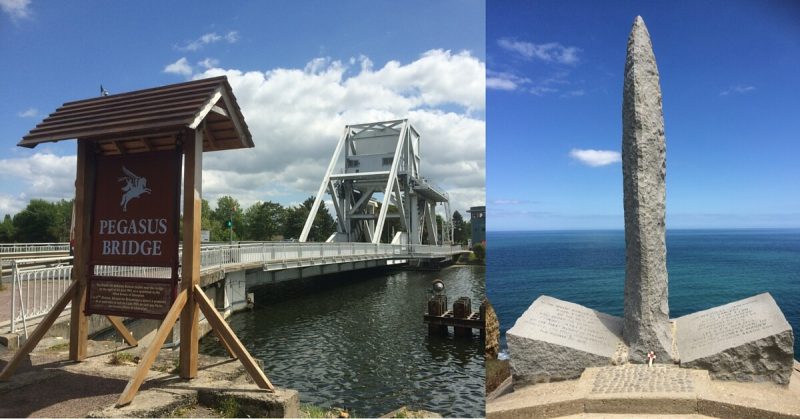
Normandy’s WW2 and D-Day museums are filled with a wealth of artefacts and information about the events of 1944. Some museums such as the American Airborne Museum are very specific in their focus whilst others like the Memorial de Caen are far more wide-ranging. Whatever you are most interested in about D-Day and the Battle of Normandy, you are sure to find a museum or three that will help you uncover the incredible historic events that happened here during WW2. Discover the effects of the war not just on the armed forces involved but also on the French civilians caught in the crossfire, as well as seeing up close a huge variety of artifacts and exhibits.
More modern museum techniques including multimedia exhibits like the cinema at the Arromanches 360, or interactive displays at other the Memorial de Caen, help to tell the story of the landings and the fight across France to push the Nazis back into Germany. You can also see all manner of artefacts from all sides of the battle such as mannequins dressed in uniforms, caches of arms and munitions, equipment, documents, letters, plans, photographs – even full-size aircraft and gliders, in the museums across the regio
Pegasus Bridge Memorial Museum
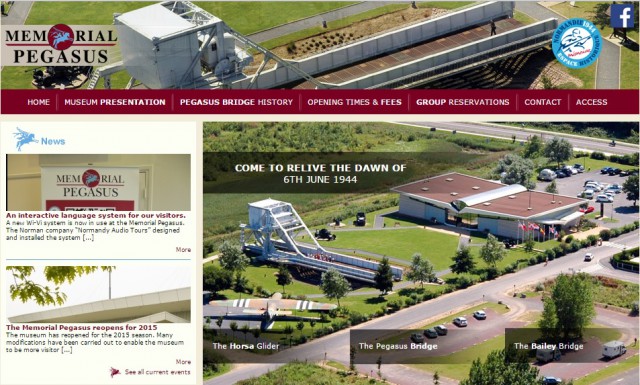
This location is the scene of one of the most famous missions that the airborne divisions took place in – the capture of the River Orne Bridge. Major John Howard, and his 180 troops, famously captured these bridges and held them intact.
In 1944, June 26th the bridge of Caen Canal was baptized in the name of ‘Pegasus Bridge’ in honor of British troops. This was significant as the men in this airborne division wore the emblem of Pegasus (a winged horse) on their sleeves.
The bridge became famous in 1961 due to the release of ‘The Longest Day’ a film produced by Darryl Zanuck about D-Day. It was replaced by a new bridge in 1994, and the original is in the park of this museum on display.
Opening times & fees
The Memorial Pegasus is open everyday from 1st February to 15 December. A visit, with guide, lasts about 1h15. 1st February to 31st Marh from 10.00 to 17.00 1st April to 30th September from 9.30 to 18.30 1st October to 15th December from 10.00 to 17.00 Entrance Fees
Individuals
Adults 7.00 € Children (8+), students 4.70 €
www.memorial-pegasus.org
Dead Man’s Corner Museum
On June 6th, 1944 in Normandy, France paratroopers from the US (101st Airborne Division) drop into France and become the first ever soldiers to reach this territory. Their aim was to take over Carentan, which was being defended by Germans. The Germans in charge of this defense are their most elite troops, the Paratroopers of Major von der Hyte of 6th Fallschirmjager Regiment aka the Green Devils.
The Germans have taken hold in Saint-Come-du-Mont and have been ordered to defend Carentan with every last man they have. The Americans know it is crucial they take this town as quickly as possible and await light tank support that is coming to them from the 70th Battalion.
The tanks come from Utah beach, pass through the town of Sainte-Marie-du-Mont and arrive at a crossroads which leads off to Saint-Come-du-Mont and Caretan. This crossroads is known since this day as the Dead Man’s Corner by the Americans. Standing at the crossroads is a solitary house, which the German troops use as their headquarters. This is where the Dead Man’s Museum is located – in this same building in Saint-Come-du-Mont.
Airborne Experience:
Until May 31, Dead Man’s Corner Museum: Adults: 5.95 € – Children (6-17 years): 4 €.
Starting June 2015: D-Day Experience opening. Combined ticket 2 museums (D-Day + DMC Experience Museum): Adults: 12 € – Child (6-17 years): 9 €. Family Pass (2 adults + 3 ch.) 40 €
www.paratrooper-museum.org
The Juno Beach Centre
The Juno Beach Center is the World War 2 and cultural museum of Canada, located in Normandy, France. This center pays tribute to the Canadians who sadly lost their lives whilst participating in the War (45,000 lives lost).
This museum was opened in 2003 by volunteers and veterans who wished to create a lasting memorial to the Canadians who participated in World War 2, and the focus of the museum is to preserve their legacy through remembrance and education.
The Juno Beach Center shows people Canada’s influence and input during the War and also gives people an opportunity to learn more about the culture and value of Canadians.
ADMISSION PRICES ADULT RATE REDUCED RATE Juno Beach Centre 7.00 € 5.50 € Temporary Exhibit Only 3.00 € 3.00 € Juno Park Only 5.50 € 4.50 € Juno Beach Centre + Juno Park 11.00 € 9.00 € Family Pass (maximum 2 adults and 3 children over 8 years of age) Juno Beach Centre: 21 € JBC + Juno Park: 33 € Free for Second World War Veterans, Second World War widows, war disabled and accompanied children under 8.
April — September 9:30am — 7:00pm
www.junobeach.org
Merville Battery Museum
The SHAEF designate the Merville battery a priority D Day Objective.
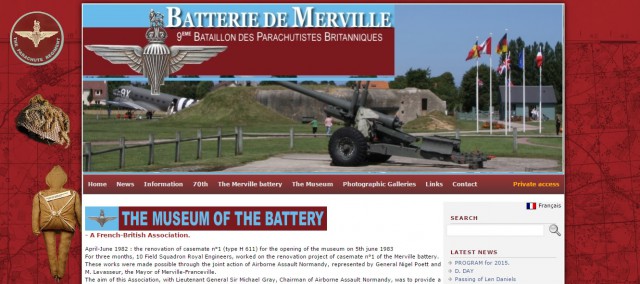
The Merville Battery casemate (Type 611) was classified as being a priority objective on D-Day by the SHAEF (Supreme Headquarters Allied Expeditionary Forces). This was due to the likelihood of it holding far larger weapons and artillery than other casemates, due to its size. Normal casemates held 100mm guns whereas the 611 housed guns that were 155mm and had a tremendous range of approximately 17km.
As well as this reason, another was due to the fact that beaches used in the invasion were threatened by the Merville Battery – this threat meant the possibility of Operation Overlord being set back. Therefore it was vital to take out the guns of the battery before the June 6th invasion began. This meant the battery attack became a priority.
No aerial photographs were able to take images precise enough to identify the guns in the battery, so nobody knew for sure which were in there; however, it was considered the arms must be great to go to so much effort of the housing around them.
OPENING HOURS 2014
14th March – 30th September : every days from 9.30 a.m. to 18.30 p.m.
1st October – 14th November : every days from 10.00 a.m. to 5.00 p.m.
Parking, toilets. The visit takes about one and a half hours.
Contact Madame Dagorn, directrice, au 06 64 95 81 97.
Adults : 6.00 €. Children – 6 years : free. Children from 6 to 16 years : 3.50€
www.batterie-merville.com
Musee Airborne, St Mere Eglise
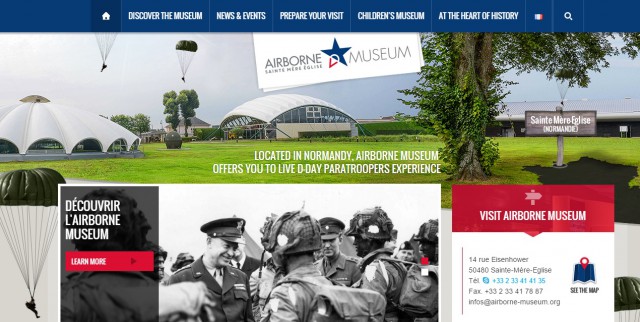
Sainte-Marie-Eglise entered the history books on June 5th, 1944. Late at night, a house is on fire and firemen are trying to control it, with the help of local people. This town is under a curfew, and so German soldiers surround them by gunpoint.
Suddenly paratroops descend upon the town primarily from the 101st Airborne Brigade and following this there was two hours of fighting between the Germans and Americans. The Germans opted to retreat to Fauville (2km away) where their commander’s headquarters were located.
The American troops attack again at dawn but by this time the Germans have had time to organize their defenses. Attacks go on for days and finally ended on June 10th, 1944. Fighting will never happen again in Sainte-Mere-Englise.
- Open every day
- Last ticket sales one hour before closing
- May to August : 9 m-7pm
- April to September : 09:30am-6:30pm
- October to March : 10am-6pm
- Closed in December and January except during Christmas Holidays
INDIVIDUALS :
- ADULT : 8.00 €
- CHILD (6 to 16 year old): 5.00 €
- FAMILY : (2 adults and 2 Children) : Adults : 7.50€ / Children : 4€
www.airborne-museum.org
Overlord Museum Omaha Beach
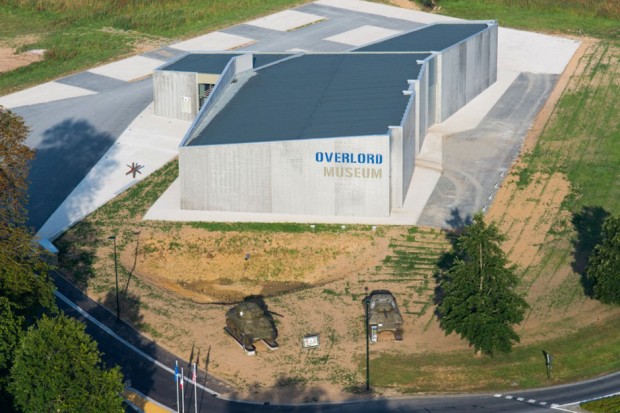
This museum is located within a very close distance of Omaha Beach, famous following World War 2. The museum tells the story of the Allied landing and the events through to the liberation of Paris. You’ll find vehicles, weapons and personal items from soldiers in this collection.
At Omaha Beach on June 6th, 1944 the Americans landed and fought against enemy fire for 3.5 hours as they made their way to the top of the cliff. During this day 3,881 American troops were wounded, killed or classed as missing.
Opening times : Open 7 days a week
- From 1 March to 31 May: 10:00 am to 6:00 pm
- From 1 June to 31 August: 9:30 am to 7:00 pm
- From 1 September to 30 September: 9:30 am to 6:00 pm
- From 1 October to 31 October: 10:00 am to 6:00 pm
- From 1 November to 31 December: 10:00 am to 5:00 pm
- Annual closure: from 23 to 26 and 31 December, January and February
PRICES 2015 Full Price : €7,50 Reduced price : €5,50 (on presentation of proof) Normandy Pass : €6,50
http://www.overlordmuseum.com/
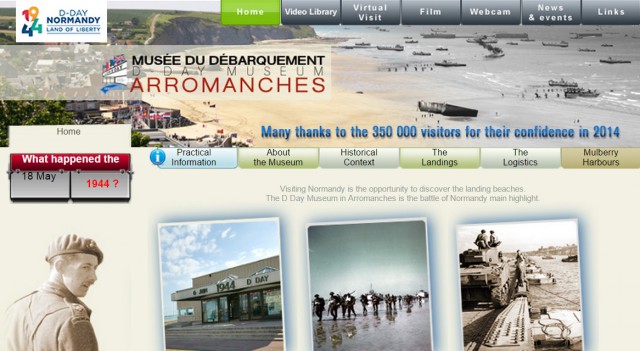
Arromanches is a historic place due to the Normandy landings and was the location where an artificial port was constructed and installed.
On the beach of Arromanches, the Allies managed to establish an artificial harbor which allowed them to unload heavy equipment with ease.
Arromanches was lucky that the events and fights of D-Day did not spread here; the troops avoided battling here so that work on the port could continue.
The temporary port was one of two that the British constructed; the other was created at Omaha Beach. The port that was constructed at Arromanches is still visible in part today, on the beach and out in the waters. Arromanches is a tourist town these days, it is used as a base for tourists wishing to visit local battle sites and cemeteries of the War – it is ideally located for these places. The museum at Arromanches itself focuses on the harbors created and Operation Overlord.
Individuals Tariffs
Adults 7.90 € Children, Students 5.80 € Groups tariffs (20 or more people)
Adults 6.20 € Group reservations Children, Students 4.00 €
www.arromanches-museum.com
Utah Beach Museum
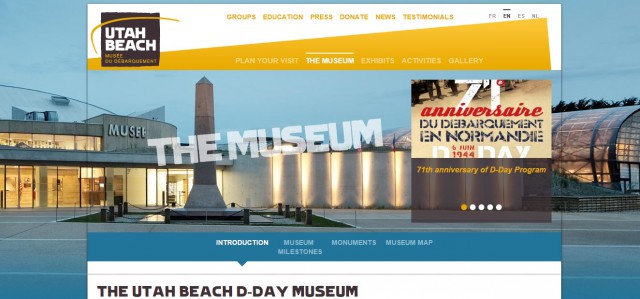
This Museum is built on the actual beach where the Americans landed on D-Day, Utah Beach. The Museum tells the story of D-Day in a variety of sequences (10 in total) that begins at the landing preparation through to the success of this day. The Museum holds vehicles, objects and oral historical records of these events.
Take the opportunity to view a B26 Bomber, there are only 6 remaining worldwide. You can watch ‘Victory In The Sand’, a film that has won awards and shows the action of American troops. Walking through this Museum and paying attention to the displays on offer will give you a better understanding of the choices the Allied armies made and why the mission was a resounding success.
OPENING HOURS October 1 to May 31: 10:00 AM TO 6:00 PM June 1 to September 30: 9:30 AM TO 7:00 PM Last ticket sales one hour before closing
Tarifs 2015 Adults : 8.00 € Children under 15 : 3.50 € Group rate (adults) : 6.00 € School groups : 3.00 € Children under 7 and WWII veterans : Free guided tour of Museum and Utah Beach : 12.00 € Museum accepts cash, credit cards, checks, and vacation vouchers.
www.utah-beach.com

D-Day beaches self drive tour (2023): a 3 day itinerary in Normandy, France
With the echoes of the past whistling around every beach, town and bunker, Normandy is the place to go to reflect on world war 2 and the pivotal events that happened there. It can be a hard hitting place for sure so having the ability to explore at your own pace, or have an afternoon off if needed, is a good idea. That’s where a self drive tour comes in.
When we self drove the coastline of Normandy we really appreciated being able to take in what we needed, explore different kinds of sights (not just museums) and take more than just the war stories too. We traveled with our kids so it made it even more essential we could pick and choose our destinations.
If you’re looking to explore the Normandy World War 2 sites then read on for our guide to a D-Day beaches self drive tour. It really is a perfect way to see the area! Since it’s a fairly compact region with plenty to see and do whether you’re a complete history addict or just want to pay respects to the troops who lost their lives so many years ago.
This article probably contains affiliate links. This means that if you buy or book after clicking, I may get a commission at no extra cost to you. Thanks!
I’ve based this self drive itinerary on our own experiences driving the route and also for it to be perfect for someone going to Normandy from the UK on a ferry to Cherbourg. If you find yourself coming from the opposite end of the country, perhaps arriving in Dieppe or Calais, or if you’re travelling internationally and starting from Paris, feel free to reverse the route.
Essentials for your D-Day explorations:
- Guide book with background info on the D-Day Sites
- Normandy Road map
Guided tour from Bayeux
- Half Day Small group tour to Omaha Beach
Accommodation for your self drive D-Day tour
It is possible to just base yourself in one town for the duration of the trip and if you’re going to do that then I recommend staying in Bayeaux as it’s fairly central to all the beaches and D-Day sites. This is a great idea if you don’t want to be changing hotels every day and want to be able to relax on an evening in familiar surroundings.
- Grande Hotel Du Luxembourg : A 4 star hotel with pool, comfortable rooms and a restaurant on site. Parking is available but paid.
- Château de Bellefontaine : A hotel close by to the town but with the feel of the countryside. Free parking available.
- Villa Des Ursulines : Vacation rental apartments in Bayeaux. Free street parking nearby
If you want to maximise your time in the area and also want to see some new towns then I’ve given some ideas below on where to stay that is near to the days sites.
You might also like to check the map below for some other accommodation ideas in Normandy:
3 day D-Day beaches itinerary – quick look
Why do a d-day beaches self drive tour.
Normandy, and specifically the D-Day beaches , are such important places that are inspiring, sad and unbelievable all at the same time. To me it’s vitally important that we remember what happened in world war two and remember those who made the ultimate sacrifice for freedom and their country.
Many people have relatives who served at the time and want to retrace their steps, see what difficulties they faced and pay respects to them and their fallen friends. Other people want to know what happened and for them seeing the place in real life can bring the time to life.
I include myself in this last one – I knew of D-Day but not a great deal really, but seeing the sites for myself really brought home the loss of life, the commitment our countries had to winning the war and the huge scale of the operation. Visiting inspired me to learn a lot more about the time period and as we went on our trip with our kids, means they learned a lot too! As living veterans who served there are getting less and less each year, passing on the knowledge of these times is extremely important I feel.
Why self drive rather than doing a tour?
I’m personally someone who likes to do it myself when travelling so I’m always keen to see places with my own timescale. When we visited Utah beach it was terrible weather and we just couldn’t stay there so we were free to move on. If we were on a tour we’d have had a very wet day!
I find self guided tours to be great for those who aren’t just there for the war history and want to just incorporate it in to a road trip and exploration of an area. We travelled with kids, one of whom loves anything to do with war history and one who can tolerate it but it’s not her idea of a fun day out – if this is you, whether you have kids or just another travelling companion who isn’t quite as keen as you are on the sites you can tailor the days to suit you. If spending time at a cemetery is going to be too upsetting or a museum is boring then you can wrap it up and move on.
Tours can be good if you’re really interested in getting all the information that you need from experienced tour guides and also if you don’t want to navigate the roads.
If you’re coming from the UK you might find some coach tours like this one good and if you’re based in Paris there’s quite a few from there too.
The best place to base yourself if you want to have just a day tour is Bayeaux as many go from there. I’ll not be talking too much about the history of what happened in this Normandy itinerary – if you want to know a little more about the places mentioned here and what happened do take a look at my guide to the Normandy beaches and WW2 sites .
A note about museums – there are a number of museums in the area, loads in fact and probably more than you can ever fit in to a small trip. Feel free to pick and choose as to what appeals to you and your interests – it’s unlikely you’ll want to do them all and I’d probably suggest not trying to do too many since it will likely lead to museum fatigue! I’ve added links to the websites so you can figure out which ones to spend your time in.

Notes for visiting around D-Day (June 6th)
This itinerary works really well at any time of the year but if you’re planning to visit Normandy for the anniversary of the landings you might need to consider some other things:
- From the end of May to the middle of June The D-Day Festival takes place
Fairs, reenactments, special museum displays and parades take place in the days around the 6th of June. Way too many to mention but plenty to take your pick from. Here’s a look at the 2022 programme so you can see the kinds of things happening.
- Accommodation will be in much higher demand
It’s highly recommended to book well in advance if you’re set on visiting at this time of year. Booking is my suggested place to look, and they have the best cancellation policies I find as well as often the best prices.
- It’ll be a much different experience than you’d get any other time
With sombre remembrance and also celebrations of the feat of the Allies it’s one of those unique times to visit that will be much different to coming at other times of the year
3-day Normandy Road Trip Itinerary
Optional – spend the night before your driving tour just by Utah beach at Le Grand Hard for a small French countryside hotel experience or Relais de la Liberte which is a small guest house – both have excellent reviews and have plenty of free parking.

Morning: Utah beach
55km from Cherbourg or 60km from Bayeux
We start our Normandy D-Day itinerary at the most western of the landing beaches – Utah. Landed by the Americans, this was one of the more successful operations. If you’re coming from the ferry or starting in Bayeaux it should be less than an hour to get here.
You can spend your time walking on the beach, taking in some of the monuments around to the various companies involved or you can also start off your D-Day trip in the Musée du Débarquement and learn about the landings.
I suggest allowing for a couple of hours here, depending on if you decide to do the museum or not. Its a nice beach and a really nice place to walk along.
Be sure to look out for the monument to the the liberation of France. This is called Milestone 00 and commemorates the United States involvement in the liberation of France along this road.
Parking – there is plenty of parking available at Utah beach and also picnic benches if you want to bring some food too for lunch.
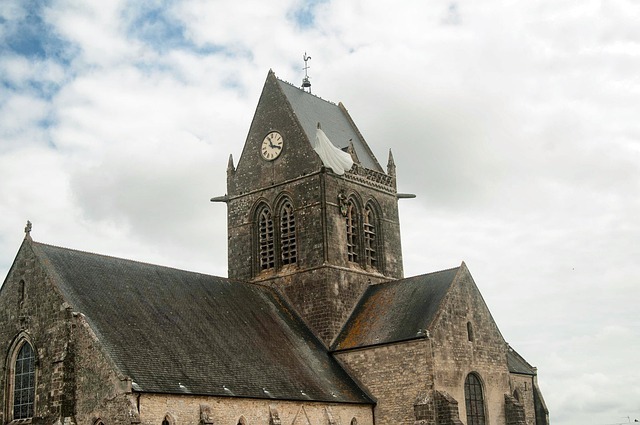
Afternoon: Sainte-Mère-Église
Driving time- 20 mins. 17km from Utah beach
It’s easy to assume Normandy is just the beaches and the landings there – as I found when I visited there’s so much more that went on!
One well known story is that of the airborne forces who landed troops just prior to the beach landings and who played a part in securing towns and strategic points. Sainte-Mère-Église received some of these forces who actually landed there by accident, and who planned to land further out. This wasn’t great for the Allies and many died and one man even got his parachute caught on the church steeple and he had to pretend to be dead to avoid being shot at.
Sainte-Mère-Église is a lovely town to walk around and explore. There’s one thing I love in France and it’s the feeling of the villages with cafes and bakeries just waiting to be enjoyed! You can see the church where the paratrooper got himself caught, there’s a dummy still on the steeple as a monument to him.
We also enjoyed the museum which talks about the role of the airborne troops in D-Day and what planes and gliders they used.
Parking – plenty of parking in the village itself.
If you have time: On the way to Carenten from Sainte-Mère-Église is the D-Day experience museum just outside the village of Saint-Côme-du-Mont
Overnight : You could choose to spend the evening in Sainte-Mère-Église itself – Logis Le Sainte Mere is a recommended hotel. Alternatively spend the evening in Carentan at the Hôtel Le Vauban and be a little bit closer to the next day’s sights.
Morning – Maisy Battery
Driving time – 20 mins. 20km from Carentan
Our second day starts at Maisy Battery which is a little known site near to Pointe du Hoc and which played a big role in what went on there. It’s basically a myriad of tunnels that the Germans used to attack the Allied forces from but the interesting part is that the whole story and site was lost to historians until just recently and when it was discovered it changed a lot of the perceptions of what actually happened on the day.
It’s only open in summer months but if you can add it in to your itinerary then it would be a great addition. Check their website here .

Pointe du Hoc
Driving time – 10 mins. 7 km from Maisy Battery
A short drive from Maisy Battery is Pointe Du Hoc itself. There’s a lot to look at here with many paths taking you around the site showing shelters and gun placements as well as a moving memorial right by the cliff’s edge. I found this site really moving myself and would definitely recommend a trip here – there’s a small visitor centre with a movie playing to help you get your head around what went on here.

Afternoon – Omaha beach
Driving time – 15 mins. 9km from Pointe Du Hoc
Omaha beach is another of the landing beaches that the American troops landed on and this one was not as successful as the Utah landing. As such there was a great number of lives lost here and many people come to pay their respects from all countries.
At the centre of the beach itself is a very moving memorial and the Memorial Museum of Omaha Beach and towards the eastern end (as you drive from Pointe Du Hoc) there is also another museum about D-Day at Omaha beach .
Parking – there is parking at either end of the beach or by the memorial in the middle but bear in mind how much walking you want to do before you decide where to park! It’s a lovely long beach with houses dotted along the beach front – plenty of time for walking and reflection.

American Cemetery
Driving time – 10 mins. 5km from Omaha Beach
Just up from the beach is the resting place for many of the Americans who lost their lives not just at Omaha but on the whole Normandy landing campaign. It’s a sombre and moving place but one that I feel should be seen if you’re going to the effort of visiting the WW2 sites.
There is no pathway from the beach at present – check their site out here for more information.
If you have time: just by the American Cemetery is the Overlord Museum with more artefacts and exhibitions about the Omaha landings
Overnight in Bayeux – The Hotel Du Luxembourg is a highly recommended 4 star hotel which would be a good option in the town.

Morning – Arromanches-les-Bains (Gold Beach)
Driving time – 20 mins. 12km from Bayeaux
Arromanches was one my favourite sites to visit myself, coming from someone who knew very little about the landings. You can see remnants of the artificial harbour that was created once the beaches were secured and when the tide is out actually walk up to them.
This is part of Gold beach which was one of the beaches that the British soldiers were charged with. There’s a museum here all about the landings and also the building of the harbour and how they used it to bring supplies to Europe.

Courselles-sur-Mer (Juno beach)
Driving time – 20 mins. 13km from Arromanches
Juno beach is just a small drive from Arromanches and you can see where the Canadian troops landed and fought. Again there’s a museum here dedicated to that story called the Juno Beach Centre . The town by Juno beach is called Courselles-sur-Mer and it’s a pleasant place to walk around and have lunch with a marina and cafes.

Afternoon – Ouistreham (Sword Beach)
Driving time – 30 mins. 20km from Courselles-sur-Mer
Finally our trip concludes with the British landing beach of Sword which is a wide open beach at the town of Ouistreham. This was the first beach we ever saw and it was very weird to see such a ‘normal’ looking beach with such history – wasn’t what I was expecting!
The town is big and perfect for supplies and to enjoy restaurants and other amenities. While in the town make sure to head to the Pegasus bridge memorial for another slightly different story – this is where British Commando troops were parachuted in the day before D-Day to secure the bridge. A museum tells the story and you can walk around outside to learn about what went on that day.
If you have time: Longues Sur Mer just east of Arromanches might be worth checking out at the beginning of your day – it’s a battery placement site which is free to enter with some tours also taking place that are good value. Ouistreham has a number of museums in the town too including one about Commandos and one about Hitler’s Sea wall.
Overnight : For your final night enjoy the small seaside town of Ouistreham, an evening walk on the beach and perhaps a French Pastry or two. There are number of good hotel options in the town like Hôtel le phare or La Villa Andry
Ouistreham is the port that Brittany Ferries uses (but actually calls Caen) so if you’re using them to get home this is the perfect stop for you.
More days in Normandy?
If you have more time to spend in Normandy then I suggest adding in some time in the towns of Caen, Bayeaux and really just slowing down and exploring the area. There’s so much more to Normandy than just the World War 2 sites and if you’re visiting with people who don’t have as much of an interest then it’s worth taking some days out from that.
We also really enjoyed the beaches on the west coast of Normandy on the Cotentin peninsula and of course there’s also Mont St Michel over that way too which is a must see!
Planning your trip
Useful links for planning your trip:
Brittany Ferries (Poole – Cherbourg. Portsmouth – Caen or Le Havre) DFDS Ferries (Newhaven – Dieppe) P&O Ferries (Dover – Calais)
Booking.com (Hotels and Apartments) Hotels.com (Hotels and Apartments) VRBO (Apartments and Rooms)
Skyscanner (flights – best airports are Caen from the UK or Paris for international flights) Discover Cars (car rentals)
Recommended books
I highly recommend the Liberation Route Europe book by Rough Guide that has recently come out. It tells a lot about the background of what was going on in the war prior to DDay and the eventual liberation. Will also inspire you to go to many more sites around Europe – just warning you!

The D-Day Visitors handbook also comes highly recommended although I haven’t seen it first hand. I’ll be sneaking a peak soon as planning to get one as a gift for someone!
A guide book to Normandy like this Rough Guide is also a good idea for the planning phases so you can see what else is around the area – vital if you want to enjoy more than just the WW2 history.
Finally a map is essential for your self drive tour – there are many available like this one – we ended up getting a ring bound France map since we were doing lots of driving in the country.
What to take to Normandy
If you’re coming from out of the country and renting a car then make sure to add in a sat nav system to your hire car. If sticking with a phone system then it’s really important to have a car charging kit so it doesn’t die while driving!
If you’re coming from the UK by car you’ll also need to have a European driving kit – this has the required items that you need by law over in France (each country has different rules and they do change but if I’m honest, having some hi vis vests and warning triangles in the car is not going to hurt – get them!).
You definitely need to have the GB sticker and some headlight deflectors as well as soon as you arrive – you can normally get them on the ferries but at a much higher price so worth getting in advance
France is a really easy country to navigate especially by car but I’d definitely recommend taking a really good road map with you just in case mobile or sat nav signals go down. This is like the one that we used .
As for a sat nav system I suggest that you make sure you either have some capability on your phone like we did or get a dedicated system with European maps like this one .
Pin for later!

Kirsty Bartholomew
6 thoughts on “D-Day beaches self drive tour (2023): a 3 day itinerary in Normandy, France”
Hi His blog was added to Best Travel Blogs 2020 to the WWII Travel Blogs & Tours list Kate Best Regards
Do you have any suggestions how to incorporate this itinerary with festivities on/around June 6? We are planning to go in June of 2024. Thanks
Hi Judy (apologies for the delay in replying – I only just came across this!)
so each year there’s A LOT of events going on around that time, although obviously COVID slowed it down, here was the 2022 programme of events . Quite a lot goes on.
I’d suggest to keep an eye on the Normandy Tourist Board website for when the years timetable gets updated and plan your trip around that.
You could base yourself fairly central to give yourself plenty of wiggle room to attend any events you want.
I’m an experienced guide for the Normandy battlefields and have some great tips for anyone travelling there. 1. If you want to attend for the D-Day anniversary book EARLY as anything within reasonable driving distance will be sold out. I guarantee it. 2. Do yourself a favor and don’t try to do a day trip from Paris. You will miss just way too much. It’s a three hour drive from Paris. 3. Don’t even waste your time with a 3-Day trip. On these itineraries you will drive right past A LOT of extremely historical locations and you won’t even know it. 4. I NEVER stay in hotels there. B&B’s are definitely the way to go. Many speak English and are a fantastic experience. I highly recommend Richard (Dick) Coopers place called Blazing Sky. He can hook you up with info, recommend tours, and his place played a part in the Airborne battles. BOOK EARLY!! 5. I HIGHLY suggest you book a tour. If you are going to do just 3 days, You can take a one day tour with many assorted guys. 5. Do yourself a favour and do at least 5 days. A week is HIGHLY recommended. Book three to four different tours. One to cover the British/Canadian battles. One to do the American Beaches etc. Then one or two days to cover the US Airborne battle locations. For instance, you will drive past 25-35 important locations just from St. Come du Mont to Ravenoville. They can get you access to very important places that you won’t get on your own. 6. If visiting for the DDay celebrations, be prepared to spend a lot of time in gridlock. It’s cool to see all the vehicles and jump demonstrations but you will miss out on seeing many important battle locations. April-September is a great time to visit and with the exception of the DDay dates, it will be easy to hit the important sites AND get a place to stay.
With the extra days you can hit Mont St. Michelle, Cherbourg, German Cemeteries, St. Lo, The Bayeau Tapestry and many other places.
I cannot recommend enough not doing it on your own!! You will miss SO much, even with a guide book.
I haven’t been guiding tours for several years, but I would consider doing fully arranged tours that will encompass lodging, tours, transportation (if need be), food, etc. Basically everything.
Thanks for the tips Mark!
Hi Mark You have provided great information. I can assume you have only scratched the surface! I have a group of 5-6 people who are retired US military interested in WE2 sites. We would like a guide – as you suggest to maximize our time. We intend to get a cruise 1 June 2024 , Le Havre to Paris as we finish Normandy area. What would you estimate the costs for such a group for say 5 days?
Leave a comment Cancel reply
- Share this article

Visiting the D-Day landing beaches in Normandy
- Posted by Louis and Emilie
- August 10, 2023
How to visit the D-Day landing beaches in Normandy? What is the name of the 5 landing beaches? Where to stay to visit the landing beaches? In this post, you will discover all you need to know for visiting the D-Day landing beaches in Normandy: here we go!
D-Day marks the starting point of Operation Overlord, also named the Battle of Normandy in french.
- What are the names of the 5 D-day landing beaches?
- TOP 12 places to visit
- Map of the landing beaches
- Where to stay to visit the landing beaches?
- How to organize the visit to the landing beaches?
- What to visit in Normandy?
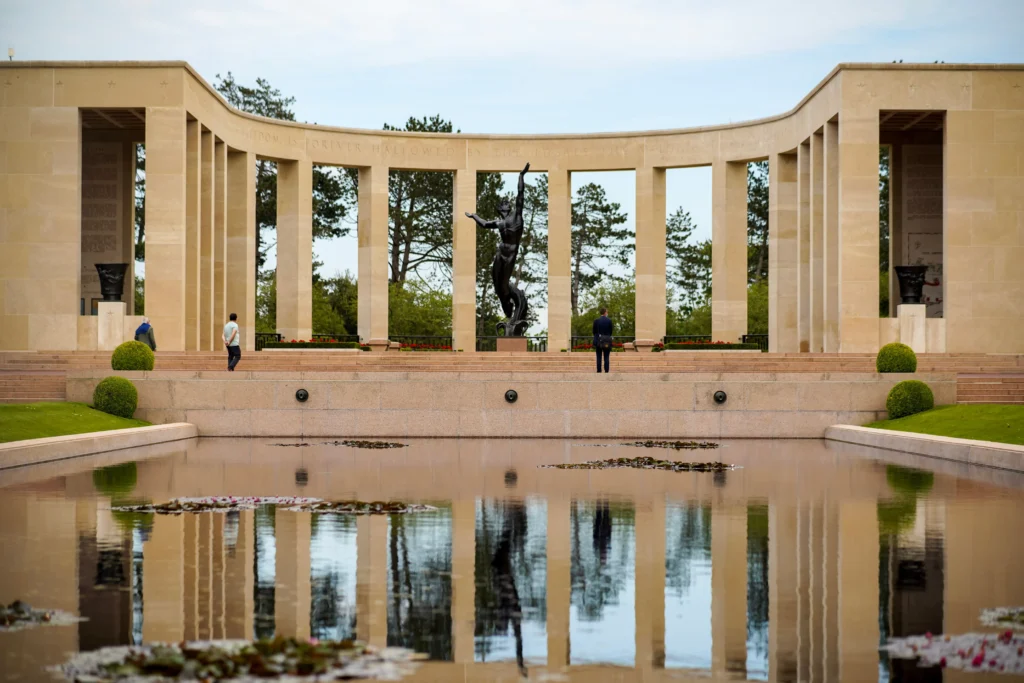
1. What are the 5 D-Day landing beaches in Normandy?
The 5 landing beaches in Normandy:
- Sword Beach (near Luc-sur-Mer)
- Juno Beach (Courseulles-sur-Mer)
- Gold Beach (between Asnelles and Ver-sur-Mer)
- Omaha Beach (Colleville-sur-Mer)
- Utah Beach (Domaine de Beauguillot National Nature Reserve)

2. The TOP 12 places to visit
Next to the landing beaches in Normandy, here are the TOP 12 places you can visit.
- Siet of the Poite du Hoc
- Juno beach center in Courseulles-sur-Mer : this center pays tribute to the 45,000 Canadians who lost their lives during the Second World War.
- Normandy Victory Museum and D-DAY experience in Carentan-les-Marais : a truly immersive and interactive tour of the Normandy landings. Moreover, it is one of the must-see sites to discover when visiting the landing beaches.
- Airborne Museum in Sainte-Mère-Eglise : the museum is opposite the bell tower at the end of which John Steele hung for a few hours. The museum aims to pay tribute to the American airborne troops of the 82nd and 101st divisions.
- American cemetery in Colleville-sur-Mer : this cemetery contains the graves of 9,387 soldiers who fell in combat. There is a chapel, a memorial, and the garden of the disappeared.
- British military cemetery in Bayeux : 4,000 British soldiers and 181 Canadian soldiers.
- Memorial Museum of the Battle of Normandy in Bayeux : this memorial retraces the course of the 77 days of fighting in the Battle of Normandy from June 7 to August 29, 1944. It is one of the places to discover when visiting the beaches of landing in Normandy.
- The German battery at Longues-sur-Mer : in the heart of the Allied assault sector, this battery played a strategic role during the landing.
- Coudehard-Montormel Memorial in Mont-Ormel : this memorial offers videos, interactive maps, and explanations to retrace the history of the Falaise pocket.
- Landing Museum in Arromanches-les-Bains : this was the first museum built to commemorate the Normandy landings. Here, you will find various objects, weapons, uniforms, and photos separated into different rooms dedicated to each nation: the United Kingdom, Canada, United States.
- German military cemetery in La Cambe : 21,222 soldiers are buried there.
- Battery Museum in Merville-Franceville-plage : Here was one of the coastal batteries of the Atlantic Wall, built by the German army during the Second World War.

3. Map of the D-Day landing beaches in Normandy
Here is a map for visiting the D-Day landing beaches in Normandy from Normandy’s official tourist information office .

4. Where to stay to visit the landing beaches in Normandy?
In which cities to stay near the landing beaches? The nearby towns convenient for visiting the landing beaches are Bayeux, Sainte-Mère-Eglise, Colleville-sur-Mer, Courseulles-sur-Mer, Arromanches-les-Bains and Colleville-sur-Mer. You can also stay in Caen, but it will take at least 1 hour to go to the landing beaches.
4.1 Where to stay in Bayeux
It is one of the most significant towns in the area. Moreover, it can be considered a central point for visiting all the landing beaches. You can stay here for several nights and visit the different places from here. The advantage is always staying in the same place and therefore avoiding unpacking and repacking things. On the other hand, the drawback is traveling every day.
- Located in the heart of Bayeux, the Hôtel Particulier “Le Clos de la Croix” is an excellent place to stay. The rooms are spacious, the breakfast is delicious, and there is a garden and a terrace.
- In a private mansion dating from the 18th century, located in the former botanical garden of Bayeux, you will love the apartments, Le Tardif, Noble Guesthouse offers. Period furniture, varnished parquet, and a swimming pool.
- You can also opt for a bed and breakfast at Le Petit Matin , located in an 18th-century building in the historic district of Bayeux.
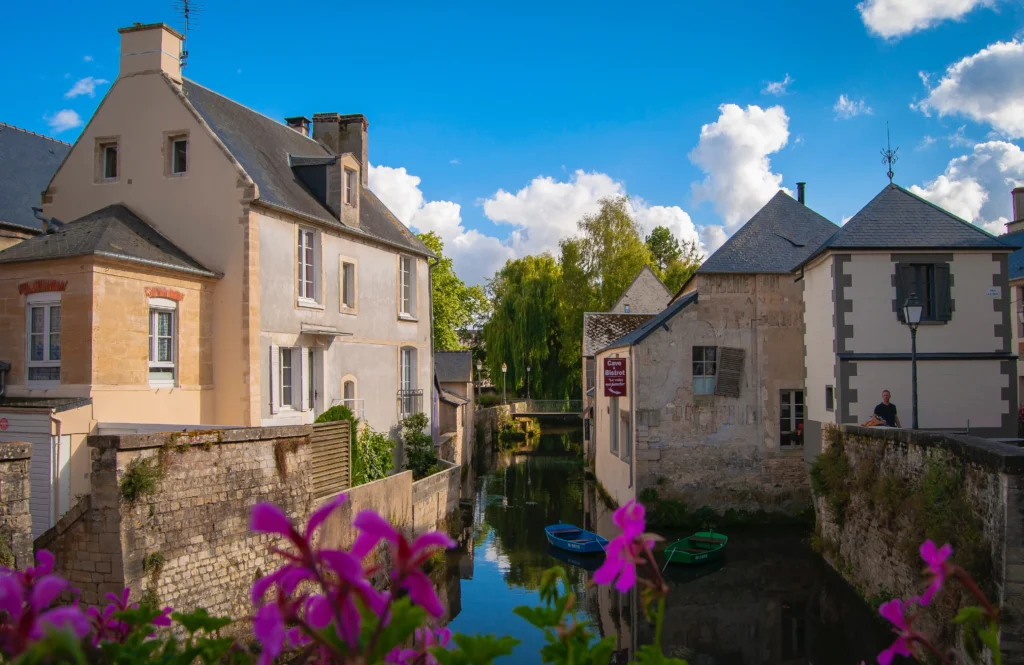
4.2 Where to stay when visiting the D-Day landing beaches
If you choose to visit the D-Day landing beaches in Normandy in several small “stopovers”, you can stop at Sainte-Mère-Eglise, Colleville-sur-Mer, then Courseulles-sur-Mer. Thus, you can stay a night in each place and leave the next day for the rest of the itinerary. The advantage is that you drive less every day, so you can enjoy the sites more once you are there.
Where to stay in Sainte-Mère-Eglise? 4 km from Sainte-Mère-Eglise, you can spend a night in this splendid manor house offering double rooms and family suites: Le Manoir De Juganville . It is a pretty 16th-century residence with a beautiful garden just 5 minutes by car from the seafront and the Utah Beach landing beach.
Where to stay in Colleville-sur-Mer? You can also move away from the coast and stay in this beautiful castle 7km from Colleville: Le Château d’Asnières en Bessin . It is a perfect place to stay to visit the landing beaches.
Where to stay in Courseulles-sur-Mer? In Courseulles-sur-Mer, the hotel La Cremaillere is very well located: facing the sea and in the town center. There are rooms for two people, but also 6 with a sea view! On the beach, if you visit the landing beaches alone or as a couple, you can stay in this charming studio facing the sea.
5. How to organize your trip? Itinerary in 10 steps!
Here is how you can organize the visit to the D-Day landing beaches in Normandy in several steps: an idea of an itinerary in 10 stages from West to East, ending the visit with Caen.
- Go to Pointe du Hoc : to the west of the 5 landing beaches, it is an impressive battlefield site to visit in Normandy and Calvados. A breathtaking view of the cliffs and the English Channel!
- Visit Sainte-Mère-Eglise : the museum is opposite the bell tower, at the end of which John Steele hung for a few hours. The museum aims to pay tribute to the American airborne troops of the 82nd and 101st divisions.
- Go to the Utah Beach landing beach in the Domaine de Beauguillot National Nature Reserve.
- Live the day of the landing at the D-DAY experience : in Carentan-les-Marais, in this memorial, you can relive the landing day in an immersive way.
- Visit the American Cemetery in Colleville-sur-Mer and the landing beach at Omaha Beach
- Go to Bayeux
- Visit the Gold Beach between Asnelles and Ver-sur-Mer
- Go to the Juno Beach landing beach in Courseulles-sur-Mer
- Visit Sword Beach near Luc-sur-Mer
- Visit Caen : when you visit the landing beaches, you can take the opportunity to discover Caen, its castle, but also its religious and historical heritage. Find out more in: Visit Caen.
6. What to visit in Normandy?
The D-Day landing beaches are not the only places to visit in Normandy; far from it! During your stay, you can discover other places. For example:
- See the magnificent cliffs of Etretat ( find out how to visit Etretat in this post )
- Visit the flowery coast with cities like Deauville and Trouville
- Visit Rouen
- Discover the most beautiful villages in Normandy and, in particular, the town of Claude Monnet: Giverny
Visiting the D-Day landing beaches in Normandy is one of the essential things to do on the Normandy coast to learn more about the history of the Second World War. During the visit, you can also enjoy the incredible beaches and landscapes. It is a family visit to remember these events in our history.
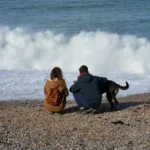
Louis and Emilie
We once heard visitors in Paris saying that the French are not the most welcoming people. It made us sad. That's why we started this blog! So you can get the best information for your travel to France! Of course, we love Paris. We have lived in multiple areas, from Canal St Martin to right next to the Eiffel Tower. We also explore regions of France whenever we can. Our favorites for a weekend away from Paris are Etretat and Mont Saint Michel. The beautiful French Riviera is a marvelous place to explore for a week.
Leave a Comment
Leave a reply cancel reply.
Your email address will not be published. Required fields are marked *
Save my name, email, and website in this browser for the next time I comment.
- Skip to main content
- Skip to primary sidebar
- Skip to footer
Dreamer at Heart |
How To Visit The D-Day Beaches In Normandy France
Last Updated: May 31, 2024 By Alison Browne Leave a Comment
How to visit the D-Day Beaches in Normandy France is a question asked by many. Which landing beach should I go to first? How will I get the full experience and understanding of what transpired during the Allied invasion here during World War II on June 6, 1944?
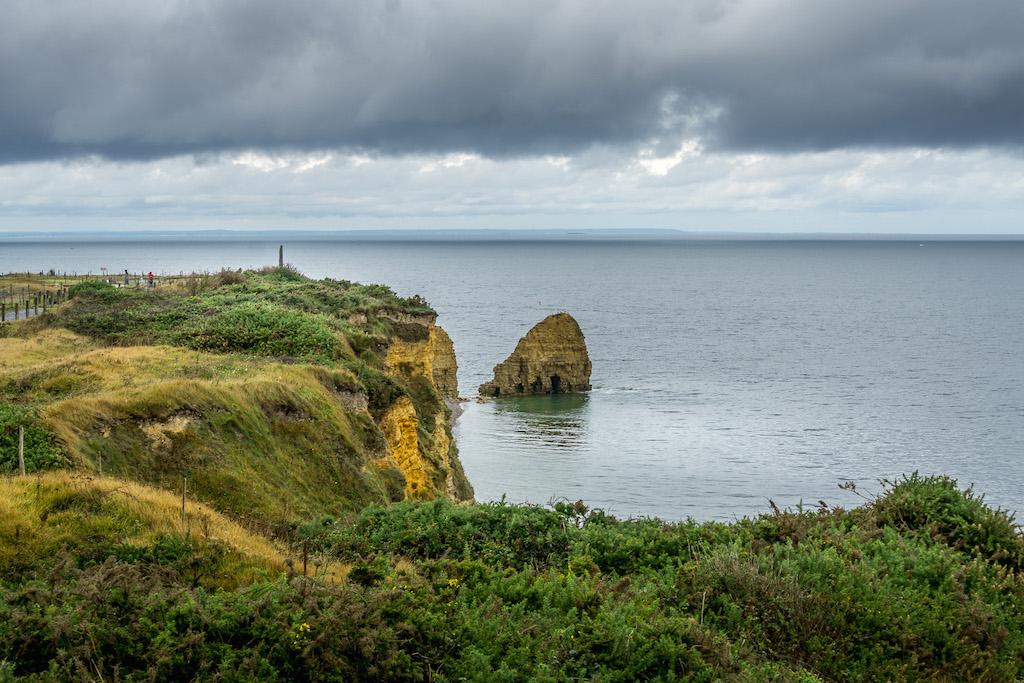
FAQ: How To Visit The D-Day Beaches In Normandy
How to visit the d-day beaches in normandy france: by car.
Although I did not visit the D-Day Beaches in Normandy by car, I know in my traveller’s heart that this is the best way to tour the Normandy beaches, especially if you have plenty of time. This allows you to choose which beaches, memorials, graveyards and monuments to visit. It allows you to go at your own pace and stay longer when you want to. It opens the avenue to visiting small towns that have photographs of the Liberation of France hanging on their doorways and along their streets. Rent a car.
Pro Travel Tip : There are more car rental agencies available in Caen than in Bayeux.
Rent your car in France for the best way to visit the D-Day Beaches.
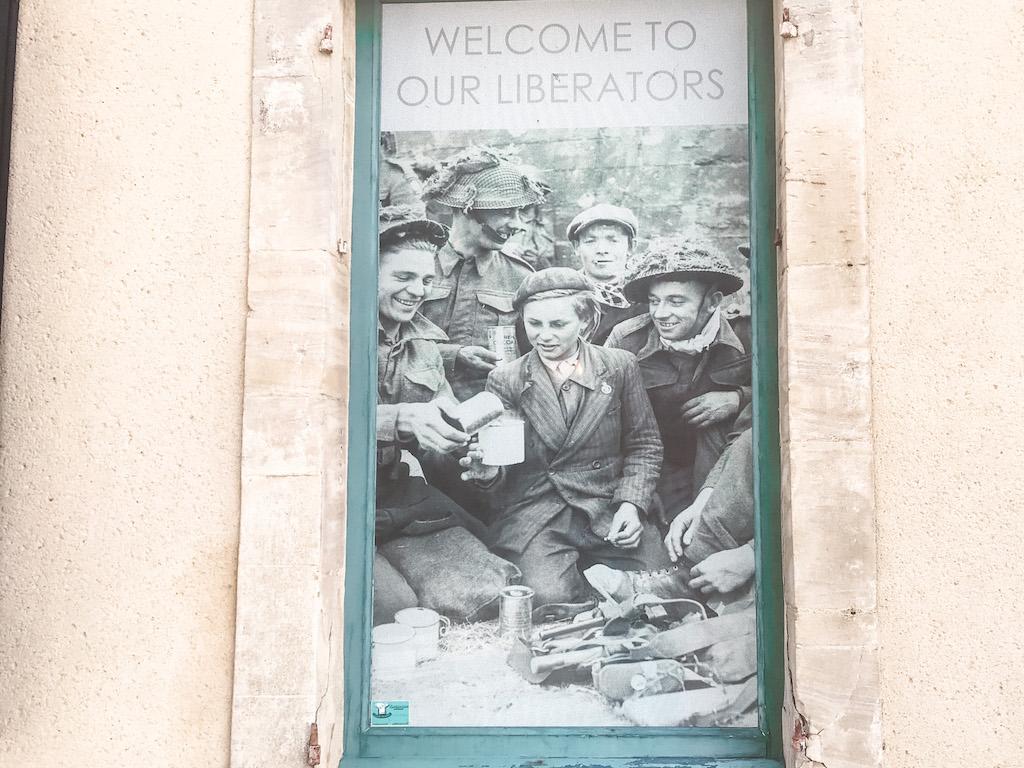
Visiting The D-Day Beaches In Normandy France: By Guided Tour
I arrived in Bayeux after having done some research on car rentals, guided tours, and buses. It was September in the year of COVID-19 and tourism was at an all-time low. I booked a small group tour with Gold Beach Company .
The advantage of taking a tour is, of course, the guide. My guide, Adeline, was a local history buff and knew how to make the tour engaging by telling stories and facts about D-Day and the D-day beaches. The D-Day sites are spread out over an extensive area, making a local guide invaluable in making the most of your time. It was worth every cent.
Pro Travel Tip : Many guided tours pick up in Bayeux.
Suggested Tours:
Normandy Beaches: From Paris – a full-day tour including lunch and From Paris – a full-day small group tou r
From Bayeux – American D-Day sites (4 to 8 hours)
From Bayeux- Canadian D-Day sites
How To Visit The D-Day Beaches In Normandy: By Local Bus
On this trip of mine through Normandy, I relied on the local buses and trains. But, the buses do not run very regularly, especially in the off-season to the D-Day sites. If you have a lot of time, I think it would be doable but you would have to pay very close attention to the schedules.
Where Is The Best Base For Visiting The D-Day Beaches In Normandy?
Both Bayeux (population of approximately 13 000) and Caen (population of approximately 106 000) make excellent bases for visiting the D-Day Beaches. Both cities are accessible by train from Paris. Getting to Bayeux involves one change in Caen. Book my train ticket
Hotels To Stay At In Caen and Bayeux:
Looking for a hotel? Check hotels in Caen here . Check hotels in Bayeux here . I stayed very close to the Bayeux cathedral in this bed and breakfast .
Read More: Here is my full article on what to see in Bayeux France.
Read More: If you are staying in Bayeux, be sure to visit the famous Bayeux Tapestry, almost 1000 years old. Here are some fascinating facts about it .
How Long Is Needed To Visit The D-Day Beaches In Normandy?
This, of course, is a personal preference. I only had one half-day and can honestly admit that it was a perfect introduction but left me wanting more. More stories. A chance to see additional sites. More photographs. A deeper understanding of this monumental event. More reflection time.
Planning Your Trip to Normandy?
Book your airline tickets with my favourite platform, Skyscanner. Normandy is serviced by three international airports: Paris Charles de Gaulle, Paris Orly, and Nantes.
Reserve train tickets to get from Paris to Caen or Bayeux.
A Few Facts About The Invasion Of Normandy
Operation Overlord was the name given to the overall plan for the Allied invasion of Normandy during World War II. It included both land and air components. Its primary objective was to establish a foothold on the continent and begin the liberation of Western Europe from German occupation.
Operation Neptune was specifically the naval component of the invasion. It involved the transportation of troops and supplies across the English Channel to the beaches of Normandy. The success of Operation Neptune was critical to the success of Operation Overlord, as it was the means by which the Allied forces were able to land on the beaches and establish a beachhead.
On June 6, 1944, the Allied Expeditionary Force, led by General Dwight D. Eisenhower, landed along the French coastline of Normandy in what was and still remains the largest seaborne invasion in history.
Critical Invasion Before The D Day Landings
The 82nd Airborne Division was a key unit in the Allied invasion of Normandy during World War II. On the night of June 5, 1944, more than 13,000 paratroopers from the division were dropped behind enemy lines in Normandy, with the objective of securing key bridges and disrupting German defences.
The mission was highly dangerous, as the paratroopers faced intense anti-aircraft fire, and many were dropped far from their intended landing zones. Despite these challenges, the 82nd Airborne Division was able to successfully complete their mission, with some units even capturing key targets such as the town of Sainte-Mère Eglise and La Fière bridge.
The Normandy Landing Beaches
The Allied troops landed at five different beaches along a 50-mile stretch on the Normandy shores. The beaches were all given a code name for the invasion and those names are still used today. The Americans landed at Utah Beach and Omaha Beach. The British landed at Gold Beach and Sword Beach and the Canadians landed at Juno Beach. The Normandy invasion beaches from west to east are Utah, Omaha, Gold, Juno, and Sword.
Read More | How The French Celebrate Armistice Day on November 11 each year.
Pointe du Hoc, Normandy France
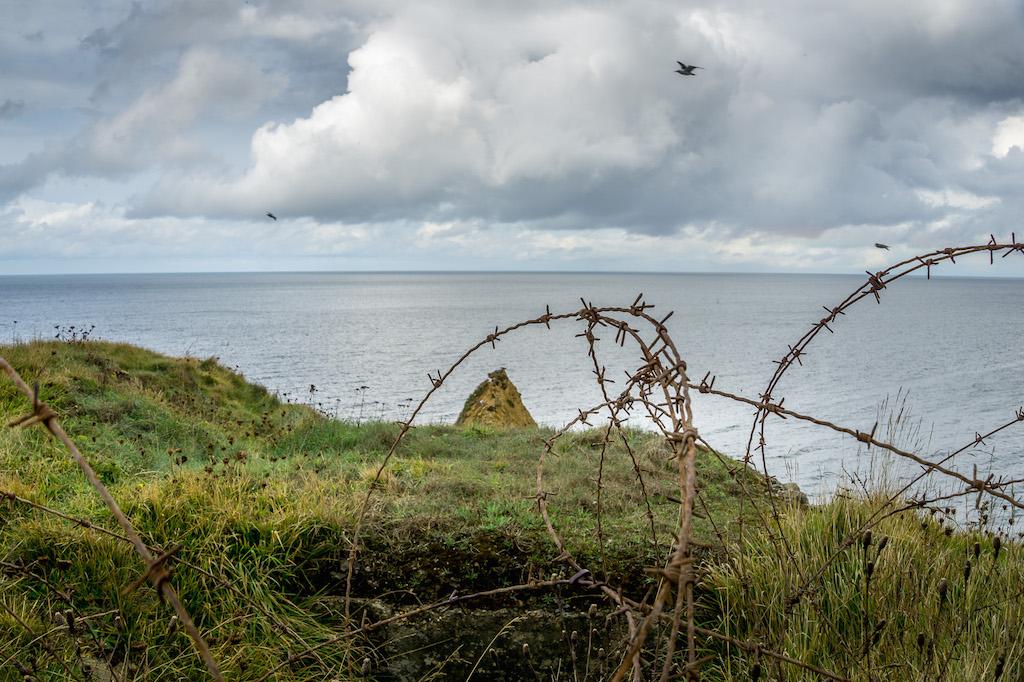
The first stop on our tour of D-Day beaches in Normandy was Pointe du Hoc. The deep craters in the landscape where bombs fell and the remaining German concrete bunkers make an immediate impression.
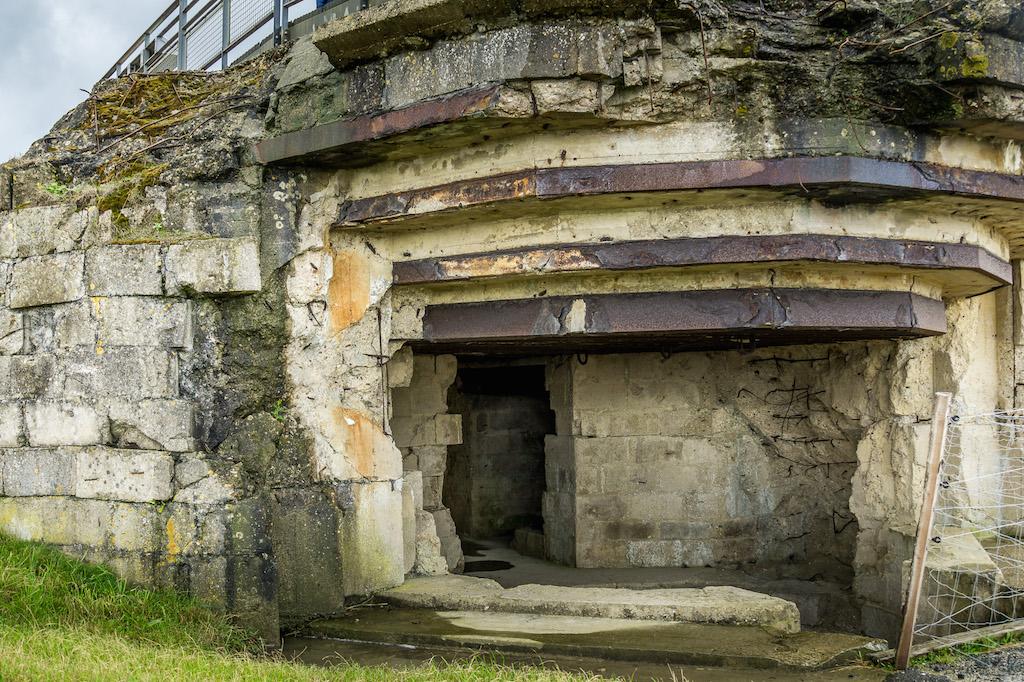
Here, on this bluff jutting into the sea between the D-Day beaches of Utah and Omaha, the 2nd Ranger Battalion soldiers carried out a plan that resulted in a terribly high cost of lives.
Over the course of three days, June 6, 7, and 8 1944, the Commandoes scaled the 100-foot cliffs with a mission to disable the German guns atop that could easily fire on Utah and Omaha Beaches. The Germans had already moved the guns further inland. The Rangers eventually found and destroyed the artillery.
The casualties were high. And after starting with 225 soldiers, only 90 remained standing.
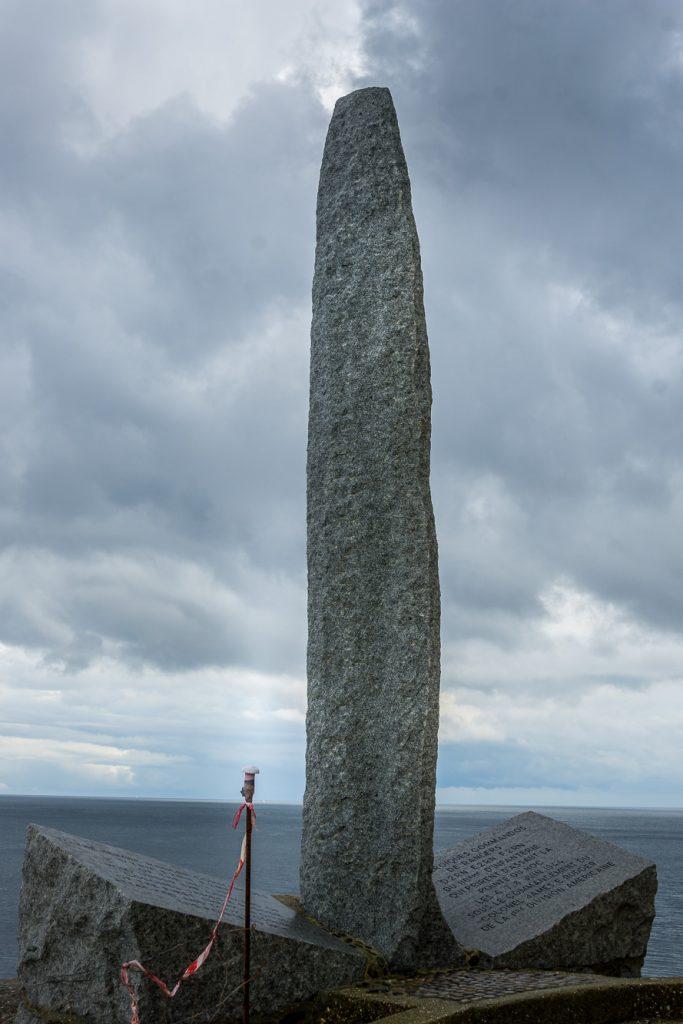
The Memorial at Pointe du Hoc: To the Heroic Rangers Commandoes D2RN E2Rn F2RN of the 46th INF who under the Command of Colonel James E. Rudder of the First American Division attacked and took possession of the Pointe du Hoc.
The United States: Utah Beach And Omaha Beach
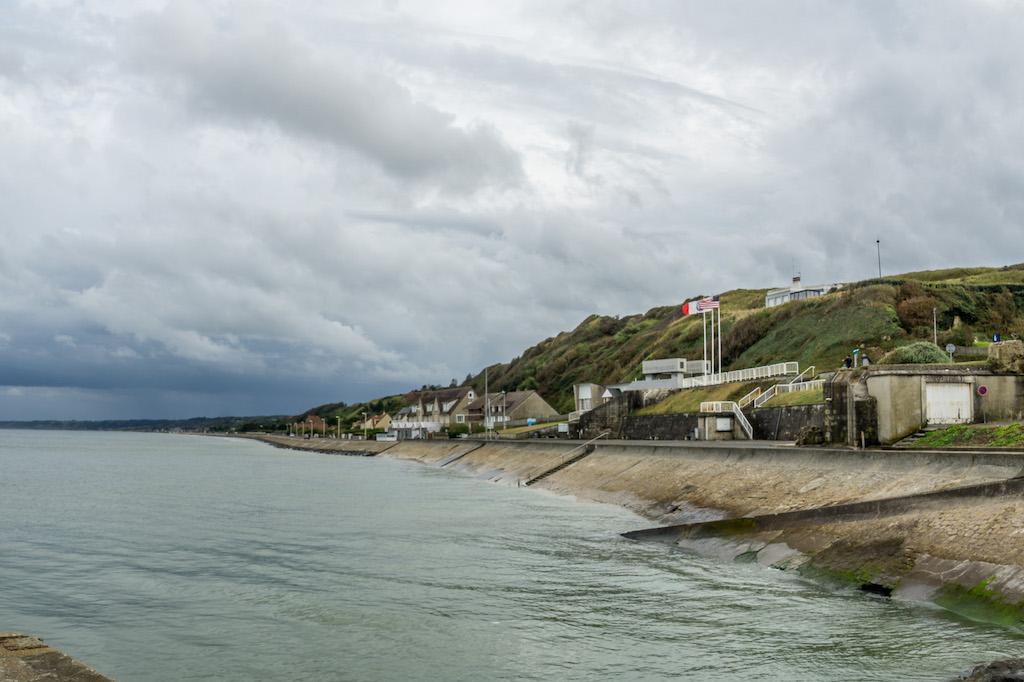
The 4th Infantry Division played a crucial role in the Allied invasion of Normandy during World War II. On June 6, 1944, the division was tasked with landing on Utah Beach. Despite facing heavy resistance from German troops, the 4th Infantry Division was able to secure the beachhead and begin their advance inland. The 4th Infantry Division’s actions at Utah Beach were a significant turning point in the war.
Of the five D-Day Beaches in Normandy, Omaha Beach was the bloodiest of all the landings. Standing on the beach under the bluffs it is hard to fully imagine what went on that Tuesday morning so many years ago.
I try to feel what it would be like to land in the water with my gun and hear German guns shooting down all around. I try to understand the sensation of my fellow soldiers dropping beside me, in the water, on the shore.
Looking up at the cliffs, I imagine a hail of German bullets, bombs and artillery raining down on the young American soldiers.
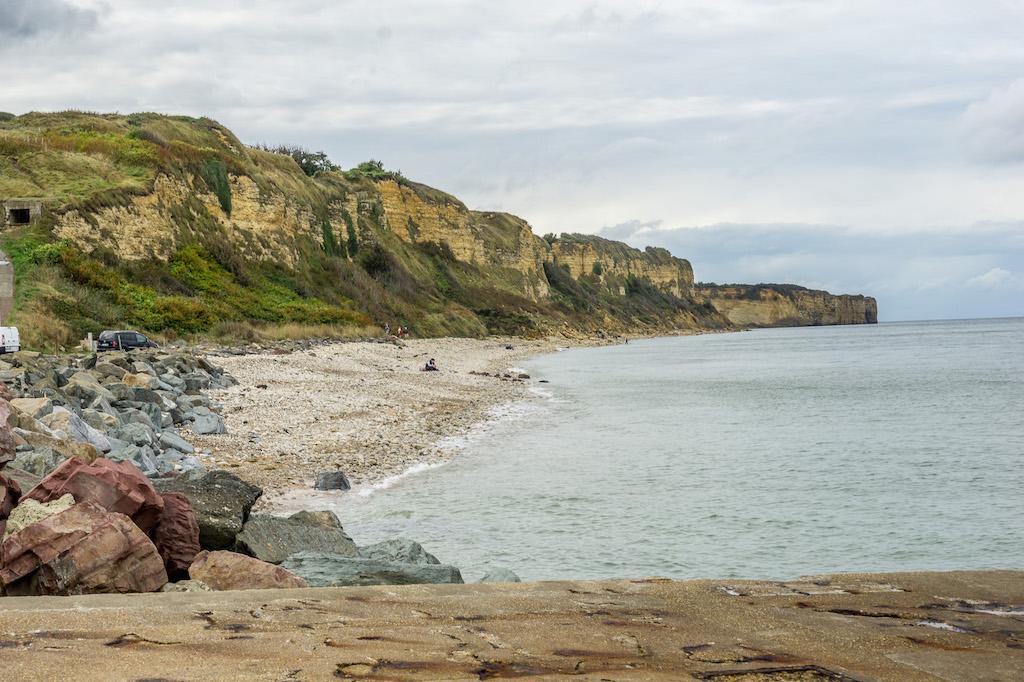
I know what I sense is a mere fraction of the reality.
But it isn’t hard to be in awe of the courage and dedication that each young soldier brought to the battlefield. It isn’t hard to imagine the fear and bravado all entangled. It isn’t hard to imagine the sea turning bright red. My heart stands still.
D-Day Beaches Itinerary: The Juno Beach Centre honours the 45 000 Canadians who lost their lives in WWII. Located in the small town of Courseulles-sur-Mer, it is a War Museum and Cultural Centre.
Visiting D-Day Beaches In Normandy: Les Braves
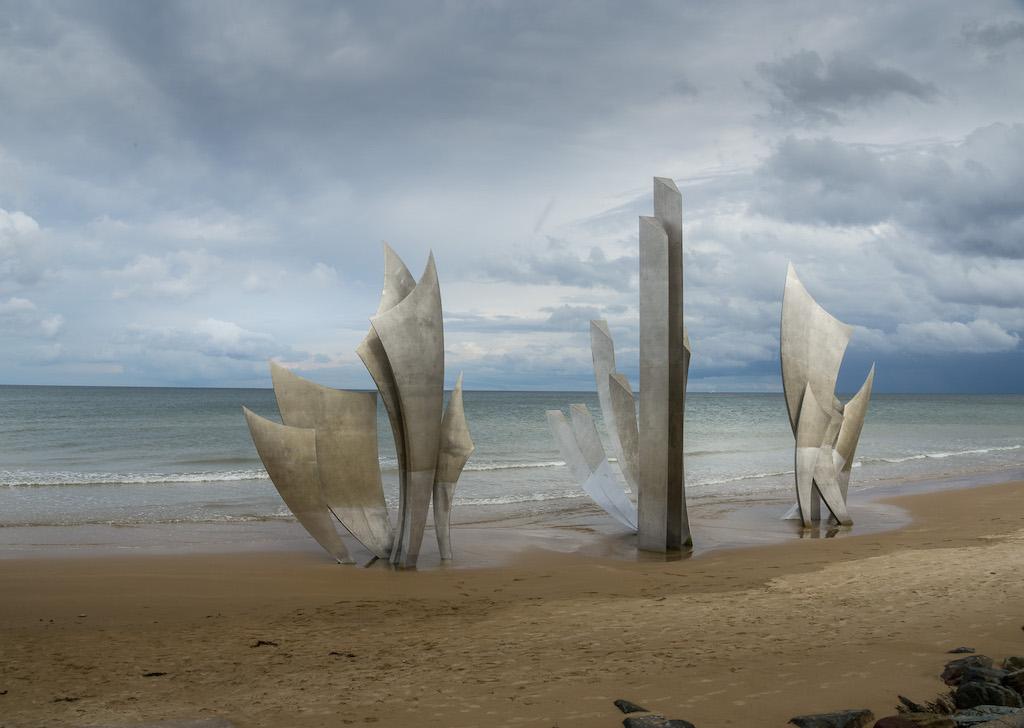
Our van was scooting past this memorial which is a little further down Omaha beach than where we had initially stopped. I had to ask the guide to stop.
As this monument, Les Braves rises from the sea, its impact is powerful. Standing on the shore where thousands of soldiers arrived to meet their death and the seas were cherry red with their blood, this monument demands something of the visitor. It is not a drive-by, nor a five-minute stop to check off the list. It requires one to stand in silence against the crashing waves and imagine what transpired here. It’s a time to let gratitude flow through you.
This Omaha Beach Memorial, created by Anilore Banon is called Les Braves. He is quoted as saying “I created this sculpture to honour the courage of these men: Sons, husbands, and fathers who endangered and often sacrificed their lives in the hope of freeing the French people.”
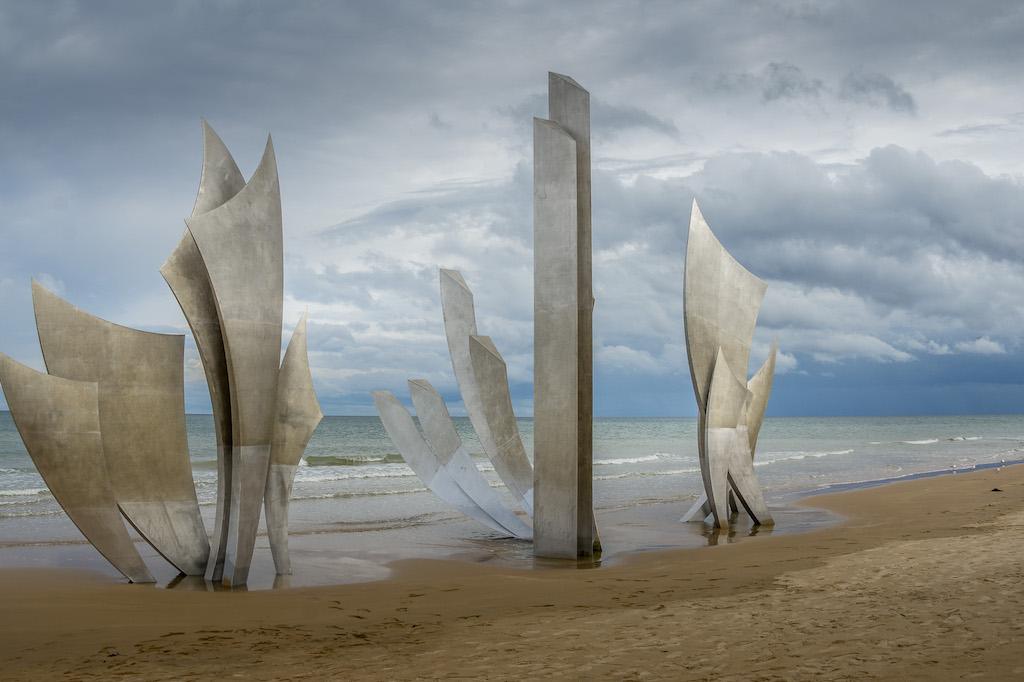
The sculpture is in three elements: The Wings of Hope to remind us that together it is always possible to change the future.
Rise, Freedom! Honouring those who rose against barbarity to help us remain standing strong against all forms of inhumanity.
The Wings of Fraternity to remember this surge of brotherhood reminding us of our responsibility towards others as well as ourselves. On June 6, 1944, these men were more than soldiers, they were our brothers.
Read More : Here are 13 other fabulous day trips from Paris .
The Normandy American Cemetery And Memorial
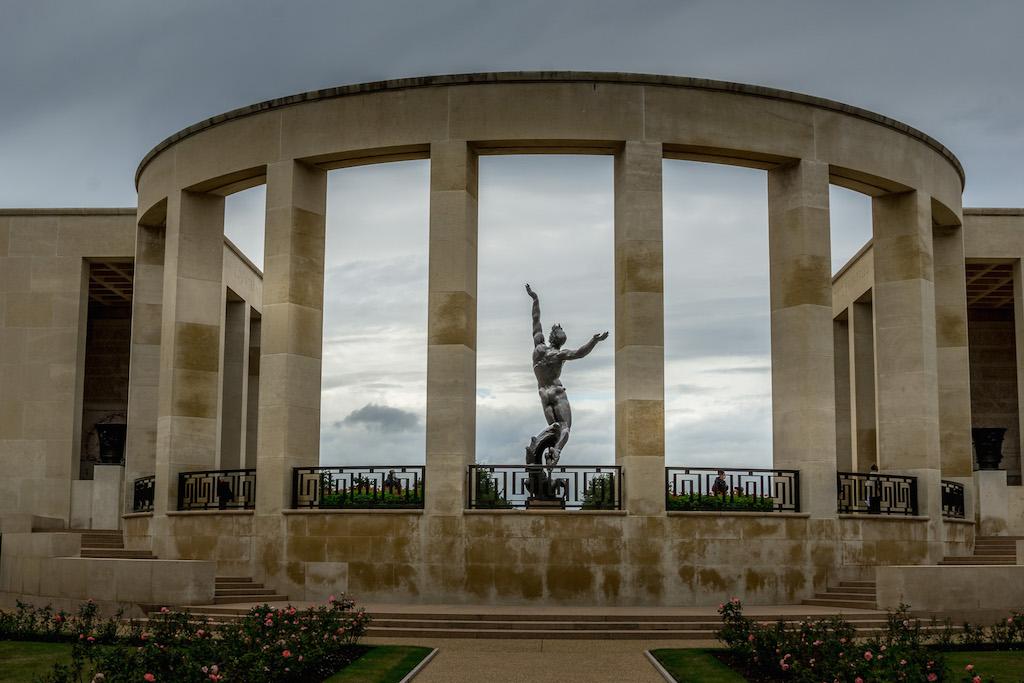
I had no idea what to expect.
The glorious statue, Spirit of American Youth, invites you to enter. And there, 1557 engraved names of soldiers missing in action encircle you. Those that have a rosette beside their name have since been found.
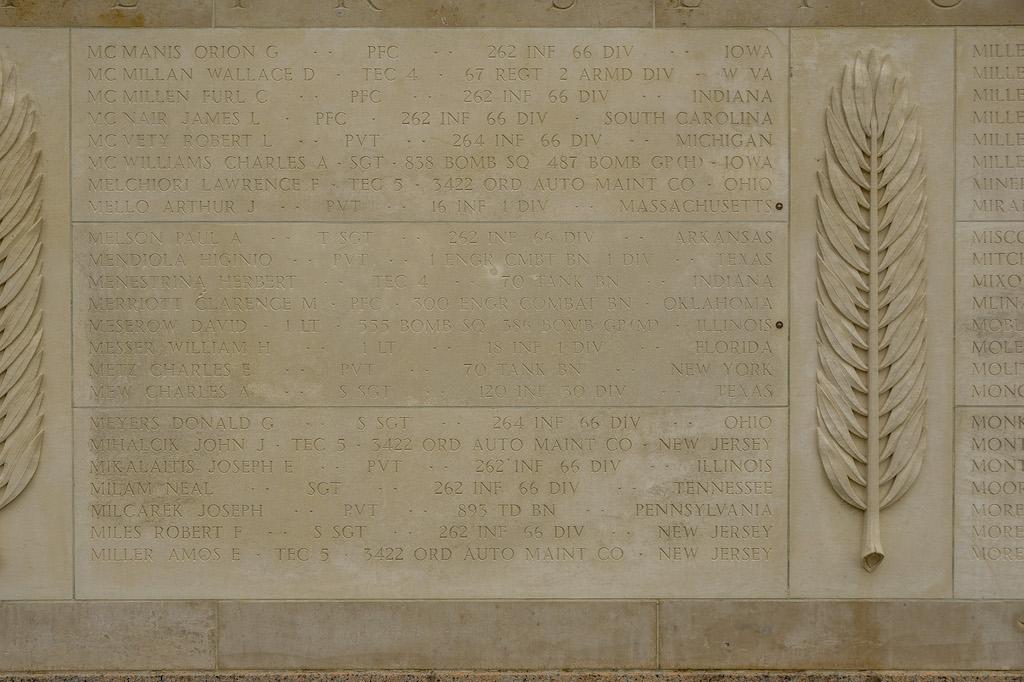
Ahead there are 9387 white headstones that stretch as far as the eye can see between the forest and the English Channel, perched over Omaha Beach.
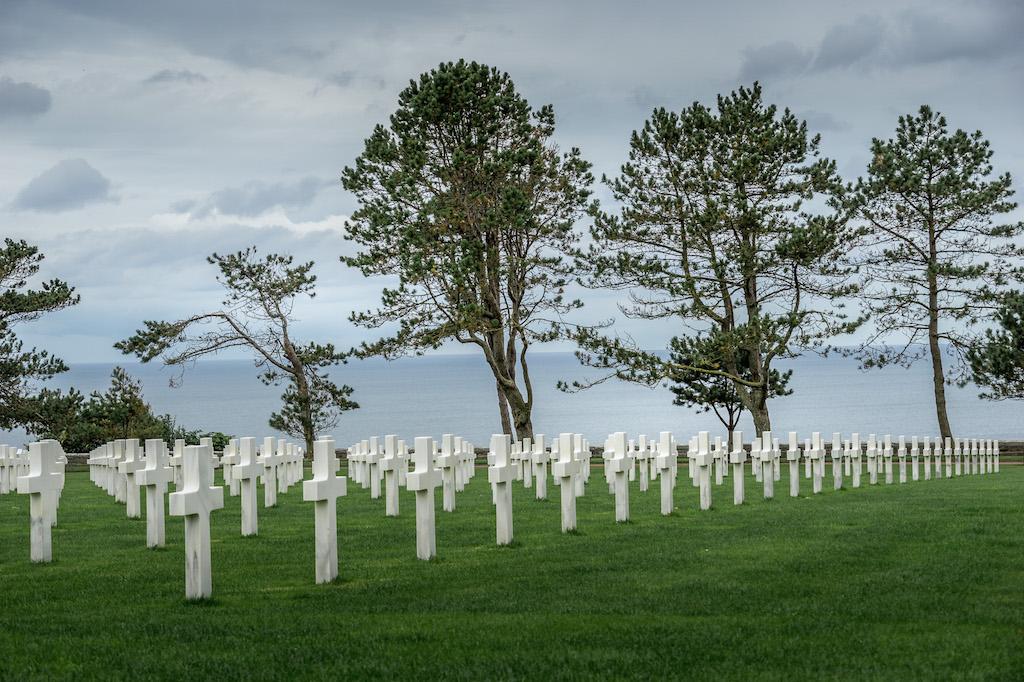
As a mother, as a sister, as a human being, it is impossible not to be impacted as standing amidst the rows of crosses.
The Artificial Harbour Near Arromanches-les-Bains
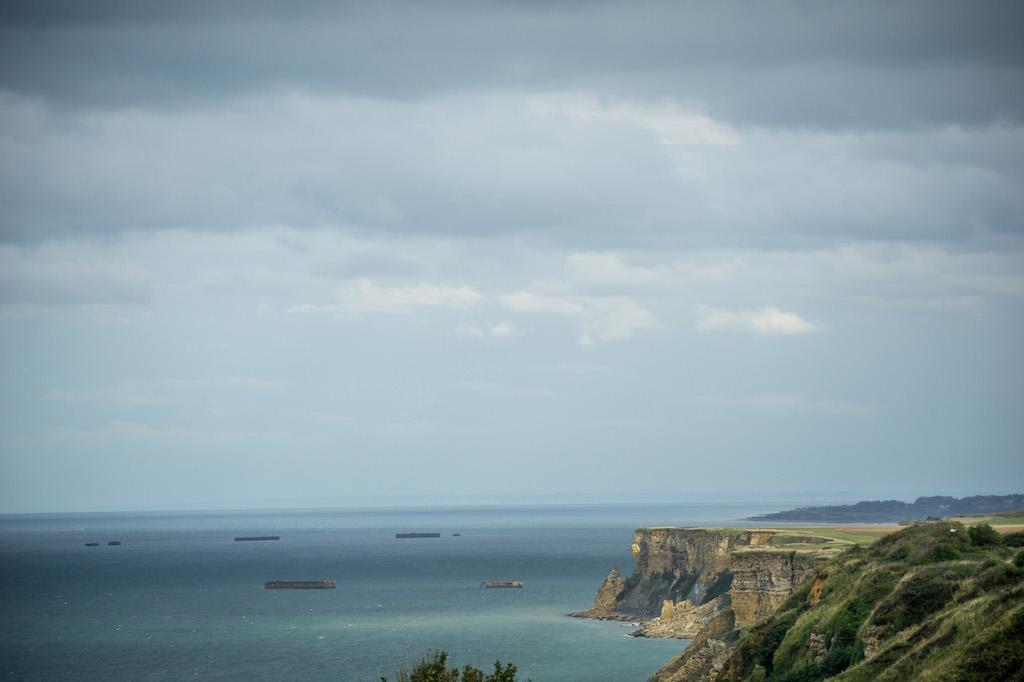
From a distance, our group viewed and listened to the ingenious plan of Sir Winston Churchill to create two fake harbours that also acted as a breakwater so that Allied troops could bring reinforcements and equipment to France.
On the morning of June 6, 1944, huge concrete chambers were towed towards the Normandy coast and then sunk into place creating Mulberry Harbour. German pilots saw the concrete chambers heading to France but could not figure out what they were seeing.
The concrete blocks still remain today and can be seen off the shores of Arromanches-les-Bains. The D-Day Museum here goes into detail about creating the Harbour, also known as Port Winston.
I went to the D-Day Beaches in Normandy to pay my respects, to stand and feel where recent history took place and to appreciate the liberties and freedom that I have today. I hope you enjoy visiting the D-Day Beaches in France as much as I did.
Until next time,

Liberté – Liberty: A Poem By Eluard
“Liberté” written in 1942 during the German occupation by French poet Paul Eluard:
an excerpt:
See the full poem here .
Lest We Forget…

More Travel Info
Planning your itinerary for normandy france.
You might also like this post, 19 Wonderful Things to do in Normandy .
There are also many individual articles on specific places to help you plan your trip to this incredible region of France.
Honfleur: An Authentic Taste of Normandy
The Magnificent Soaring Cliffs of Etretat
Deauville and Trouville-sur-Mer: A Seaside Day Trip From Paris
How To Eat Oysters Like the French
Visiting Mont-Saint-Michel: A Timeless Beauty
Movies About The D-Day Beaches in Normandy France were :
The longest day (1962).
Our guide recommended this movie as the most realistic account of the landing at Omaha Beach. I watched it recently and would say that for those of you who haven’t seen it, it is a must. Watch it before your visit, or after as I did or simply to get a glimpse into June 6, 1944.
Saving Private Ryan (1998)
Overlord (1975), like this post pin it.
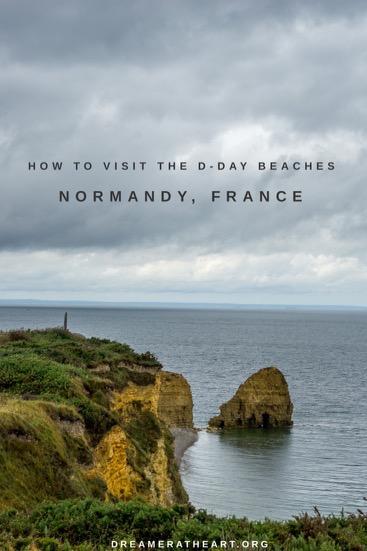
You might also like...

Alison Browne
Creator and Founder of Dreamer at Heart Alison, a Francophile from a young age, is following a long-held dream and has been living in Paris since 2020. Her passion for uncovering Paris and discovering the regions of France has resulted in an expertise about France that she loves to share in her articles. Also a solo traveller, Alison shares her experiences of solo travel to many corners of the world. Alison helps over 65000 readers a month plan their trips.
Reader Interactions
Leave a reply cancel reply.
Your email address will not be published. Required fields are marked *
Save my name, email, and website in this browser for the next time I comment.
Have Paris travel questions? France? Solo travel?
Contact me at


A Decrease font size. A Reset font size. A Increase font size.
- The 3 museums
- The Bayeux Tapestry
- Memorial Museum of the Battle of Normandy
- MAHB Museum of Art and History Baron Gérard
- Practical information
- You are… ?
- Disabled visitor
- You are a group

Gateway to the D-Day Landing beaches

Accueil > Visiting Bayeux > Gateway to the D-Day Landing beaches

The 5 D-Day beaches in Normandy
Initially planned for 5 June, Operation Neptune, the biggest amphibian military operation of the Second World War, was delayed until the following day due to adverse weather conditions. Several assault phases had been planned for the initial stages of the soldiers’ landings on the beaches: a massive airborne operation and intensive bombing in order to neutralise the German defences.
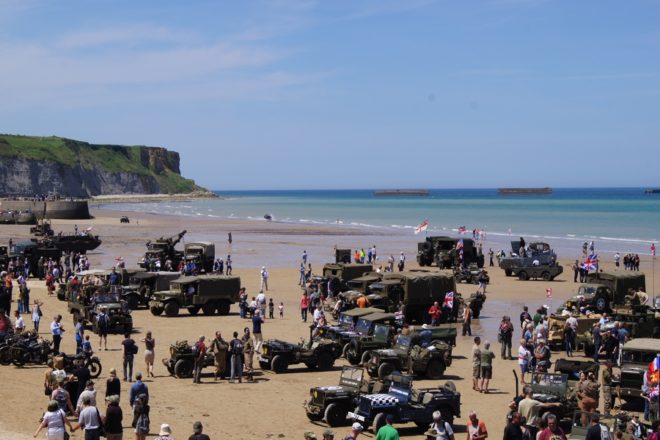
Visiting the D-Day beaches
A variety of ways to visit the D-Day beaches is on offer in the area of Bayeux and the surrounding Bessin area. Minibus excursions with a driver-guide are available from many hotels. A different perspective on the events of 6 June can be gained by flying over the beaches in a microlight or paraglider. You can also climb into one of the famous Willys MB jeeps for a ride along the chaotic roads of Liberty….
The Normandy coastline is home to the five historical D-Day beaches: Sword Beach and Gold Beach for the Franco-British sector, Juno Beach for the Canadians, and Omaha and Utah Beach for the Americans. Easily accessible from Bayeux, these sites and their memorials are key locations for visitors interested in the Battle of Normandy.
From the city of Bayeux, visitors can easily access the D-Day landing beaches and memorials, with stops at Arromanches, the American Cemetery at Omaha Beach, and Pointe du Hoc. A variety of accommodations, guided tours, and transport services are offered within the Bayeux and Bessin area in Normandy, providing support for planning an exploration of the D-Day beaches.
D-Day beaches

- 1.1 The landings
- 1.2 Other allies
- 1.4 Climate
- 3.3 Bicycle
- 3.4 Guided tours
- 4.1 Sword Beach
- 4.2 Juno Beach
- 4.3 Gold Beach
- 4.4 Omaha Beach
- 4.5 Utah Beach
- 5 The technical side
- 6.1 Around Caen
- 6.2 Cotentin Peninsula
- 6.3 American breakout
- 6.4 Falaise
- 6.5 Overall result
- 7 After Normandy
- 8 Cemeteries
The D-Day Beaches are in the Calvados and Manche departments of Normandy , France . They were the landing places for the Allied invasion of western Europe during World War II .
An excellent time to visit is on the June 6th anniversary when there are numerous memorial ceremonies to mark the occasion. A large number of reenactment groups attend, adding pageantry and atmosphere. The church bells ring in the towns to celebrate the anniversary of their liberation. The French people will be happy to see you - these people remember, and the welcome will be warm.
It has been a long time since 1944 and not many of the old soldiers survive, but those that do often return to these beaches on June 6th. For the 70th anniversary in 2014, 90-year-old Royal Navy veteran Bernard Jordan was denied permission to leave his nursing home because of his health; he snuck out and got on a ferry to France anyway. Two elderly paratroopers, a 93-year-old American and an 89-year-old Briton, jumped into France that day as they had 70 years earlier.

On 6 June 1944 (D-Day), the long-awaited invasion of Northwest Europe (Operation Overlord) began with Allied landings on the coast of Normandy (Operation Neptune).
The task was formidable, for the Germans had turned the coastline into an interlinked series of strongpoints with artillery, machine guns, pillboxes, barbed wire, land mines, and beach obstacles. Germany had 50 divisions in northern France and the Low Countries , including at least a dozen in position to immediately be used against this invasion.
Following an extensive air and sea bombardment of the assault areas, the Allies launched a simultaneous landing of U.S., British and Canadian forces. About 160,000 ground troops landed that day, roughly half American and half Commonwealth. About 4,000 ships, 11,000 planes, and many thousands of sailors and airmen also took part in the operation.
Overall commander of Allied forces in Europe was the American General Dwight D. Eisenhower, who would later become the country's president, while the British General Bernard Montgomery was in charge of the ground forces in Normandy once they landed. On the German side, General Erwin Rommel was in charge of coastal defenses while Field Marshall Gerd von Rundstedt had overall command in the region.
This was the largest seaborne invasion in history and an important Allied victory, though the costs in both lives and material were enormous.
The landings
The eyes of the world are upon you. The hopes and prayers of liberty-loving people everywhere march with you. – General Dwight D. Eisenhower
Just after midnight 24,000 men came in by parachute and glider on the flanks, to secure key points. Then the main seaborne landings on five separate beaches began at dawn. East-to-west, the attacks were:
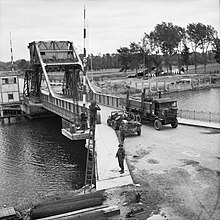
- Mémorial Pégasus , av du Major Howard, 14860 Ranville , ☏ +33 2 31 78 19 44 . The capture of Pegasus Bridge was a remarkable achievement of the Glider Pilot regiment and the Sixth British Airborne. The story is well covered in the museum where exhibits include the original Pégasus Bridge and a Horsa Glider. Several monuments to the Sixth British Airborne are beside the bridge. €7.50 .
- The US 82nd and 101st Airborne, on the right flank around Sainte-Mère-Église
Every beach has monuments and museums; see the Beaches section below for details.
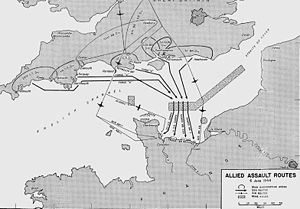
When the seaborne units began to land, the allied soldiers stormed the beaches against strong opposition, despite mines and obstacles. They raced across open beaches swept with machine gun fire and stormed the German gun positions. In fierce hand-to-hand fighting, they fought their way into the towns and hills and then advanced inland. Casualties were heavy in all areas and on both sides, though initially the Germans in their fortified positions had lighter losses than the Allies.
“As we near the edge of the water we spread out. Other craft have grounded further along the beach. We are now abreast of them. They are disembarking with all types of material about their person, just as helpless as myself to shoot back the beach defenders. Some of the boys go down at the water's edge for a breather, but they come under direct machine-gun fire which criss-crosses the whole beach. Thank Heaven! " – John Robson, Hull Daily Mail
By the end of the day the 3rd British Division was within three miles of Caen, the 3rd Canadian Division was well established on its intermediate objectives and the 50th British Division was only two miles from Bayeux. In the American zone, the 4th Division had established a 4-mile deep penetration inland and was within reach of Ste-Mere-Eglise, where the 82nd had fought throughout the night. At Omaha Beach the Germans had an advantage of terrain from the bluffs above the landing sites, but there too beachheads had been established.
It was a magnificent accomplishment; the formidable Atlantic Wall had been successfully breached. By the end of D-Day, the Allies had landed more than 150,000 troops in France by sea and air, 6,000 vehicles including 900 tanks, 600 guns, and about 4,000 tons of supplies and, astonishingly, they had achieved complete surprise in doing it. More soldiers and supplies were pouring ashore to continue the advance; by early July the Allies had over a million men in France, and in August the total reached two million.
Other allies
The main invading force was American, British and Canadian, but several other allies had observers present or were involved in other ways.
The captive nations of Europe contributed significantly to their own liberation; they all (even Germany) had resistance movements, and several also had more formal forces involved; on D-Day there were Free French on the beaches, and Norwegian, Dutch and Polish Navy ships offshore. A Polish armoured division fought as part of the Canadian army in Normandy. From D-Day through all the fighting in France, Belgium and Holland, the resistance disrupted both German communications and their efforts to move urgently-needed reinforcements and supplies. On D-Day, Free French paratroopers were dropped in Brittany (the region west of Normandy) to help with that; their success was a factor in the American victories on the Cotentin Peninsula shortly after D-Day and in Brittany later.
By the time of this war the British Empire was far past its peak, but it was still a force to be reckoned with. On D-Day about half the landing force were British or Canadian, and the Empire made contributions beyond that. Ships of the New Zealand merchant marine delivered troops and British-based squadrons of Commonwealth air forces were in action along with the RAF and USAF. Also, every branch of the British services included personnel from other countries of the Empire.
The usual bases for visits to the beaches are either Caen or Bayeux; all the beaches are easily reached from either, though both are a bit inland not right on the beaches.
Caen is the main city of the department of Calvados , and the second most important city in Normandy after Rouen; it has various attractions and excellent shopping. It is about 15 km (10 miles) from the coast.
Bayeux is a smaller town, closer to the coast and to the center of the invasion landing area. It is easy to get in and out of, and convenient for visiting the Omaha , Gold and Juno beach sectors. It has excellent restaurants and shops with an interesting pedestrian section.
- Musée Mémorial du General de Gaulle ( General de Gaulle Memorial ), 10, rue Bourbesneur, 14400 Bayeux , ☏ +33 2 31 92 45 55 . In the former Governor's House, this museum is dedicated to the numerous visits made by the general to Bayeux and in particular, the two important speeches delivered on 14 June 1944 and 16 June 1946. Film archives, photos, manuscripts, documents and memorabilia.
There are other choices.
- Ouistreham is on the coast at the eastern end of the landing area, on Sword Beach , and may be convenient because it has a ferry from Portsmouth .
- Arromanches-les-Bains is on the coast near the center, on Gold Beach , and was one site where a "mulberry harbour" (artificial port) was built shortly after D-Day.
- Sainte-Mère-Église is to the west, inland of Utah Beach ; American paratroopers were dropped in the area a few hours before the seaborne invasion and fought a fierce battle in and around the town.
The area has many other villages; most are quite picturesque and are able to accommodate tourists.
One could also stay in one of the towns outside the actual landing area where an important battle was fought in the weeks after D Day. See the Normandy campaign section below for details.
Almost every town in this area was damaged during the war; some — such as Caen , Saint-Lô , Vire and Falaise — were mostly destroyed. However, they have all long since been rebuilt. Bayeux was fortunately undamaged and so still retains the Medieval character.
Normandy has a temperate-zone maritime climate. The summers are warm and winters are mild. Rain however is a part of the climate all year round, winter seeing more rain than summer. The ongoing rain isn't enough to spoil a vacation most of the time and it does have a benefit, the nature is incredibly lush and green. Winter does see the occasional snow and frost as well, but in general the climate is pretty moderate in winter.
Summers are a little warmer than in southern Britain with up to 8 hours of sunshine per day. Cyclists love the region because it is not nearly as hot as most other parts of France and can be more compared to southern England than inland France. Either way, sunscreen and a hat are necessary; even if it doesn't feel as hot as the rest of France, the sun is still beating down with force!
Normandy is easily reachable from Paris, either by car (2 to 3 hours drive) or by train (2 hours from Paris St Lazare station to Caen central station).
Alternatively, a ferry across the channel will take you in just over three hours from Portsmouth to Ouistreham , the easternmost D-Day target, an ideal starting point. Portsmouth was one of the ports from which the invasion was launched and has a D-Day Museum .
Other ferries go to Cherbourg and Le Havre , nearby though not in the actual landing area. Cherbourg is a major city and was liberated by the Americans in late June; see Contentin Peninsula below. Le Havre is a smaller town and further from the beaches; it was a German naval base, mainly for torpedo boats. It was liberated by a British and Canadian force in early September after some of the heaviest bombing of the war and a fierce fight on the ground.
Caen also has an airport, near the village of Carpiquet west of the city. Control of the airfield was fiercely contested in the weeks after D-Day.
Tour the beaches and battlefields , see the various museums and cemeteries throughout the area, and visit the seaside villages and towns. Independent travel either by car or using public transport is possible.

Local tourist information offices provide a leaflet (in English) that lists key visitor attractions, and has details of seven route itineraries which are also signposted on the road network.
Car rental in Normandy can be arranged through several international chains including Avis, Budget, Eurocar, and Hertz. Cars can be picked up in Caen. Driving in France is on the right-hand side of the road and all distance and speed measurements are in km.
Bus routes in Normandy with services between Caen and Bayeux, Bayeux and Ouistreham, and Bayeux to Grandcamp. These cover most of the main landing beaches. All the routes are operated by Bus Verts du Calvados ☏ 09 70 83 00 14 (non-geographic number) , and free timetables can be acquired from the main tourist offices.
From Bayeux train station, you can catch a bus to some of the D-Day beaches. On the bus website there is a map of the bus route to the D-Day beaches. Bus 70 takes you to Omaha beach, the American cemetery, and to Pointe Du Hoc. Bus 74 takes you to Arromanches Beach, the location of the Mulberry harbors. According to Wikipedia: "Omaha beach is 5 miles (8 km) long, from east of Sainte-Honorine-des-Pertes to west of Vierville-sur-Mer" and these villages are accessible via Bus 70. Buses are few and far between, so take the few number of buses into account. Also, buses do not run when there is heavy snow, so check the bus website beforehand during snow season.
Bike tours are very popular in France and biking is an excellent way of visiting the battlefields. You can rent bicycles at most major towns and railway stations in France.
On D-Day, some of the invading troops used bicycles; see the photos below of British troops at Lion-sur-Mer and Canadians at Juno Beach .
Guided tours
Guided tours including transport are available; most travel agents in the area and many of the hotels can arrange these if required. In Caen or Bayeux , some companies offer half-day or full-day guided tours to the battlefields with English-speaking guides.
- Normandy Sightseeing Tours offers tours from Bayeux to all five landing beaches and beyond. They use 8-seat vans, for smaller groups and a better experience. The guides are French and mostly locals from Normandy, all English-speaking.
- La Rouge Tours is one example of tours led by professional Battlefield Guides, mostly conducted by former servicemen.
The Memorial de Caen museum also conducts daily tours of the beaches.
Now more than 70 years after D-Day, the Normandy coastline is peaceful with lovely seaside towns and picturesque beaches. Many of the towns have names of the form something-sur-mer; sur-mer is French for "on the sea". Behind the coast is an old-fashioned farming landscape of grain fields, cattle and pastures, hedges and farmhouses.
However, the memories of war and D-Day are engrained in the landscape. Along the 80-km (50-mile) D-Day invasion coast there are the remains of German gun emplacements and bunkers, while war memorials and monuments mark where the allied forces landed. Inland, there are monuments in almost every village and at every bend in the road, for there is barely a square yard that wasn’t fought over. Along the coast and inland there are numerous D-Day related museums. Only by visiting do you get a proper idea of the vastness of the enterprise.
The following description of the beaches is organized in an east-to-west order, so that it can be used to plan a driving or biking tour along the coast. The length of a tour depends on how many sites and museums a person decides to visit. Enthusiasts could spend several weeks, but two or three days are enough to cover the major sites. A good starting point is to get an orientation to the area and the history of D-Day at either the Mémorial de Caen or Musée du Débarquement (The Landing Museum) in Arromanches, and from there set out to explore.
The beaches are still known today by their D-Day code names.
Sword Beach
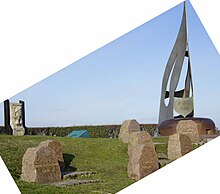
Sword beach, the most easterly of the five beaches, stretches from Ouistreham to Luc-sur-Mer. The British 3rd Infantry Division landed on the 4 km (2½-miles) of beach between Ouistreham and Lion-sur-mer. The 41st Royal Marine Commando landed at Lion-sur-Mer, while the N°4 British Commando landed at Ouistreham. Integrated with the N°4 British Commando were 177 Frenchmen of the 1st Battalion of Fusiliers Marins Commandos who were granted the honor to set foot on Normandy soil in the first wave. On the eastern flank of Sword beach, the Sixth British Airborne had parachuted in the early morning hours of June 6th to seize bridges over the River Orne and Caen canal, silence gun batteries and secure the eastern flank of the D-Day beaches. A coup de main attack captured Pegasus and Horsa bridges to ensure access to the high ground overlooking Sword was secured.
The Germans fought hard on all beaches, but Sword was the only one where they were able to mount a counter-attack with an armoured division on D-Day itself. This caused heavy casualties and stopped the British advance for a time.
- Musée de la Batterie de Merville , Place du 9ème Bataillon, 14810 Merville-Franceville ( In the Merville coastal battery casemate ), ☏ +33 2 31 91 47 53 . The museum retraces the operations of the British Sixth Airborne. €6.50 .
- Site D’Ouistreham . This beautiful seaside resort town has a legacy of fortifications, memorials, museums and military cemeteries, that stand at ease between beach hotels, fine stretches of sand, breezy cliffs and postcard-picturesque fishing harbours. There are several monuments in the town including the Free French monument, Royal Navy and Royal Marines monument, 13th/18th Royal Hussars monument, and N°4 Commando plaques. The Kieffer monument stands atop a German bunker and is named for the Commando Lieutenant who led the attack that took it.
- Musée Nr 4 Commando ( N° 4 Commando Museum ), Place Alfred Thomas, 14150 Ouistreham , ☏ +33 2 31 96 63 10 . In this museum one can see scale models, weapons, and uniforms to retrace the story of the Franco-British Commandos who landed on Sword Beach.
- Musée du Mur de L’Atlantique ( Atlantic Wall Museum ), av du 6 Juin, 14150 Ouistreham , ☏ +33 2 31 97 28 69 . In a former artillery range-finding post on the Atlantic Wall, this 17 m high concrete tower is the only one of its kind and has been restored and re-equipped to its original state. €7 .
- Site de Lion-sur-Mer . Monuments include the Liberation monument, Royal Engineers Corps monument, and 41st Royal Marine Commando stele.
- Site de Colleville-Montgomery . A plaque is located on the Hillman Battery main blockhouse in memory of the 1st Battalion the Suffolk Regiment soldiers. There is also a General Montgomery statue and the Provisional Cemetery, Kieffer and Montgomery monument.
- Site D’Hermanville . Monuments in the area include 3rd Infantry Division and South Lancashire monument, Royal Artillery monument, Allied headquarters and Field hospital plaques, and Allied Navy sailors monument. The British Cemetery Hermanville-sur-Mer, where 1,003 soldiers rest is close to Hermanville-sur-Mer.
- Musée Du Radar ( Radar Museum ), Route de Basly 14440 Douvres la Délivrande , ☏ +33 2 31 06 06 45 . On the site of a German fortified radar base, the museum explains the evolution and operation of radar. Outside one can observe a German radar Würzburg.
There are two Commonwealth cemeteries near this beach; see the cemeteries section for details.

Juno beach is five miles wide and includes the towns of St. Aubin-sur-Mer, Bernières-sur-Mer and Courseulles-sur-Mer. The Canadian 3rd Infantry Division and 2nd Armoured Brigade landed here and fought their way across the beaches and into the towns. The No. 48 Royal Marine Commando secured the left flank at Langrune-sur-Mer.
The coastline bristled with guns, concrete emplacements, pillboxes, fields of barbed wire and mines. The opposition the Canadians faced as they landed was stronger than at any other beach except Omaha.

- Site de Bernières-sur-Mer . This pretty seaside village is distinguished by its church with a 13th century bell tower and 67 m (220 ft) spire. La Maison Queen's Own Rifles of Canada commemorates the men of this regiment. The house is one the famous houses on the beach as it appeared in many newsreels and official photos. Memorials to the Queen's Own Rifles, Le Regiment de la Chaudière, and Fort Garry Horse are by a German bunker at La Place du Canada. There is an excellent view of the beach from the bunker position and you can imagine what it must have been like when 800 men of the Queens's Own Rifles stormed ashore here as the lead wave of the dramatic D-Day assault. There are also the North Nova Scotia Highlanders plaque and Journalists HQ plaque. There is a walkway on the seawall that makes for a pleasant stroll along the ocean. If you walk east along the seawall about ½ km, you can see the house that appears in the background on the famous film footage showing the Queen’s Own Rifles of Canada storming the beach on D-Day.

- Site de Courseulles-sur-Mer . In the Courseulles-sur-Mer town centre, on the sea front there is a Sherman Duplex Drive (DD) tank on display. These tanks were partly amphibious, capable of swimming ashore from their landing craft; the soldiers interpreted "DD" as "Donald Duck". This tank was recovered in 1970 from the sea and restored. Badges of regimental units who fought in the area are welded to it. Monuments in the area include the Royal Winnipeg Rifles monument, Regina Rifles Regiment stele, Canadian Scottish Regiment stele, Royal Engineers plaque, and the Liberation and De Gaulle monument. The Croix de Lorraine monument commemorates the return of General de Gaulle to France.
- Site de Graye-sur-Mer . Monuments include the Liberation monument , Churchill "One Charlie" tank, breakthrough plaque, Royal Winnipeg Rifles, and 1st Canadian Scottish plaque, Canadian plaque, and Inns of Court monument.
There is a Canadian cemetery near this beach; see the cemeteries section.
Star Trek enthusiasts may be interested to know that James Doonan — the actor who played Scotty in the original series — was a Canadian officer who was wounded on this beach.
Gold beach is more than 5 miles wide and includes the towns of La Rivière, Le Hamel and Arromanches-les-Bains . The British 50th Infantry Division and 8th Armoured Brigade landed here. The 47th Royal Marine Commando landed on the western flank with the objective to take Port-en-Bessin.
- Musée America Gold Beach ( America Gold Beach Museum ), 2, Place Amiral Byrd, 14114 Ver-sur-Mer , ☏ +33 2 31 22 58 58 . This museum recounts the 1st airmail flight between the USA and France, together with a retrospective of the D-Day Landing and the British beachhead on Gold Beach.
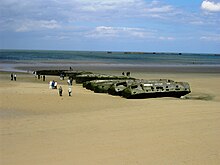
- Arromanches 360 , Chemin du Calvaire, 14117 Arromanches , ☏ +33 2 31 22 30 30 . The film The Price Of Freedom impressively mixes archived film from June 1944 with present day pictures and is presented on 9 screens in a circular theater.
- Mulberry harbour . At Arromanches , you’re looking down a stretch of Gold Beach and site of the Mulberry harbour. The invasion needed a port to bring in supplies on a huge scale. So the allies built concrete pontoons that were towed across the channel and sunk to form the port’s outer perimeter. Twenty of the original 115 pontoons still defy the waves.
- Musée du Débarquement ( The Landing Museum ), Place du 6 Juin, 14117 Arromanches , ☏ +33 2 31 22 34 31 . In front of the actual vestiges of the Mulberries, this museum is devoted to the incredible feat of technology achieved by the British in building and setting up the artificial harbour. Period newsreel movies in English and French. Impressive dynamic scale-models showing how the floating docks rolled with the waves and tides. A 75-foot section of Mulberry floating bridge on display outside. Military equipment is on display outside, including an American half-track and a Higgins boat. £3.90 .

- 49.343 0.695 4 Longues-sur-Mer Battery , Longues-sur-Mer ( Access from the D514 road (follow the road-signs) ), ☏ +33 2 31 06 06 45 . This battery housed four 150mm guns with a range of 20 km. On June 6th it pounded the beaches some and exchanged fire with both British and French cruisers and a WWI vintage American battleship. It was also bombed. At noon on June 7th it surrendered to British troops. It is the only coastal battery to have kept its guns, giving an impressive picture of what an Atlantic Wall gun emplacement was really like.
- Site de Port-en-Bessin . A monument in memory of the 47th Royal Marine Commando soldiers who were killed during the liberation of Port-en-Bessin and Asnelles is on top of the cliff, on the west side of the harbor.
- Musée des épaves sous-marines ( Underwater Wrecks Museum ), Route de Bayeux-Commes, 14520 Port-en-Bessin , ☏ +33 2 31 21 17 06 . This museum presents recovered wrecks and artifacts from more than twenty-five years of under-water exploration, in the coastal landing area. Debris includes a Sherman tank.
The Bayeux War Cemetery is not far inland of this beach, and the Bayeaux Memorial near it commemorates soldiers with no known grave. See the cemeteries section for details.
Omaha Beach

Omaha beach is overlooked by bluffs which rise to 150 feet (46 m) and command the beaches. These naturally strong defensive positions had been skillfully fortified with concrete gun emplacements, anti-tank guns and machine guns. In particular the guns at Pointe du Hoc were in position to be deadly, although they weren't actually firing on D-Day and it was Maisy battery that continued to fire onto both American beaches for three days. Allied bombing left these largely undamaged, and since there was no cover on the beach, this tranquil strand of beach became a killing field. Within a mile to the rear of the beach lay the fortified villages of Colleville-sur-Mer, Saint-Laurent-sur-Mer and Vierville-sur-Mer.
The US 1st Infantry Division had the most difficult landing of the whole Allied assault on D-Day and took around 2,000 casualties. One reason was the terrain, another that they faced the only German division on the coast which had a full complement of German troops. There were four divisions on the Cotentin Peninsula and several defending the British and Canadian beaches to the east, but those divisions were either below strength or composed partly of Russian, Polish and other forced conscripts.
The Omaha Beach landing is shown in the Oscar-winning film Saving Private Ryan and, unlike much from Hollywood, the battle scenes are quite realistic. However, the landing sequences were filmed on beaches in County Wexford , Ireland which bear little physical resemblance to the beaches in Normandy.
- 1st Infantry Division Monument ( Saint-Laurent-sur-Mer ). A monument dedicated to the “Big Red One”, the US 1st Infantry Division, is on the sea front, within walking distance from the American cemetery. Other monuments in the area include the 5th Engineer Special Brigade Memorial, and plaques commemorating the American armoured vehicles that passed through here.
- 49.36448 -0.86366 5 2nd Infantry Division Monument ( Saint-Laurent-sur-Mer ). A monument dedicated to the US 2nd Infantry Division is on the sea front, by the German defensive bunker, Widerstandsnest 65 (WN 65), that defended the route up the Ruquet Valley to Saint-Laurent-sur-Mer.

- Musée Mémorial d’Omaha Beach ( Omaha Beach Memorial Museum ), av de la Libération, 14710 Saint-Laurent-sur-Mer , ☏ +33 2 31 21 97 44 . This museum has a fine collection of uniforms, weapons, personal objects and vehicles. Dioramas, photos, and maps together with a film featuring veterans’ testimonies explain the landings at Omaha Beach and at Pointe du Hoc. A landing ship, Sherman tank and "Long Tom" 155 mm gun are on display outside.
- Musée D-Day Omaha ( Omaha D-Day Museum ), Route de Grandcamp-Maisy, 14710 Vierville-sur-Mer , ☏ +33 2 31 21 71 80 . Devoted to the landing on Omaha Beach. Various equipment is displayed including: vehicles, weapons, radios, and engineer equipment.
- Site de Vierville-sur-Mer . Monuments here include the 29th US Infantry Division stele, National Guard monument, 6th Engineer Special Brigade stele, 29th DI Engineer plate, 81st CM battalion, and 110th FA bat. Plates, 5th Rangers Battalion plate, 58th Armored Field Battalion stele, boundary marker in memory of the 58th Artillery Battalion. Along the coastal road, 500 m from Les Moulins, is a monument on the site of the first American cemetery in Normandy on Omaha Beach. The soldiers interred there were later moved to the military cemetery at Colleville-sur-Mer. The beach's desolation makes it a powerful site to imagine soldiers battling on the sand, completely vulnerable to German artillery.

- La Pointe du Hoc . A rocky headland towering over the beaches, La Pointe du Hoc has become a symbol of the courage of American troops. Here, Germans had placed bunkers and artillery. The positions were bombed, shelled and then attacked by 225 US Rangers, who scaled the 35 m rock wall, besieged the bunkers, and finally took them, only to find there were no guns at all. The guns had been dismantled and hidden in an orchard inland. Only 90 rangers were still standing at the summit. Today, bomb and shell craters remain. There is a monument in memory of the 2nd Ranger Battalion, who assaulted and captured La Pointe du Hoc battery. The memorial is built on a control firing casemate where bodies of the soldiers still lie under the ruins.
- Musée des Batteries de Maisy ( Ranger Objective ) ( Grandcamp Maisy ). This outdoor German group of artillery batteries and HQ has been preserved and is camouflaged in over 14 hectares of land close to Grandcamp Maisy. The site covered the Omaha Sector and opened fire at Omaha Beach and Pointe du Hoc on the morning of D-day. The US 29th Division as well as the 5th and 2nd Rangers attacked the site on 9 June 1944 and after heavy fighting they captured the position. It is the largest German position in the invasion area and has original field guns, Landing craft and other D-day objects on display. American Rangers monument is on the site. ( updated Jun 2018 )
There is an American cemetery near this beach; see the cemeteries section.
Utah beach, the most westerly of the five beaches and the only one in Manche, was attacked by the US 4th Infantry Division. Due to navigational errors, the landings all took place on the south part of the beach which happened to be less well defended. Airborne troops landed through the night to secure the invasion’s western flank and to open the roads for their colleagues landing by sea at dawn. The objective was to cut the Cotentin Peninsula off from the rest of France and take the port of Cherbourg .

- Musée du Débarquement ( Utah Beach Landing Museum ), Ste Marie-du-Mont, ( opposite the beach on the Utah site ), ☏ +33 2 33 71 53 35 . This museum uses film, documents and models to recall D-Day in a unique and innovative manner. Several armored vehicles, equipment and a landing ship are on display. £2.70 .
- Monuments located by the Utah Beach Museum . American Soldier's Monument, 4th Infantry Division Monument, 90th Infantry Division Monument, VIIth Corps headquarters plaque, Coast Guard plaque, and US Navy plaque.
- Mémorial de la Liberté Retrouvée ( Museum of Freedom Regained ), 18, av de la Plage, 50310 Quinéville , ☏ +33 2 33 95 95 95 . This museum recalls the French peoples daily life during the German occupation until the liberation.
The technical side

The war effort, including this invasion, got fine support from a range of scientists, engineers, technicians and workers in all the Allied countries. Some of the most important developments were:

The British "Ultra" group at Bletchley Park broke nearly all the German codes used in this war and provided crucial intelligence to Allied field commanders.
Normandy campaign
The successful landing was a turning point in World War II , a major step toward the defeat of Nazi Germany; after D-Day, the Allies went on to liberate all of Europe. On the Western Front, the three main participants were the US, Britain and Canada. On the Eastern Front, Soviet forces continued to drive forward relentlessly as they had been doing since long before D-Day.
D-Day (June 6) was the start of a campaign in Normandy that lasted until late August. Those interested in wartime history may wish to visit the sites of the other main battles of that campaign, described below.
Meanwhile an attempt to assassinate Hitler on July 20, 1944 led to at least 7,000 arrests and almost 5,000 executions. Some of the plotters were senior officers and the repercussions greatly disrupted the German military. Among others, Rommel was forced into suicide.
Around Caen

Caen is symbolically important as the capital of the Calvados department and the largest city in Lower Normandy , and was strategically important as the transport hub of the region. The allies attacked it forcefully, and the Germans reinforced it heavily; at one point they had nine armored divisions plus infantry in and around the town.
The British and Canadians fought house-to-house in Caen itself and pressed hard in nearby areas, but did not gain full control of the town and environs until mid-July. By the end of the battle, much of the city was reduced to rubble and nearby villages were also heavily damaged.
The airfield at Carpiquet , just west of Caen, was one of the first Canadian objectives after D-Day, but it was defended by an entire SS panzer division plus other troops and the Canucks were beaten back. Both sides sent reinforcements and there was heavy fighting around the town until the Allies finally took it in early July.
Cotentin Peninsula
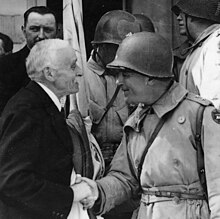
There was heavy fighting on the Cotentin Peninsula , west of the beaches, shortly after D-Day. The Allies urgently needed the port of Cherbourg at the tip of the peninsula, and sent an American force to take it.
The Americans faced quite a difficult fight; four German divisions were on the peninsula, and the bocage terrain there is largely unsuitable for tanks so a lot of hard foot slogging was required. Hitler, against his generals' advice, insisted that German forces defend the whole peninsula rather than withdrawing to strong positions around the city. They did that and made the Americans fight for every bit of ground, with heavy casualties on both sides.
Later Hitler commanded the defenders to fight to the last man, sacrificing themselves for the Fatherland. However when the situation became hopeless, General von Schlieben fought a delaying action while his troops demolished the port, then surrendered rather than let his remaining men die pointless deaths.
Cherbourg fell at the end of June; it was the first major French city liberated, and Caen the second.
After Cherbourg, the Americans turned south to take Saint-Lô at the base of the peninsula against stiff opposition; the town was thoroughly destroyed. Other units swept down the West side of the peninsula taking Coutances , Granville and Avranches .
American breakout
The American victories on the peninsula got them out into open territory more suited for tanks, and they then moved quickly in several directions.

By this time nearly all German reserves had been committed in unsuccessful attempts to hold Caen and Saint-Lô, and many German formations had been badly chewed up. Some German units were tied down fighting the British and Canadians, four whole divisions had been wiped out by the Americans on the peninsula, and both the French Resistance and Allied bombing raids disrupted German efforts to bring in reinforcements. Also, the Germans were in quite deep trouble on the Eastern front, and they did not have anywhere near enough resources for both fronts.
The Americans had both more tanks and far better air support than the enemy; they used these advantages to full effect in a textbook example of fast-moving armoured tactics, similar to the blitzkrieg (lightning war) with which the Germans had devastated several countries a few years earlier. Part of the American force swung west to take Brittany with little resistance. Other units — most of the American force plus three British armoured divisions — moved south to Nantes and Angers on the Loire and east to Le Mans and Alençon , despite much more serious opposition.
In early August they took part in the battle around Falaise, and by the end of August they had liberated Paris .
The decisive battle of the Normandy campaign was fought around Falaise , some distance inland of Caen, starting in early August.

Over 100,000 German troops were almost surrounded in the "Falaise Pocket". Commonwealth forces by now held everything around Caen on the north side and the British had taken the area around Vire on the west, while the rapid American advance had put them on the south side. Among other German forces, the pocket had those retreating after defeats in the intense battles for Caen, Saint-Lô and Vire. The Allies hammered them from the air and with artillery, pressed in with armour and infantry, and hoped to completely surround them by closing off the only exit, the "Falaise Gap" on the east.
To close the gap the Canadians, and the Polish armoured division deployed with them, thrust south near Falaise and Americans moved north in the Argentan area. However the by-now-desperate Germans fought hard to keep the gap open and escape through it; there was about two weeks of extremely heavy fighting before it was finally closed.
Falaise is a distinctly controversial battle ; two decisions by the senior generals kept the Allies from closing the gap sooner and having an even larger victory:
- Patton's Americans were ordered to stop their advance and dig in near Argentan, rather than risk over-extending their lines by continuing north to join up with the Canadians. One reason for this was that the Allies knew from the code breakers at Bletchley Park that the Germans were planning an attack near Argentan.
- The British reserves were not sent to reinforce the Canadians who appealed urgently for them.
These decisions were heatedly debated at the time; Patton and the Canadian generals were furious. Even with the benefit of hindsight, experts still disagree over whether they were sensible and prudent or foolish and costly.
The Canadians and Poles — unassisted on the ground, though they did get plenty of air support — could neither close the gap completely nor hold against German efforts to batter their way out. They did try and got quite badly mauled; they lost more men around Falaise than they had in the landings and the fierce fight for Caen. There were many panzer divisions in the pocket; by now all were badly damaged but they could still mount devastating thrusts against chosen targets. The Canadians linked up with US forces on August 17th, closing the gap, but then the panzers smashed through and it was not until August 21st that the gap was closed for good.
On the German side, Hitler overruled the generals who wanted to conduct an orderly retreat early in the battle, ordering them instead to hold their ground and even mount counterattacks (the red arrows on the map). Most historians believe the generals were right, a German defeat was inevitable, and Hitler's interference only made it worse. In particular, ordering tanks withdrawn from the defense of Falaise for use in his counter-attacks allowed a Canadian advance.
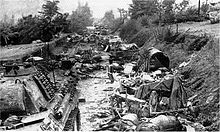
The battle was utterly devastating to the countryside.
Falaise was a major Allied victory ; about 10,000 Germans were killed and 50,000 surrounded and forced to surrender; some did escape to fight on, but they lost nearly all their equipment and many were wounded. After Falaise, the Germans had no effective force west of the Seine and what troops they did have in the area were in full retreat; Paris was liberated only days later.
Overall result
The campaign in Normandy that began with D-Day and ended with Falaise was a major success for the Allies. Their losses were heavy — about 200,000 killed, missing, wounded or captured — but German losses were more than twice that. Both sides lost many tanks, guns, vehicles and other supplies, but at this stage of the war the Allies could better afford those losses.
After Normandy
After Normandy, Allied forces drove toward Paris from Normandy and the Pays de la Loire which the Americans had taken after breaking out of the peninsula. After Falaise, the German forces in the area were in severe disarray and the Allies still had air superiority so the advance was rapid. The German garrison in Paris surrendered on August 25.

Meanwhile American and Free French forces, plus some British paratroopers, invaded southern France (east of Marseilles ) in mid-August. Between that and the victories in the north, they soon liberated much of France. After that, the British and Americans drove through eastern France and then into central Germany, aiming for Berlin.
The Canadians took the left flank, liberating coastal parts of France, then Belgium, Holland and the North Sea coast of Germany. In the last few days of the war a Canadian parachute battalion who had been among the first to land on D-Day were sent on a mad dash to take Wismar on Germany's Baltic coast, getting there just in time to prevent the Soviets from taking that region and possibly Denmark .
After Falaise and the liberation of Paris, the Germans regrouped and were able to put up a stiff resistance and even mount some counterattacks; the Allied advance slowed down, but it was unstoppable. Caught between the Russians on the east and the Western Allies on the west, losing on both fronts and being heavily bombed as well, Germany surrendered less than a year after D-Day, in early May 1945.
Beautiful cemeteries overlook the sea and countryside and are essential stops along the way to understand and reflect on the human cost of the war. This was enormous; around 100,000 soldiers (about 60,000 German and 40,000 Allied) died in Normandy during the summer of 1944. There were also air, naval and civilian deaths, plus large numbers wounded or captured.
We list the cemeteries in two groups; the first four near the coast and the rest further inland. Order within each group is east-to-west.

- 49.23113 -0.25776 12 Ranville War Cemetery , 5357 Rue du Comté Louis de Rohan Chabot . This cemetery has mainly men of the British 6th Airborne Division who made parachute and glider landings in the area on D-Day. There are 2,235 Commonwealth graves (the division had a Canadian battalion), plus 330 German and a few others.
- 49.286 -0.309 13 Hermanville War Cemetery . This cemetery has 1,003 graves, mainly of British troops who fell in the first few days of the invasion.
- 49.304 -0.45 14 Beny-sur-mer Canadian War Cemetery . Just over 2,000 Canadians are buried here; nearly all of them fell during the landings or shortly after. The cemetery is near the village of Reviers, about 18 km east of Bayeux.

- 49.359156 -0.853161 15 Normandy American Cemetery , ☏ +33 2 31 51 62 00 . 09:00-18:00 . Overlooking Omaha Beach, this 172.5 acre (70 hectare) cemetery contains the graves of 9,387 American soldiers. The rows of perfectly aligned headstones against the immaculate, emerald green lawn convey an unforgettable feeling of peace and tranquility. The beaches can be viewed from the bluffs above, and there is a path down to the beach. On the Walls of the Missing in a semicircular garden on the east side of the memorial are inscribed 1,557 names. Rosettes mark the names of those since recovered and identified.
- 49.1755 -0.229 16 Banneviile-la-Campagne War Cemetery . This cemetery has 2,170 Commonwealth dead and five Poles. Most fell after the capture of Caen in mid-July.
- 49.023 -0.2706 17 Grainville-Langannerie Polish Cemetery . This is the only Polish war cemetery in France. It has the graves of 696 soldiers from the Polish armoured division who fought alongside the Canadians in Normandy; most fell in the fight around the Falaise Gap.
- 49.06 -0.292 18 Bretteville-sur-Laize Canadian War Cemetery . This cemetery is near Falaise and has 2871 Canadians, most of whom fell in the fight to close the Falaise Gap.
- 49.178 -0.5143 19 Saint Manvieu War Cemetery . This cemetery has 1,627 Commonwealth graves and 555 German. It is near the airport at Carpiquet and has mainly men who fell in the fierce battles over that.
- 49.274 -0.7143 20 Bayeux War Cemetery . The largest British cemetery of the Second World War in France, containing the graves of over 4,400 Commonwealth soldiers, mostly British, and 500 others, mostly German. The Bayeux Memorial stands opposite the cemetery and bears the names of 1,808 Commonwealth soldiers who have no known grave. The cemetery is about a 15-minute walk from Bayeux train station. ( updated Mar 2015 )
- 49.3428 -1.0266 21 La Cambe German War Cemetery . This site has the graves of 23,400 German soldiers, most of whom fell in the Normandy campaign. See also the German government site .
- 49.426 -1.449 22 Orglandes German War Cemetery . This cemetery has just over 10,000 German graves, including many who fell in the defense of the Cotentin Peninsula. German government site
Nearly all the dead in these cemeteries fell sometime between the invasion on June 6 and the end of the Falaise battle in mid-August.
From this area, one might go anywhere in France or across the channel to the UK . Normandy is a major tourist area with a range of attractions, as are nearby Brittany , the Pays de la Loire , and the Channel Islands .
Other places of possible interest to war buffs are the scenes of two Allied raids on the German-held French coast in 1942. A predominantly Canadian force attacked Dieppe , further north on the Normandy coast, and British commandos raided Saint-Nazaire , near Nantes to the south. Losses were extremely heavy in both places and arguably both raids were disasters, though the Saint-Nazaire attack did knock out an important drydock for the rest of the war. On the other hand, it is often claimed that these raids were essential preparation for D-Day, tests of German defenses that gave intelligence required for planning the invasion.
People interested in earlier history can see sites associated with Duke William IV of Normandy , who invaded England in 1066 and is known there as William the Conqueror . He was born in Falaise and is buried in Caen which was his capital; his castle is now a tourist attraction. His invasion fleet sailed from Bayeux and a museum there has a famous tapestry depicting his conquest of England.
- Previous Featured travel topics
- Has custom banner
- See listing with no coordinates
- Has map markers
- Has mapframe
- Maps with non-default size
- Listing with Wikipedia link but not Wikidata link
- World War II in Europe
- Topic articles
- Guide topics
- Guide articles
- Has Geo parameter
- Pages with maps
Navigation menu
A Day Trip to the D-Day Beaches from Caen
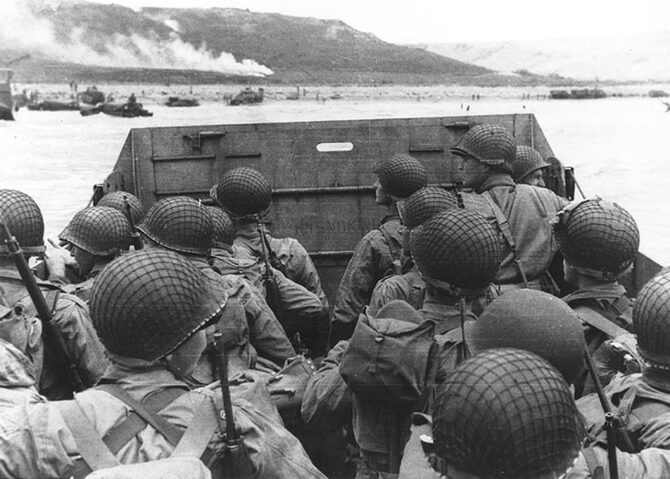
A visit to the D-Day beaches in Normandy is a poignant journey through history, and it’s only a ferry trip away . Caen, the largest city in Normandy, serves as an ideal base for exploring the area’s significant WWII sights. Here’s a suggested itinerary for a day trip to the D-Day beaches from Caen.
Brief History
The D-Day landings, also known as the Normandy Invasion, were a pivotal moment in World War II. On June 6, 1944, approximately 160,000 Allied soldiers landed across five beaches in Normandy, France, code named Sword, Juno, Gold, Omaha, and Utah. This massive invasion force, which included U.S., British, and Canadian forces, marked the beginning of the end for Nazi-occupied Europe. The landings were the result of meticulous planning and preparation, and they were a turning point in the war, and it was the largest seaborne invasion in history . The success of the operation was crucial in establishing a beachhead from which the Allies could further push inland into France and ultimately defeat the German forces. The significance of D-Day cannot be overstated, as it altered the course of history and set the stage for the liberation of Europe from Nazi control.
Getting there
Travel from the UK to Caen via an overnight ferry for a convenient and scenic journey. Brittany Ferries operate three daily sailings from Portsmouth to Caen, and their cruise ferries, Mont St Michel and Normandie, provide a comfortable journey of around six hours. Make the most of this crossing to either rest, enjoy the onboard facilities or plan your journey ahead, safe in the knowledge that you are ready to explore the region as soon as you arrive thanks to being able to take your car onboard.
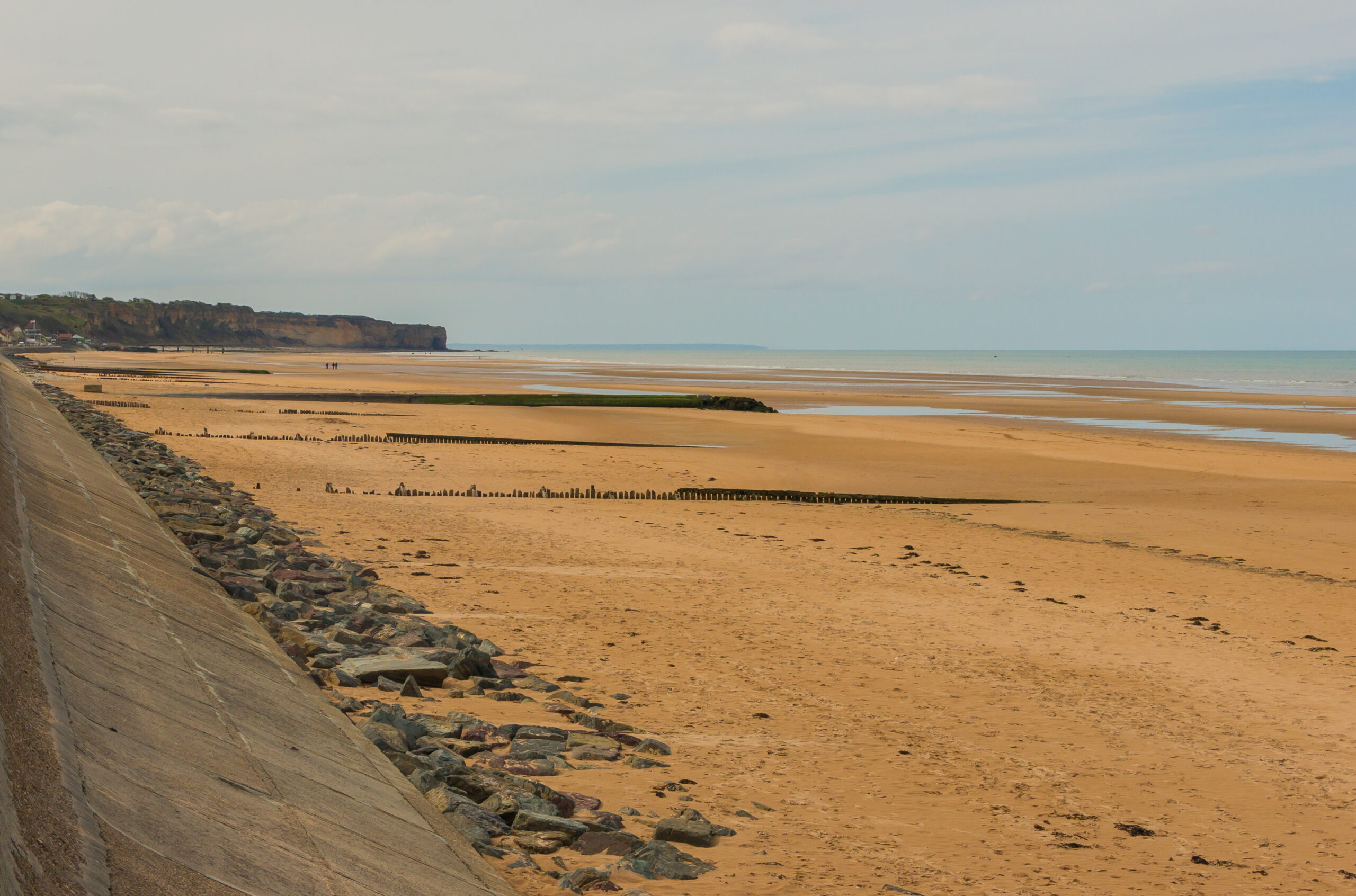
Jebulon – Wikimedia Commons
As the ferry arrives into the harbour at Port De Caen Ouistreham make sure to look west as you are at the easternmost point of the D-Day invasion, with Sword Beach stretching 8 kilometres west to Saint-Aubin-sur-Mer.
1. Le Grand Bunker – Museum of the Atlantic Wall
At Le Grand Bunker, visitors can learn about the Atlantic Wall, a World War II coastal defence system built by the German forces. The museum is located in a well-preserved Nazi bunker near Sword beach , only 900m from the ferry port, meaning you can start learning as soon as you get off the boat. If your ferry arrives before it opens, make sure to take time to walk along the beach which is only a stone’s throw away. Sword Beach, also known as Sword, was the code name for one of the five main landing areas along the Normandy coast during the initial assault phase of the Allied invasion, and it was the responsibility of the British Army. This museum presents a reproduction of the former Atlantic Wall firing command post, allowing visitors to experience and understand the historical significance of the site. It also showcases WWII equipment, memorabilia, and the construction of the Atlantic Wall, providing an immersive experience in history.
2. Juno Beach Centre, Courseulles-sur-Mer
Approximately 30 minutes by car along the coast from Ouistreham, this museum and cultural centre pays homage to the 45,000 Canadians who lost their lives during the Second World War, with a specific focus on the 14,000 Canadian troops who landed on D-Day at Juno Beach , and the 5,500 who were killed during the Battle of Normandy. The museum provides an interesting and well-laid-out perspective on the D-Day landings, and offers tours of the bunkers and beach given by young Canadians, making it a compelling and educational experience for visitors. As the only Canadian museum focusing on the Normandy Landings, it offers a unique opportunity to learn about Canada’s significant contribution to the events of D-Day.
3. Musée du Débarquement – D-Day Museum in Arromanches
Make sure to stop and pay your respects at the British Normandy Memorial in Ver-sur-Mer on your way to the Musée du Débarquement in Arromanches. This museum, located at the exact point where the Allies established one of the two artificial ports used to supply the troops, offers a comprehensive experience for visitors. Since 2023, the museum features a new museography, with the tour divided into seven parts, including a British Admiralty film, a model gallery, and rooms dedicated to various aspects of the D-Day landings and the Battle of Normandy. The museum provides a 90-minute guided tour, and visitors can also explore the ruins of the artificial Mulberry harbour and the monuments near the site.
4. Lunch in Bayeux
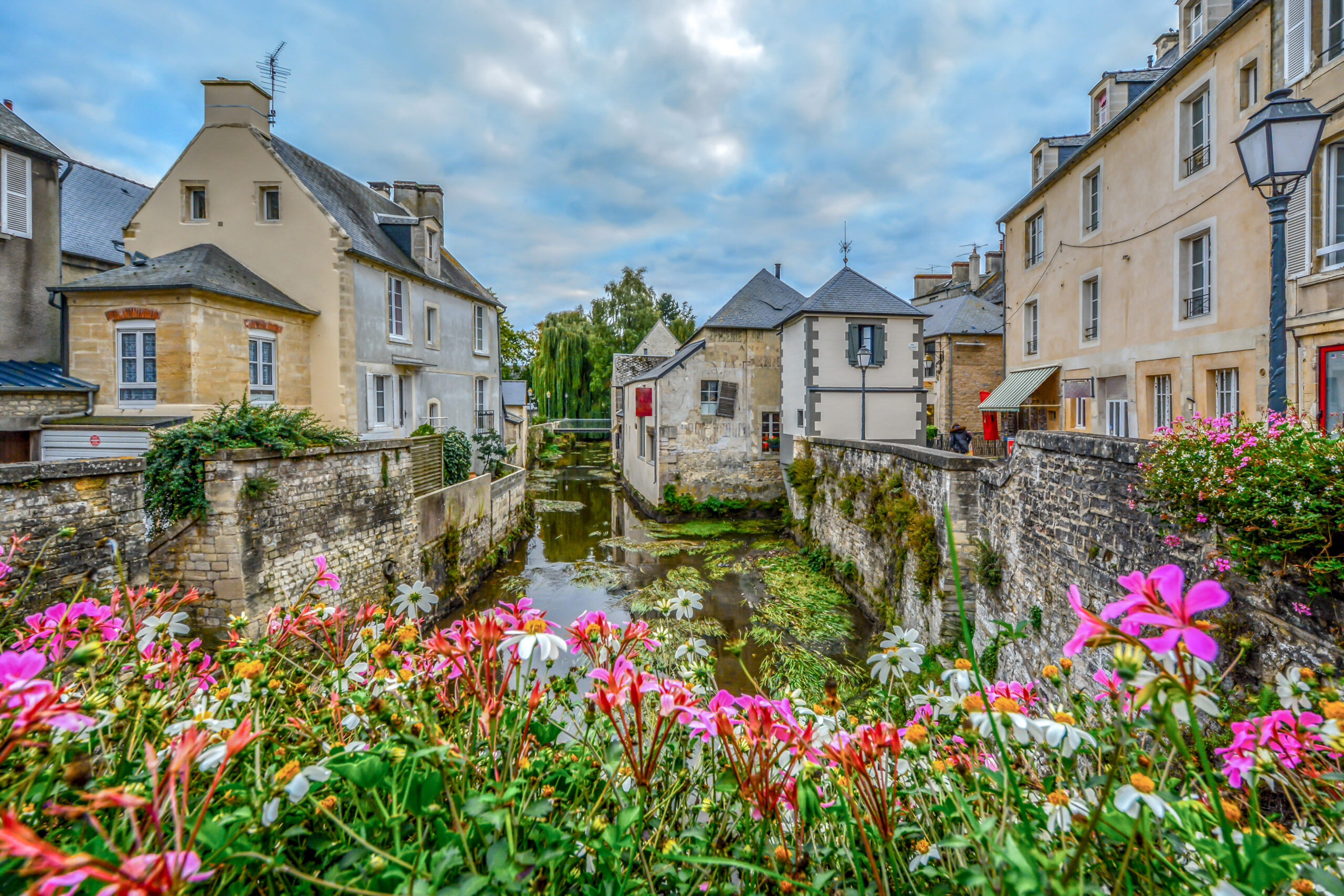
Shutterstock
Just 12km south, you’ll be in the beautiful medieval town of Bayeux, which is known for its rich history and well-preserved architecture. The town is home to the famous Bayeux Tapestry, a UNESCO-listed masterpiece that depicts the Norman conquest of England. Bayeux’s historical significance is further highlighted by its status as the first town to be liberated in June 1944 during World War II, making it an ideal base for exploring the nearby D-Day landing beaches and other related sites. The town’s narrow cobbled streets, historic centre, and a variety of events and attractions, such as the Bayeux Medieval Festival, offer a delightful experience for history enthusiasts and tourists alike. Stop here for a bit of lunch before you head on with your journey.
5. Omaha Beach
A 25-minute drive west and you’ll arrive at Omaha Beach, the site of one of the most significant landings during the Normandy Invasion. It was the most heavily defended of the assault areas, with U.S. forces suffering the worst casualties of any beach on D-Day, totalling 2,400 soldiers. Despite the challenges, by nightfall, 34,000 Allied troops had landed. One interesting fact is that the beach was the setting for the daring seaborne assault by U.S. Army Rangers on Pointe du Hoc, a promontory west of the landing beach. The successful capture of this strategic point was a remarkable feat of bravery and skill. The events at Omaha Beach were depicted in the movie Saving Private Ryan , which brought renewed attention to the significance of this historic site.
6. Normandy Victory Museum – Musée de la bataille des haies
Keep driving west, if you have time stop at the La Cambe German War Cemetery to see how the German soldiers that were killed during the war are remembered, and head to the Normandy Victory Museum in Carentan. It offers a compelling journey through a collection of over 15,000 authentic objects, making it a must-see museum in the region. The museum is accessible to visitors of all ages and provides an opportunity for everyone to learn and enhance their knowledge of the Second World War, particularly the D-Day landings and the Battle of Normandy.
7. D-Day Experience
D-Day Experience is a historical site on the other side of Carentan that offers a unique and immersive experience combining education and entertainment. The site, spanning 10,000 m2, features two museums, a 3D movie theatre, a flight simulator, and a memorial dedicated to the airborne troops. The experience provides a double perspective of the events of the D-Day, allowing visitors to not only learn about history but also live it through modern and immersive museography. The site is designed to appeal to all the senses and offers a comprehensive understanding of the D-Day events through authentic artefacts and interactive displays.
8. Richard Winters Memorial – Band of Brothers
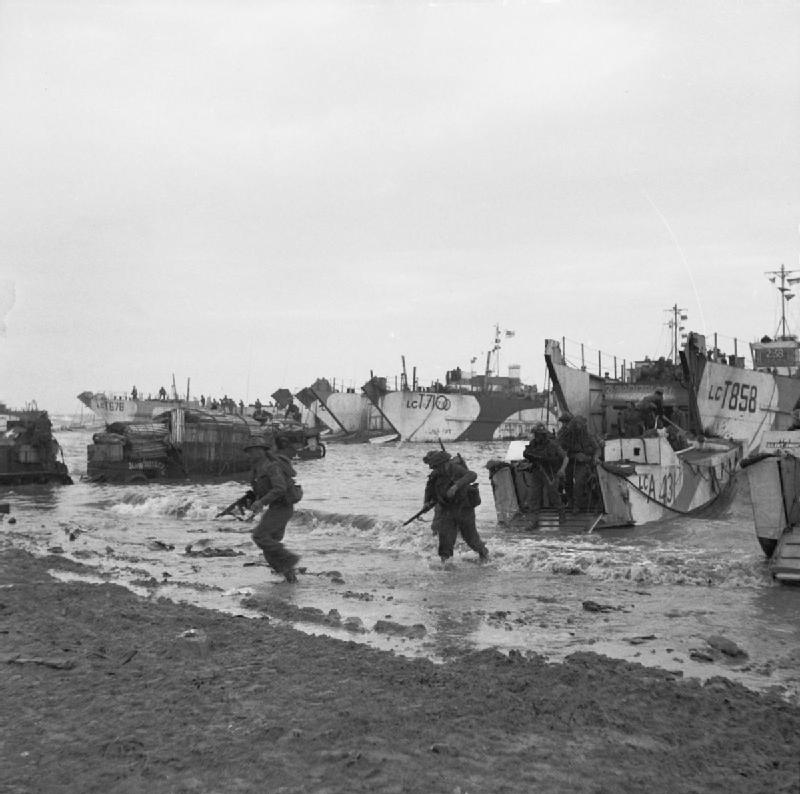
Less than 15 minutes from D-Day Experience, in the direction of Utah beach , you’ll find the Richard Winters Memorial, a tribute to Major Richard D. Winters, who led paratroopers from Company E, 2nd Battalion, 506th Parachute Infantry Regiment, 101st Airborne Division, during the D-Day landings. The memorial, unveiled in 2012, is a 12-foot-tall statue of Winters, located on the D913 between Sainte-Marie-du-Mont and Utah Beach. It is dedicated to the memory of all junior U.S. military officers who served on D-Day and honours the leadership of Winters and his fellow officers during the historic event. Winters’ leadership and bravery during the D-Day landings and the subsequent campaign in Europe inspired the book and television miniseries Band of Brothers , which brought his remarkable story to a wider audience.
9. Utah beach and World War II Museum
Head northwest along the coast and you can reflect on that historical date when the soldiers stormed the beaches to your right, before reaching Quinéville where the World War II Museum regales the tales on an individual scale. It offers a chronological path through the Second World War in Normandy, featuring lively scenes, life-size reconstructions, propaganda posters, photographs, videos, dioramas and a recreated street.
10. Caen Memorial Museum
Then it’s an hour’s drive back to Caen, during which you can listen to a podcast and learn more about D-Day history or sit in silence and reflect on the sites you’ve seen. Conclude your day with a visit to the Caen Memorial Museum, which provides a comprehensive understanding of the events leading up to and following the D-Day landings. The museum’s exhibits and artefacts offer a profound insight into the scale and impact of the war, and it’s considered one of the best World War II museums in France.
A day trip to the D-Day beaches from Caen offers a compelling and educational experience, allowing you to pay homage to the bravery and sacrifice of the Allied forces during the pivotal events of World War II.
Benefit from the three daily sailings from Portsmouth with Brittany Ferries to discover Caen and the Normandy beaches.
On the 80th anniversary of D-Day, delve into the captivating world of wartime espionage and deception as France Today explores the intriguing Double Cross System , a covert operation that played a pivotal role in the Allied victory during World War II.
Lead photo credit : Wikimedia Commons
Share to: Facebook Twitter LinkedIn Email
More in history , Normandy
Related Articles
France’s fabrics: toile de jouy, denim & more, d-day beaches in normandy, indulge in bliss: exploring idyllic french spa towns, by elinor sheridan.


Visiting Bayeux, Normandy: Exploring the D-Day Beaches
If you’re planning a trip to Paris and want to include a side trip to Normandy, then a visit to Bayeux is perfect. Bayeux is an excellent base for exploring the D-Day beaches of Normandy. This guide has everything you need for spending one full day in this beautiful region of France.
This post contains affiliate links , If you make a purchase through these links I will earn a commission at no extra cost to you. Thank you!
Planning your trip to Normandy ? Below are some places to stay, things to do, and more.
- Bayeux: American D-Day Sites in Normandy Half-Day Tour
- Bayeux City Tour (2 hour tour of historic sights)
- Normandy Beaches Half-Day Tour
- From Paris: Normandy D-Day Beaches (day trip option if short on time)
- Hotel de Brunville (I stayed here! Great location and rooms)
- Villa Des Ursulines (Beautiful apartments, great location)
- Hotel Reine Mathilde (Nice rooms, restaurant attached to hotel)
Looking to visit Normandy as a road trip? Click here to find France car rental rates !
Table of Contents
Best Time to Visit Normandy
The best time to visit Normandy is April to September. I visited at the end of August and found the weather to be perfect with lots of sun but not too warm. Even though August is peak tourist season in France, Normandy did not feel crowded with tourists at all.

Where to Stay in Normandy
Normandy is a pretty large region but for visiting the D-Day beaches basing yourself in Bayeux is perfect. Bayeux is very close to the D-Day sites and is a great place to visit in its own right. It’s a charming town with beautiful medieval buildings and streets.
While I was in Bayeux I stayed at Hotel de Brunville . I loved that there was a parking lot right next to the hotel which made for easy parking and day trips. The hotel was also really well-kept with big rooms and was within close walking distance to everything in Bayeux. I would happily stay there again.
Is Normandy Worth Visiting?
Normandy is absolutely worth visiting. It’s full of gorgeous natural scenery as well as historic sites and beautiful villages. Bayeux is the perfect location in Normandy to base yourself for visiting.
Bayeux has such a compact historic centre that everything is in easy walking distance so you can see all the sights and still have time to head to the beaches. Bayeux was one of the first places liberated after the D-Day beach landings and is extremely close to those sights so its perfectly situated. The town itself is also worth a visit as the streets are lined with gorgeous medieval buildings and it’s home to the Bayeux Tapestry. There’s so much history packed into this area it’s perfect for history buffs or anyone that loves beautiful villages.
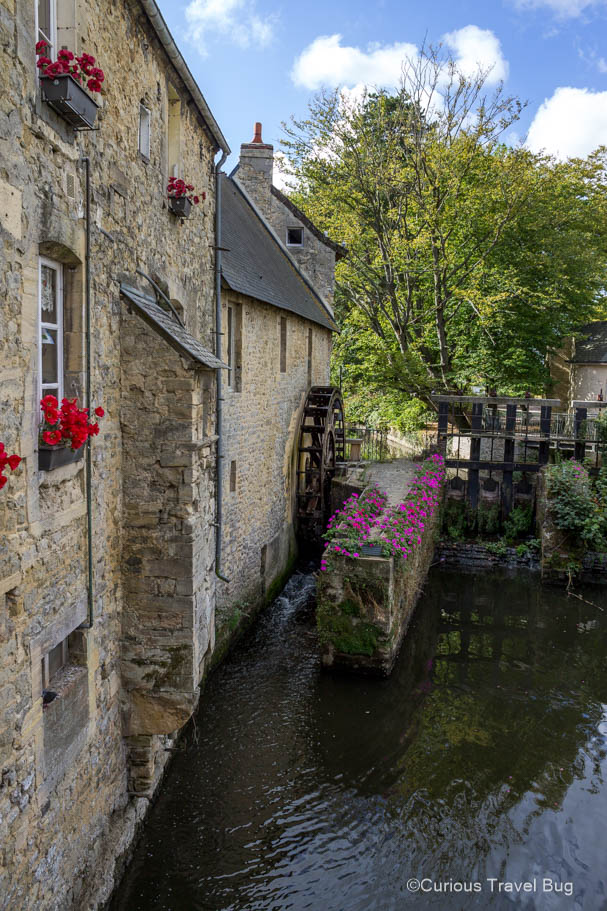
How Many Days to Spend in Normandy
Normandy is a big region so you can easily spend a week just exploring everything this beautiful area of France has to offer. To see the D-Day beaches and some cute Normandy villages, spend at least 2 nights based in Bayeux so you have one full day to explore. I personally think it is worth it to stay overnight in Normandy rather than on a day trip from Paris but it is possible to do a long day trip from Paris to the D-Day beaches.
If you are adding on a visit to Mont Saint Michel , I personally would move to stay closer so see the island lit up at night and the tide changes. You can see my entire itinerary for Normandy and the Loire Valley here.
Getting to Normandy from Paris
By Car The best way to get to Normandy from Paris is by car. Visiting Normandy by car is going to give you the most flexibility for exploring the area. I recommend picking your rental car up at the airport. If you’ve just done a trans-Atlantic flight it may be better to visit Paris first so you aren’t driving while tired. From Paris, Bayeux is about a 3-hour drive if you go directly but there are plenty of places to stop along the way to stretch your legs as well. By Train If you don’t mind joining tours to explore the D-Day beaches then travelling between Paris and Normandy by train is perfect. From the Saint-Lazare train station in Paris to Bayeux the direct train is 2 hours 20 minutes, you can find train schedules and tickets here .

How to Spend One Day in Normandy, France
Bayeux is a fantastic city to base yourself in Normandy. With one full day in Normandy, you can see some of the region’s highlights, but you can also easily spend longer exploring the villages of Normandy.
Start Your Day at French Bakery
You could start the day having a sit down breakfast but it’s the perfect opportunity to grab some pastries at a bakery and find a place to sit and enjoy your food. Croissants, quiches, macarons, tarte normande, pain au chocolate, you are spoiled for choices here and it’s an affordable way to try out local food. I ate at several, in the name of research and can happily recommend À La Reine Mathilde as my favourite here. If you are looking for a sit down spot for tea and cake, Les Volets Roses is a unique tea house that is all-pink kitsch and adorable.
Visit the Bayeux Cathedral
The cathedral in Bayeux is beautiful. You will definitely pass it at some point as it is right in the centre of things. This grand cathedral is worth a quick stop to admire the stained glass windows and impressive architecture.

The Bayeux Tapestry
The town of Bayeux is famous for the Bayeux Tapestry. I had personally never heard of it before my visit and was struggling to get excited about a tapestry. It’s actually incredibly interesting and unique.
The tapestry is UNESCO-listed and depicts the 1066 conquest of England by the Normans. The Bayeux Tapestry is 70 m (230ft) in length and provides a rich recounting of the war. The interpretive material in the museum provides context and it is fascinating to learn about how the war was waged a thousand years ago.
Tapestries seem to be quite the thing for this time period. The Angers Castle in the Loire Valley is also home to a famous one, the Apocalypse Tapestry.
Explore the D-Day Beaches
The main draw to visiting Bayeux and this region of Normandy is the proximity to the D-Day beaches. Hopping around to different D-Day sites is a great way to spend an afternoon in Bayeux. There are multiple half-day tours that you can join but you will have the most flexibility with a rental car .
A great way to start your exploration of the D-Day sites is to visit one of the museums. I visited the Canadian one, the Juno Beach Centre and really liked the displays and background it presented. There are many museums to choose from here including the one dedicated to American landings, the Utah Beach Museum . Both of these museums are also situated on important beaches for the D-Day Landings.
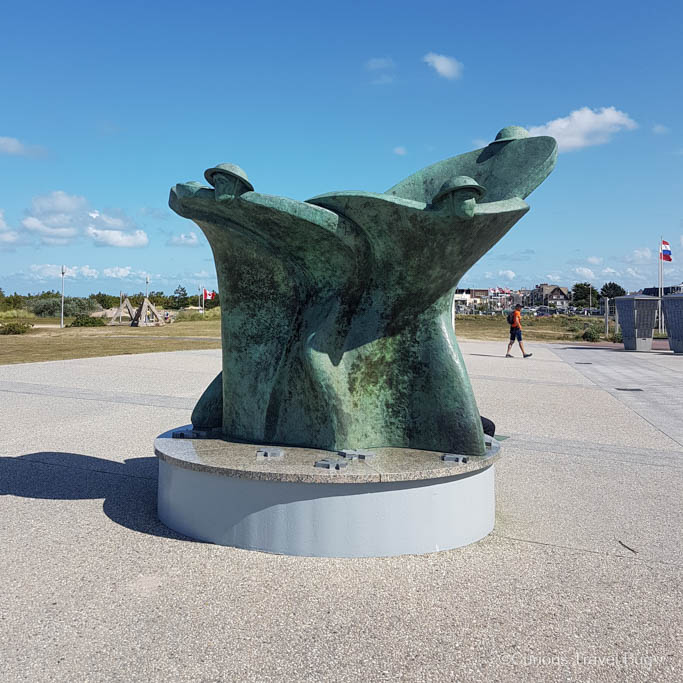
Unless you have a huge interest in WW2 then one of the museum is enough to get some background on the specific events that took place during the Normandy Landings. You can find an excellent overview of all the museums dedicated to the Battle of Normandy here.
After visiting one of the museums, start out your mini road trip by visiting some of the Normandy landing sites. Arromanches-les-Bains is a great first stop. From the viewpoint over the beach and ocean, you can see the artificial port that was installed to move heavy equipment and materials. This port allowed men and supplies to arrive quickly to the Normandy landing.

After viewing Arromanches, head towards the Longues-sur-Mer battery . This site is part of the fortification of the Atlantic coast and you can explore the area to see bunkers and gun emplacements that sit on the coast. This was my favourite site to explore as it was interesting to see the actual fortifications that were used along the coast, it really brought history to life.

Other important D-Day sites to visit include Omaha Beach, Sword Beach, the American Cemetary, and the Canadian War Cemetary.

Wander the Cute Streets of Bayeux
After spending the afternoon exploring the D-Day beaches, head back to Bayeux to explore more of the town and enjoy a nice dinner. I enjoyed the crepes at L’Insolite , they have both sweet and savoury options.
The town has cute cobblestone streets and in the summer there are beautiful flowers set around. It’s such a different pace than Paris, it’s nice to experience a different pace of life in France.
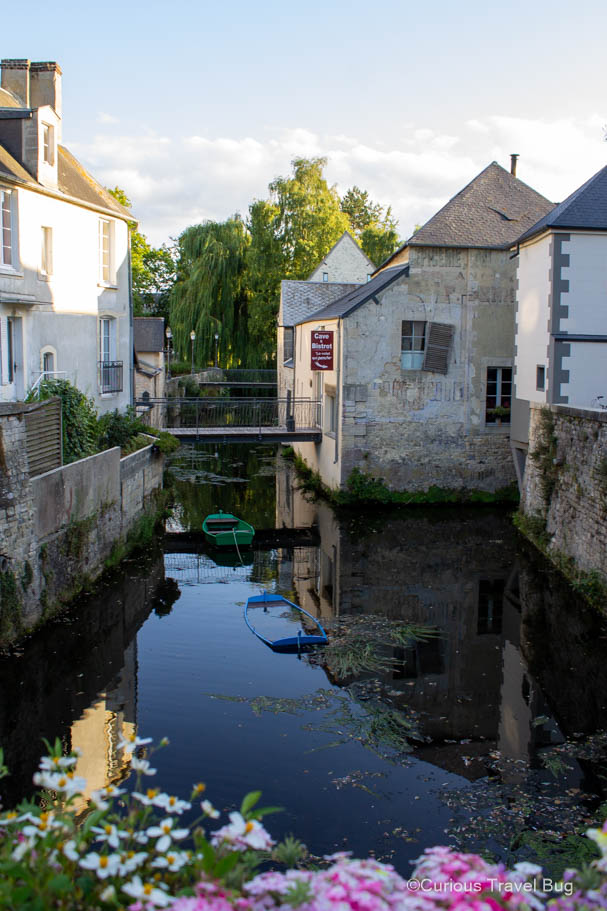
With More Time in Normandy
If you have two days in Normandy add on the cider route . The cider route is a self-drive tour to explore some of the most beautiful villages in France as well as cheese and cider producers. I ran out of time to do this but the route looks really nice and takes you through Beuvron-en-Auge, Cambremer, Bonnebosq, and Beaufour-Druval. You have the opportunity to stop at cider farms where you can purchase cider and calvados (apple brandy).
With three or four days in Normandy check out my full road trip to Normandy . You can easily add on visits to Mont Saint Michel , Honfleur, Rouen , or Etretat and its white chalk cliffs. After visiting Bayeux I went onwards to Paris with a stop to visit Giverny to explore Monet’s Gardens.
Like this post? Pin it for later!
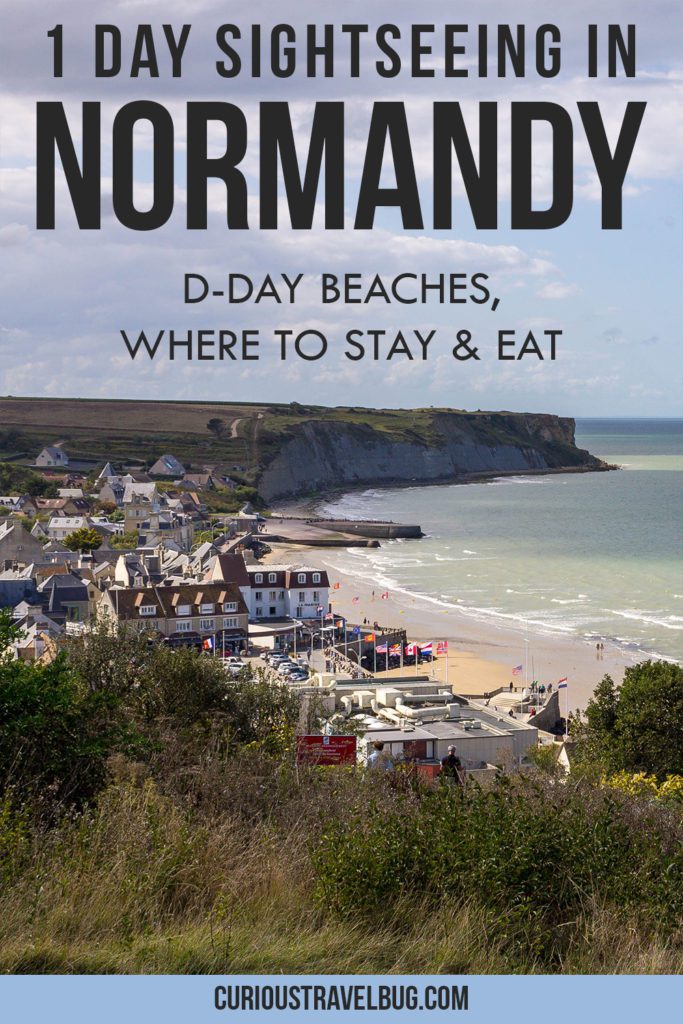
Similar Posts
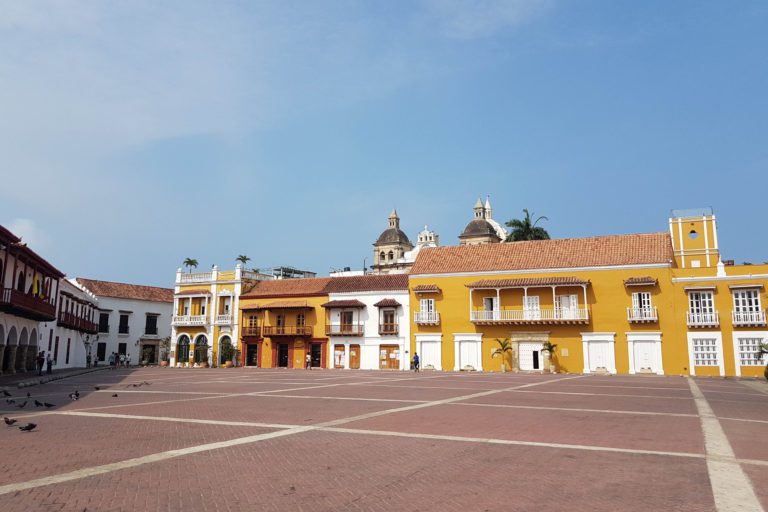
Spending Two Days in Cartagena Colombia: Caribbean Walled City
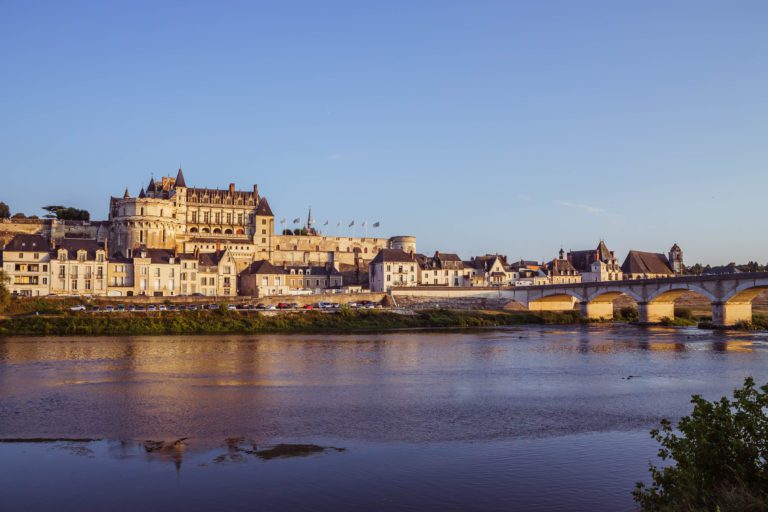
Best Chateaux in the Loire Valley, France
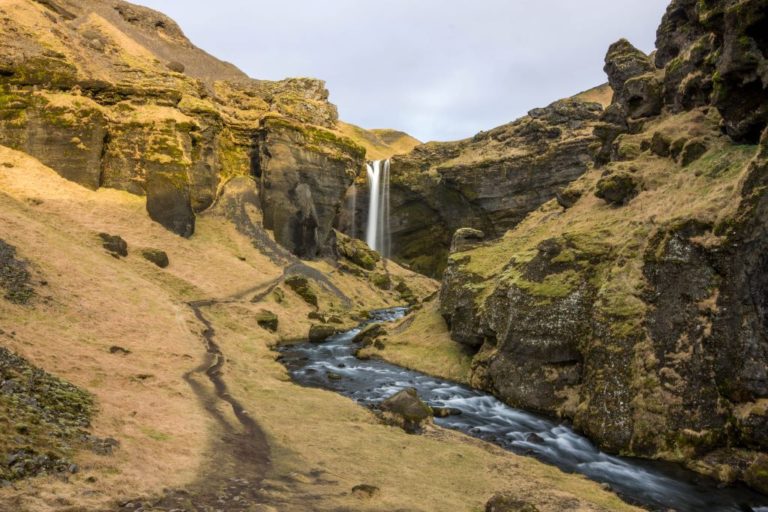
Kvernufoss, Iceland: Finding the Hidden Waterfall

The Most Beautiful Waterfalls in Europe

The Best Montreal 3 Day Itinerary
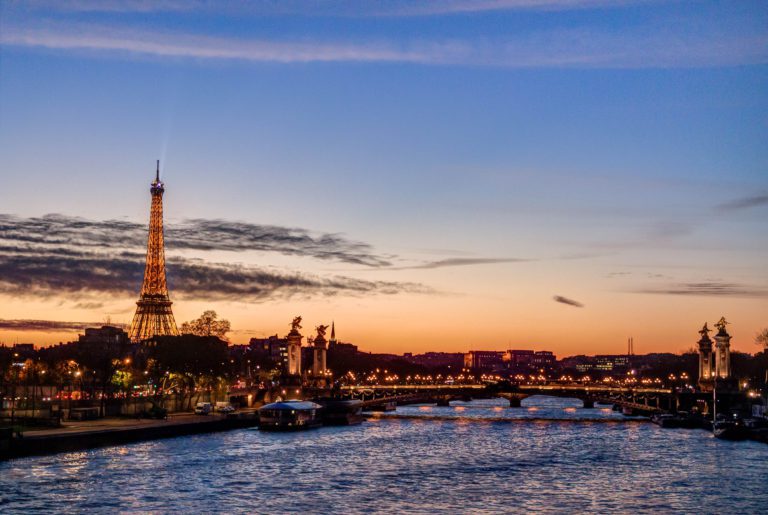
How to Spend 4 Days in Paris
12 comments.
I”ve never really thought about visiting Normandy for anything other than its history, but these pictures are so beautiful! Would love to plan a trip here soon.
Glad you enjoyed the photos! I didn’t really know what to expect but Bayeux is such a pretty part of France.
I went to Normandy a couple of times on a school trip but this post is making me want to revisit and see more! The cider route sounds great fun!
Oh that’s wonderful you could visit Normandy as a school trip! Yes the cider route does sound fun, I wish I had time for it.
Such a historic place. Thanks for sharing your photos and experience with us. I’ve pinned this post for later.
Glad you enjoyed the post Lisa!
I really enjoy learning WWII history, so Normandy has been on my list of places to visit for awhile. I had no idea the town of Bayeux near the Normandy beaches was such a fabulous destination to visit though! I would also love to do the cider route – that sounds like a ton of fun. Thanks for sharing!
I hadn’t heard of Bayeux before researching where to stay for a visit to the D-Day Beaches and I was so pleasantly surprised about it. It’s such a cute town and has a lot of history there.
I know quite a lot about this area from school but have never managed to visit. It looks lovely to spend a day or two at!
There is so much to do in this area I definitely could have stayed for longer. I may have to make a trip back to Normandy and Bayeux!
Hi Brianna, my family and I are visiting Paris for a few days in early September. We originally had planned on visiting just the Normandy Beaches/Landing areas, but my sister and I really want to visit Mont Saint Michel as well. We were planning on just taking the train to the beaches, do you think it is possible to visit both sites using just the train system?? From my early train trip searches, it appears the answer is “not very easily”, but my sister insists that between all forms of public transit in the area, we should be able to cover both areas AND still get back to Paris (albeit, very late in the day). I keep suggesting that a car/van and perhaps a tour guide as well might be the better option. What do you think?? Thanks!
Hi Alejandro,
If I’m understanding correctly you intend to visit the Normandy Beaches as a day trip from Paris using trains? You will not be able to visit the D-Day beaches using only trains. You will have to combine it with local buses or cycling. It will be a very long day from Paris and a lot of careful planning of logistics. This website will help you with visiting D-day beaches without a car. I would probably find it less stressful to join a day trip from Paris for the D-Day Beaches. Day trips from Paris to the D Day beaches are about 14 hours long. To then go to Mont Saint Michel from somewhere like Bayeux is 2.5 hours on the train plus a bus to Pontorson and then a shuttle to Mont Saint Michel. I really cannot recommend trying to do both in one day as I think you will spend way too much time in transit and not enough time enjoying Normandy.
If it is important for you to visit both locations, I recommend spending a couple nights out of Paris or doing it as two separate day trips from Paris. I myself would rent a car, drive to Mont Saint Michel (optional visit to nearby St Malo), stay overnight in Pontorson or Bayeux, visit the D-Day beaches and then return to Paris with optional stops in Honfleur or Giverny. Even with car rental cost I think it may end up cheaper as accommodation costs are much higher in Paris than in Normandy.
Hope this helps!
Leave a Reply Cancel reply
Your email address will not be published. Required fields are marked *
80 years ago, on the beaches of Normandy, WWII shifted course: Here's how D-Day unfolded
Operation Overlord, the Allied invasion of Normandy in northern France on June 6, 1944, was the largest amphibious military assault the world has ever seen. Its success heralded the beginning of the end of World War II in Europe on May 8, 1945.
Victory came at a high price. More than 156,000 Allied troops landed by sea on five beaches – code-named Utah, Omaha, Gold, Juno and Sword – or parachuted behind German defenses.
Almost 4,500 of them were killed on D-Day and 5,800 were wounded or missing. German casualties were estimated at 4,000 to 9,000.
80 years later: D-Day vets head back to Normandy .
They were there: Four celebrities took part in D-Day .
Les Americans débarque: Grandmother’s diary documents D-Day opening .
Looking back: Why D-Day is still important today .
An estimated 11,590 aircraft and 6,938 ships and landing craft were part of the assault.
As we observe the 80th anniversary of D-Day, here is a look at significant events leading up to and during the invasion.
How the D-Day invasion unfolded
Unable to view our graphics? Click here to see them.
Midnight: British Royal Air Force bombs German coastal batteries – heavy artillery used against ships and aircraft – north of Caen.
Midnight to 2 a.m.: 180 paratroopers from the British 6th Airborne Division land by gliders east of Sword Beach and seize two bridges across the Caen Canal.
The first of 15,500 paratroopers from the 82nd and 101st U.S. Airborne are dropped near Carentan. They battle German forces and clear exits for U.S. infantry landing on Utah Beach.
3 a.m.: Allied minesweepers begin clearing waterways ahead of the invasion fleet.
3:14 a.m.: German radar detects invasion fleet.
5:20 a.m.: Dawn breaks.
More than 10,000 Allied casualties on D-Day
5:35 a.m.: German batteries begin firing on fleet. Allied ships return fire and bombard coastal defenses.
6:30 a.m.: Troops begin landing on Utah and Omaha beaches.
7:26 a.m.: Troops begin landing at Sword Beach.
7:30 a.m.: 2nd Ranger Battalion scales 100-foot cliff at Pointe-du-Hoc and later captures German 155mm cannons.
7:35 a.m.: Troops begin landing at Gold Beach.
8 a.m.: Troops begin landing at Juno Beach.
8:30 a.m.: Tanks land at Omaha Beach.
9:50 a.m.: U.S. destroyers move in close to Omaha Beach and begin shelling German targets.
10:15 a.m.: Allied naval shells destroy vital German artillery at Colleville-sur-Mer and Pointe de la Percee.
10:30 a.m.: Infantry continues to land at Omaha and Utah beaches.
Navigating deadly Omaha Beach
11:10 a.m.: 101st Airborne and 4th Infantry troops link up at Pouppeville.
12:03 p.m.: British paratroopers and commandos from Sword Beach link up at Orne bridges.
12:30 p.m.: Allied forces move inland. More than 18,000 U.S. soldiers have landed.
1 p.m.: U.S. soldiers capture Vierville.
2:15 p.m.: German infantry prisoners are taken to Omaha Beach.
10:30 p.m.: British troops liberate town of Arromanches-les-Bains.
Midnight: All five beaches at Normandy are declared secure.
CONTRIBUTING Frank Pompa
SOURCE USA TODAY Network reporting and research; Reuters; National World War II Museum, New Orleans; D-Day Museum, Portsmouth, England; U.S. Army; National D-Day Memorial, Bedford, Virginia; www.history.navy.mil; www.nationalarchives.gov.uk; "D-Day, June 6, 1944" by Stephen Ambrose
- 0 Favorites
Exploring Normandy D-Day Landing Beaches without a car
Normandy Tourism, France
- Active & outdoor
- Lifestyle & Wellness
- Discover Normandy
- Plan your trip
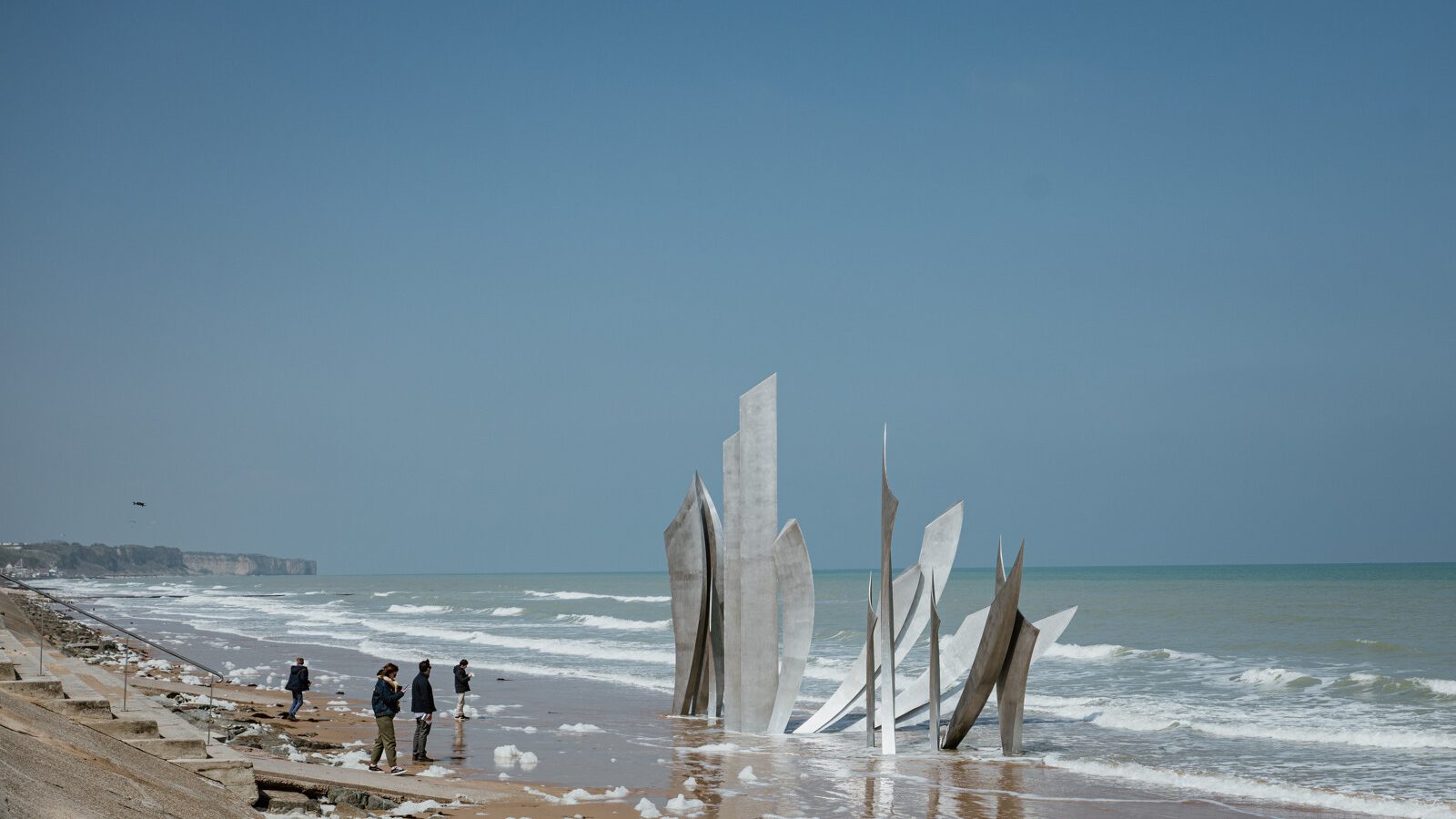
Omaha Beach and the " Les Braves " Sculpture © M-A Thierry
Find out more
Updated on 29 April 2024
Reading time: 5 minutes
Add to my bookmarks :
- Add to bookmark
Embark on a car-free adventure like no other to explore Second World War history in Normandy! Travel by train on a convenient, smooth and direct journey to the lively cities of Caen, Bayeux, or Carentan, situated alongside the famous D-Day Landing Beaches. Major museums and historical sites from D-Day and the Battle of Normandy are easily accessible from these hubs using only buses, bicycles and your own two feet! Curious about the details of such a trip? Comprehensive insights await in this article!
- Starting from Caen
- Starting from Bayeux
- Starting from Carentan
from Caen to the D-Day Landing Sites
Caen , the City of William the Conqueror, is a vibrant town teeming with medieval gems, such as its castle and two abbeys (Abbaye aux Hommes and Abbaye aux Dames). Caen is also home to the Caen Memorial , a captivating museum and exhibition centre dedicated to the history of the 20th century, with a focus on World War II, the D-Day landings, the Cold War, and the pursuit of peace. Conveniently accessible by bus from the city centre, the Caen Memorial is the ideal place to begin a profound historical immersion in Normandy. It offers a superb introduction to any exploration of the D-Day Beaches.
From Caen, visitors can easily travel to the iconic Sword and Juno Beaches. A bus connects Caen to Ouistreham, crossing Pegasus Bridge, named after the emblem of the British airborne forces, the winged horse Pegasus. At this very site now stands the Pegasus Memorial Museum , which recounts the history of the first British soldiers who landed in Normandy with the mission of securing this bridge over the Caen Canal in Bénouville. A great spot to understand the chronological progression of the Allies on D-Day!
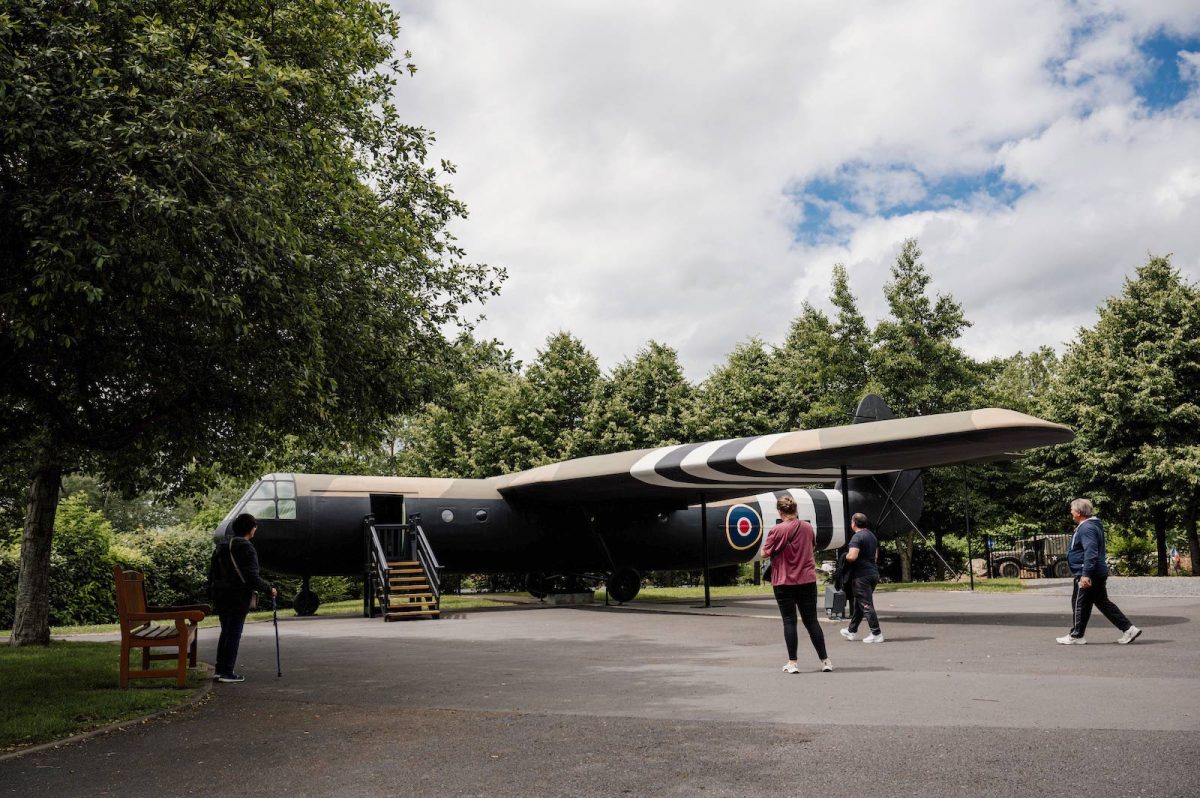
Another easy destination to reach from Caen using the regional NOMAD bus service is the Juno Beach Centre located in Courseulles-sur-Mer. It is dedicated to commemorating the contributions and sacrifices made by Canada and Canadians during World War II , particularly focusing on the events of D-Day and the Battle of Normandy.
The centre features five permanent exhibition halls that cover various aspects of Canada’s involvement in the war, as well as an immersive film that provides a detailed account of the Canadians’ role on D-Day. Furthermore, Juno Beach Centre actively implements substantial eco-friendly initiatives, such as offering a low-carbon fare with reduced rates for visitors arriving by public transport or bicycle. For families visiting, seize the chance to participate in the Normandy Landing Experience , where children can immerse into the vivid history of D-Day with a truly unique guide!

On the other side of the River Orne, easily reachable by the NOMAD bus from Caen, is the Merville Battery Museum , housed inside the original concrete casemates of a gun battery part of the German Atlantic Wall. Images, scents and a powerful sound and light show in bunkers recreate the events and the harrowing reality of the bombardments on the night of the 5th/6th of June 1944, an unparalleled and unique experience!
For cycling enthusiasts, exploring the D-day Beaches by bike is a fantastic adventure. The Vélofrancette cycle route runs from Caen to Ouistreham, providing a safe and scenic way to the coast. The Velomaritime cycle route ( EUROVELO 4) winds its way past all five iconic D-Day Landing Beaches (Utah Beach, Omaha Beach, Gold Beach, Juno Beach, and Sword Beach). Centrally located, Caen makes a strategic hub for reaching both the D-Day Landing Beaches and inland World War II sites nestled within the rural landscapes of Normandy. The Falaise Memorial is another museum easily reached from Caen with the NOMAD bus. This fascinating museum showcases the daily life of civilian populations during the Second World War, featuring meticulously recreated settings, authentic period artifacts, powerful archival films, and photographs!
« Insider Tip »
The Citypass Caen la Mer offers unlimited access to a variety of partner sites, attractions and museums in the Caen metropolitan area, including iconic locations such as the Caen Memorial, Merville Battery Museum, Pegasus Memorial Museum, and many more! Additionally, it provides unlimited travel on the Caen transport networks connecting to all these sites (Twisto network).
HOW TO GET TO THE Caen MEMORIAL
Esp. Général Eisenhower 14050 Caen – Normandy
Topic : 20th-century history, the D-Day Landings and the Cold War.
– Estimated Visit Duration: 4 hours.
– Bus n°2 from Caen city centre to the Memorial. Every 15 minutes. 7 days a week (less frequent on Sundays).
– Bus n°6A from Caen train station to the Memorial. Every 20-25 minutes. 7 days a week (less frequent on Saturdays and Sundays).
Transportation and museum admission included in the Citypass Caen la Mer.
– Where to purchase transport tickets? On board the bus, at the bus stop, or via the application Atoumod m-ticket ( Twisto T ransport N etwork ) .
Plan my itinerary (in French)
HOW TO GET TO THE Pegasus MEMORIAL MUSEUM
1 avenue du Major Howard 14860 Ranville – Normandy
Topic : British Paratroopers’ Landing during the early hours of D-Day
– Estimated Visit Duration: 1 hour and 30 minutes.
– Take the Bus n°12 from Caen city centre to Lion-sur-Mer. There are 6 buses for the outbound journey / 3 buses for the return. Be sure to check the return bus schedule beforehand to secure your return accordingly.
– Where to purchase transport tickets? On board the bus, at the bus stop, or via the Atoumod m-ticket application (Twisto transport network).
For cycling enthusiasts, the Pegasus Memorial Museum is easily accessible by bike. Follow the greenway connecting Caen to Ouistreham, the bike ride takes approximately 1 hour.
HOW TO GET TO THE Merville Battery Museum
Place du 9ème Bataillon 14810 Merville-Franceville-Plage – Normandy
Topic : the history of the Merville Gun Battery assaulted by the British airborne forces during the D-Day landings on June 6, 1944.
– Take the bus Car NOMAD n°111 from Caen train station in the direction of Deauville/Le Havre (Stop at Merville-Franceville – Former train station), then walk 1.6 km (approximately 20 minutes).
6 to 8 round trips from Monday to Saturday and 4 to 6 round trips on Sundays. Museum entrance included in the Citypass Caen la Mer. However, regional NOMAD bus transport is not included in the Citypass.
Where to purchase transport tickets? Onboard the bus, at the Caen bus station, or through the application Atoumod m-ticket (réseau de transport NOMAD Calvados)
HOW TO GET TO THe Juno Beach Centre
Voie des Français Libres 14470 Courseulles-sur-Mer – Normandy Topic : The Canadian contribution to the Allied victory during World War II, particularly the role played by Canadian forces during the D-Day landings and the Battle of Normandy
– Estimated Visit Duration: 2 hours
– Take the bus Car NOMAD n°101 from the train station and city center of Caen to Courseulles-sur-Mer (Stop: Courseulles-sur-Mer – Port or Champ des Oiseaux + 700 meters walk (approximately 10 minutes)).
8 round trips from Monday to Saturday and 4 round trips on Sunday.
Where to purchase transport tickets? Onboard the bus, at the Caen bus station, or through the application Atoumod m-ticket (transport network NOMAD Calvados)
How to get to the Falaise Memorial – Civilians at war
12 place Guillaume le Conquérant 14700 Falaise – Normandy
Topic : The impact of the war on civilians, their daily lives, challenges, and resilience in the face of wartime conditions
– Take the bus Car NOMAD n°118 from Caen train station to Falaise (Stop: Falaise – Boulevard de la Libération) + 400 meters walk (approximately 5 minutes).
2 round trips per day from Monday to Saturday and 1 round trip on Sunday.
Where to purchase transport tickets? Onboard the bus, at the Caen bus station, or through the application Atoumod m-ticket (transport network NOMAD Calvados).
While you’re in Falaise , why not explore the Castle of William the Conqueror ? The birthplace of William the Conqueror in the 11th century is an iconic landmark in the rich medieval history of the region.
Plan my Trip
To facilitate your public transportation in Normandy and plan your route, you can use the regional route calculator Atoumod, which gathers all Normandy transport networks (available in French): https://atoumod.fr/
From Bayeux to the D-Day Landing Sites
Bayeux , the first French city liberated after the D-Day landings offers a prime starting point for exploring the D-Day Beaches, notably the renowned Omaha Beach.
From Bayeux, Omaha Beach is easily accessible by bike, following a greenway route towards Port-en-Bessin. This cycling path connects to the Velomaritime route, which runs along the five D-Day Landing Beaches. Alternatively, a NOMAD bus from Bayeux drops visitors at the Overlord Museum – Omaha Beach to explore the impressive collection of vintage vehicles and artifacts related to the D-Day landings and the Battle of Normandy. The museum’s immersive design provides a detailed portrayal of the events leading up to D-Day and the subsequent liberation of Paris in 1944.
Just a short distance away, the American Military Cemetery in Colleville-sur-Mer gathers the graves of 9,387 American soldiers who fell during the D-Day landings and the Battle of Normandy. The Visitor Center provides historical context to Operation Overlord and pays homage to the soldiers who perished in combat.
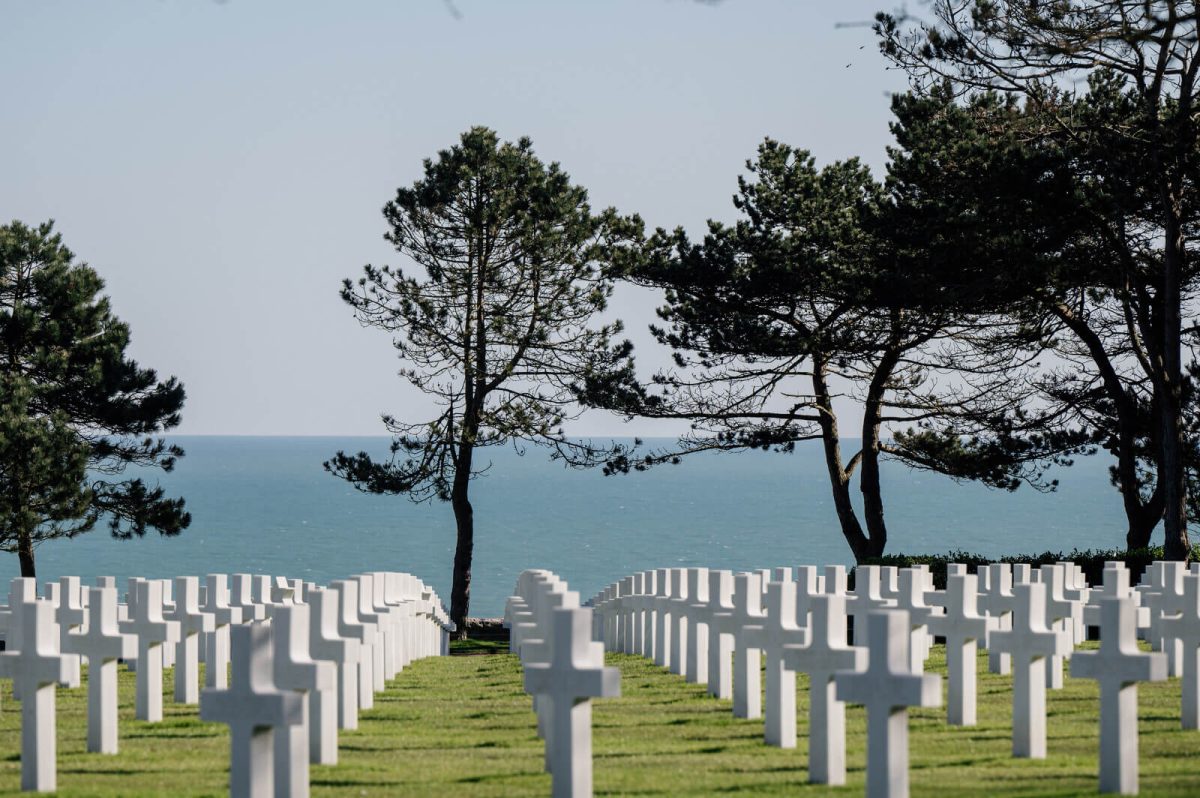
How TO GET TO THE Overlord Museum
Omaha Center 14710 Colleville-sur-Mer – Normandy Topic : an extensive collection of vintage vehicles, artifacts, and immersive displays that vividly depict the events leading up to D-Day
– Take the bus Car NOMAD n°120 from Bayeux train station to Grandcamp-Maisy (Stop at Colleville-sur-Mer – Overlord Museum). Only one round trip per day available from Monday to Saturday, exclusively from April 20 to November 5.
Where to purchase transport tickets? Onboard the bus or through the application Atoumod m-ticket (transport network NOMAD Calvados).
HOW TO GET TO THE American Military Cemetery in Colleville-sur-Mer
Route du Cimetière Américain 14710 Colleville-sur-Mer – Normandy
Topic : Commemorating the soldiers who lost their lives during the D-Day landings and the Battle of Normandy.
– Take the bus Car NOMAD n°120 from Bayeux train station to Grandcamp-Maisy (Stop: Colleville-sur-Mer – American Cemetery). Only one round trip per day from Monday to Saturday, exclusively from April 20 to November 5.
From Carentan to the D-Day Landing Sites
Further to the west, the town of Carentan is the gateway to the Utah Beach area and inland, particularly around the town of Sainte-Mère-Église where significant events unfolded during the D-Day landings. Famous for the story of John Steele, an American paratrooper whose parachute got caught on the church steeple during the airborne assault, the town is home to the Airborne Museum . The museum’s exhibits, including scenes of hyper-realistic reenactments and a C-47 aircraft, recount the story of the paratroopers involved in the D-Day operations to liberate Normandy and Europe.
Why not seize the chance to embark on a unique and exclusive experience, delving into the hidden treasures of the reserves of the Airborne Museum ?
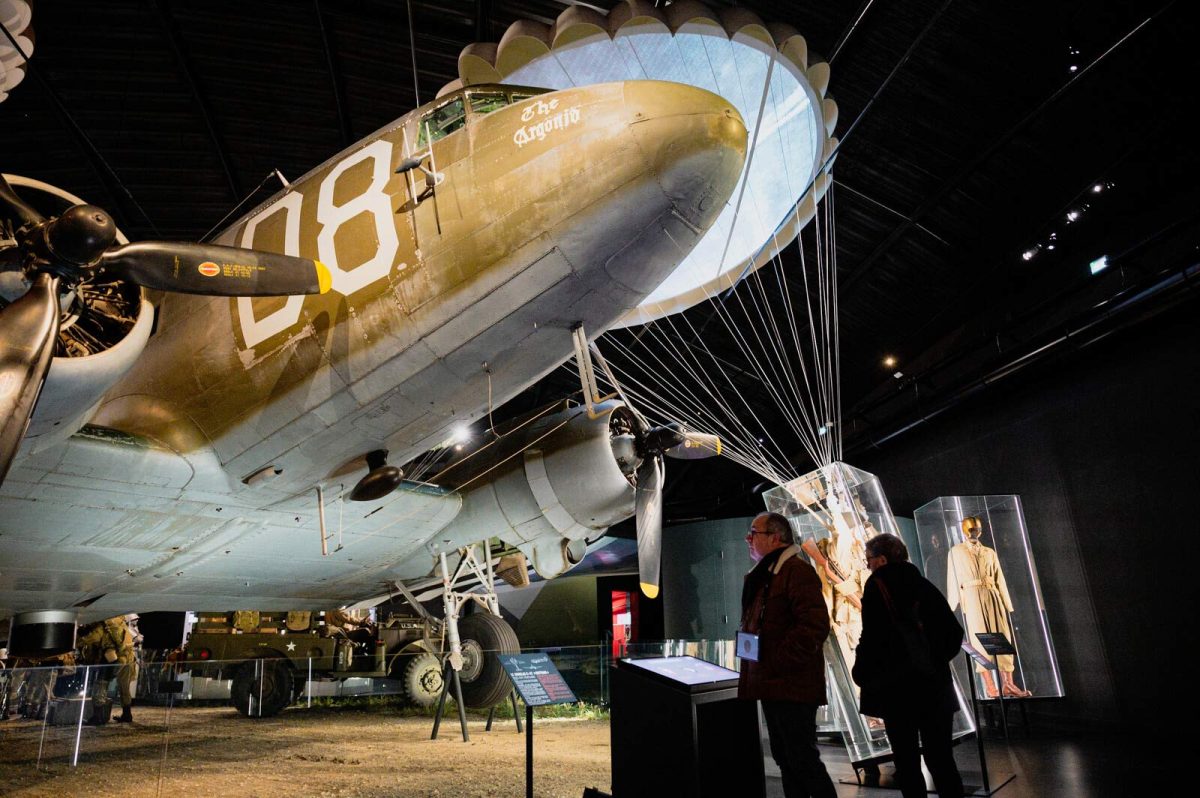
HOW TO GET TO THE Airborne Museum
14 Rue Eisenhower
50480 Sainte-Mère-Église – Normandy
Topic : The US paratroopers during the D-Day landings
– Estimated Visit Duration: 2 hours.
– Take the bus Car NOMAD n°301 from Carentan station to Cherbourg-en-Cotentin (Stop: Sainte-Mère-Eglise – Covered Market) + 150 meters walk, approximately 2 minutes. 2 round trips per day from Monday to Saturday (no service on Sunday).
Where to purchase transport tickets? Onboard the bus or through the application Atoumod m-ticket (transport network NOMAD Manche).
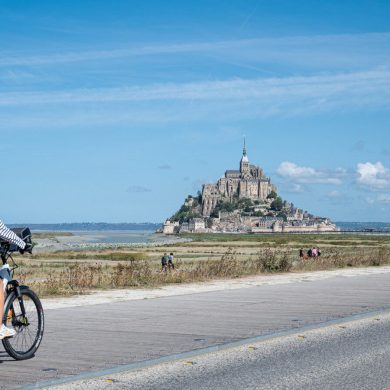
Cycling from Bayeux to the Mont-Saint-Michel: A Journey Through History
Updated on 10 January 2024

1944 – 2024: 80th Anniversary of D-Day and the Battle of Normandy
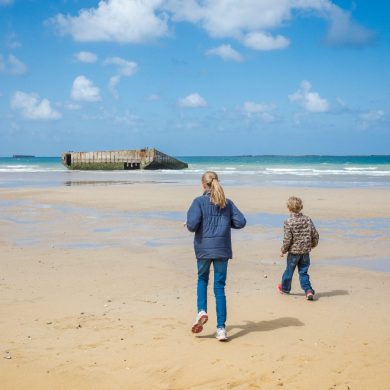
A Family Weekend in Arromanches exploring the D-Day Landing Beaches
Updated on 12 February 2024
DON’T MISS
Download a map of Normandy Public Transports The D-Day Landings and the Battle of Normandy Normandy Experiences
Return to top
Are you already in Normandy?
Plan what to see and do while you’re here by visiting normandy-secrets.com, which lets you in on all of the local secrets and hidden gems in the immediate vicinity!
Close search box
Mobile Menu Overlay
The White House 1600 Pennsylvania Ave NW Washington, DC 20500
Remarks by President Biden Commemorating the 80th Anniversary of D-Day | Collevile-sur-Mer, France
Normandy American Cemetery Colleville-sur-Mer, France
2:01 P.M. CEST THE PRESIDENT: The hour had nearly come. Monday, June 5th, 1944.
The evil of (inaudible) Third Reich was devastating the world. Nazi Germany had subjugated the once-free nations of Europe through brute force, lies, and twisted ideology of racial superiority. Millions of Jews murdered in the Holocaust. Millions of others killed by bombs, bullets, bloody warfare. Hitler and those with him thought democracies were weak, that the future belonged to dictators. Here, on the coast of Normandy, the battle between freedom and tyranny would be joined. Here, on that June morning, the testing was at hand. President Macron, Mrs. Macron, Secretary Austin, Secretary Blinken, distinguished guests. Most of all, our honored veterans, who met that test to the ages — a test of ages to that moment 80 years ago — 80 years ago today. (Applause.)
On behalf of the American people and as Commander-in-Chief, it’s the highest honor to be able to salute you here in Normandy once more — all of you. God love you. (Applause.) Winston Churchill called what happened here, quote, “the greatest, most complicated operation ever,” end of quote. After years of planning, Operation Overlord was ready to launch just as soon as the weather turned. Across the choppy Eng- — choppy Eng- — English Channel, the Supreme Commander of the Allies, Dwight D. Eisenhower, waited. The largest force ever of its kind, built by 12 nations — men, guns, planes, naval craft of every description — waited. The world, captive and free, waited. Finally, Eisenhower’s forecasters said there was a window in the weather. It would open briefly on Tuesday the 6th of June. The general weighed the options and gave the order: At dawn, the Allies would strike. The “Great Crusade” to free Europe from tyranny would begin. That night, General Eisenhower drove to the English town of Newbury to visit paratroopers of the 101st Airborne. They were men from all over America. It was estimated that 80 percent of them would be killed within hours. That was the estimate. But they were brave, they were resolute, and they were ready. One soldier told General Eisenhower, quote, “Don’t worry, sor- — sir. The 101st is on the job. Everything will be taken care of.” That’s what he said. And because of their courage and their resolve, because of the courage and resolve of their allies, it was taken care of. From the sea and sky, nearly 160,000 Allied troops descended on Normandy. Many, to state the obvious, never came home. Many survived that “longest day,” kept on fighting for months until victory was finally won. And a few, a noble band of brothers, are here with us today. Kenneth Blaine Smith is here. On that day, under heavy artillery fire, he operated a range finder and radar on the first American ship to arrive at Normandy’s coast, providing direct gunfire support for the Rangers scaling the cliffs of Pointe du Hoc on their daring mission to take out the German batteries. Bob Gibson is here. He landed on Utah Beach about 10 hours after the invasion began. Bullets flying everywhere. Tracers lighting up the sky. Bob drove an M4 tractor with an anti-aircraft gun mounted on top, providing critical protection for the infantry against the German air force. On that day and for many days after, he continued. Ben Miller is here. A medic with the 82nd Airborne. At 3:00 a.m. on June 6th, he and 13 other medics flew over the Channel in a rickety glider. Its wings were ripped off by giant poles that the Germans buried halfway in the ground to stop them from landing. They crashed, but they survived. And they did their duty: dragging injured soldiers to safety, treating wounds, saving lives while the battle raged. Every soldier who stormed the beach, who dropped by parachute or landed by glider; every sailor who manned the thousands of ships and landing craft; every aviator who destroyed German-controlled air fields, bridges, and railroads — all — all were backed by other brave Americans, including hundreds of thousands of people of color and women who courageously served despite unjust limitations on what they could do for their nation. Louis Brown is here. Part of the “Red Ball Express,” a truck convoy made up mostly of African American drivers. They landed at Normandy in the wake of D-Day. They rushed supplies to the rapidly advancing frontlines. Woody Woodhouse is here. Members of the legendary Tuskegee Airmen, who flew over 15,000 sorties during the war. Marjorie Stone is here. She enlisted in the women’s branch of the Naval Reserve, became an aircraft mechanic, spent the war keeping American planes and pilots in the air. Theirs has always been the story of America. Just walk the rows of this cemetery, as I have. Nearly 10,000 heroes buried side by side, officers and enlisted, immigrants and native-born. Different races, different faiths, but all Americans. All served with honor when America and the world needed them most. Millions back home did their part as well. From coast to coast, Americans found countless ways to pitch in. They understood our democracy is only as strong as all of us make it, together. The men who fought here became heroes not because they were the strongest or toughest or were fiercest — although they were — but because they were given an audacious mission knowing — every one of them knew the probability of dying was real, but they did it anyway. They knew, beyond any doubt, there are things that are worth fighting and dying for. Freedom is worth it. Democracy is worth it. America is worth it. The world is worth it — then, now, and always. The war in Europe didn’t end for another 11 months. But here the tide turned in our favor. Here we proved the forces of liberty are stronger than the forces of conquest. Here we proved that the ideals of our democracy are stronger than any army or combination of armies in the entire world. We proved something else here as well: the unbreakable unity of the Allies. Here with us are men who served alongside the Americans that day, wearing different flags on their arms but fighting with the same courage, for the same purpose. What the Allies did together 80 years ago far surpassed anything we could have done on our own. It was a powerful illustration of how alliances — real alliances — make us stronger — a lesson that I pray we Americans never forget. Together, we won the war. We rebuilt Europe, including our former enemies. It was an investment in what became shared and a prosperous future. We established NATO, the greatest military alliance in the history of the world. And over time — (applause) — you got it; it is — and over time, we brought more nations into NATO — the NATO Alliance, including the newest members: Finland and Sweden. (Applause.) Today, NATO stands at 32 countries strong. And NATO is more united than ever and even more prepared to keep the peace, deter aggression, defend freedom all around the world. America has invested in our alliances and forged new ones — not simply out of altruism but out of our own self-interest as well. America’s unique ability to bring countries together is an un- — undeniable source of our strength and our power. Isolationism was not the answer 80 years ago, and it is not the answer today. (Applause.) We know the dark forces that these heroes fought against 80 years ago. They never fade. Aggression and greed, the desire to dominate and control, to change borders by force — these are perennial. And the struggle between a dictatorship and freedom is unending. Here, in Europe, we see one stark example. Ukraine has been invaded by a tyrant bent on domination. Ukrainians are fighting with extraordinary courage, suffering great losses, but never backing down. (Applause.) They’ve inflicted on the Russian aggressors — they’ve suffered tremendous losses, Russia. The numbers are staggering — 350,000 Russian troops dead or wounded. Nearly 1 million people have left Russia because they can no longer see a future in Russia. The United States and NATO and a coalition of more than 50 countries standing strong with Ukraine. We will not walk away — (applause) — because if we do, Ukraine will be subjugated.
And it will not end there. Ukraine’s neighbors will be threatened. All of Europe will be threatened. And make no mistake, the autocrats of the world are watching closely to see what happens in Ukraine, to see if we let this illegal aggression go unchecked. We cannot let that happen. To surrender to bullies, to bow down to dictators is simply unthinkable. (Applause.) Were we to do that, it means we’d be forgetting what happened here on these hallowed beaches. Make no mistake: We will not bow down. We will not forget. Let me end with this. History tells us freedom is not free. If you want to know the price of freedom, come here to Normandy. Come to Normandy and look. Go to the other cemeteries in Europe where our fallen heroes rest. Go back home to Arlington Cemetery. Tomorrow, I will pay respects at Pointe du Hoc. Go there as well and remember: The price of unchecked tyranny is the blood of the young and the brave. In their generation, in their hour of trial, the Allied forces of D-Day did their duty. Now the question for us is: In our hour of trial, will we do ours? We’re living in a time when democracy is more at risk across the world than at any point since the end of the World War Two — since these beaches were stormed in 1944. Now, we have to ask ourselves: Will we stand against tyranny, against evil, against crushing brutality of the iron fist? Will we stand for freedom? Will we defend democracy? Will we stand together? (Applause.) My answer is yes. And it only can be yes. (Applause.) We’re not far off from the time when the last living voices of those who fought and bled on D-Day will no longer be with us. So, we have a special obligation. We cannot let what happened here be lost in the silence of the years to come. We must remember it, must honor it, and live it. And we must remember: The fact that they were heroes here that day does not absolve us from what we have to do today. Democracy is never guaranteed. Every generation must preserve it, defend it, and fight for it. That’s the test of the ages. In memory of those who fought here, died here, literally saved the world here, let us be worthy of their sacrifice. Let us be the generation that when history is written about our time — in 10, 20, 30, 50, 80 years from now — it will be said: When the moment came, we met the moment. We stood strong. Our alliances were made stronger. And we saved democracy in our time as well. Thank you very much. And may God bless you all. And may God protect our troops. Thank you. (Applause.) 2:17 P.M. CEST
Stay Connected
We'll be in touch with the latest information on how President Biden and his administration are working for the American people, as well as ways you can get involved and help our country build back better.
Opt in to send and receive text messages from President Biden.
Advertisement
Supported by
Zelensky Shares Emotional Moment With U.S. Veteran at D-Day Ceremony
The veteran, Melvin Hurwitz, embraced the Ukrainian president and called him “the savior of the people.” Mr. Zelensky told Mr. Hurwitz that he and his fellow World War II veterans had “saved Europe.”
- Share full article
Video Captures Emotional Moment Between Zelensky and U.S. Veteran
At the 80th anniversary of the d-day landings, melvin hurwitz, an american world war ii veteran, embraced president volodymyr zelensky of ukraine and called him “the savior of the people.”.
“You’re the savior of the people. You bring tears to my eyes.” “Oh, no, no. You. You saved Europe.” “Can I get a picture?” “Yeah. You want a picture?” [crowd cheering] “My hero.” “No, you are our hero.” “I pray for you.”

By Orlando Mayorquín
The emotional exchange was broadcast on large screens to applause from the thousands who had gathered at Omaha Beach in Normandy, France, on Thursday to commemorate the 80th anniversary of the D-Day landings. And then it swiftly reverberated across the internet.
An American World War II veteran in a blue cap, seated in a wheelchair with a blue blanket draped over his lap, was introduced to President Volodymyr Zelensky of Ukraine by Justin Trudeau, the Canadian prime minister.
“You’re the savior of the people,” the veteran, Melvin Hurwitz, 99, of Frederick, Md., told Mr. Zelensky after pulling the Ukrainian leader into an embrace. “You bring tears to my eyes.”
“No, no, no, you saved Europe,” Mr. Zelensky responded.
“You’re our hero,” Mr. Hurwitz, whose identity was confirmed by a great-niece, Sarah Hurwitz Robey, said moments later, as Mr. Zelensky knelt next to him for a photograph.
“No, you are our hero,” the president replied.
The moment captured a worldwide audience that had cast its attention to the Normandy beaches and to the men who clambered ashore there on June 6, 1944, helping to turn the tide of World War II after five years of conflict. Those who are still living are in their late 90s or over 100 now.
As the spotlight shone on those men, there was something remarkable about one veteran expressing similar admiration for the Ukrainian leader, who is leading the resistance to a modern-day invasion.

Their embrace mirrored a connection that President Biden made explicit in his remarks at the ceremony, in which he cast the allied effort to repel the Russian invasion of Ukraine as an extension of the battle for freedom in Europe that unfolded on Normandy’s beaches eight decades ago.
“We know the dark forces that these heroes fought against 80 years ago,” Mr. Biden said, addressing a crowd of thousands, including 180 surviving veterans of the D-Day operation, near the graves of 9,388 American service members.
“They never fade,” Mr. Biden added. “Aggression and greed, the desire to dominate and control, to change borders by force — these are perennial. The struggle between dictatorship and freedom is unending.”
Ms. Hurwitz Robey said she first learned about her great-uncle’s meeting with Mr. Zelensky from a friend who sent her the video on Thursday. She said that Mr. Hurwitz was in Normandy on behalf of the Best Defense Foundation , a nonprofit group that organizes battlefield reunions for World War II veterans.
According to the foundation, Mr. Hurwitz was assigned to the U.S. Eighth Air Force and served as a radio gunner on a B-17, the massive bomber known as the Flying Fortress.
Alain Delaquérière contributed research.
Orlando Mayorquín is a breaking news reporter, based in New York, and a member of the 2023-24 Times Fellowship class , a program for journalists early in their careers. More about Orlando Mayorquín

IMAGES
VIDEO
COMMENTS
The 80th anniversary of D-Day on 6 June 2024 provided an opportunity to visit the Normandy beaches but this is an area of France that has always been high on people's lists. In the early part of 2024 I visited the D-Day landing beaches twice, for a week each time, and was able to get a strong sense of the best places to visit and the best way ...
Every year, millions come to see where and how the conflict took place. The D-Day Landing Beaches have since become a symbol of the price of peace across the world. Our fully comprehensive D-Day map below will help you work out which remembrance sites - museums, beaches, cemeteries and memorials - to visit during your stay. download map.
A tour of the D-Day beaches. You can join a tour, but if you've got a car, check out our Normandy WWII sights road trip. Or follow the D514 along the D-Day coast or several signposted routes around the battle sites - look for 'D-Day-Le Choc' in the American sectors and 'Overlord-L'Assaut' in the British and Canadian sectors.
The 5 D-Day landing beaches are a must for any trip to Normandy. Their story is both heartbreaking and inspiring. Each of these beaches now has memorials and museums to remember. Here is our complete guide to prepare your visit with: Utah Beach. Omaha Beach. Gold Beach. Juno Beach. Sword Beach.
The Caen Memorial Museum is the perfect place to get a full understanding of what you'll see here at the Normandy D-Day Beaches before you head to Omaha Beach. 7. Bayeux Battle of Normandy Museum. The Memorial Museum of the Battle of Normandy is a top place to see at Normandy.
Gold Beach and British Normandy Memorial. 11. Falaise and the Memorial to Civilians in Wartime. 12. Memorial Museum of the Battle of Normandy. Map of Normandy D-Day Beaches and Memorials. Tips and Tactics: How to Make the Most of Your Visit to Normandy D-Day Beaches and Memorials. 1.
Juno Beach. On D-Day, 14 000 Canadians and 6,400 British troops landed on Juno Beach, taking heavy casualties. At Courseulles-sur-Mer, the Juno Beach Centre is the only museum entirely funded by veterans and their charities, and commemorates Canada's unique contribution.
Explore the D-Day Beaches! Get inspired with Rick Steves' recommended places to go and things to do, with tips, photos, videos, and travel information on the D-Day Beaches. ... and travel information on the D-Day Beaches. The 54 miles of Atlantic coast north of Bayeux — stretching from Utah Beach in the west to Sword Beach in the east ...
In honor of D-Day, here's how to visit the Normandy coast. Seventy-five years later, traveling to the beaches where Allied forces began the liberation of France is still a deeply moving experience.
France, Europe. Code-named 'Operation Overlord', the D-Day landings were the largest seaborne invasion in history. Early on the morning of 6 June 1944, swarms of landing craft - part of an armada of more than 6000 ships and boats - hit the beaches of northern Normandy and tens of thousands of Allied soldiers began pouring onto French soil.
you plan your visit. It encourages you to discover, or rediscover the main memorial sites, the cemeteries, the key places and the museums of Destination D-Day 1944 Land of Liberty. These important places are today imbued with fundamental and universal values such as Reconciliation, Peace and Freedom. Each anniversary year is the occasion
D-Day, also known as Operation Overlord, was a significant event in history that took place on June 6, 1944. It marked the beginning of the Allied invasion of Normandy during World War II - which continued until July 24, 1944. On this day, a massive amphibious assault was launched on the beaches of Normandy, France, by British, American ...
Day 2: Visit the D-Day Normandy Landing Beaches. Our second day in Normandy was a busy one. Having had a full day to explore Mont St. Michel at our leisure, we set ourselves the challenge of visiting some of the D-Day landing beaches in France. There are quite a variety of sights, museums, memorials and attractions to visit, but we only had a ...
At Omaha Beach on June 6th, 1944 the Americans landed and fought against enemy fire for 3.5 hours as they made their way to the top of the cliff. During this day 3,881 American troops were wounded, killed or classed as missing. Opening times : Open 7 days a week. From 1 March to 31 May: 10:00 am to 6:00 pm.
Morning: Utah beach. 55km from Cherbourg or 60km from Bayeux. We start our Normandy D-Day itinerary at the most western of the landing beaches - Utah. Landed by the Americans, this was one of the more successful operations. If you're coming from the ferry or starting in Bayeaux it should be less than an hour to get here.
Here is how you can organize the visit to the D-Day landing beaches in Normandy in several steps: an idea of an itinerary in 10 stages from West to East, ending the visit with Caen. Go to Pointe du Hoc: to the west of the 5 landing beaches, it is an impressive battlefield site to visit in Normandy and Calvados.
The United States: Utah Beach And Omaha Beach. Omaha Beach at high tide. It looks very similar to June 6, 1944. The 4th Infantry Division played a crucial role in the Allied invasion of Normandy during World War II. On June 6, 1944, the division was tasked with landing on Utah Beach.
Visiting the D-Day beaches. A variety of ways to visit the D-Day beaches is on offer in the area of Bayeux and the surrounding Bessin area. Minibus excursions with a driver-guide are available from many hotels. A different perspective on the events of 6 June can be gained by flying over the beaches in a microlight or paraglider.
The D-Day Beaches are in the Calvados and Manche departments of Normandy, France. They were the landing places for the Allied invasion of western Europe during World War II . An excellent time to visit is on the June 6th anniversary when there are numerous memorial ceremonies to mark the occasion.
A Day Trip to the D-Day Beaches from Caen. First published: 18 January 2024 by Elinor Sheridan. By Elinor Sheridan. A visit to the D-Day beaches in Normandy is a poignant journey through history, and it's only a ferry trip away. Caen, the largest city in Normandy, serves as an ideal base for exploring the area's significant WWII sights.
To see the D-Day beaches and some cute Normandy villages, spend at least 2 nights based in Bayeux so you have one full day to explore. I personally think it is worth it to stay overnight in Normandy rather than on a day trip from Paris but it is possible to do a long day trip from Paris to the D-Day beaches.
First, you'll need to catch a train from London St Pancras International that'll get you to Paris' Gare du Nord train station in just over 2 hours. Then, take the Métro to Paris St-Lazare where you can catch a train to Normandy cities like Caen and Bayeux near the D-Day beaches.
80 years ago, on the beaches of Normandy, WWII shifted course: Here's how D-Day unfolded. Operation Overlord, the Allied invasion of Normandy in northern France on June 6, 1944, was the largest ...
See what Normandy beach looks like on D-Day anniversary. Link Copied! CNN's Melissa Bell reports from an amphibious vehicle in Normandy as France marks the 80th anniversary of the D-Day landings ...
Embark on a car-free adventure like no other to explore Second World War history in Normandy! Travel by train on a convenient, smooth and direct journey to the lively cities of Caen, Bayeux, or Carentan, situated alongside the famous D-Day Landing Beaches. Major museums and historical sites from D-Day and the Battle of Normandy are easily ...
Normandy American CemeteryColleville-sur-Mer, France 2:01 P.M. CEST THE PRESIDENT: The hour had nearly come. Monday, June 5th, 1944. The evil of (inaudible) Third Reich was devastating the world ...
Biden, like the 40th president, is facing concerns about his age in his reelection year. And on Friday he will visit the same clifftop to make a similar call to save democracy. Reagan's Pointe ...
President Volodymyr Zelensky of Ukraine greeting a U.S. veteran on the 80th anniversary of the D-Day landings in Normandy, France. His exchange with a different veteran circulated widely online on ...